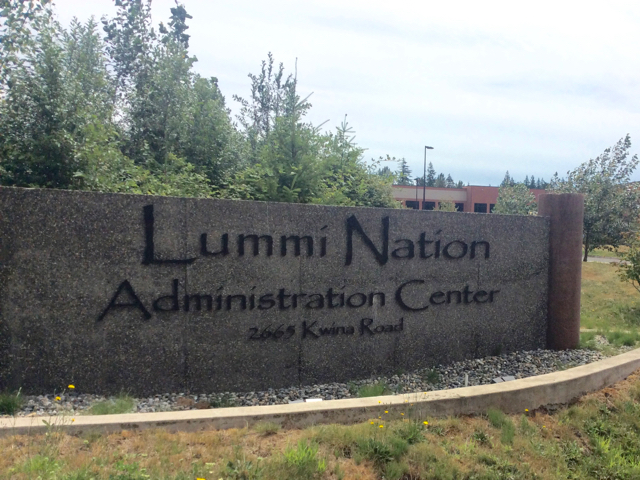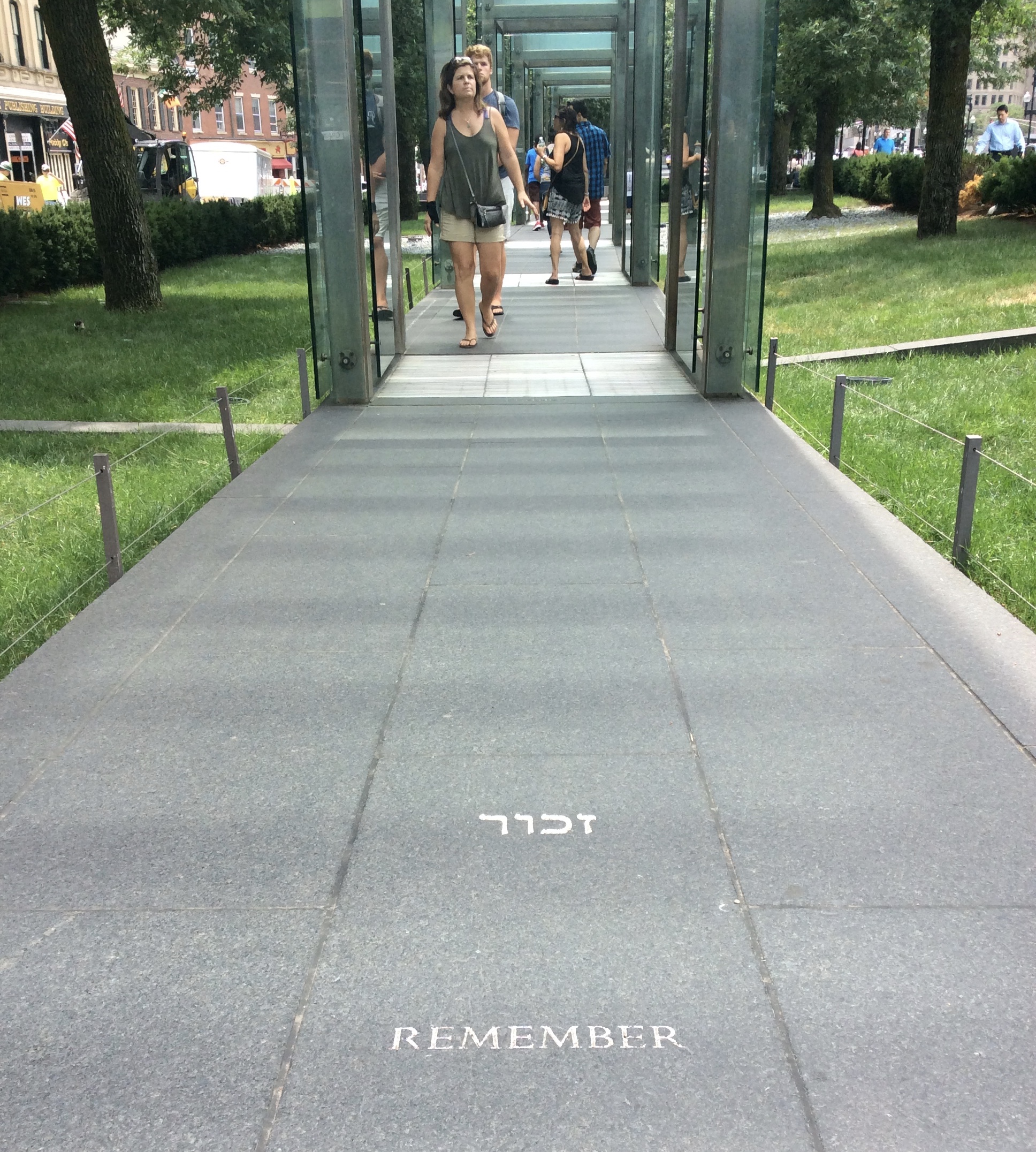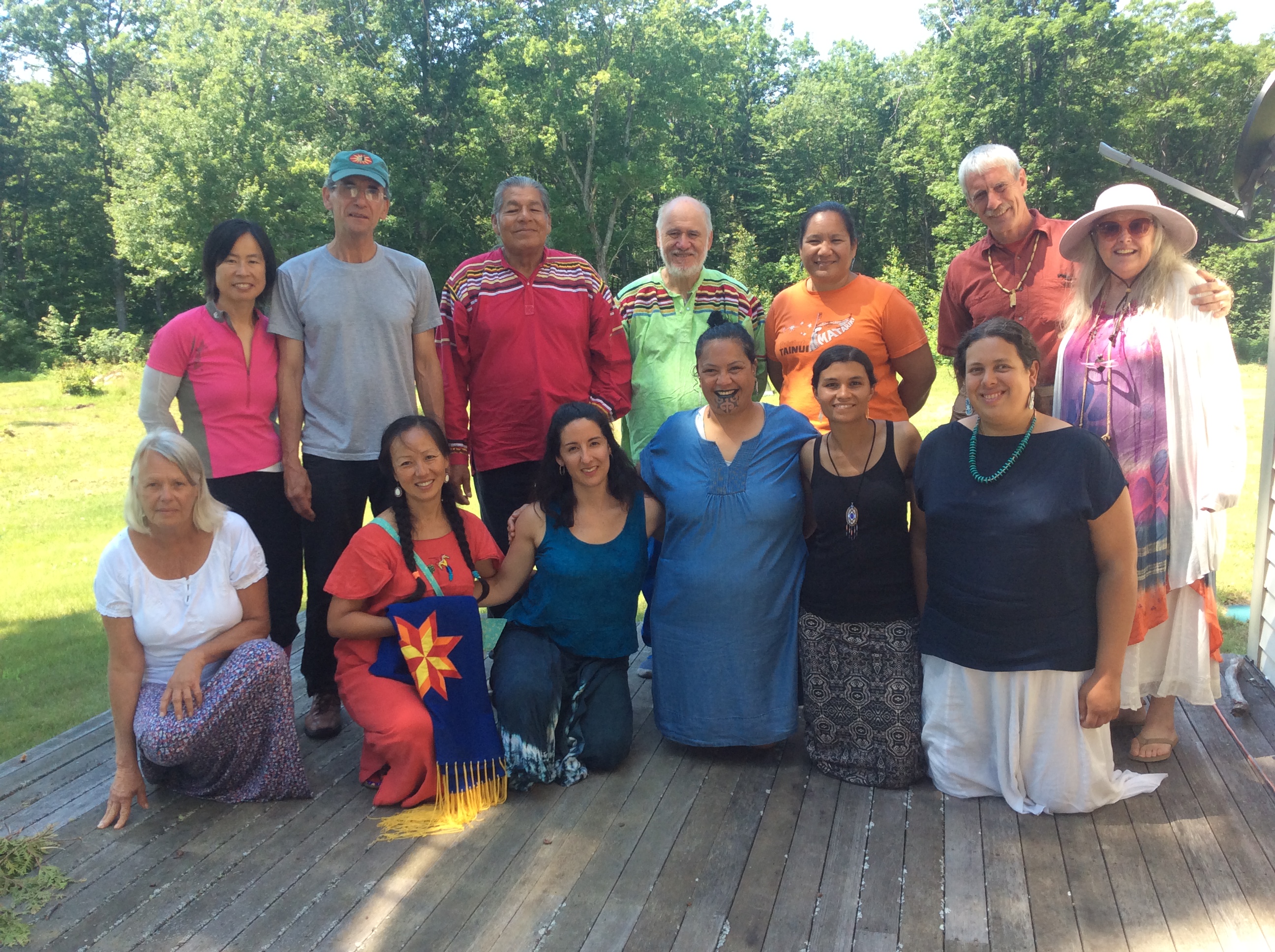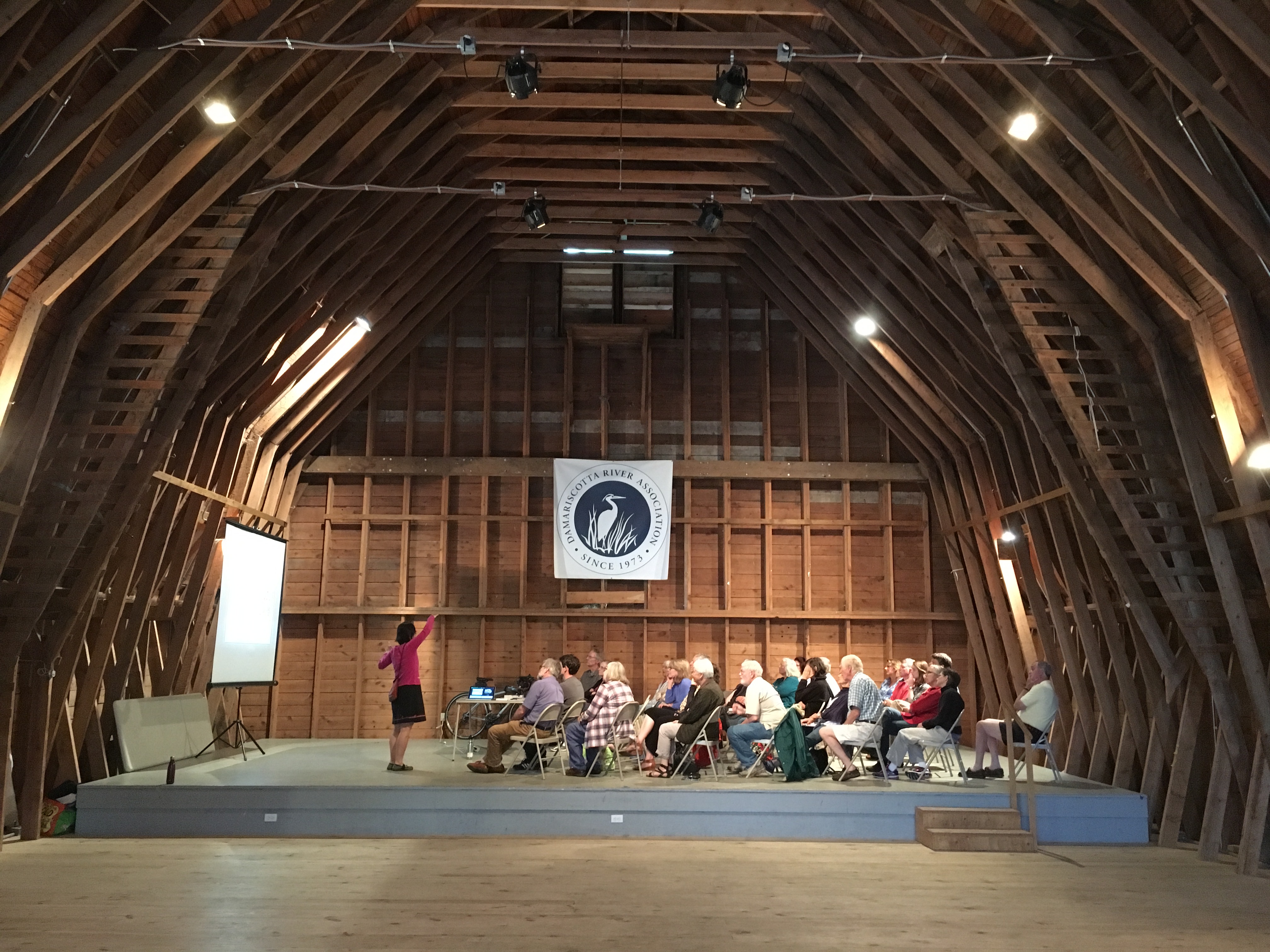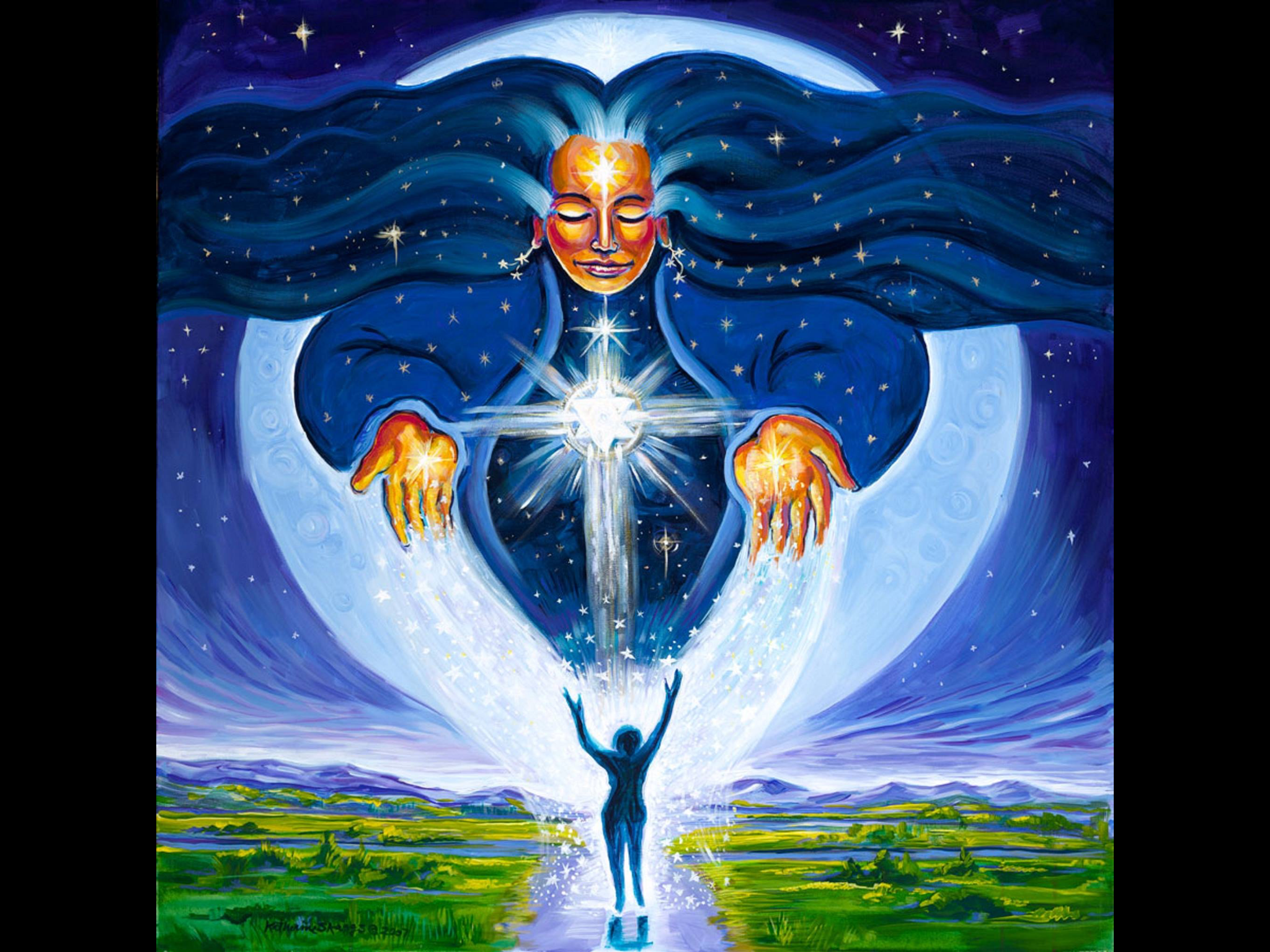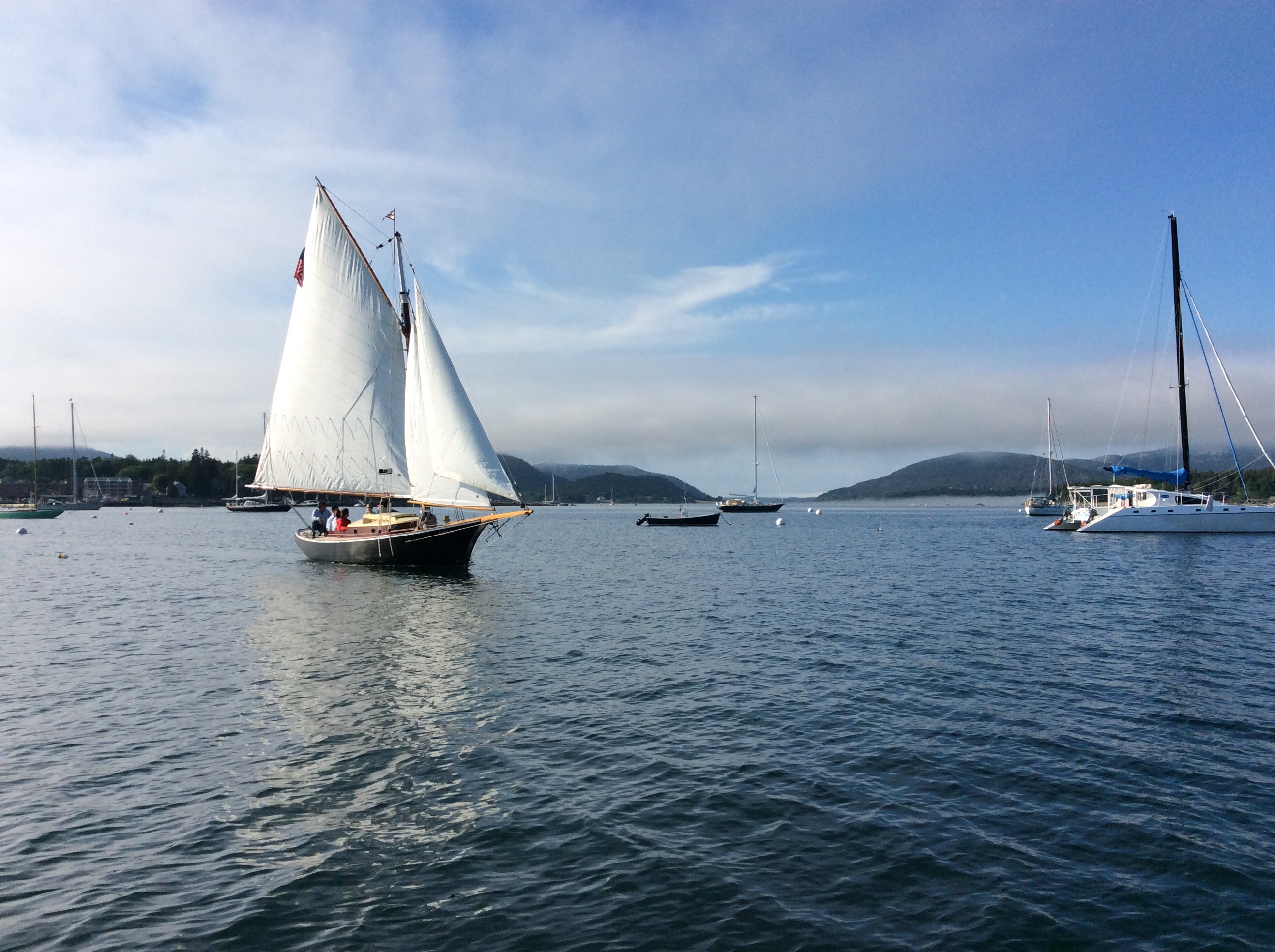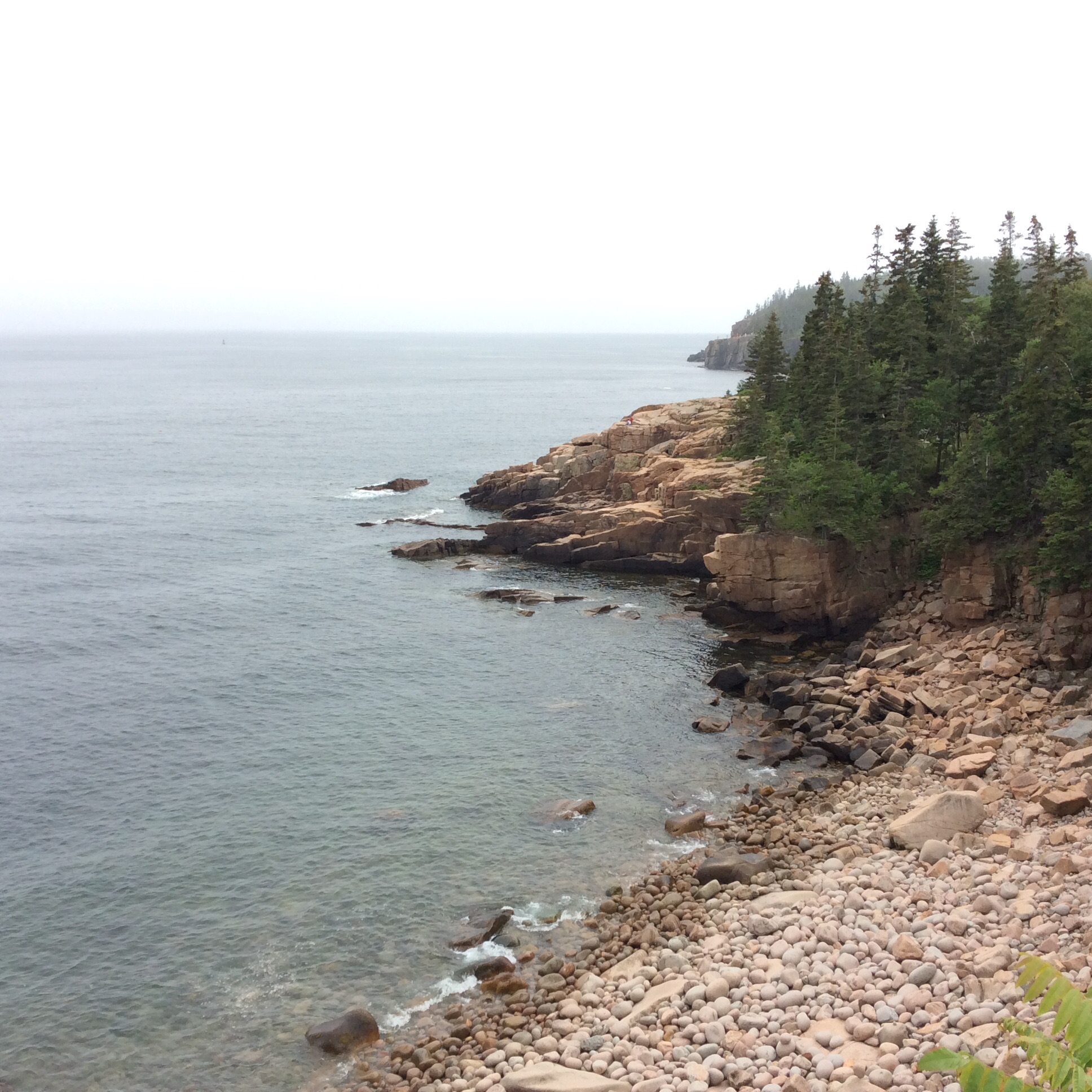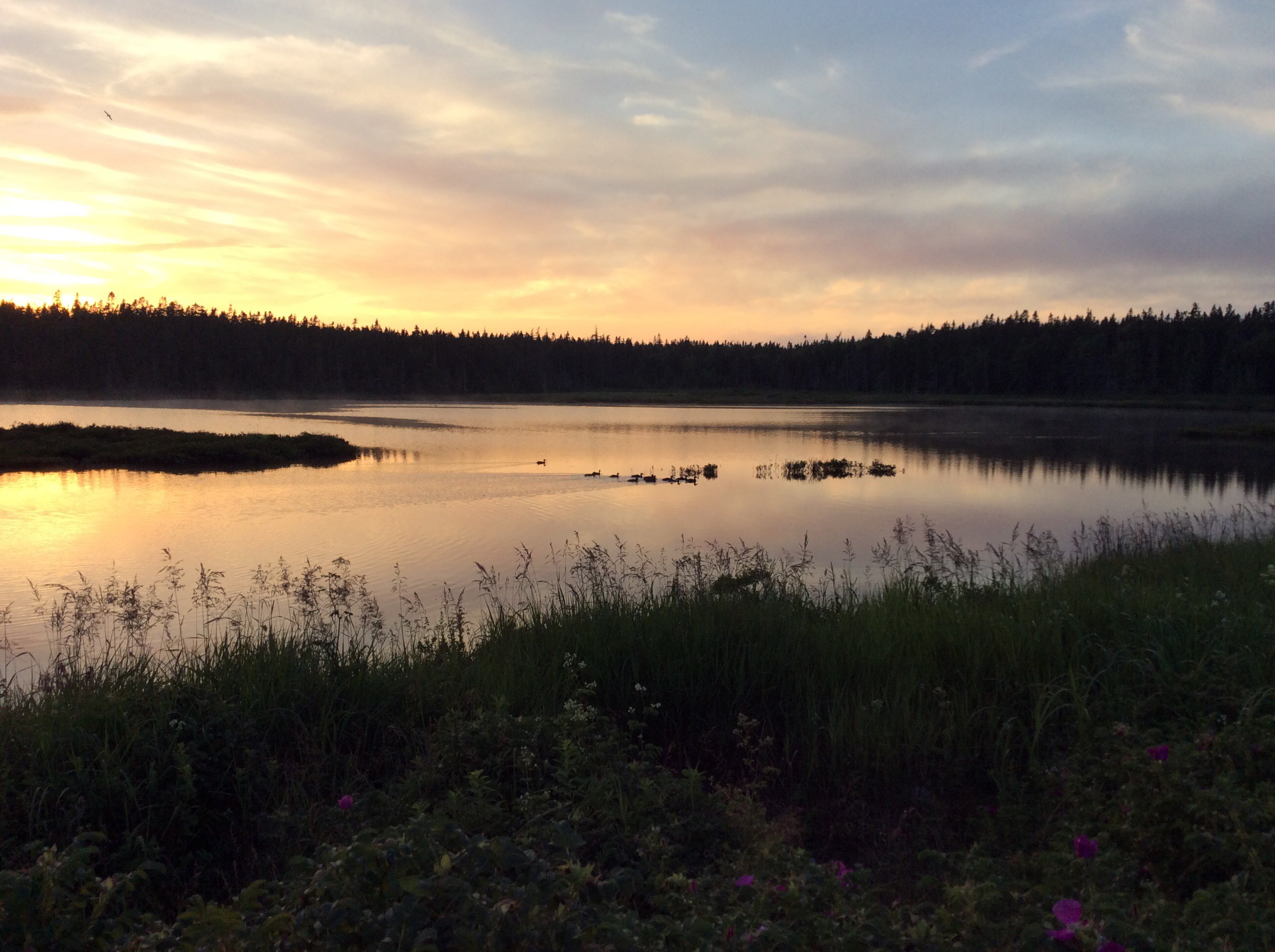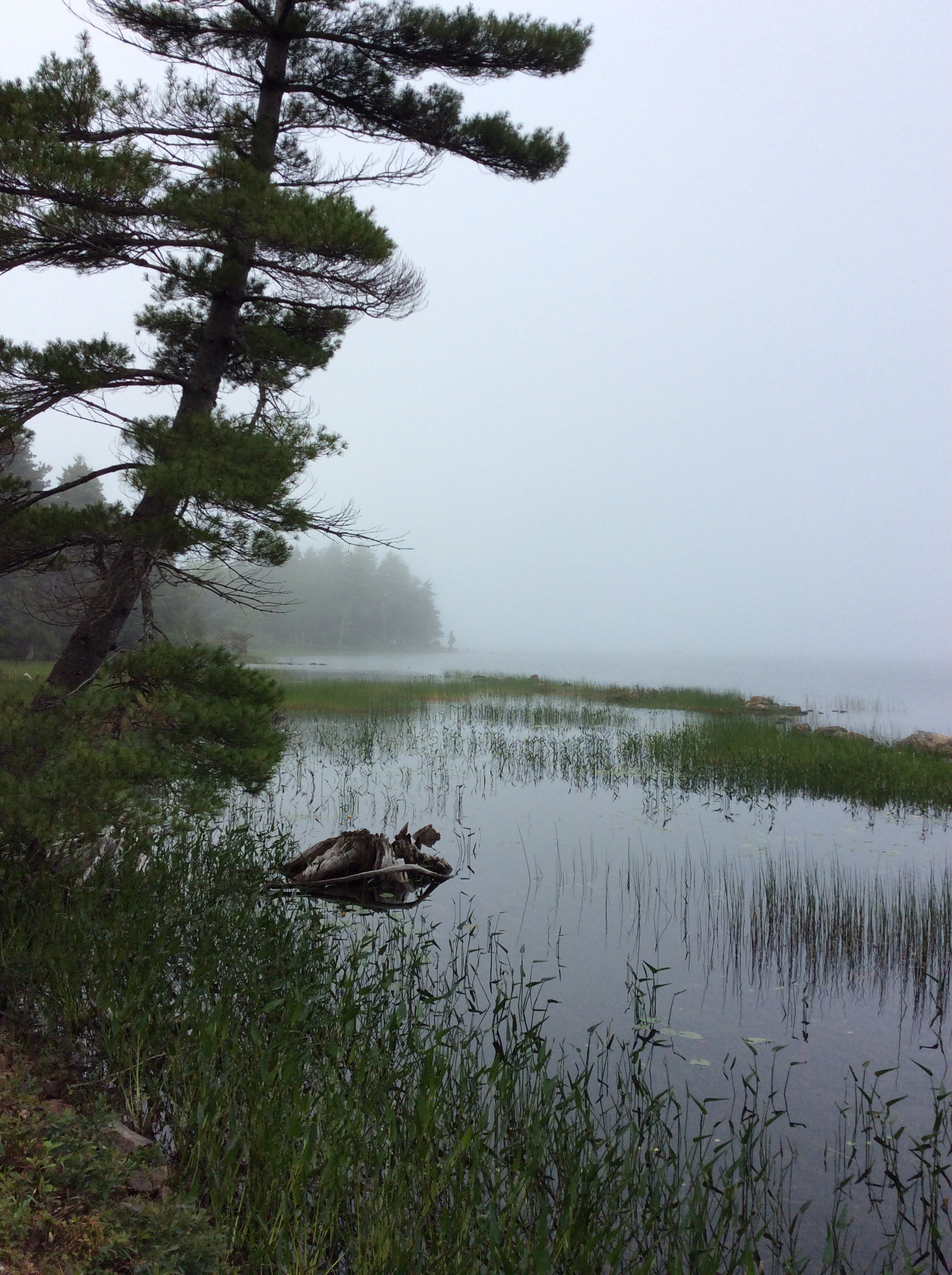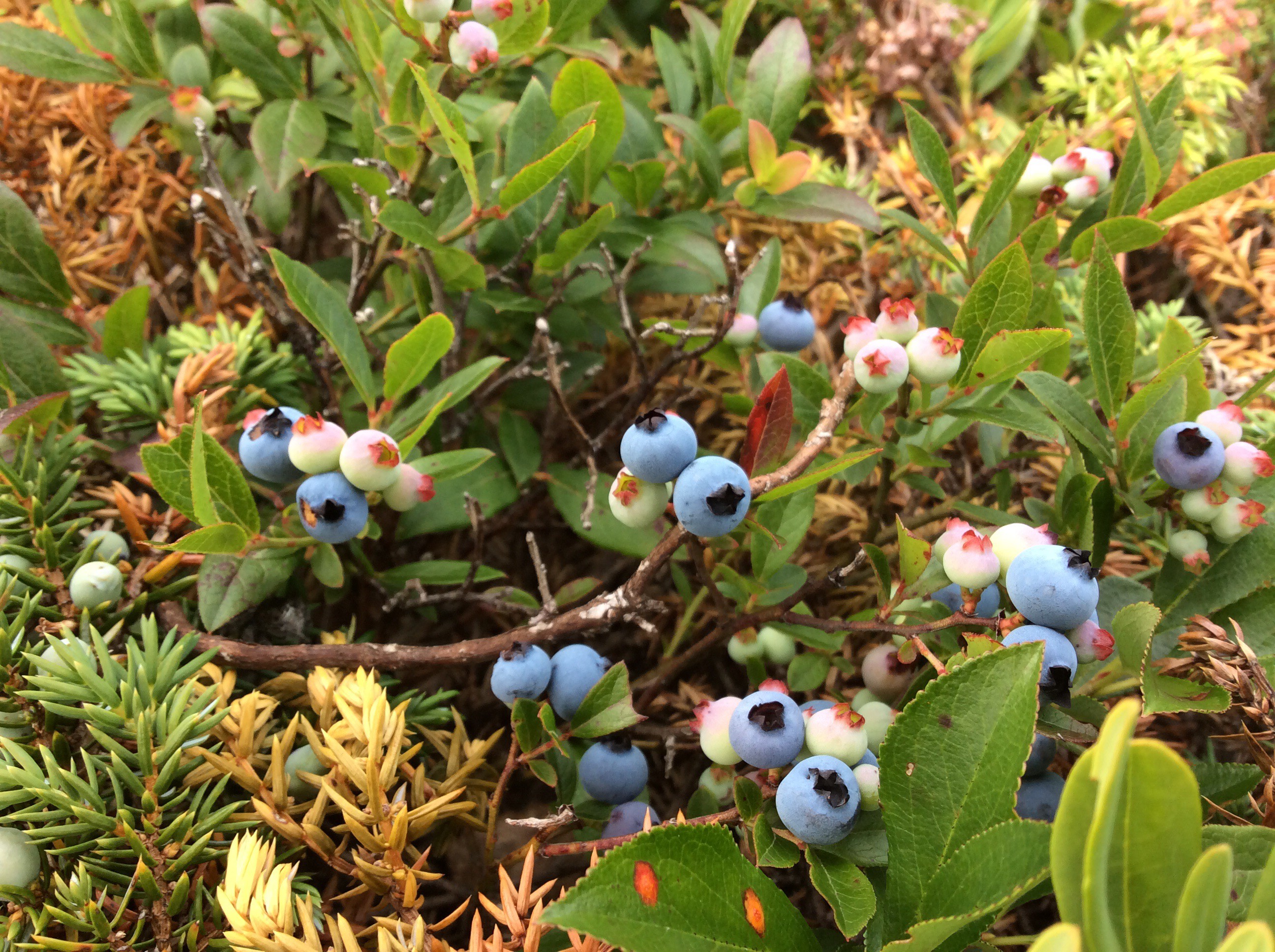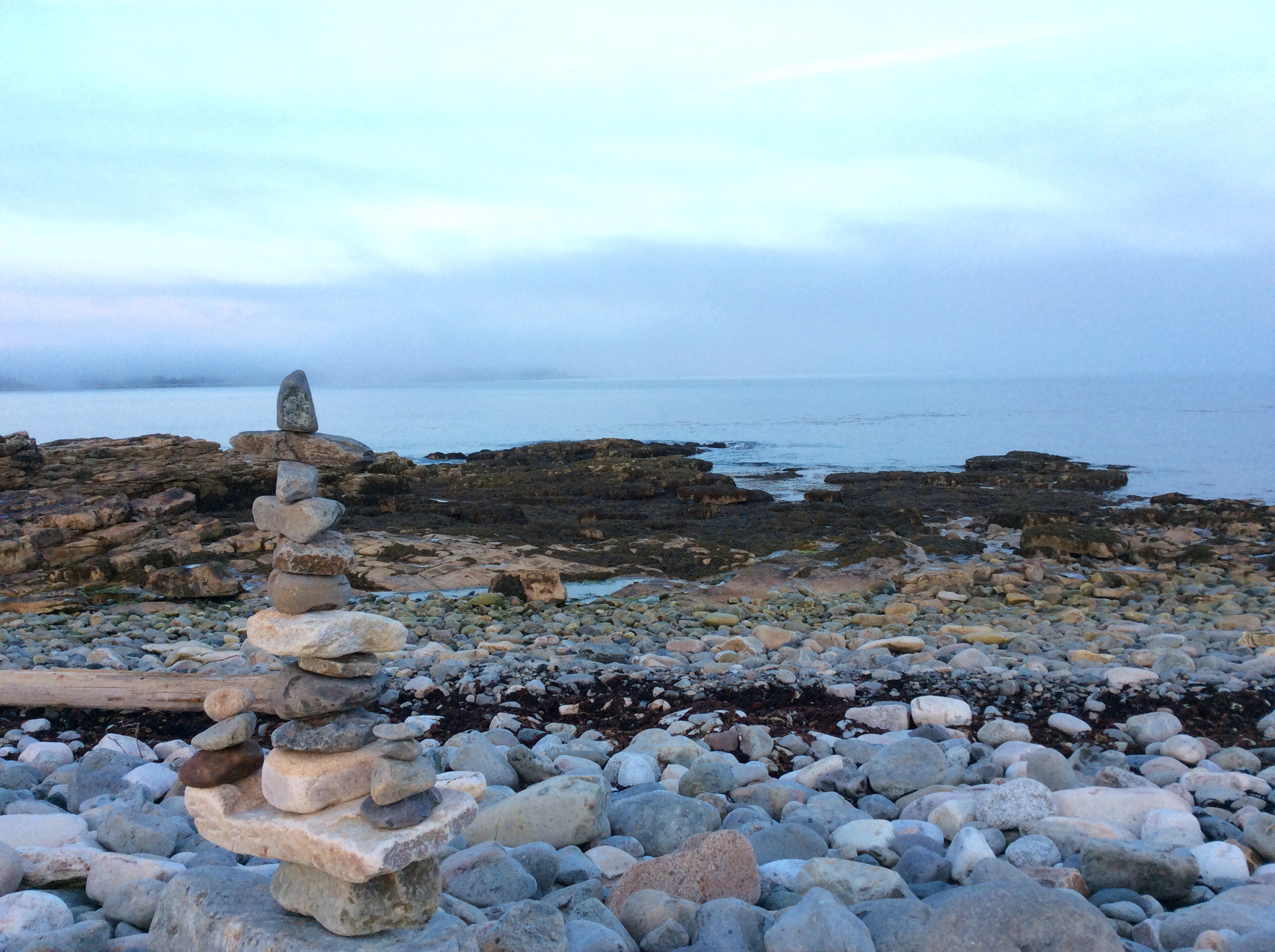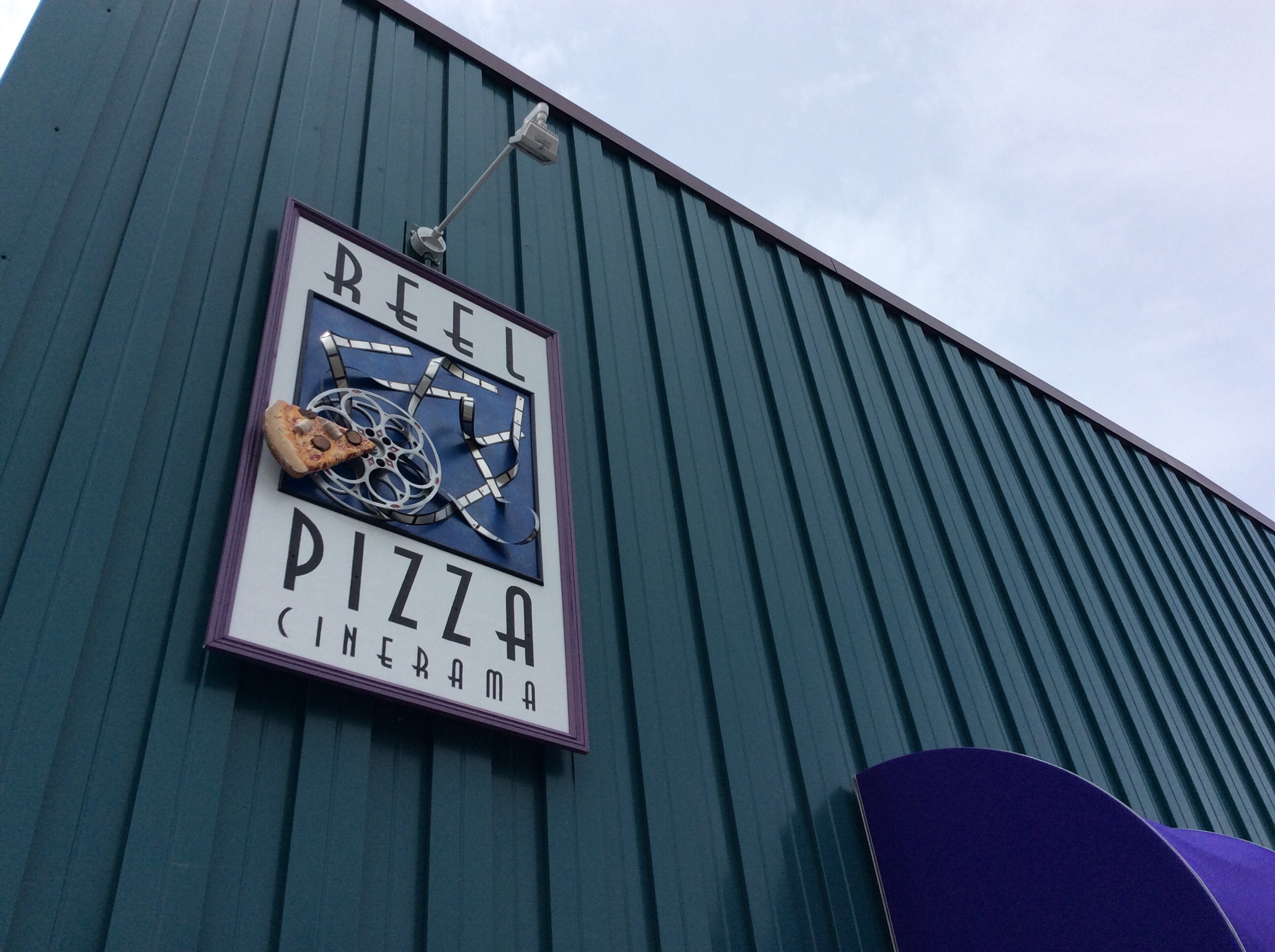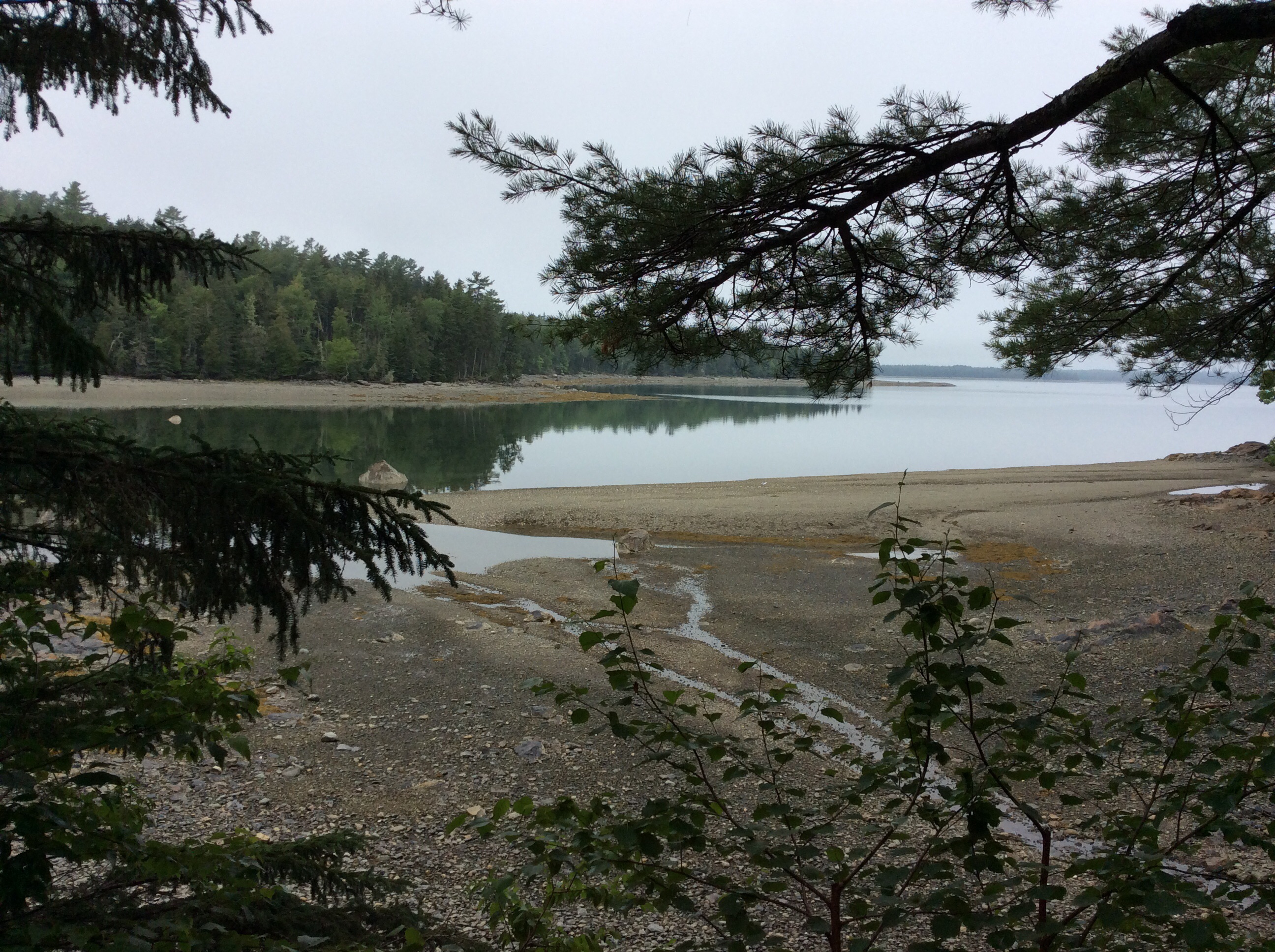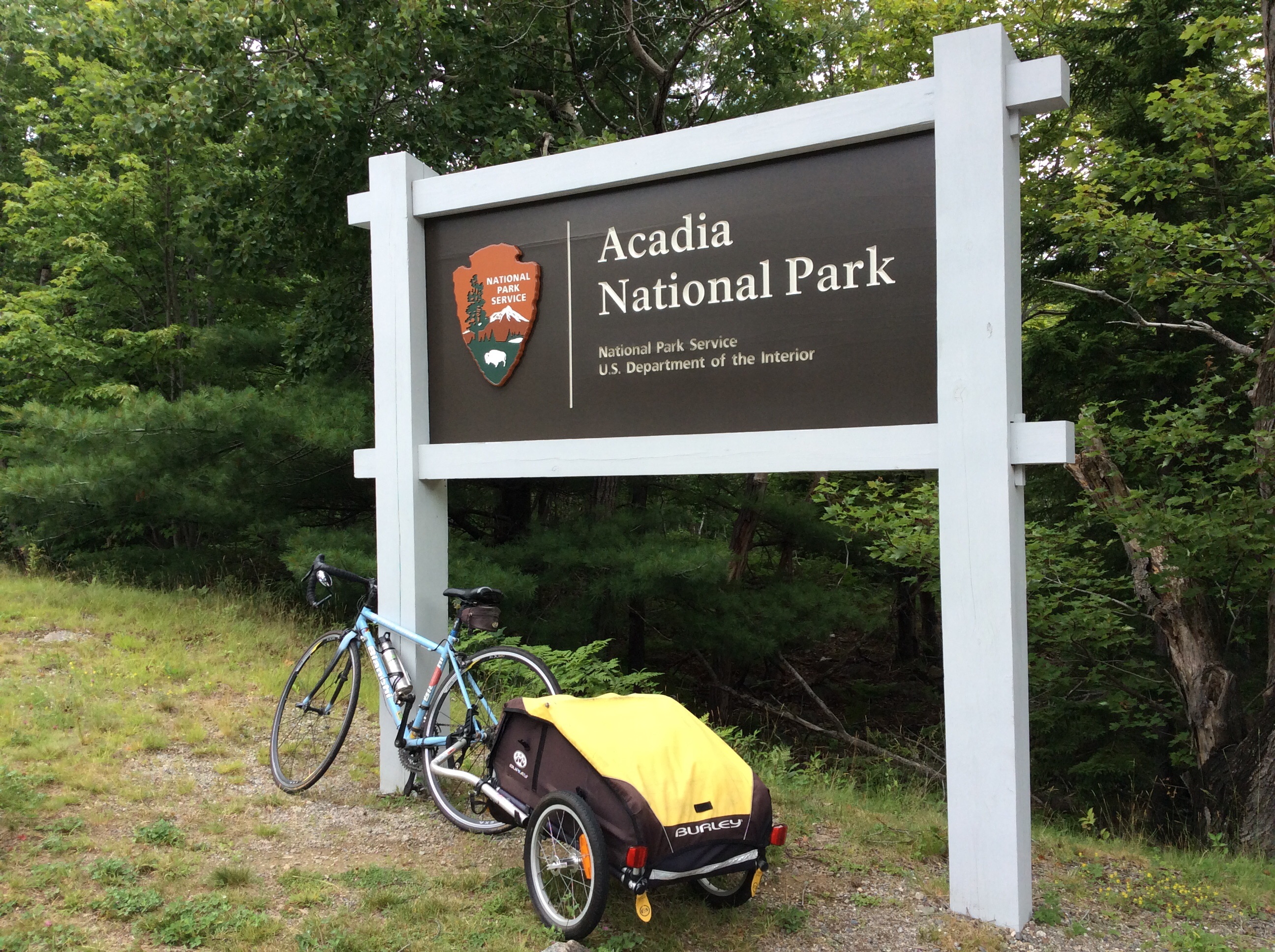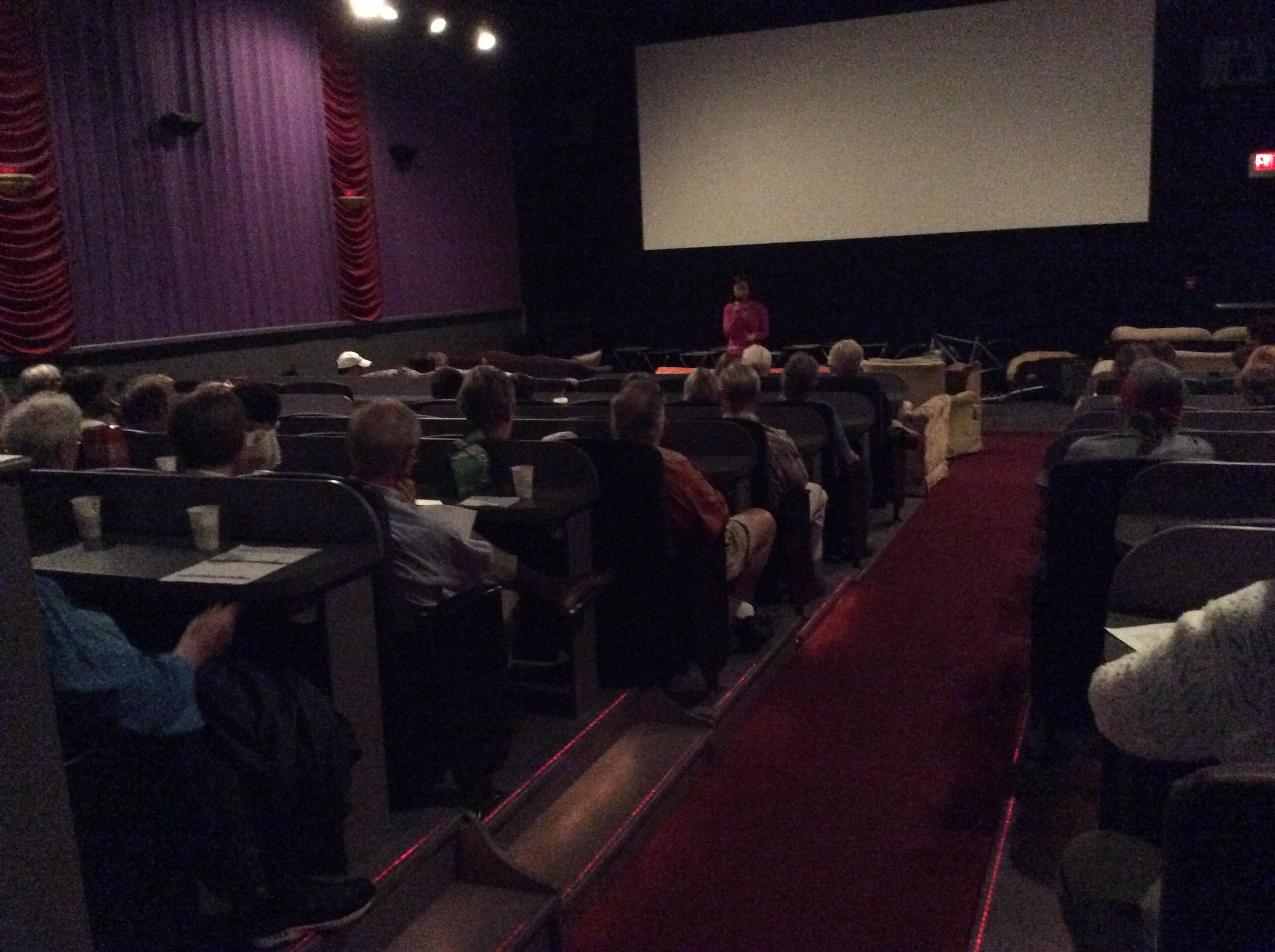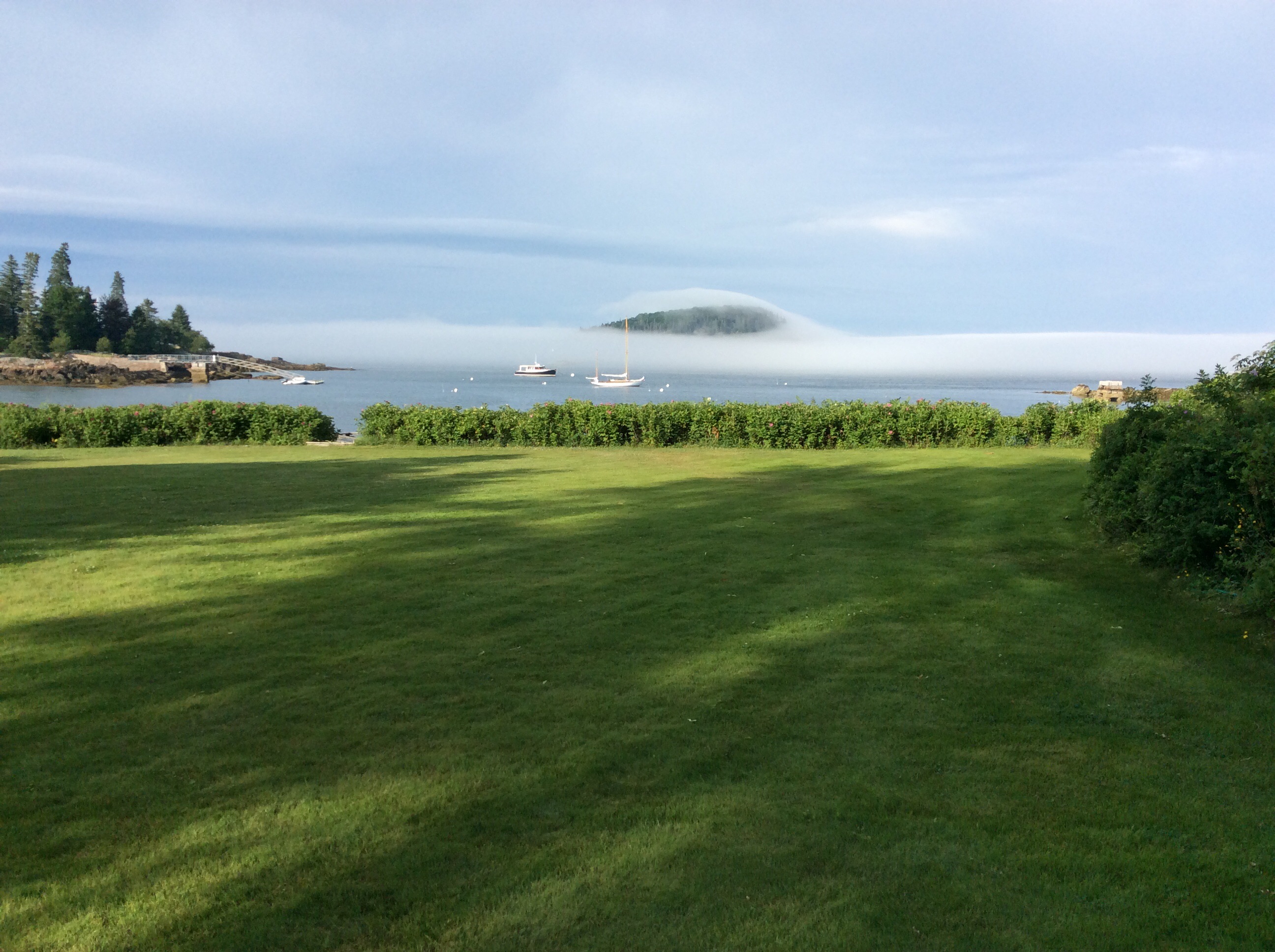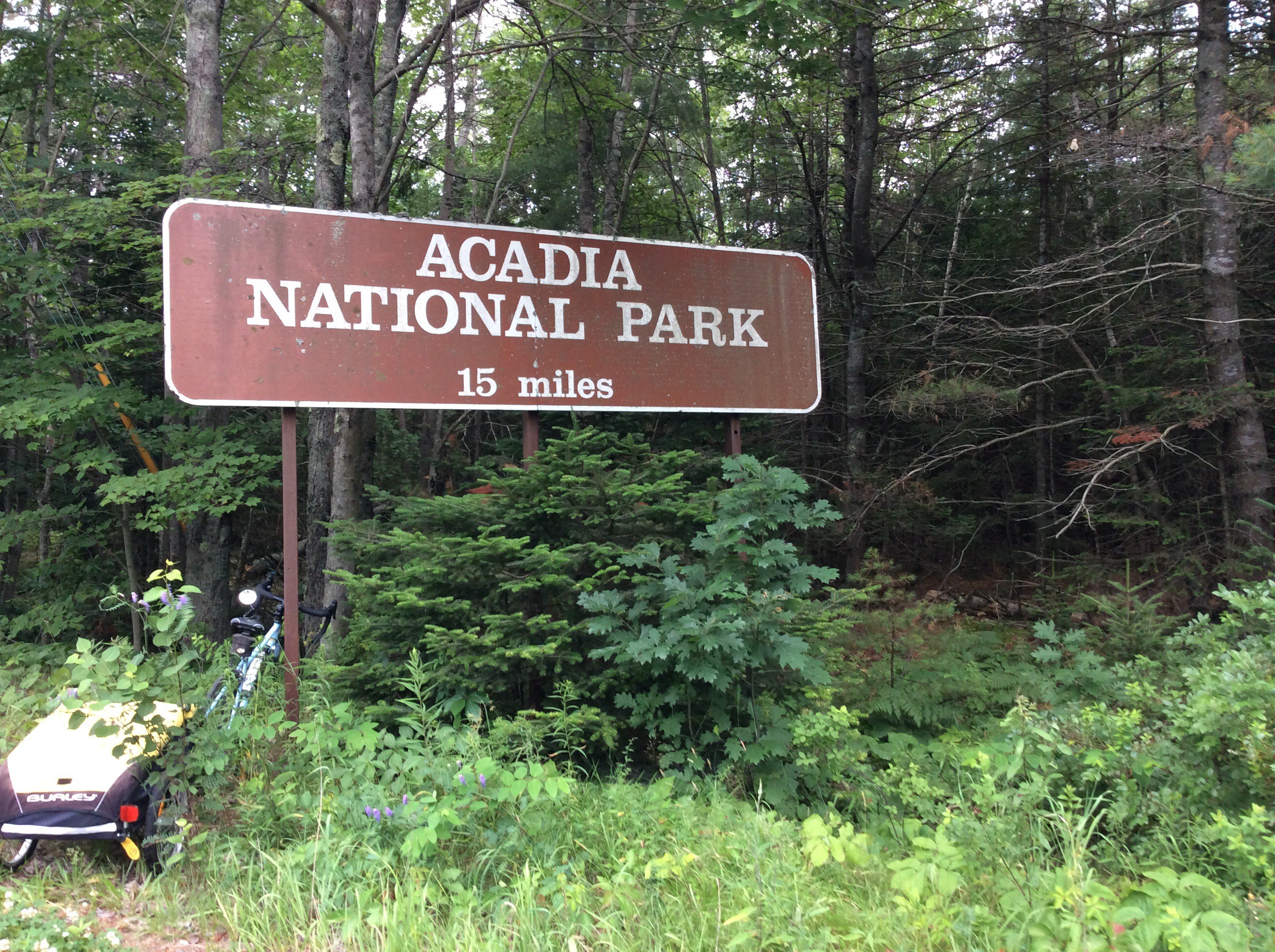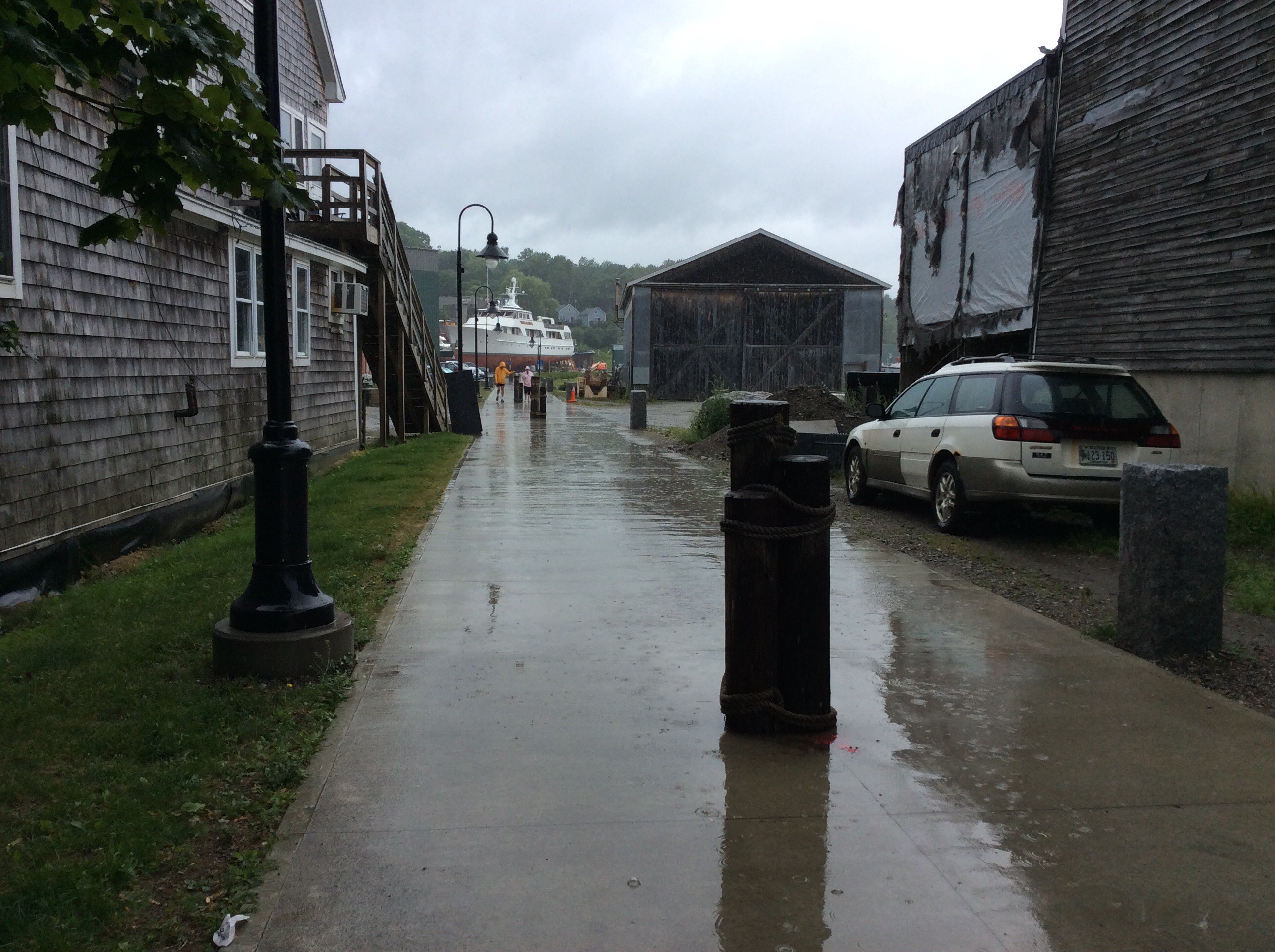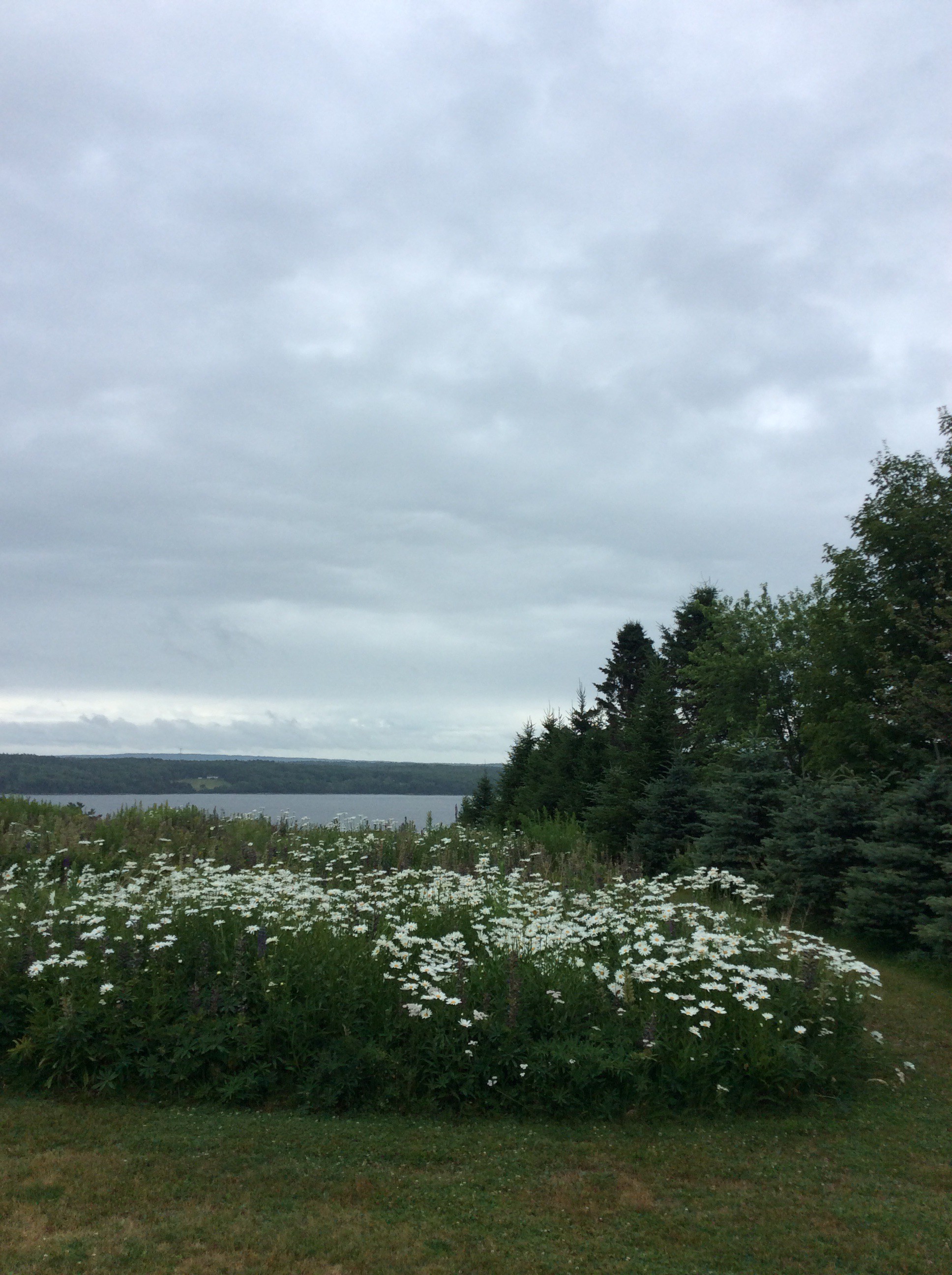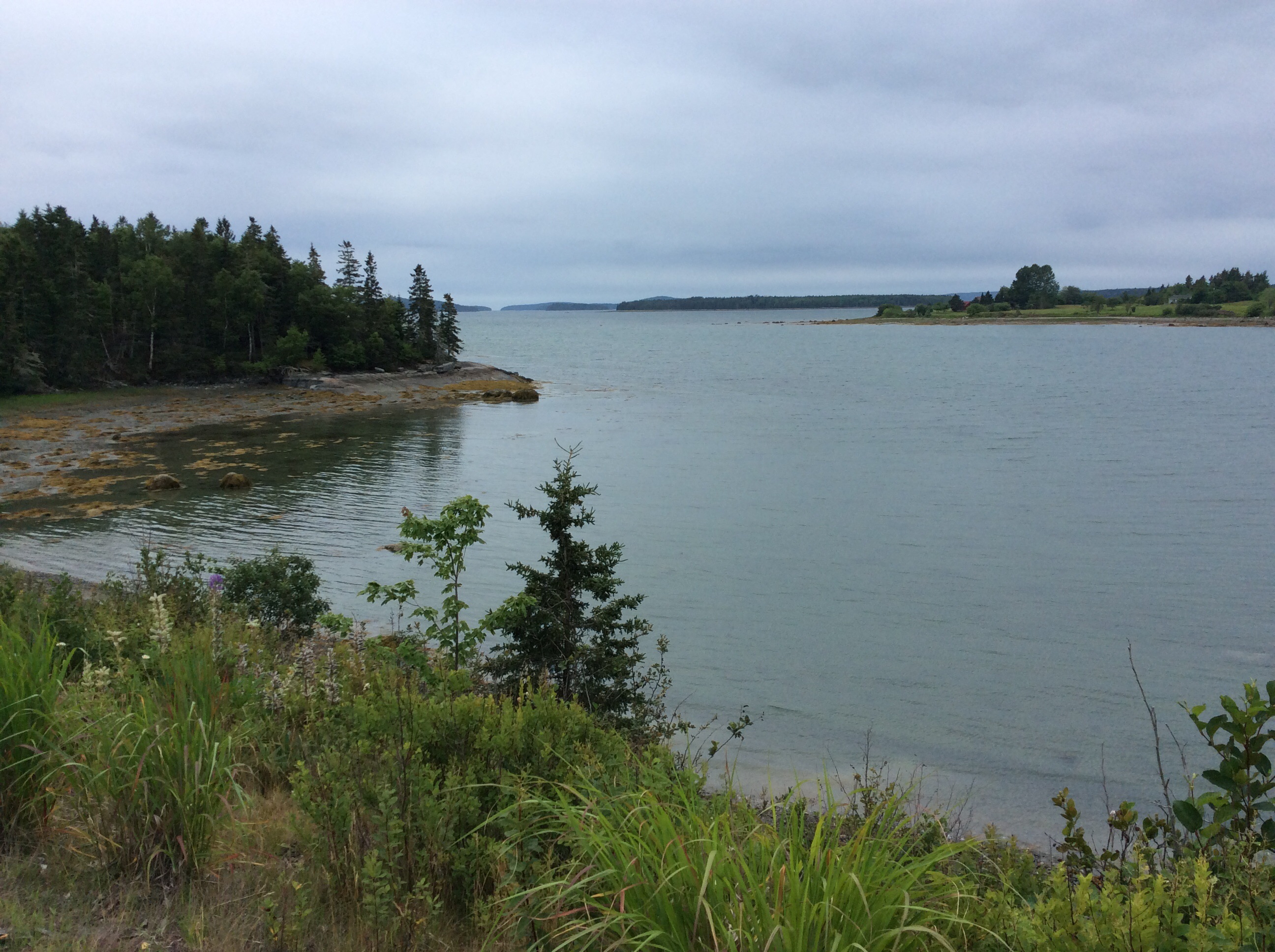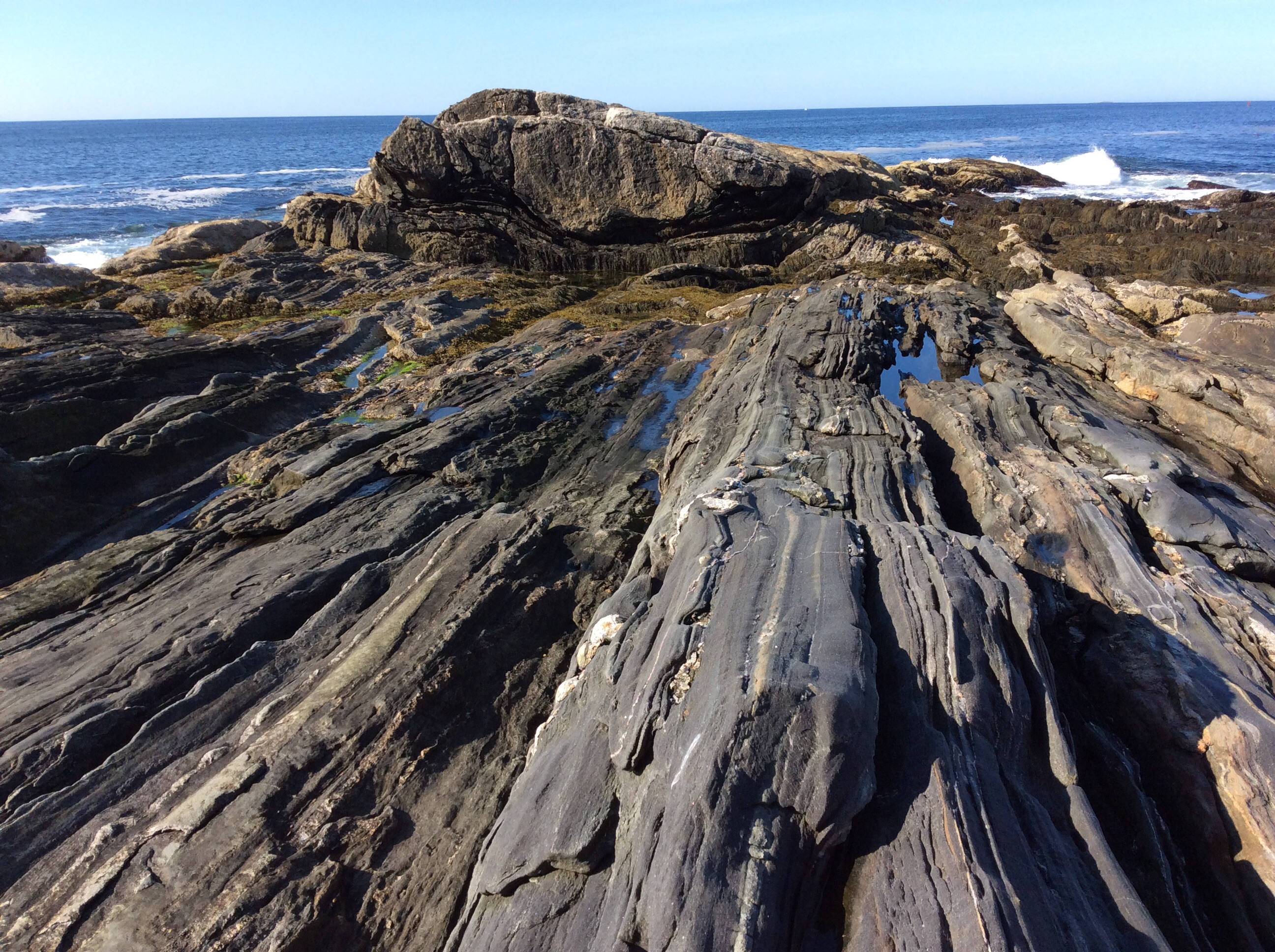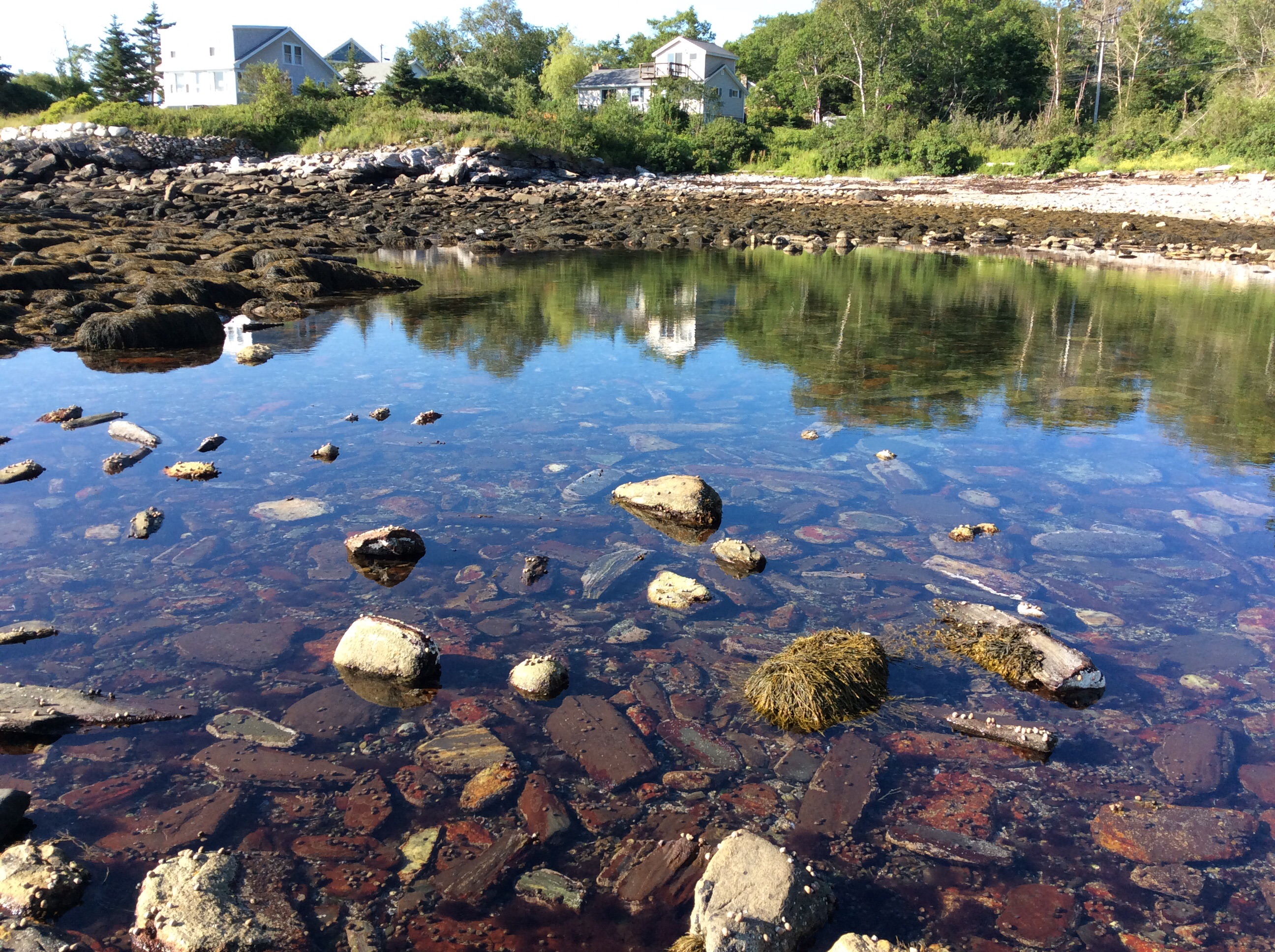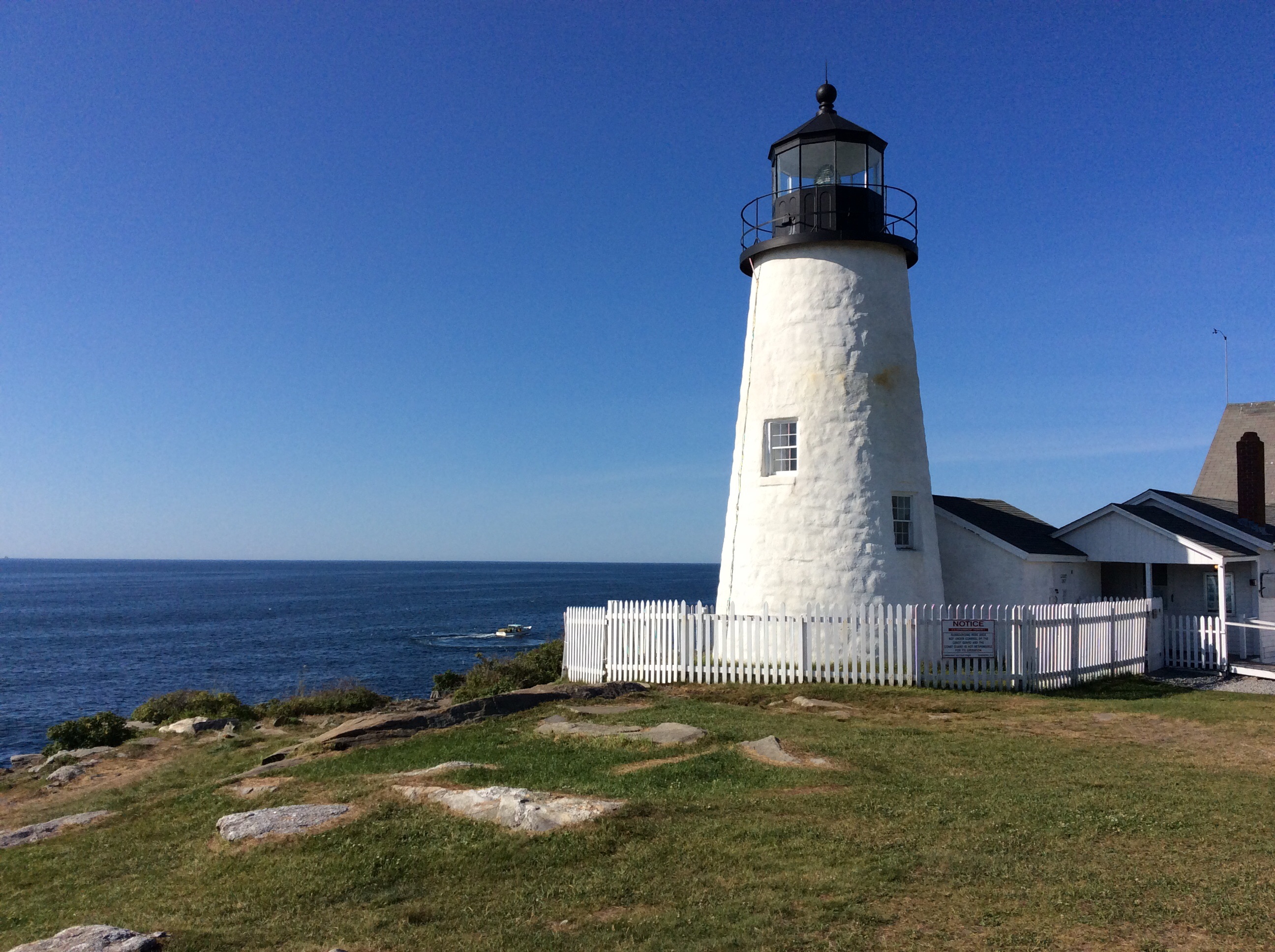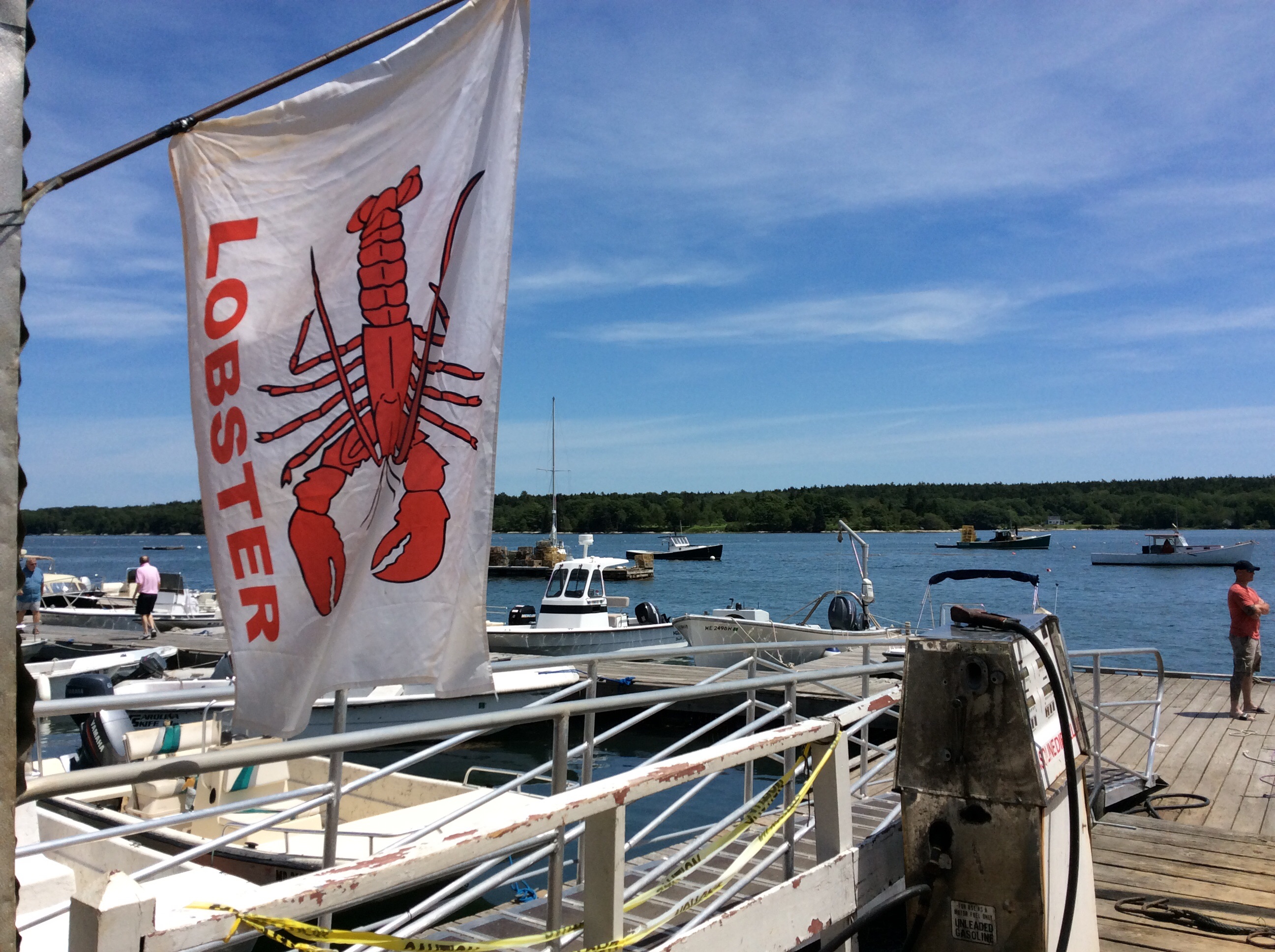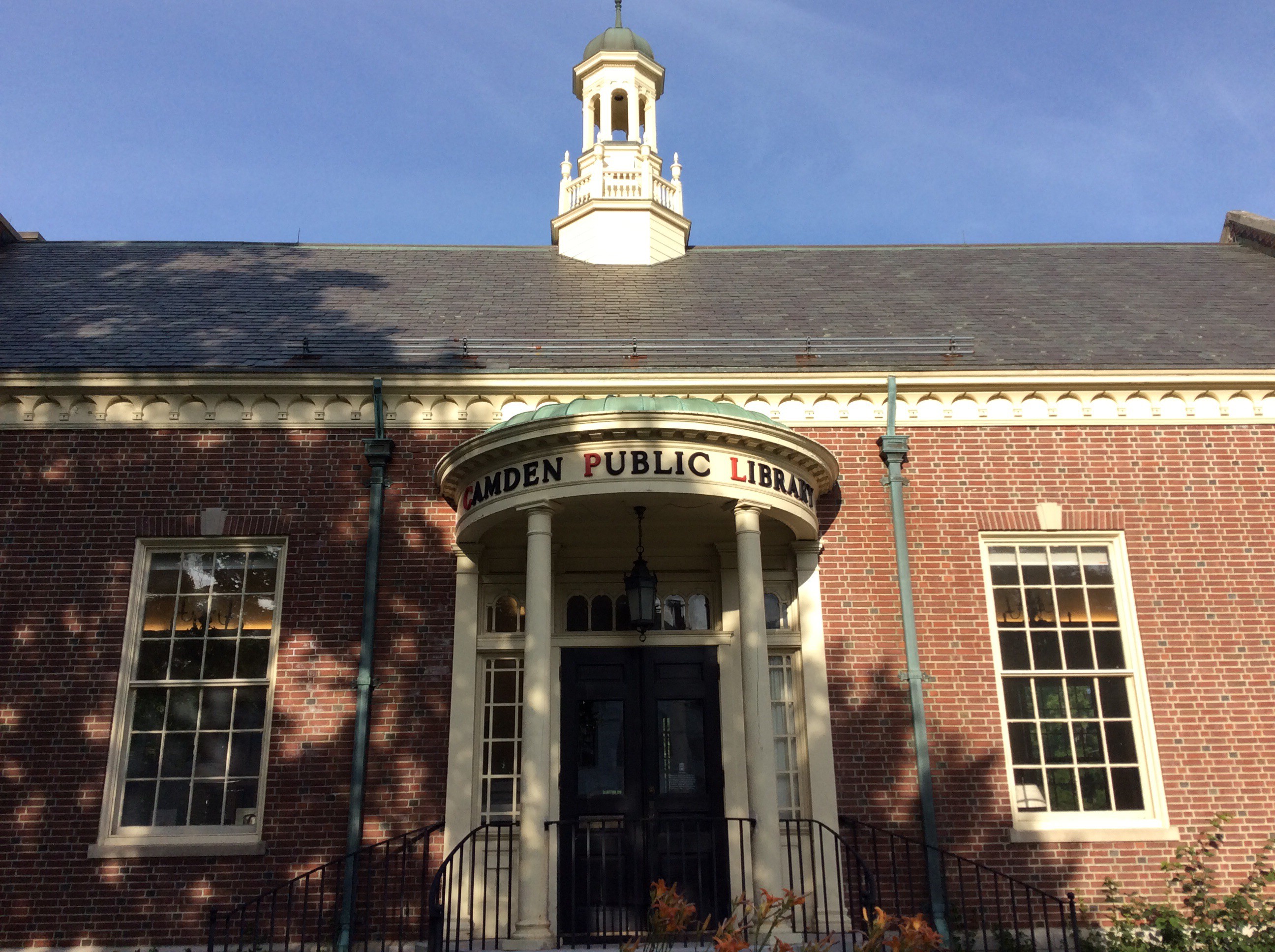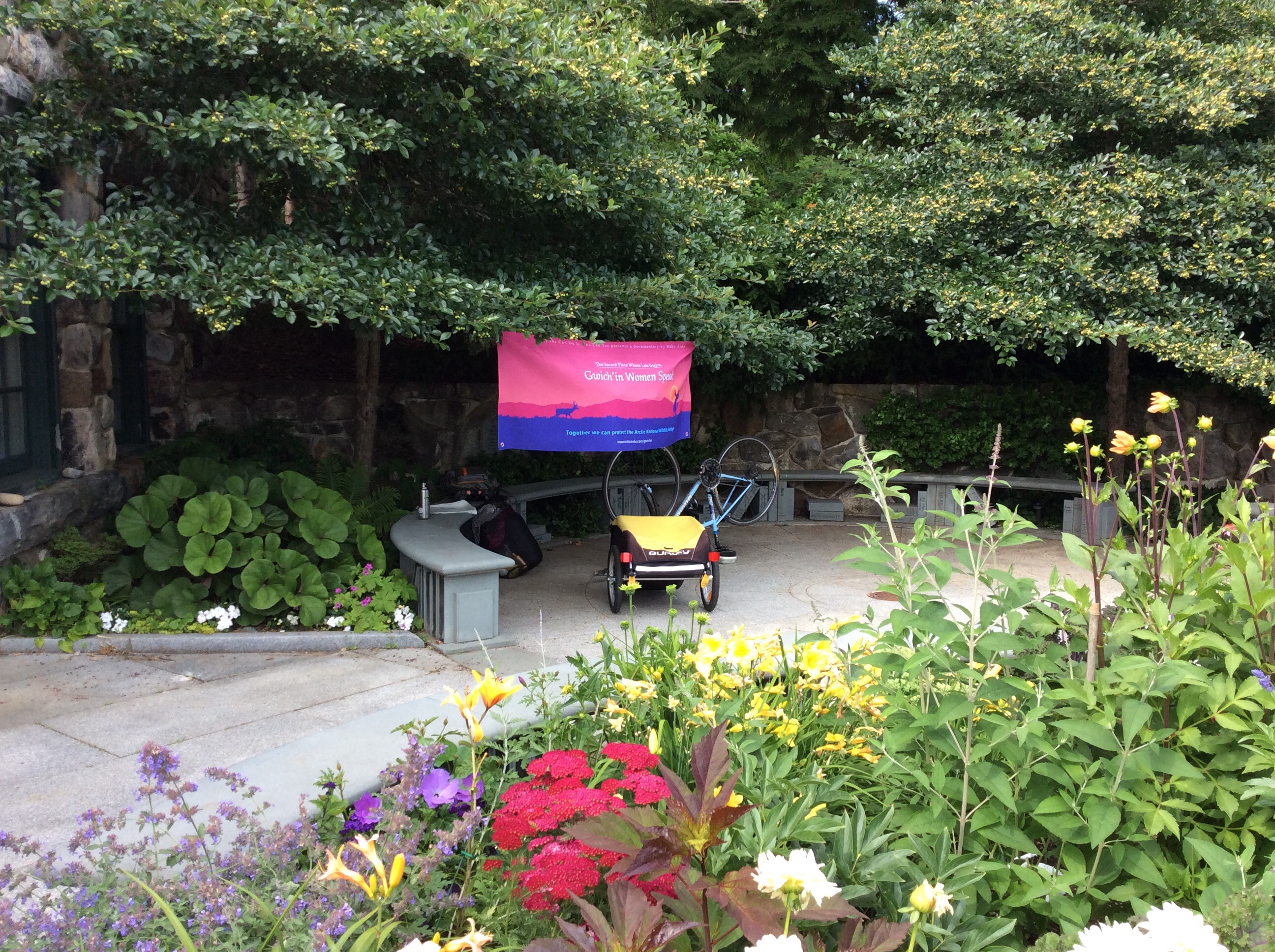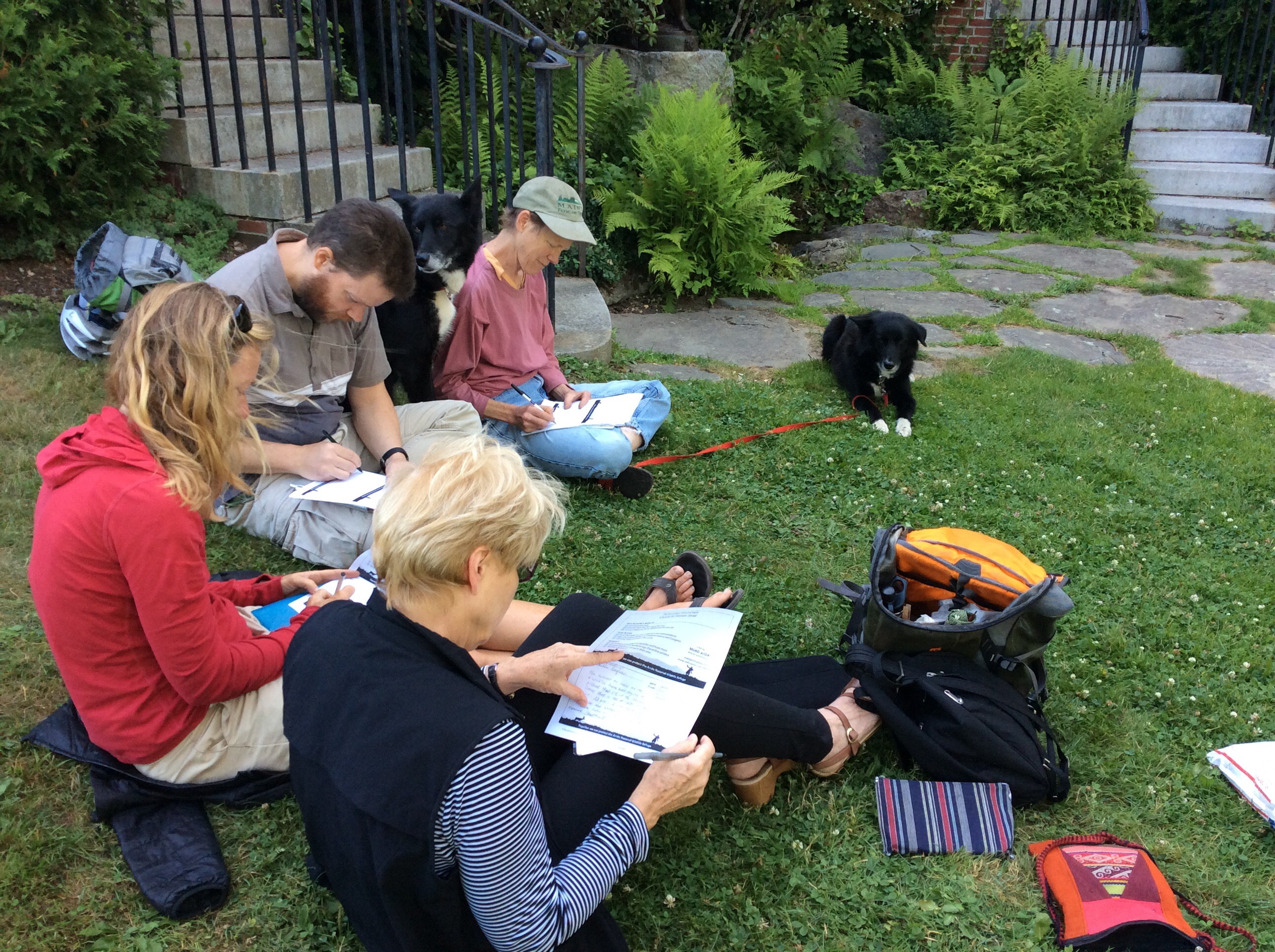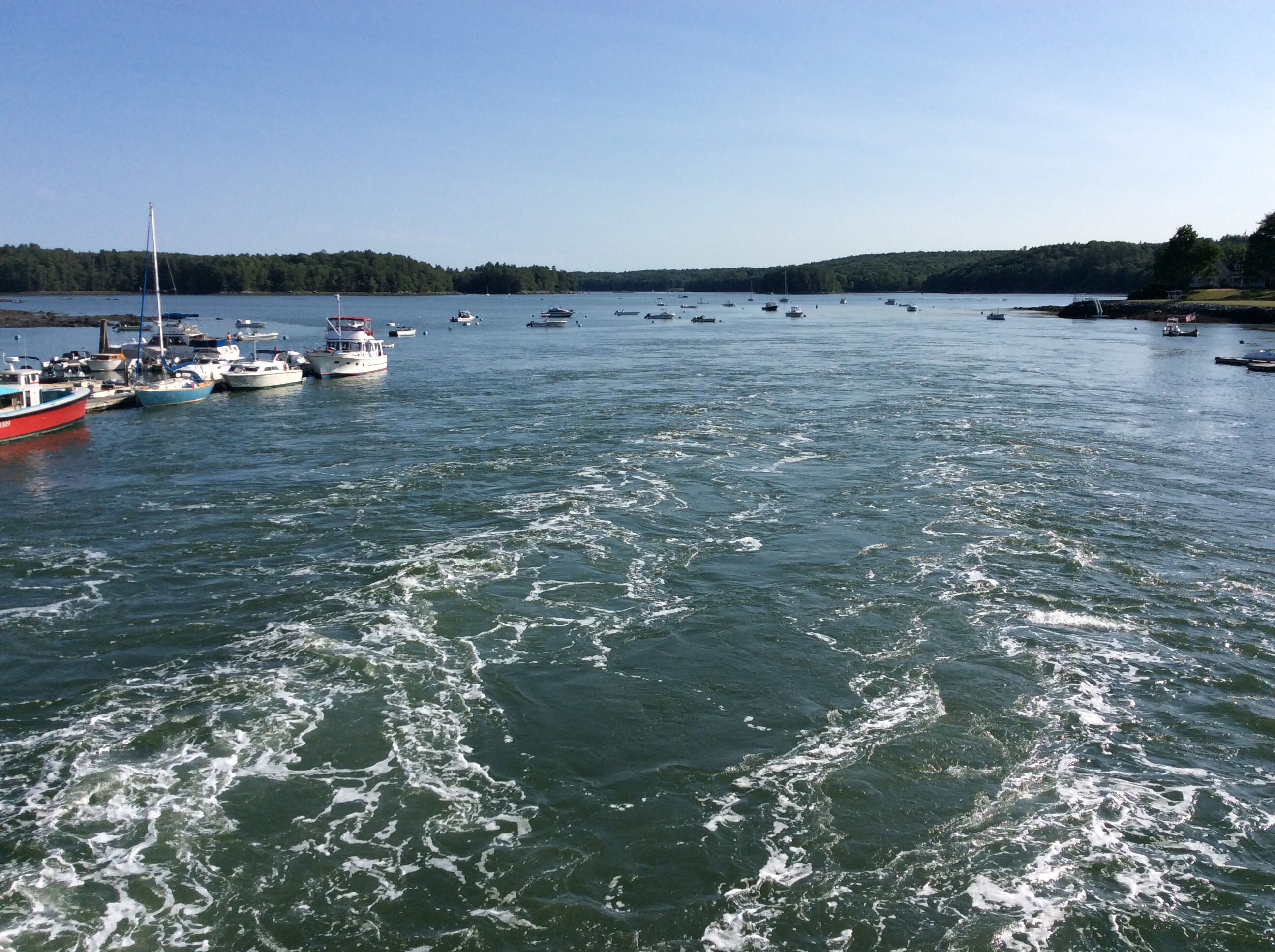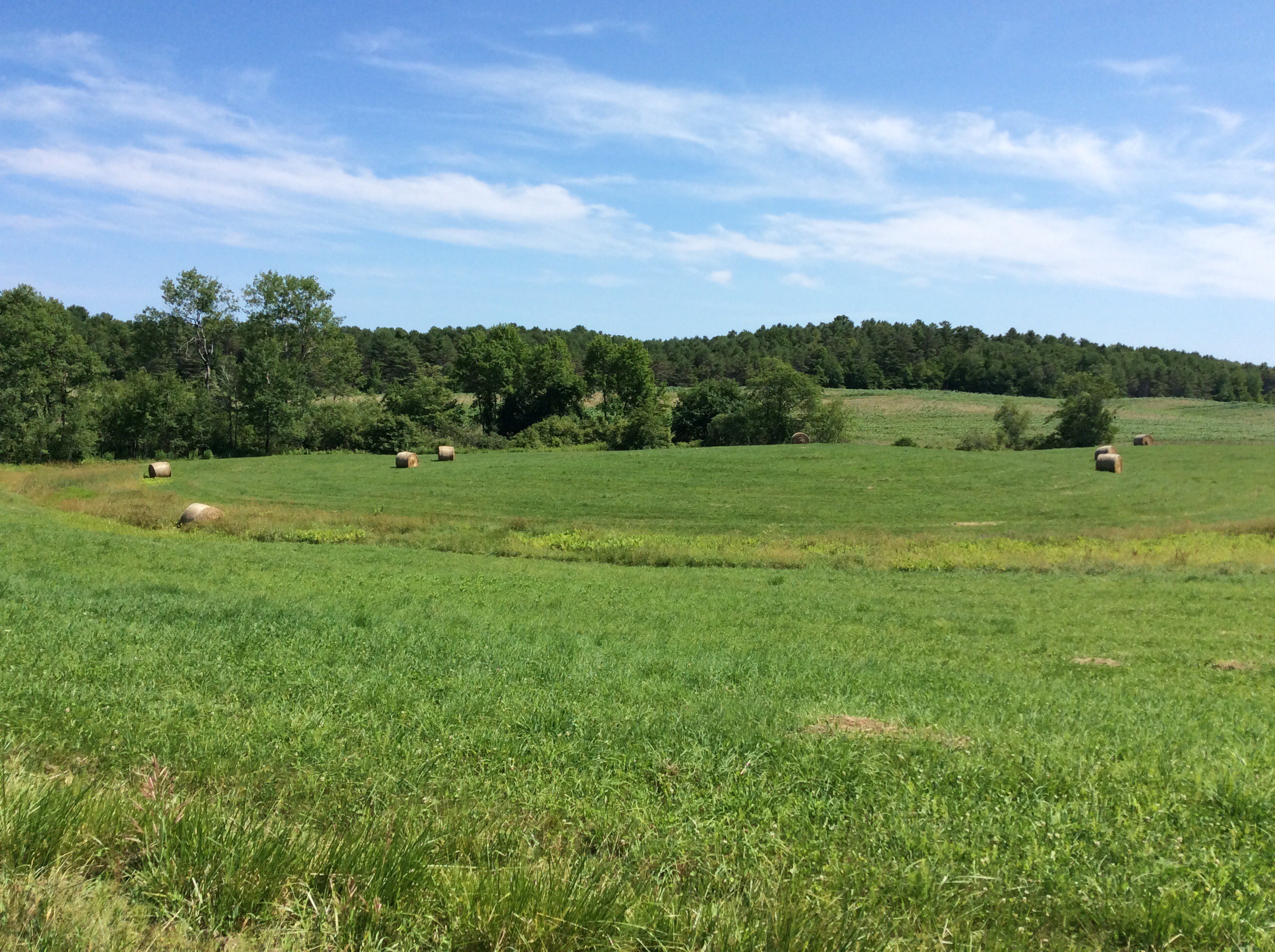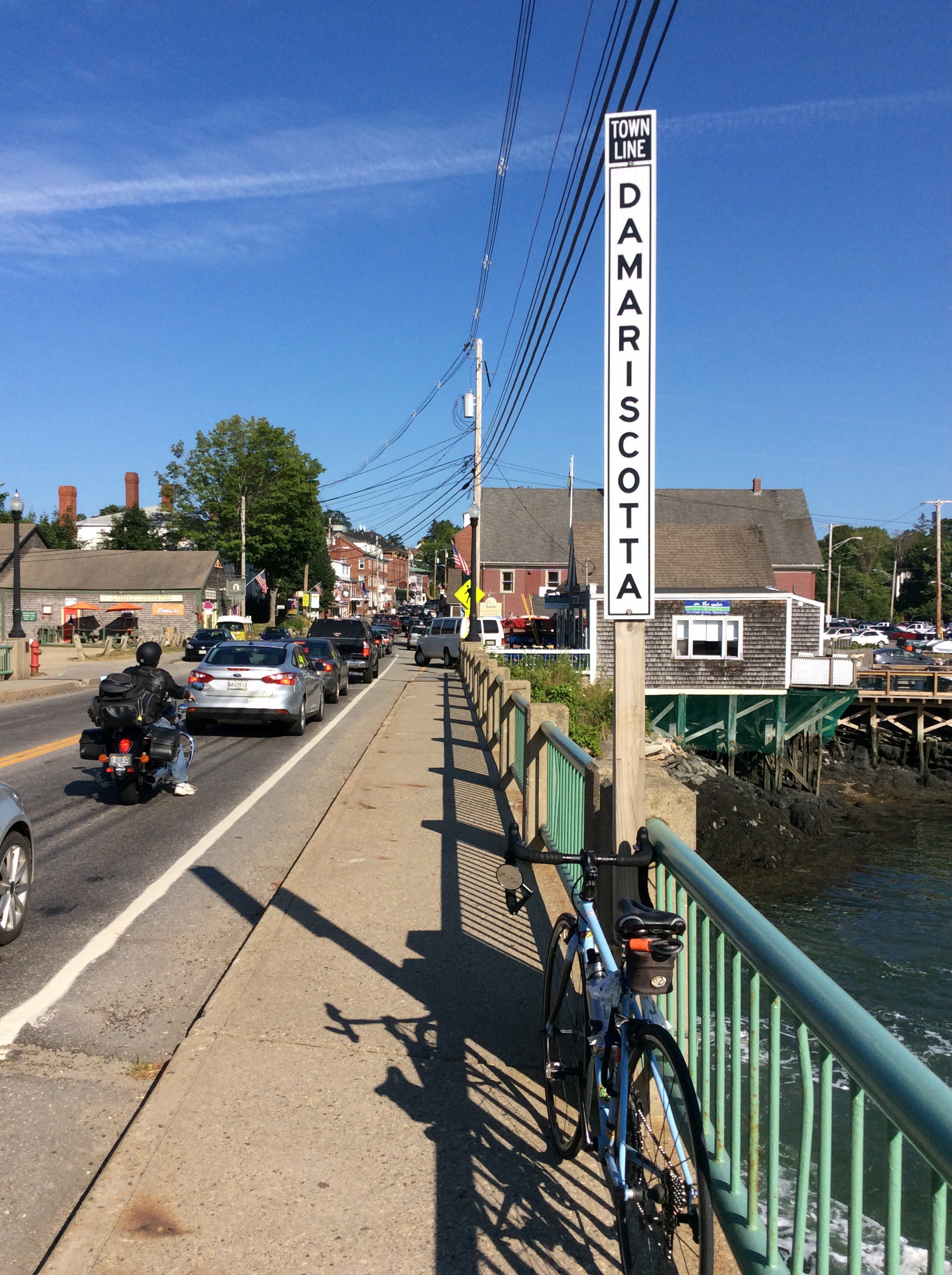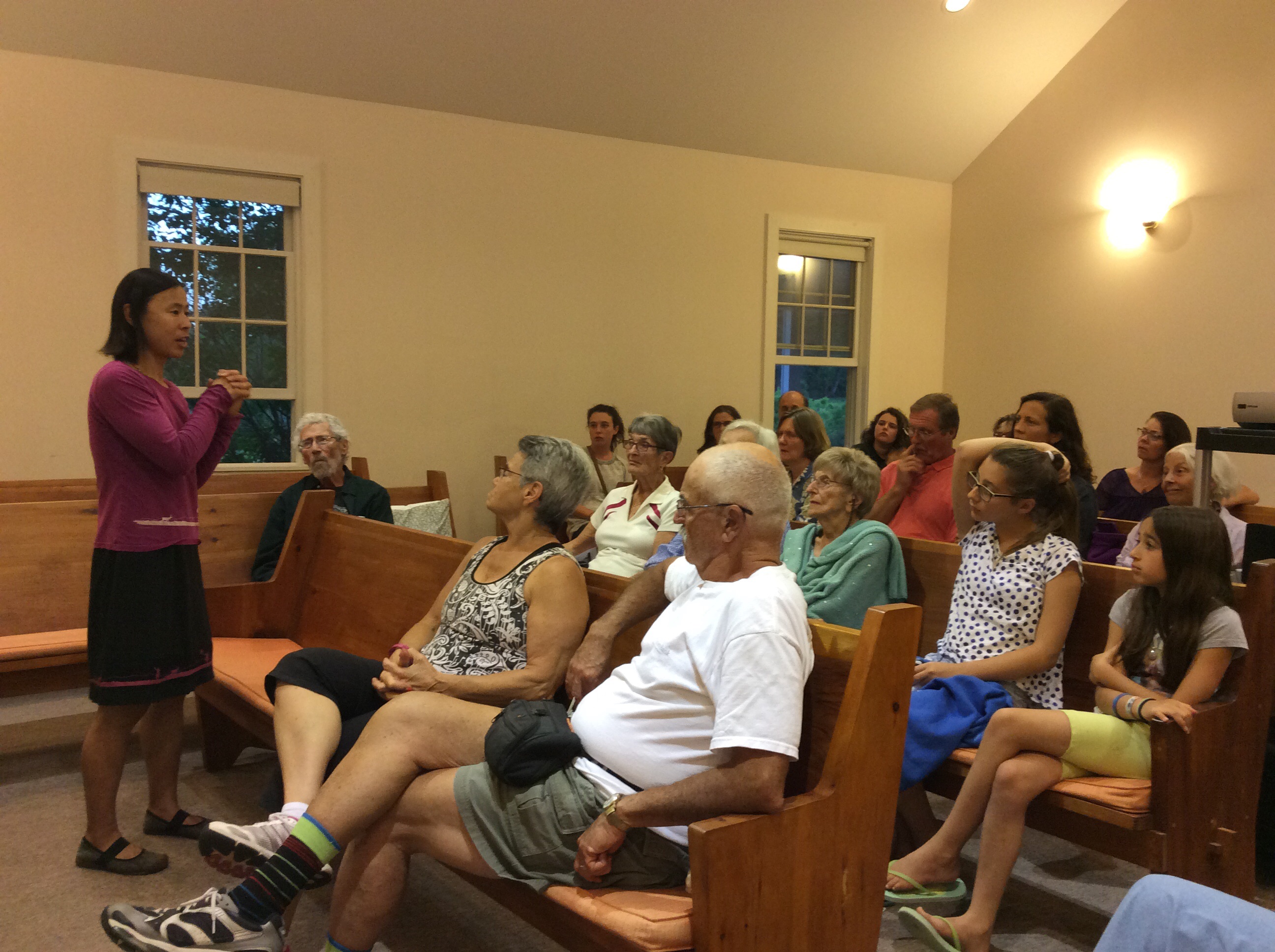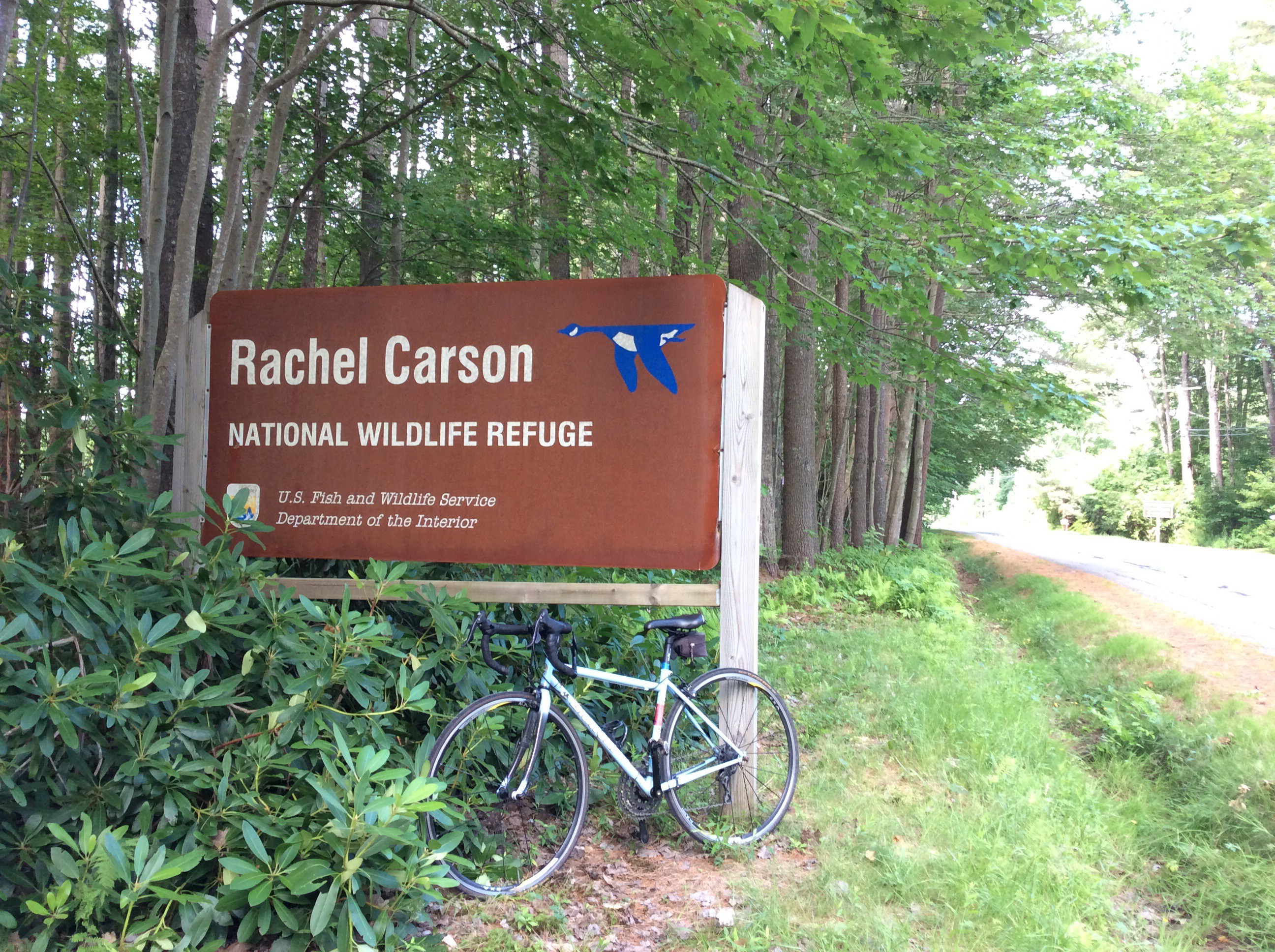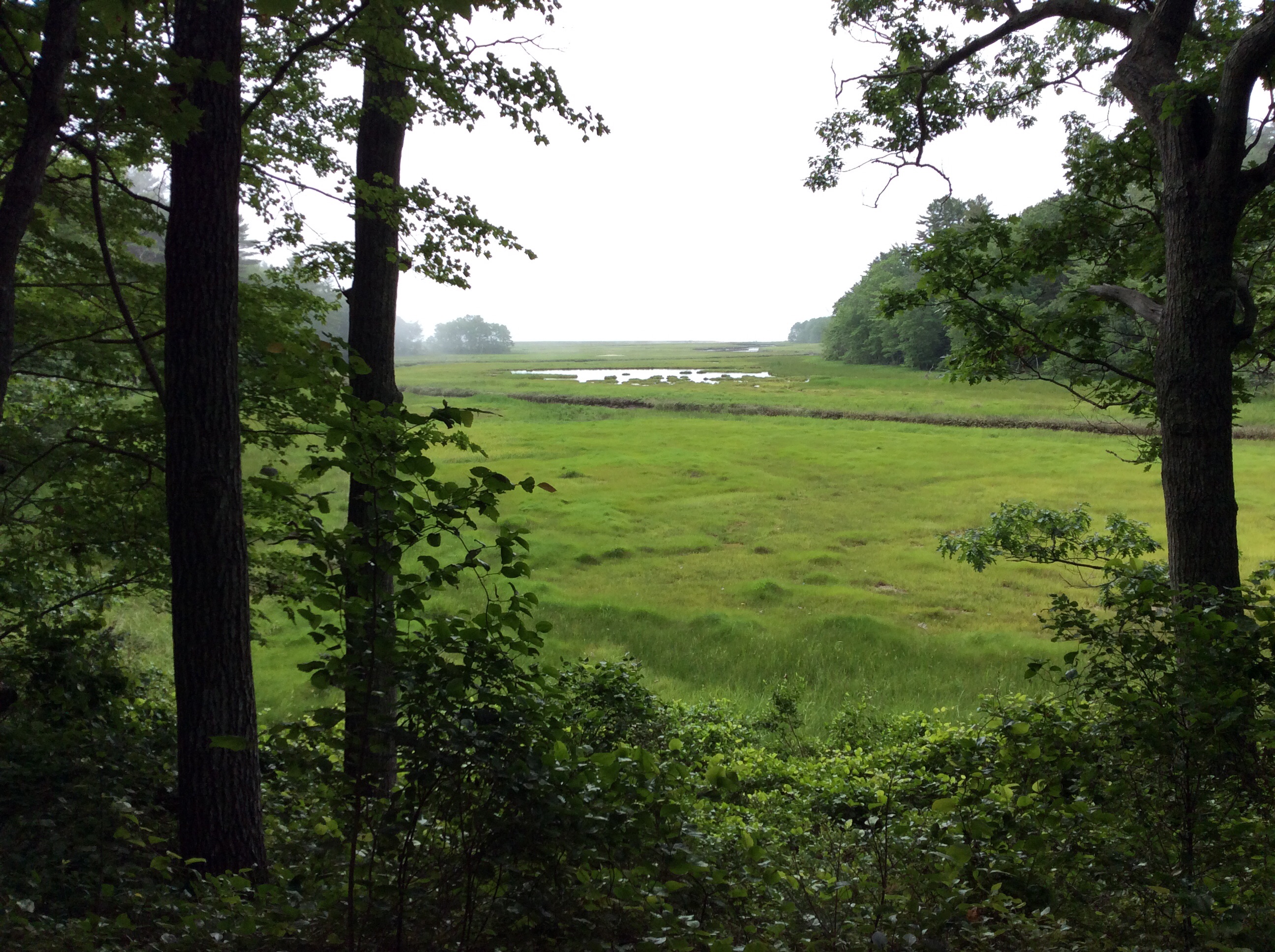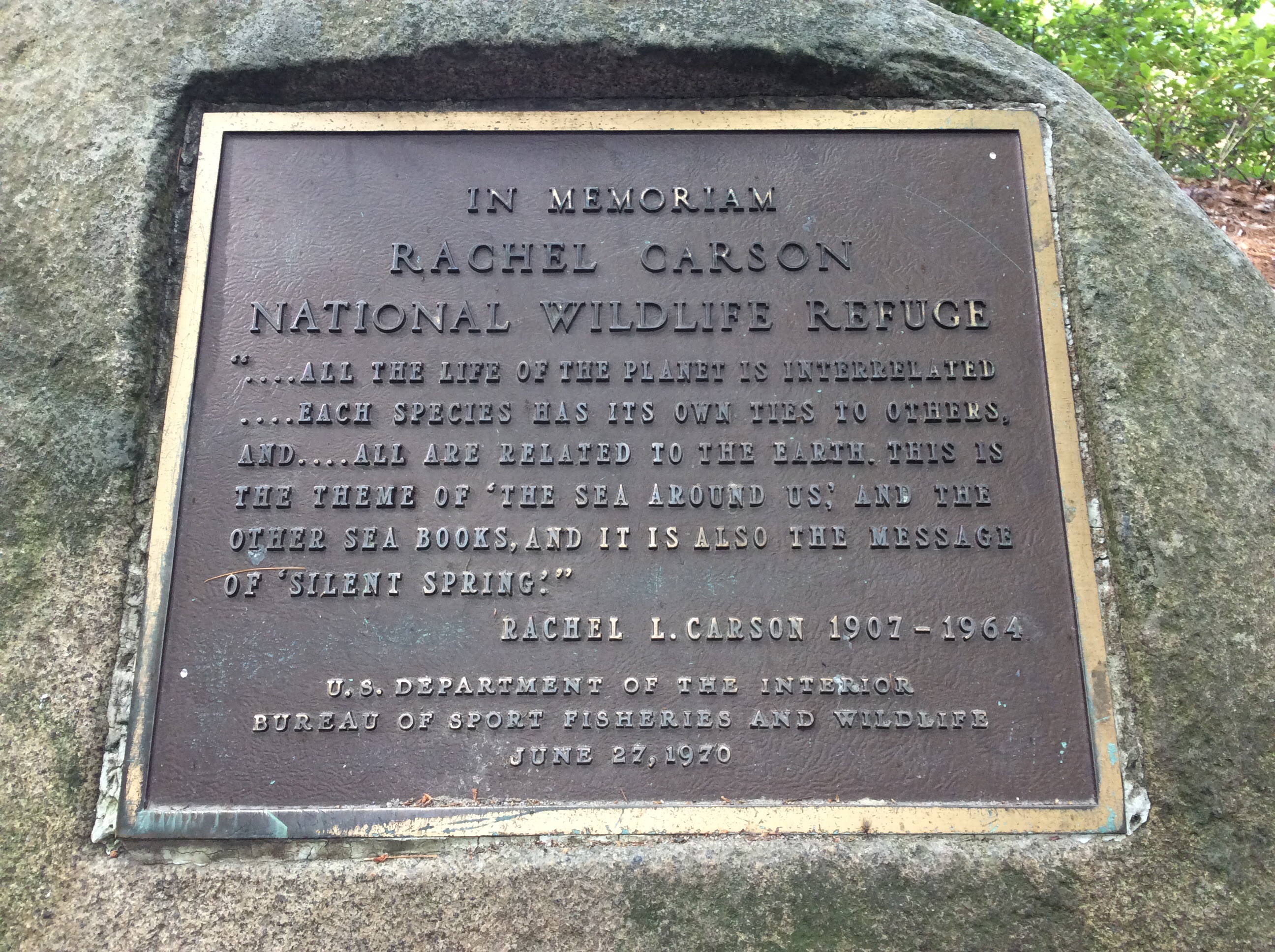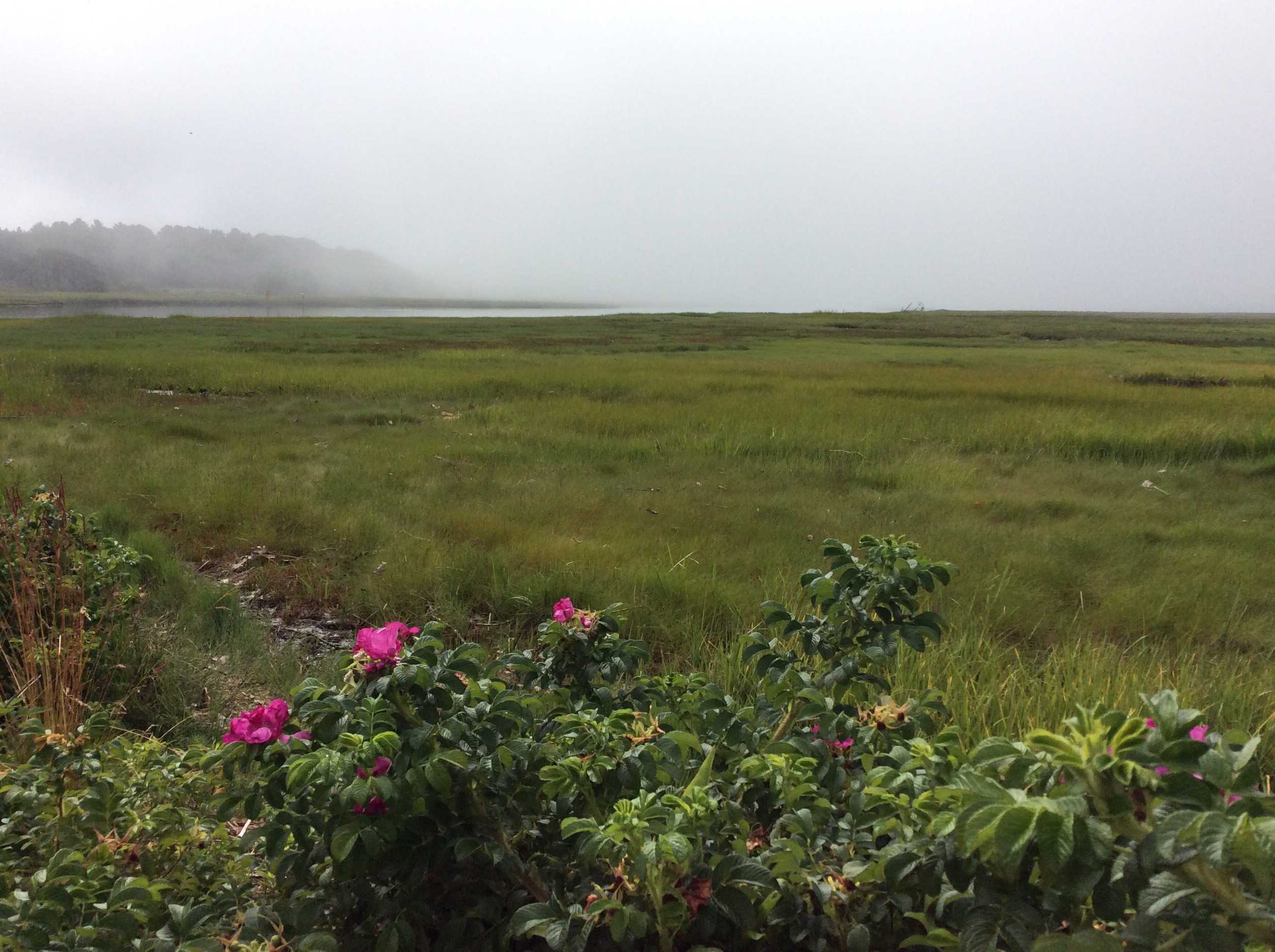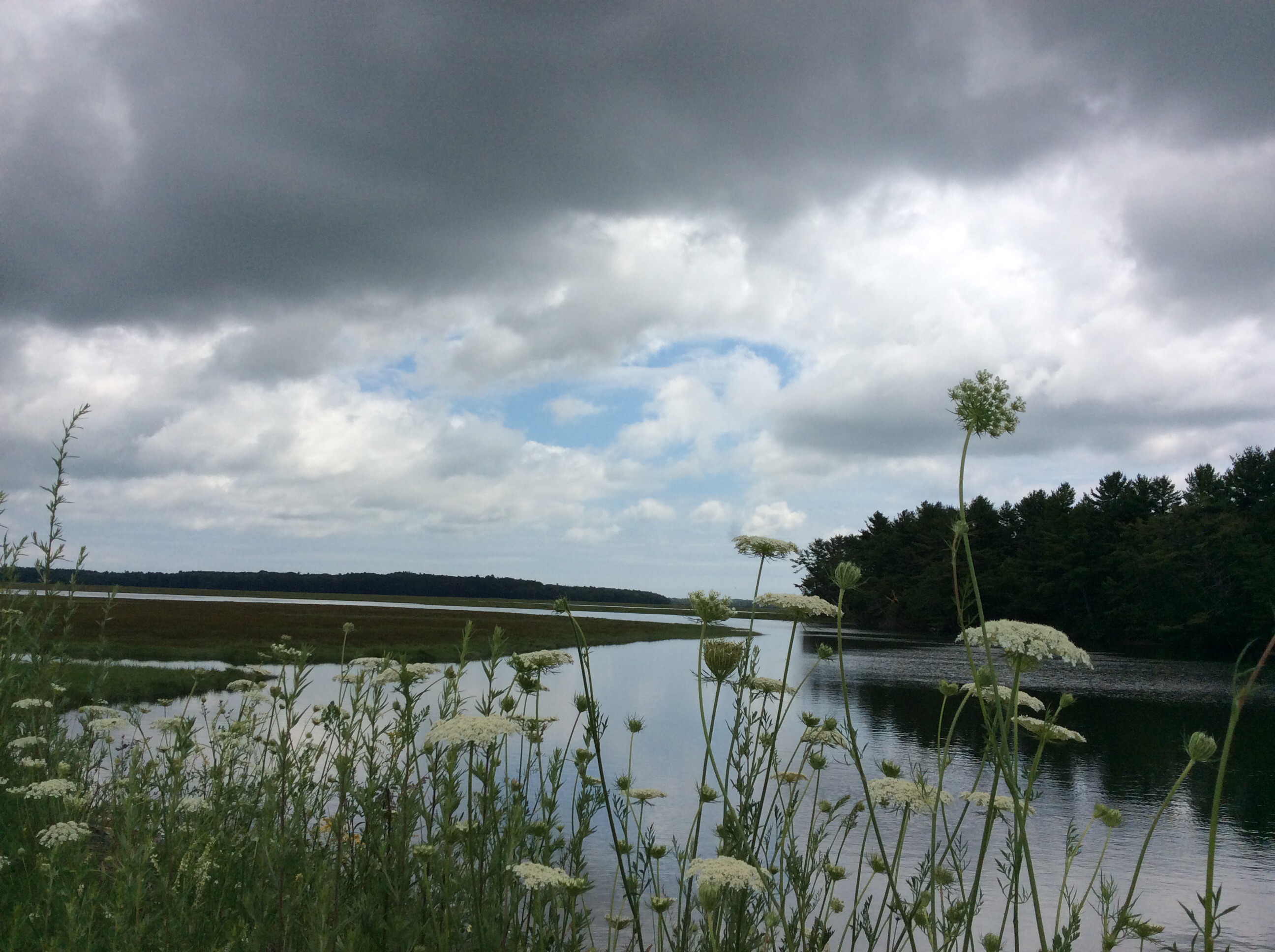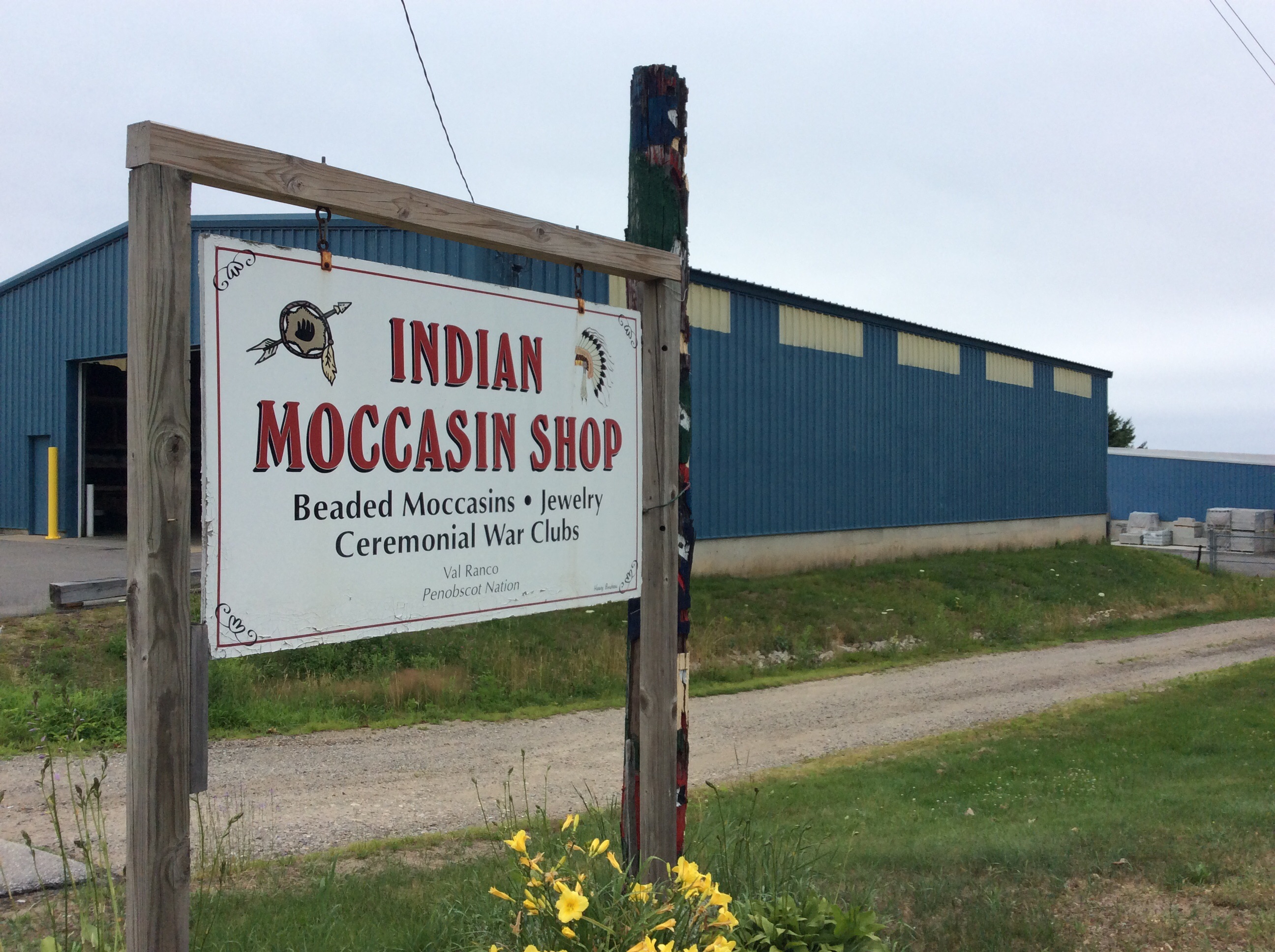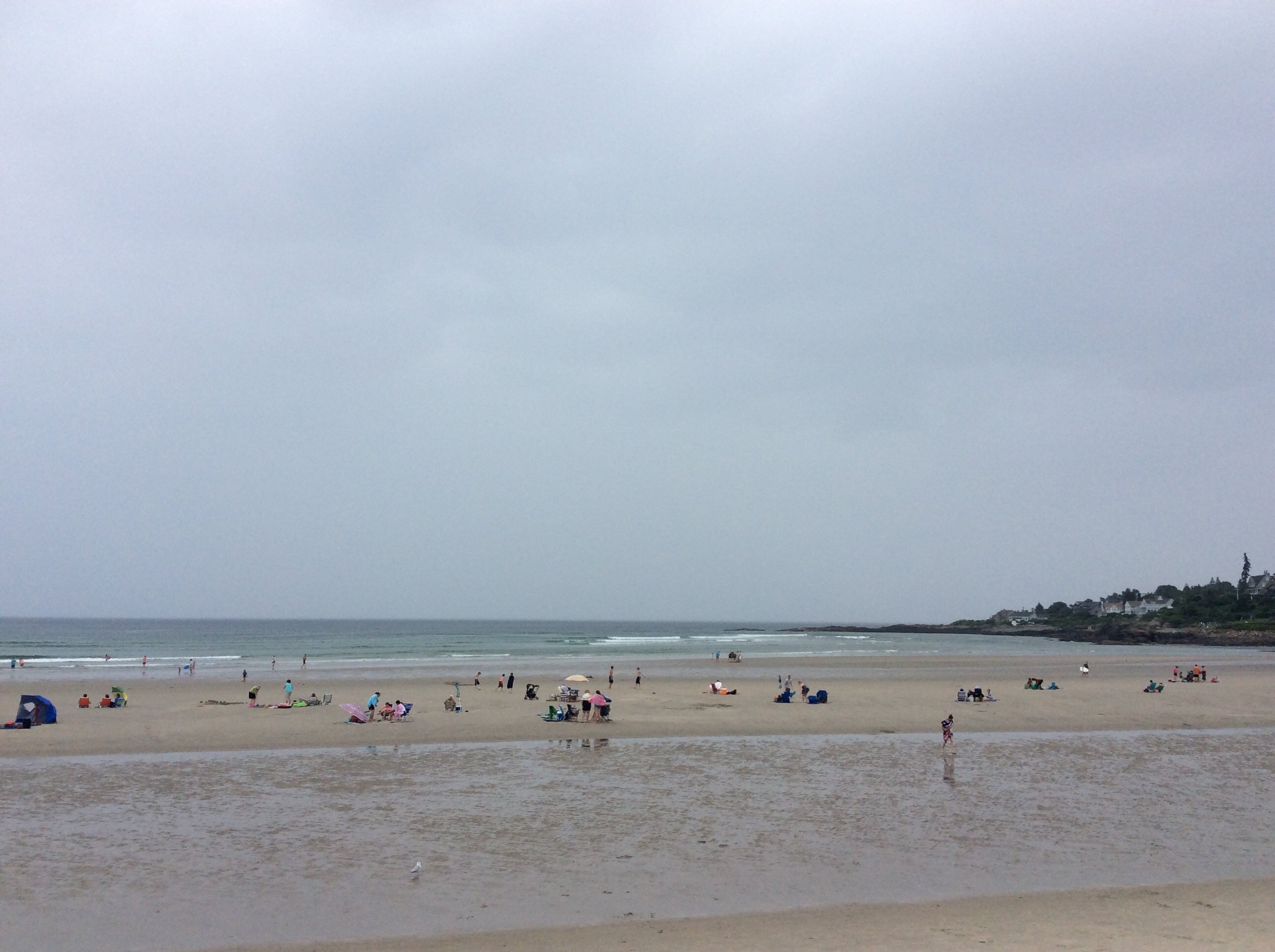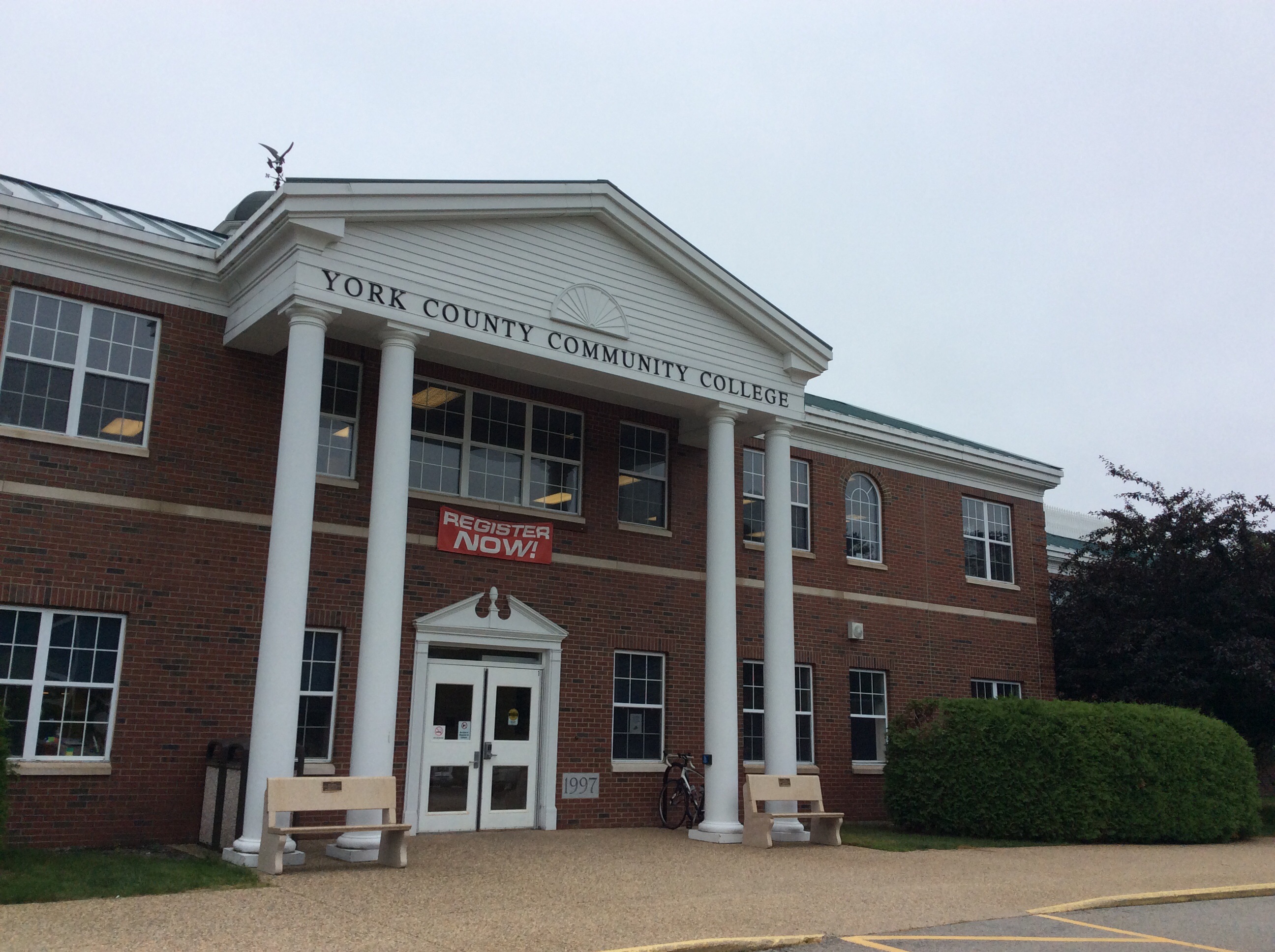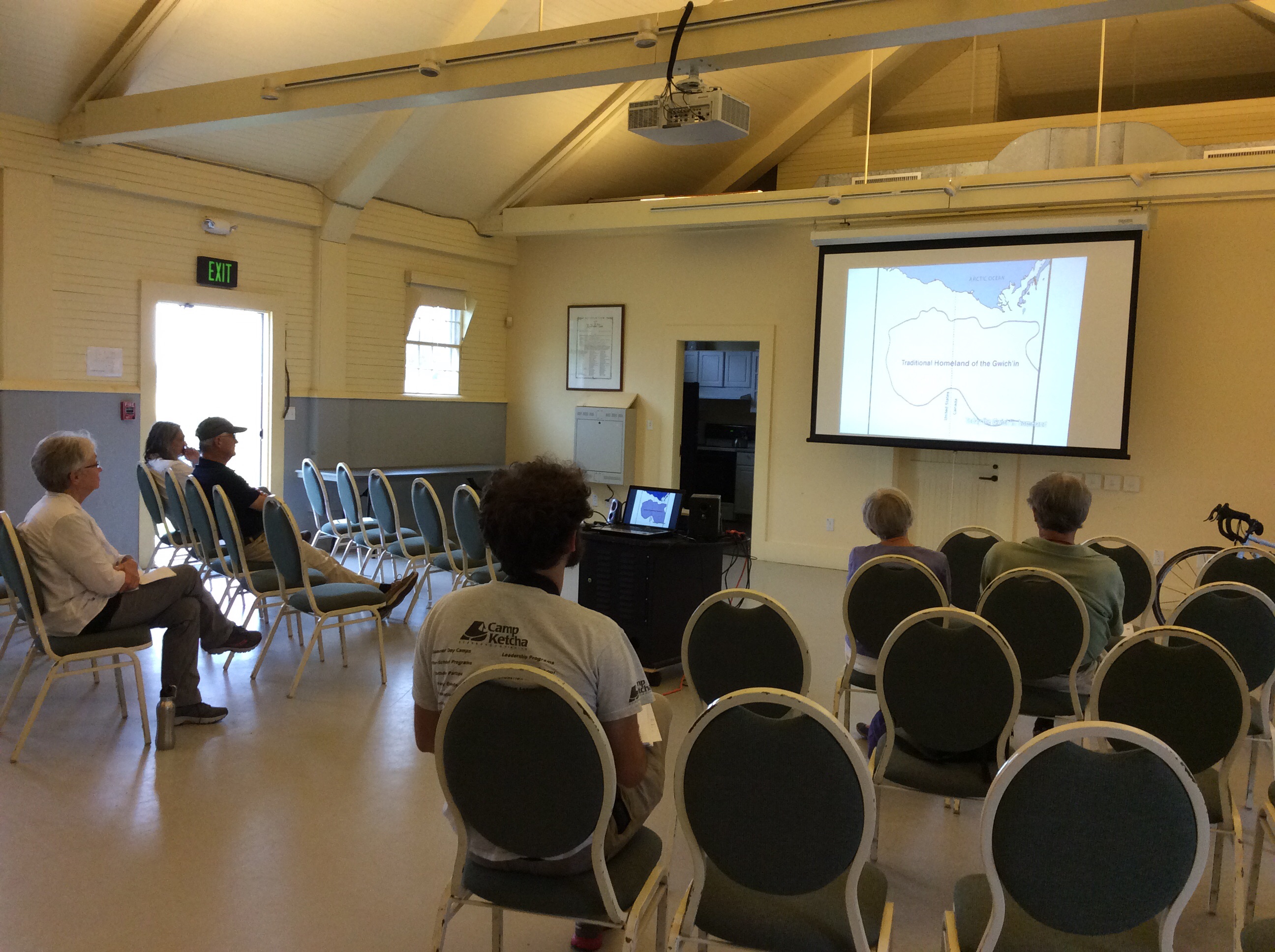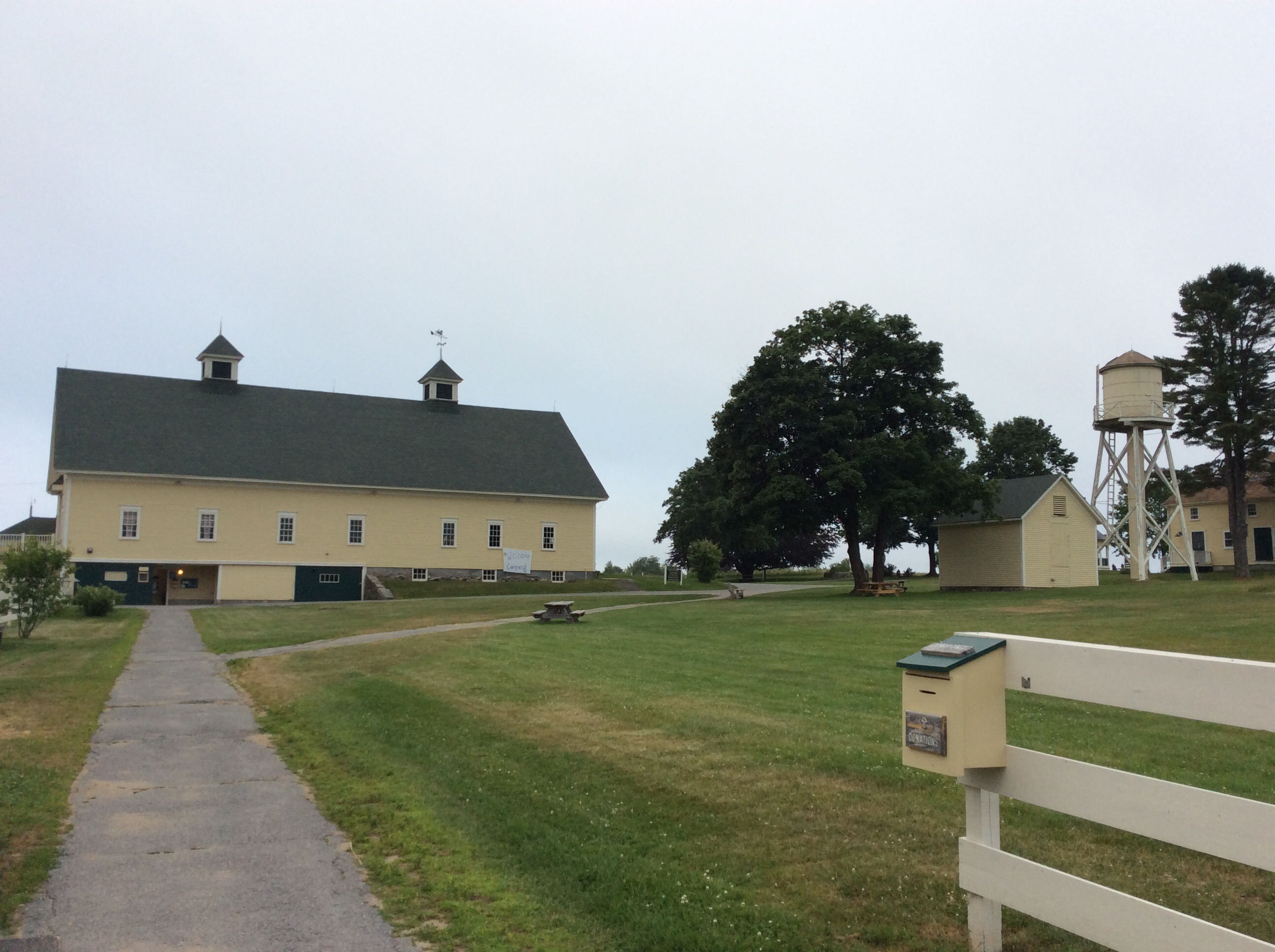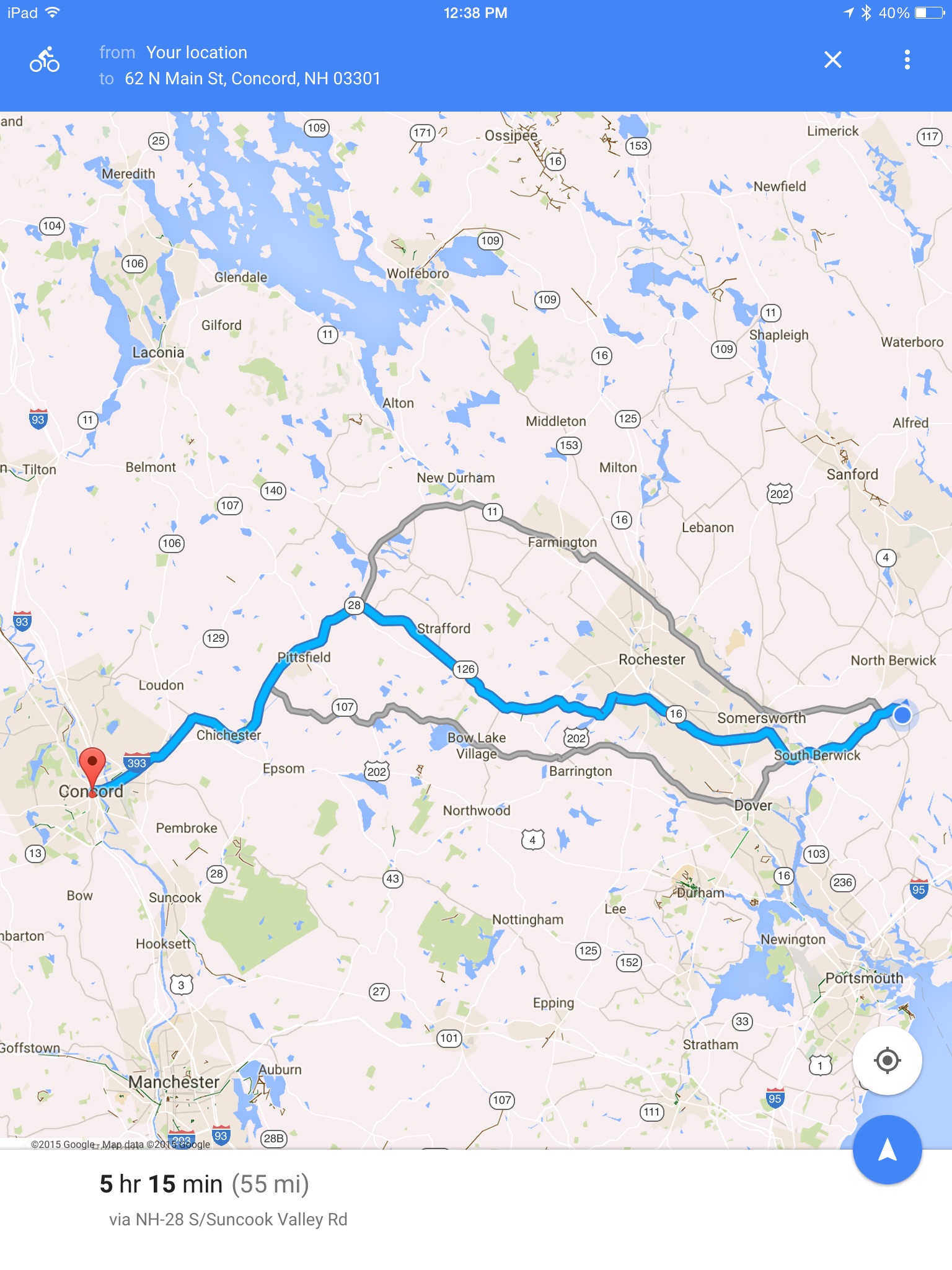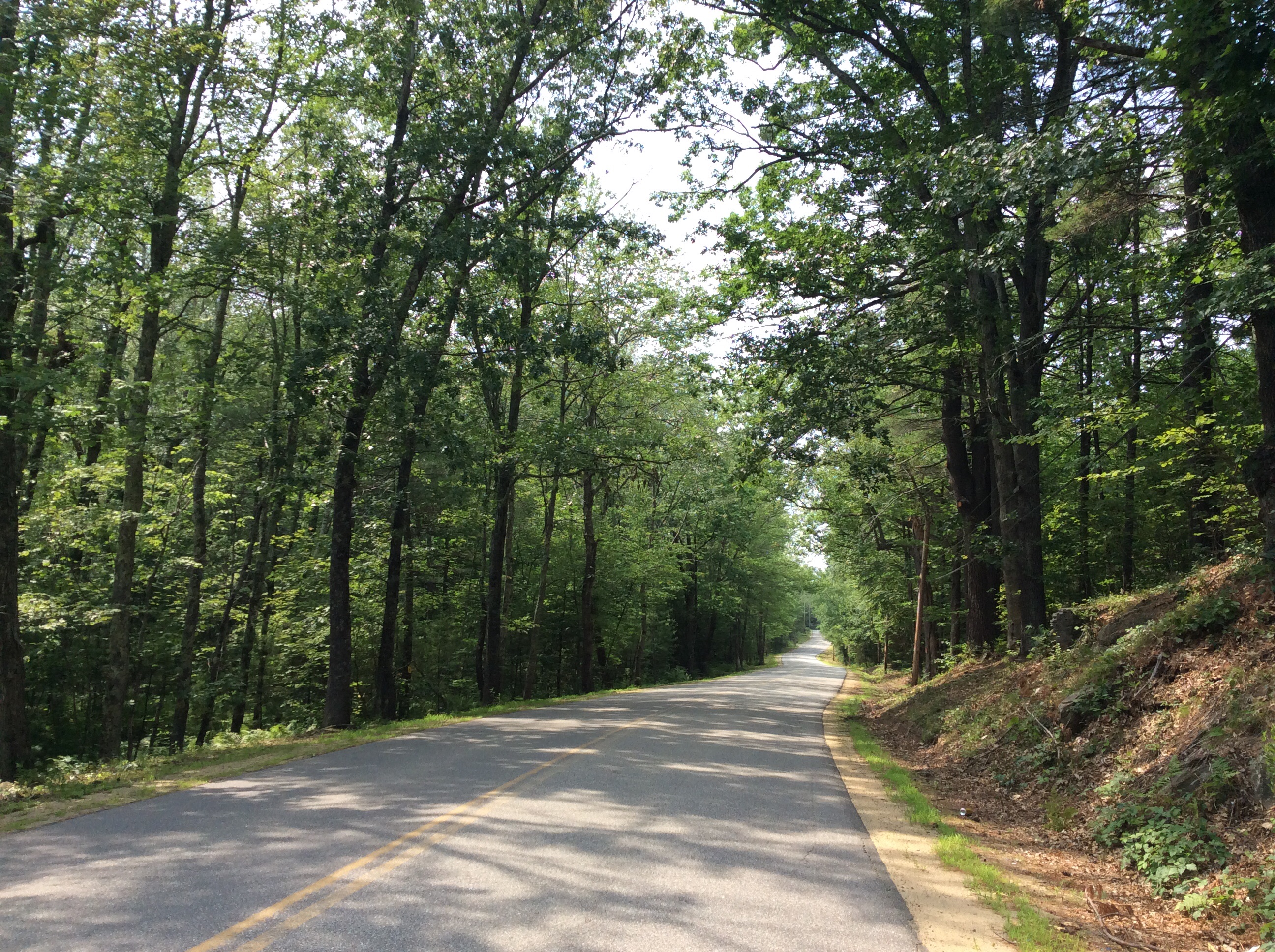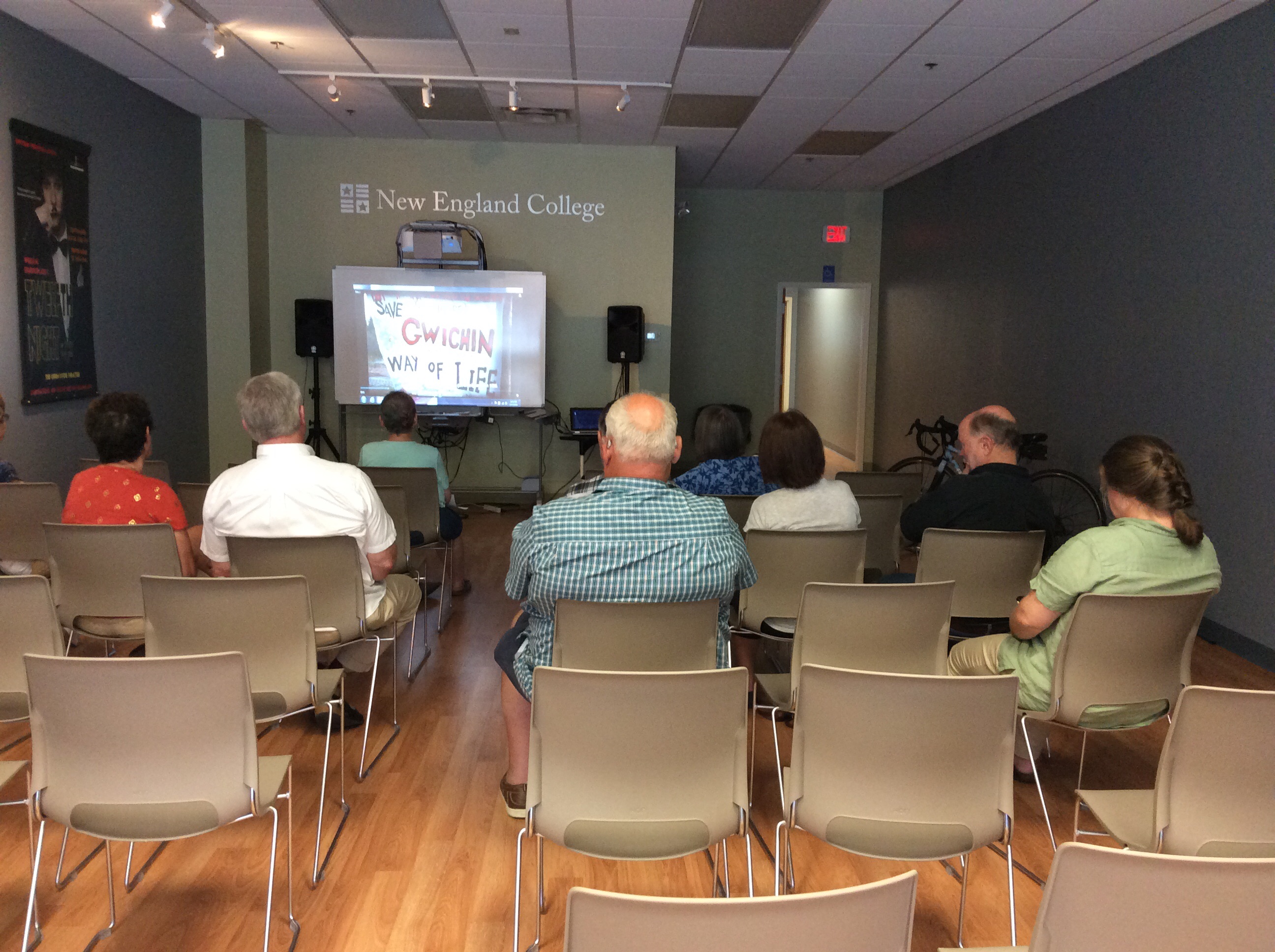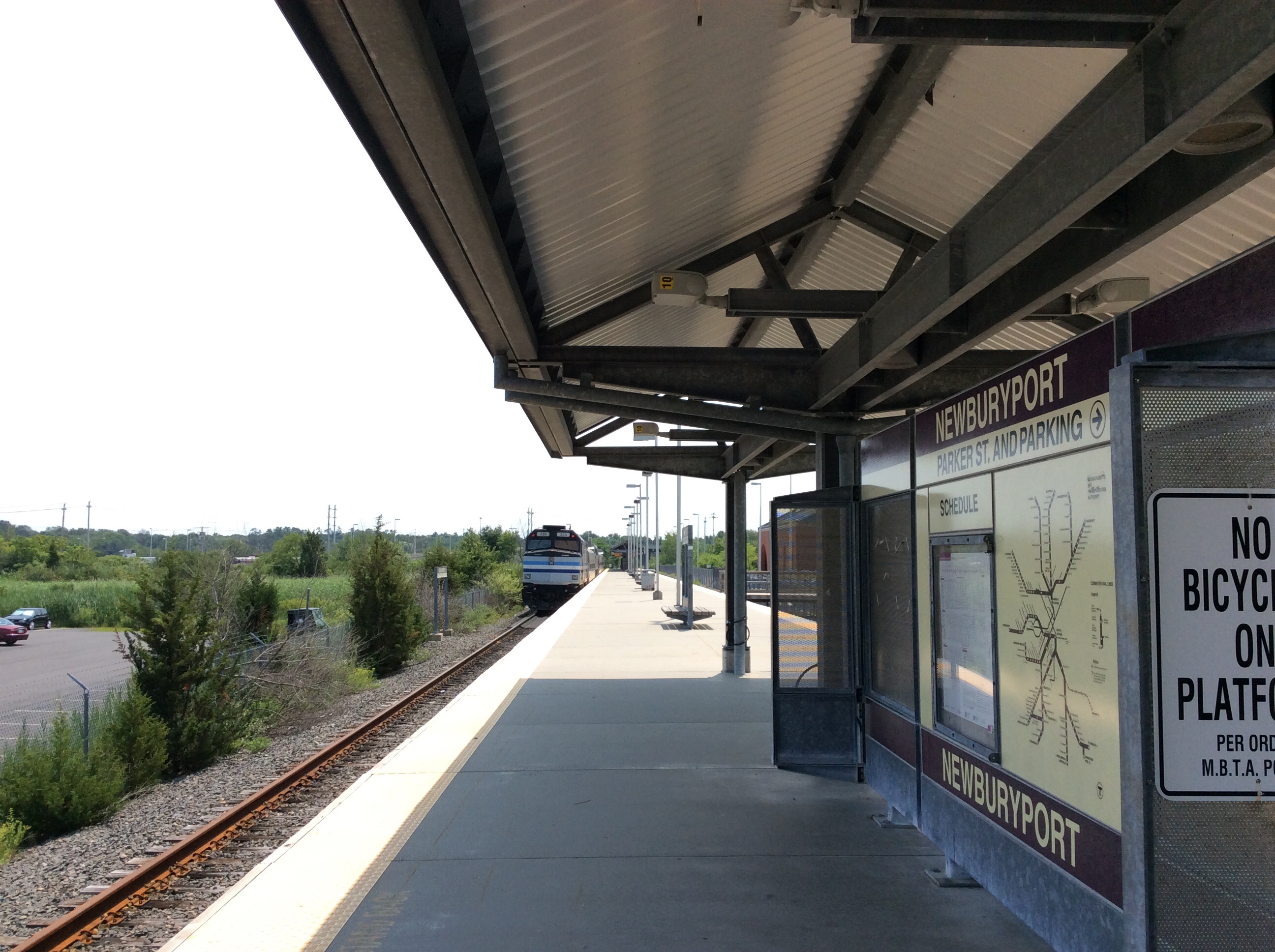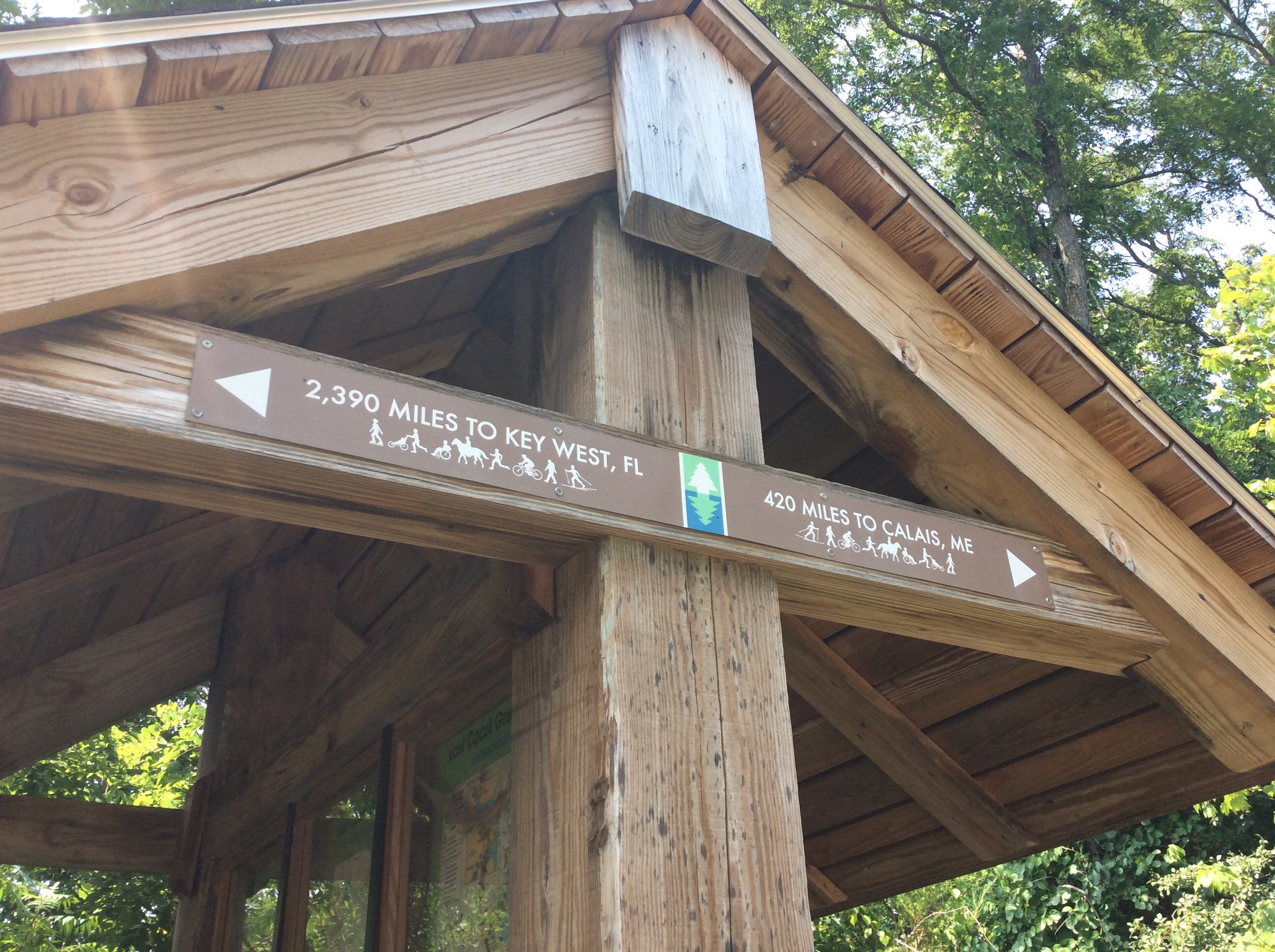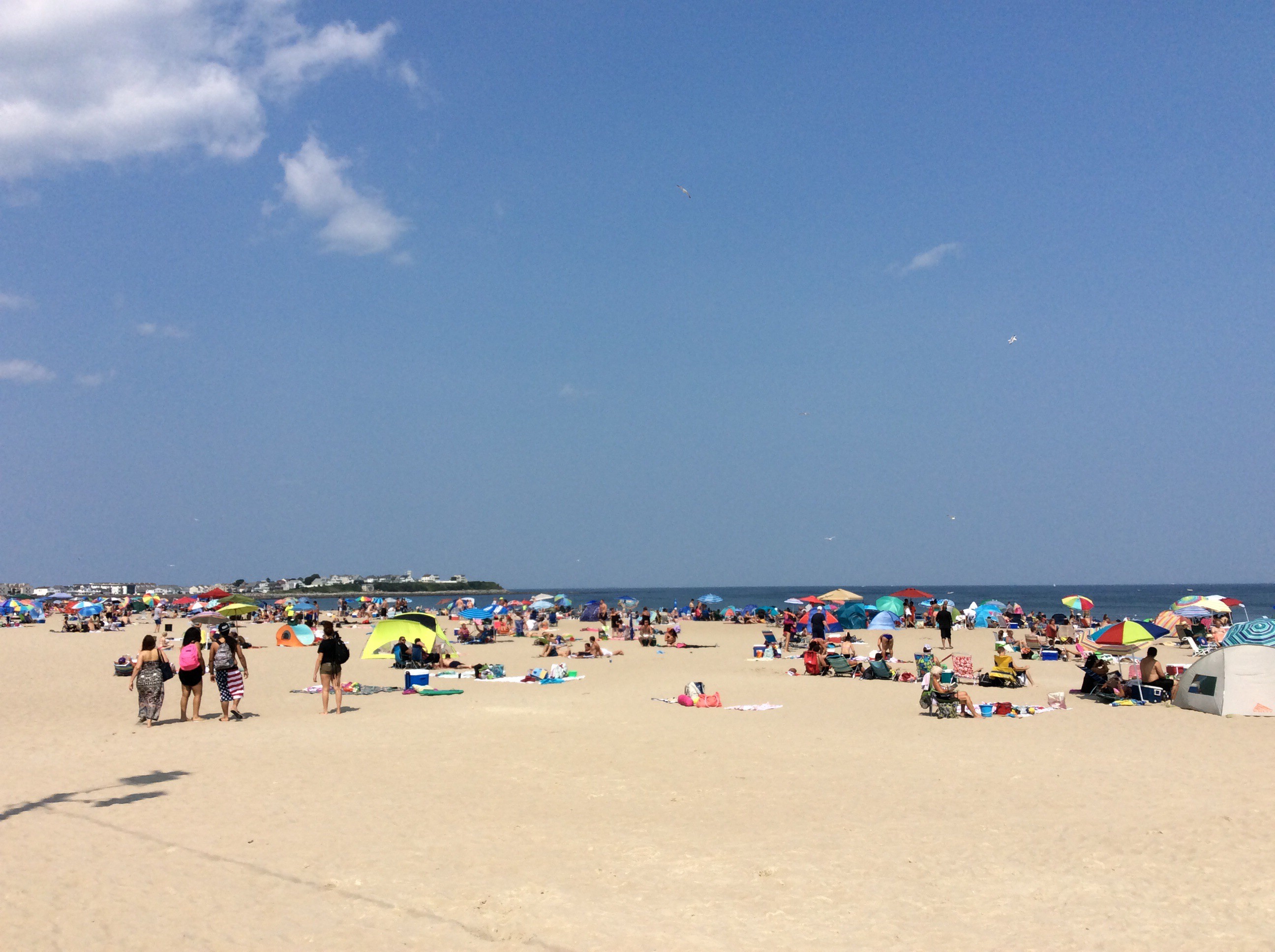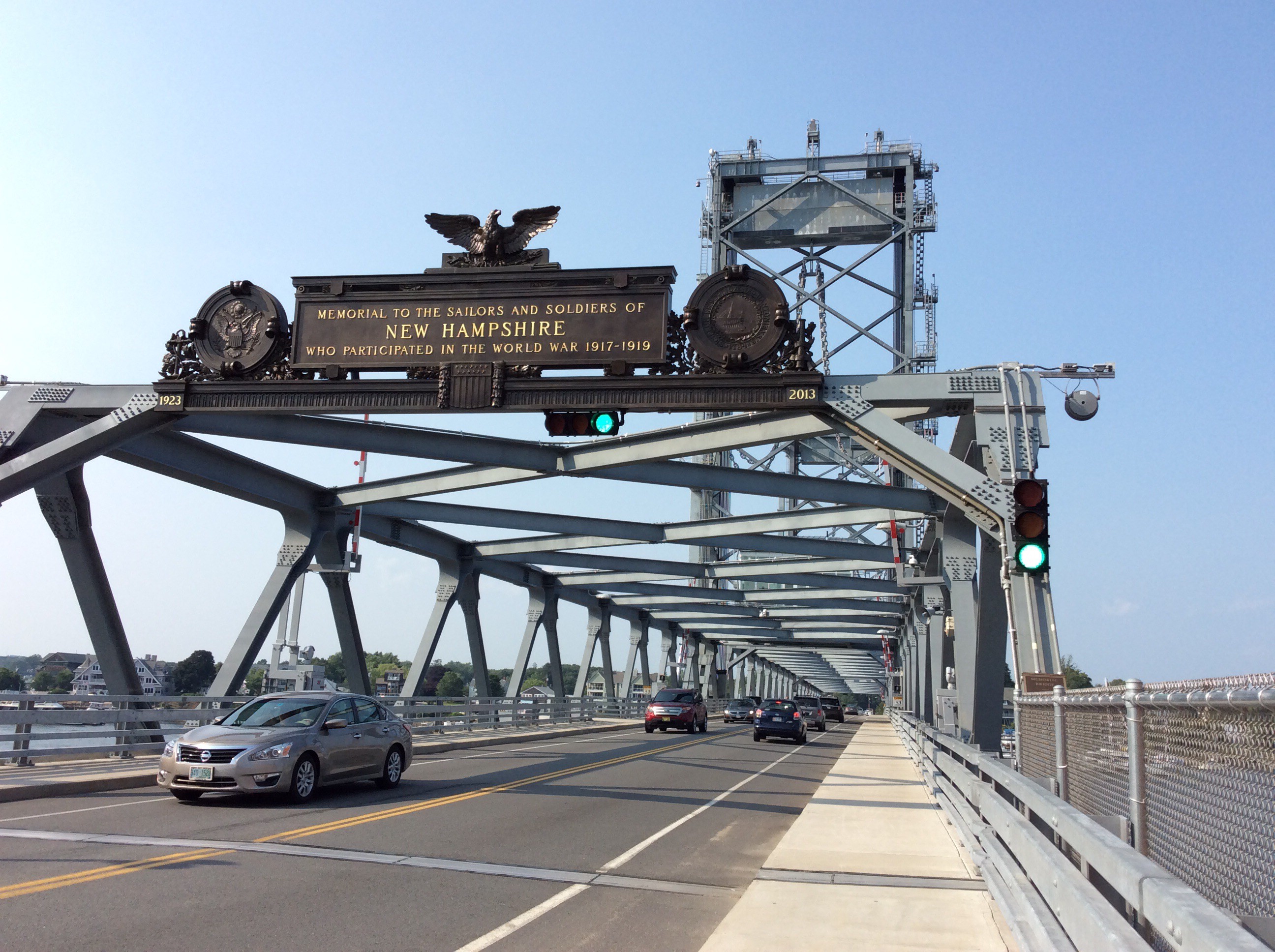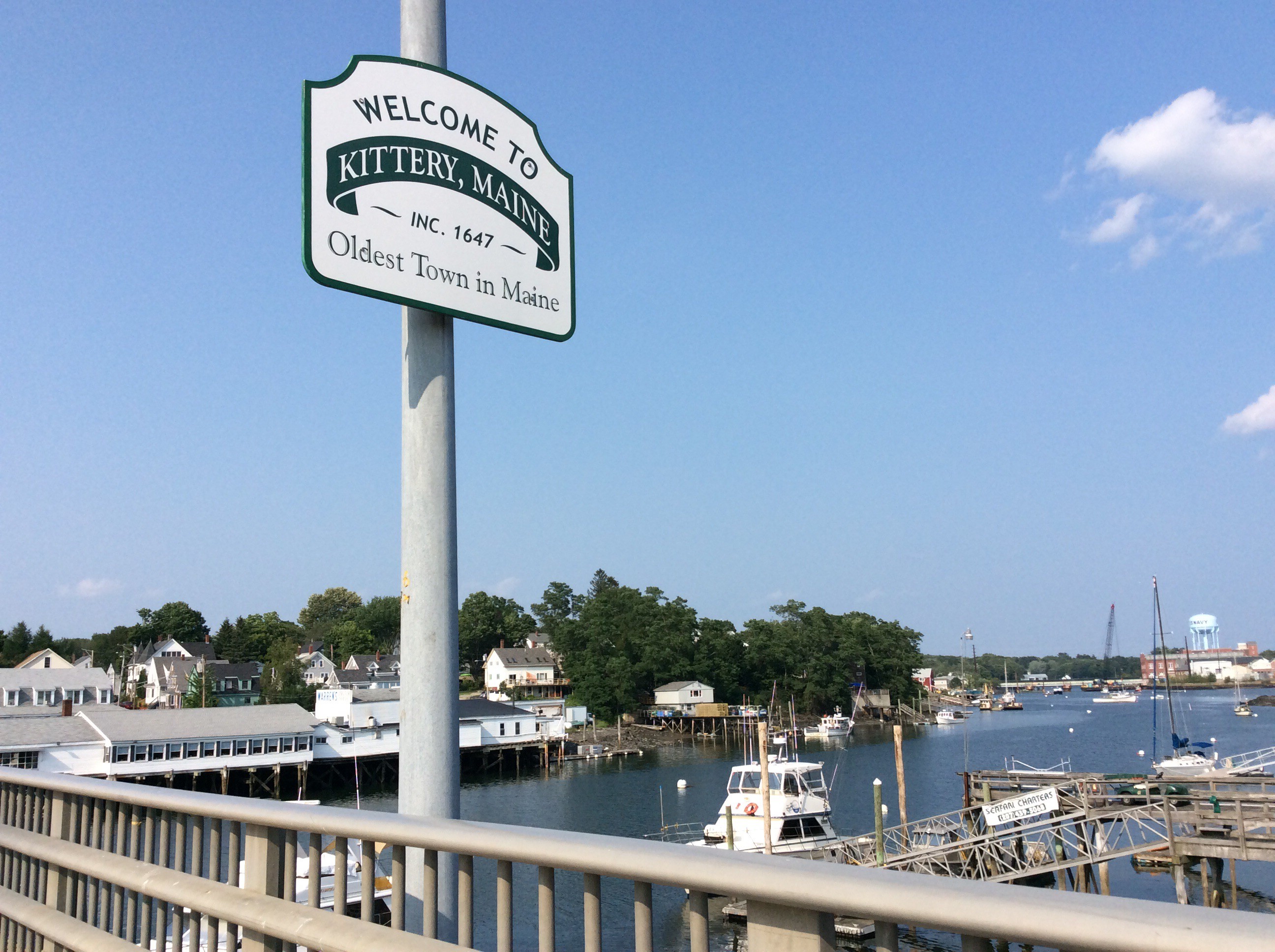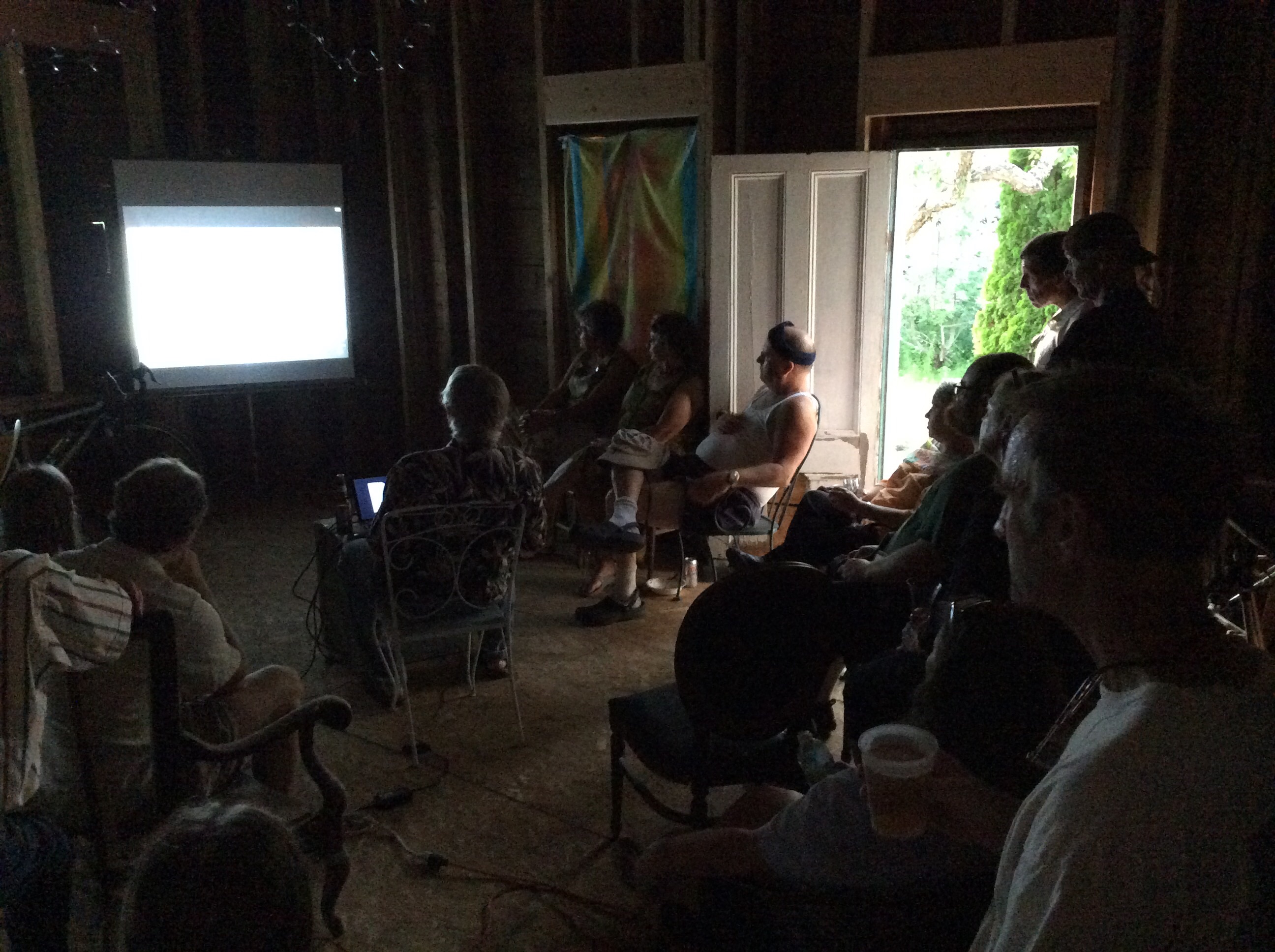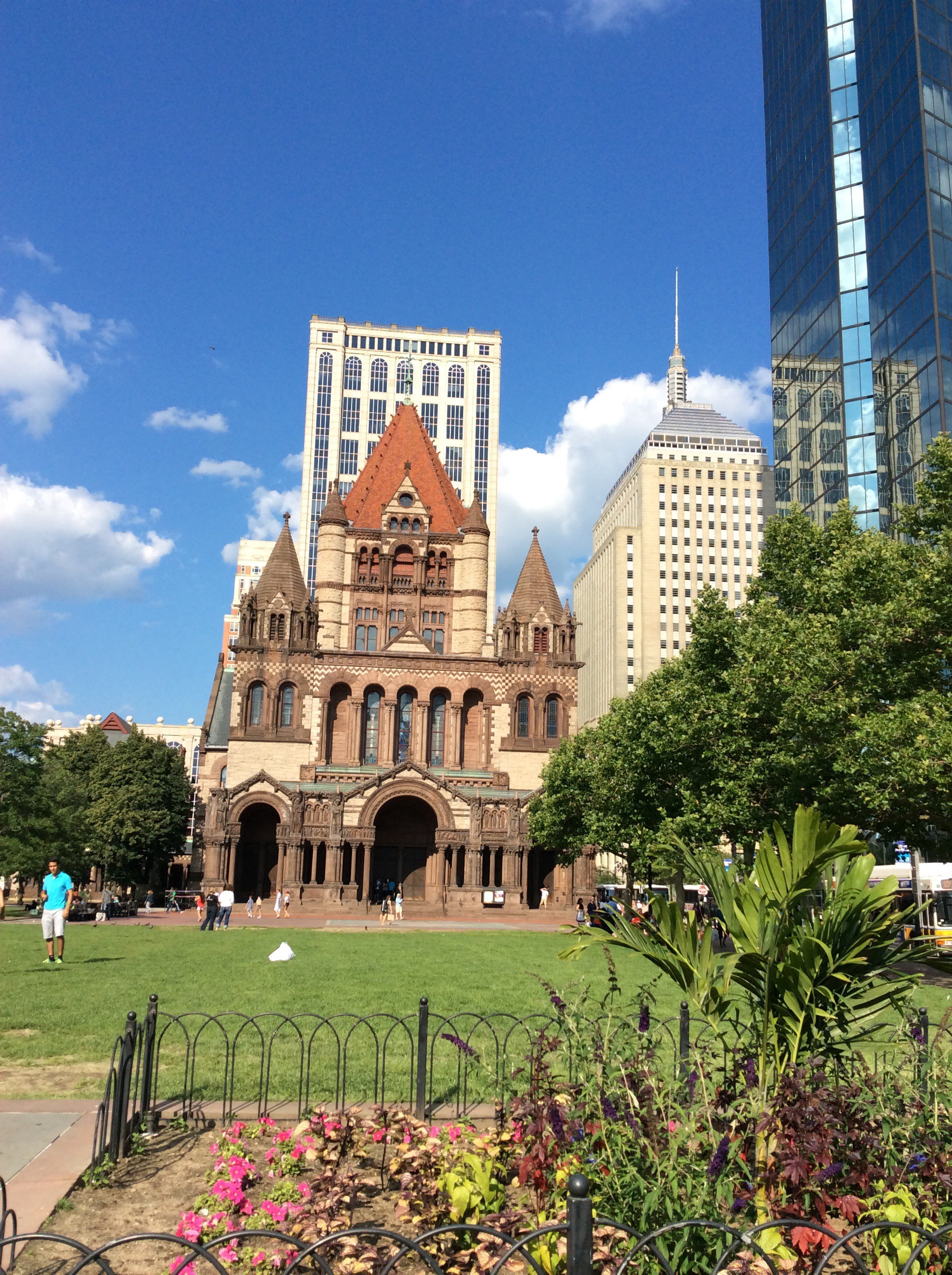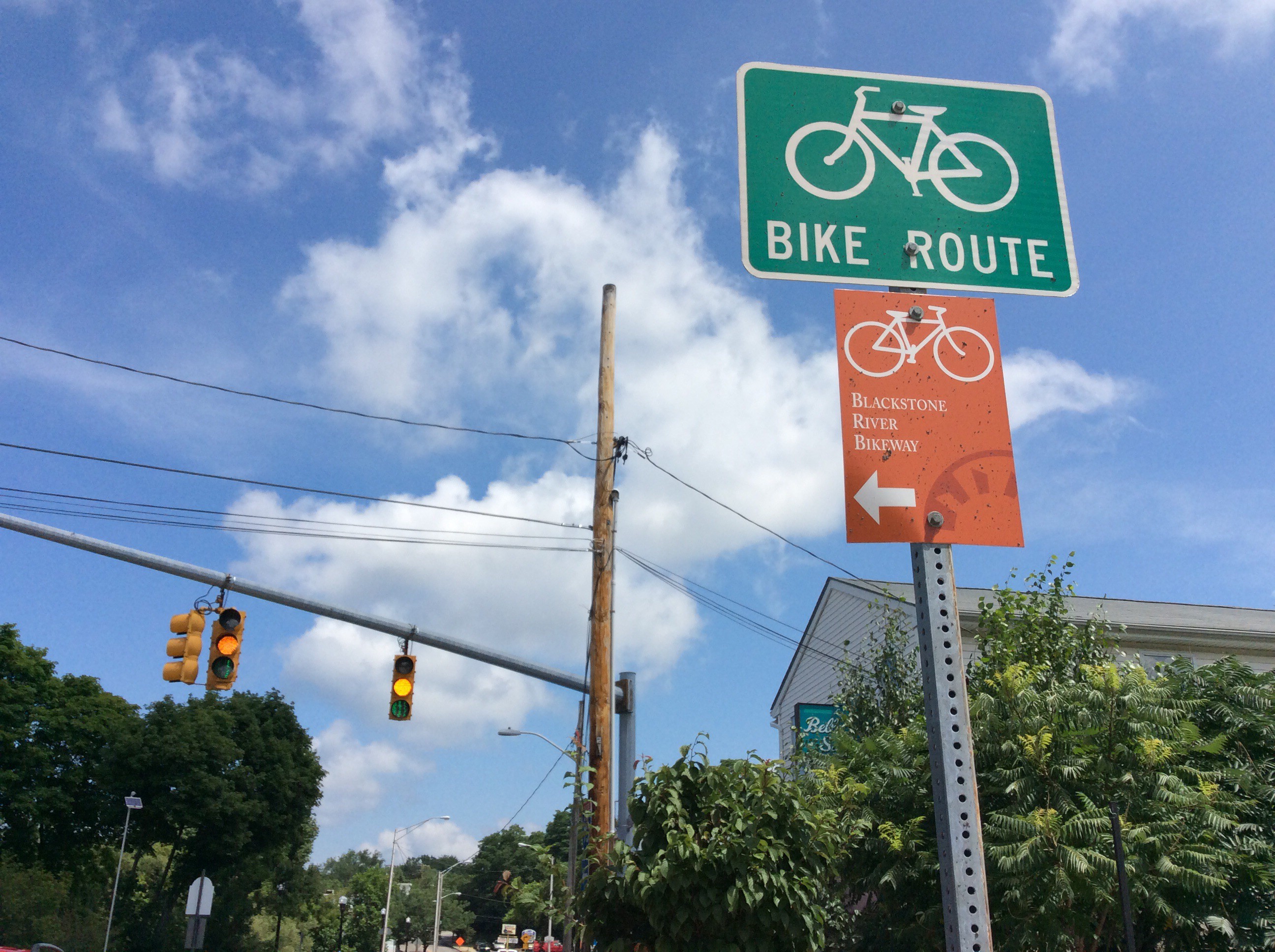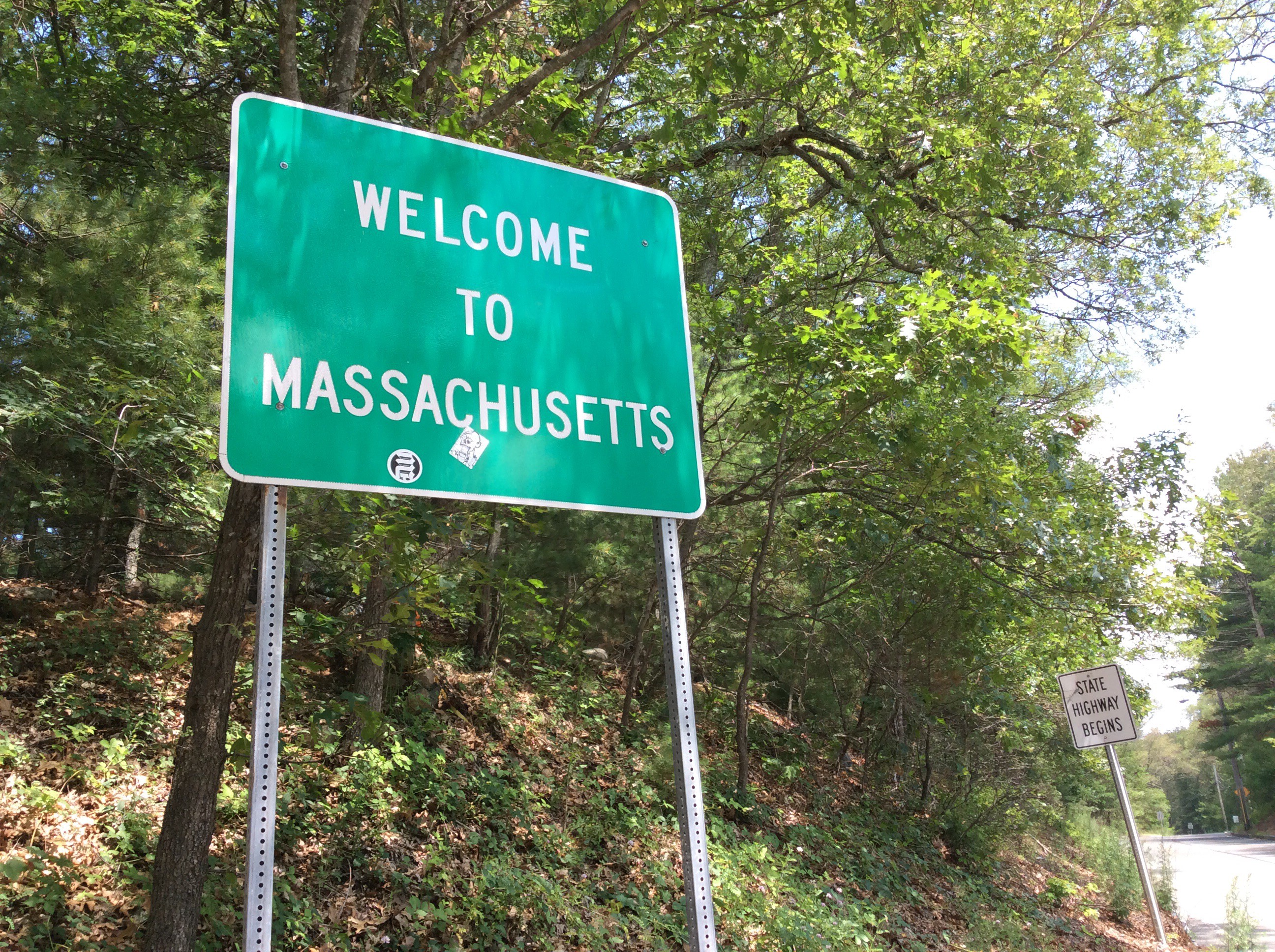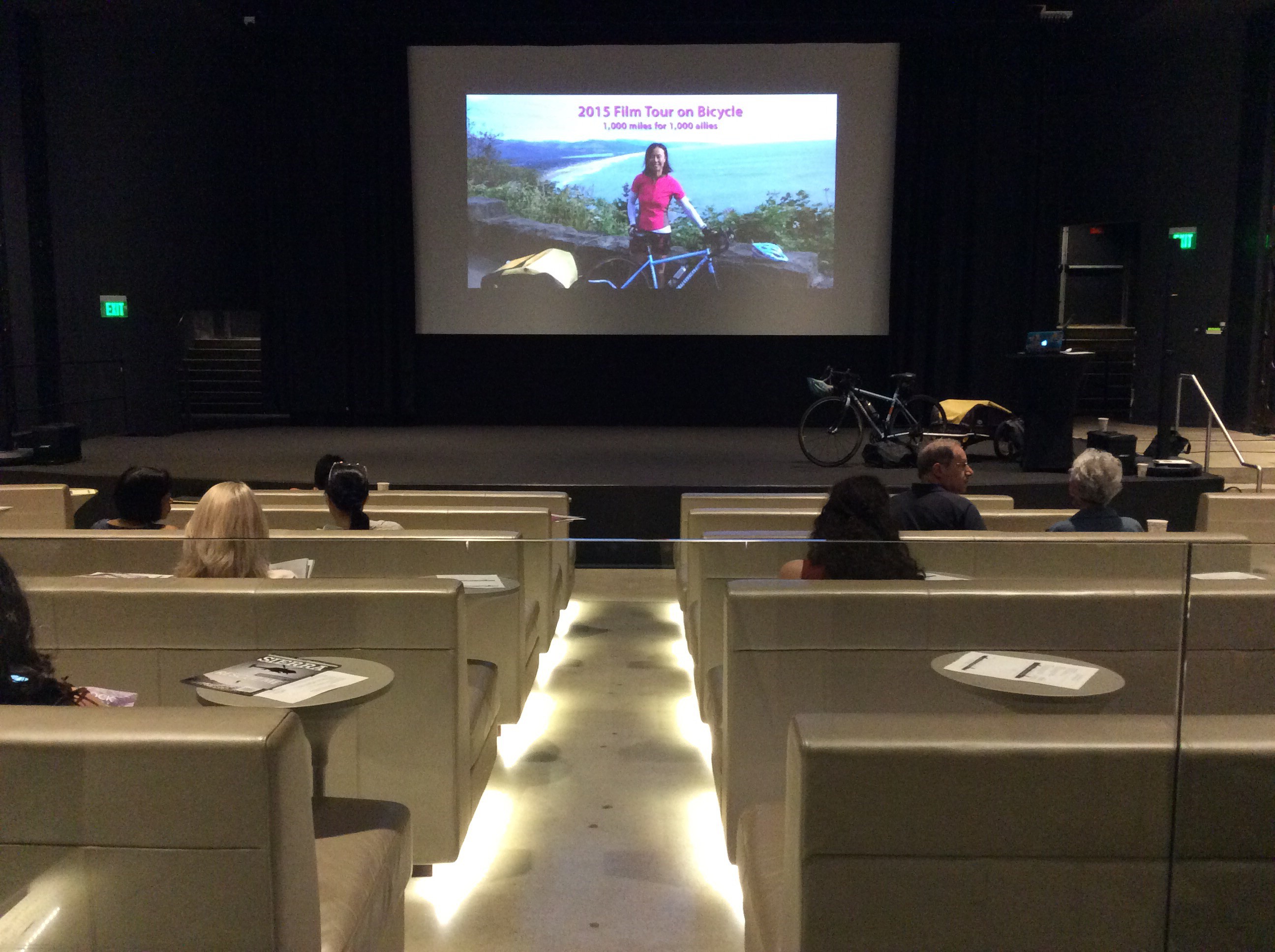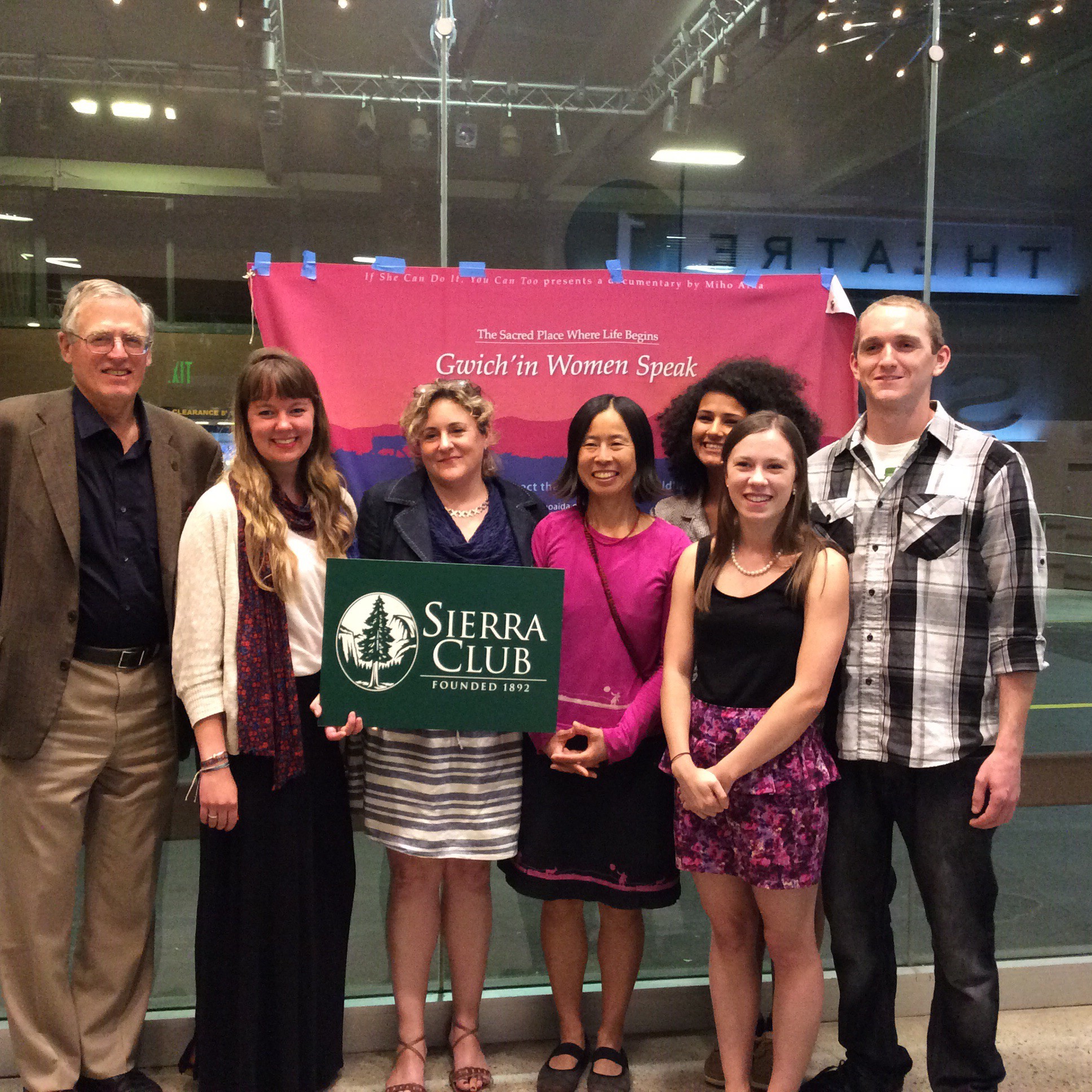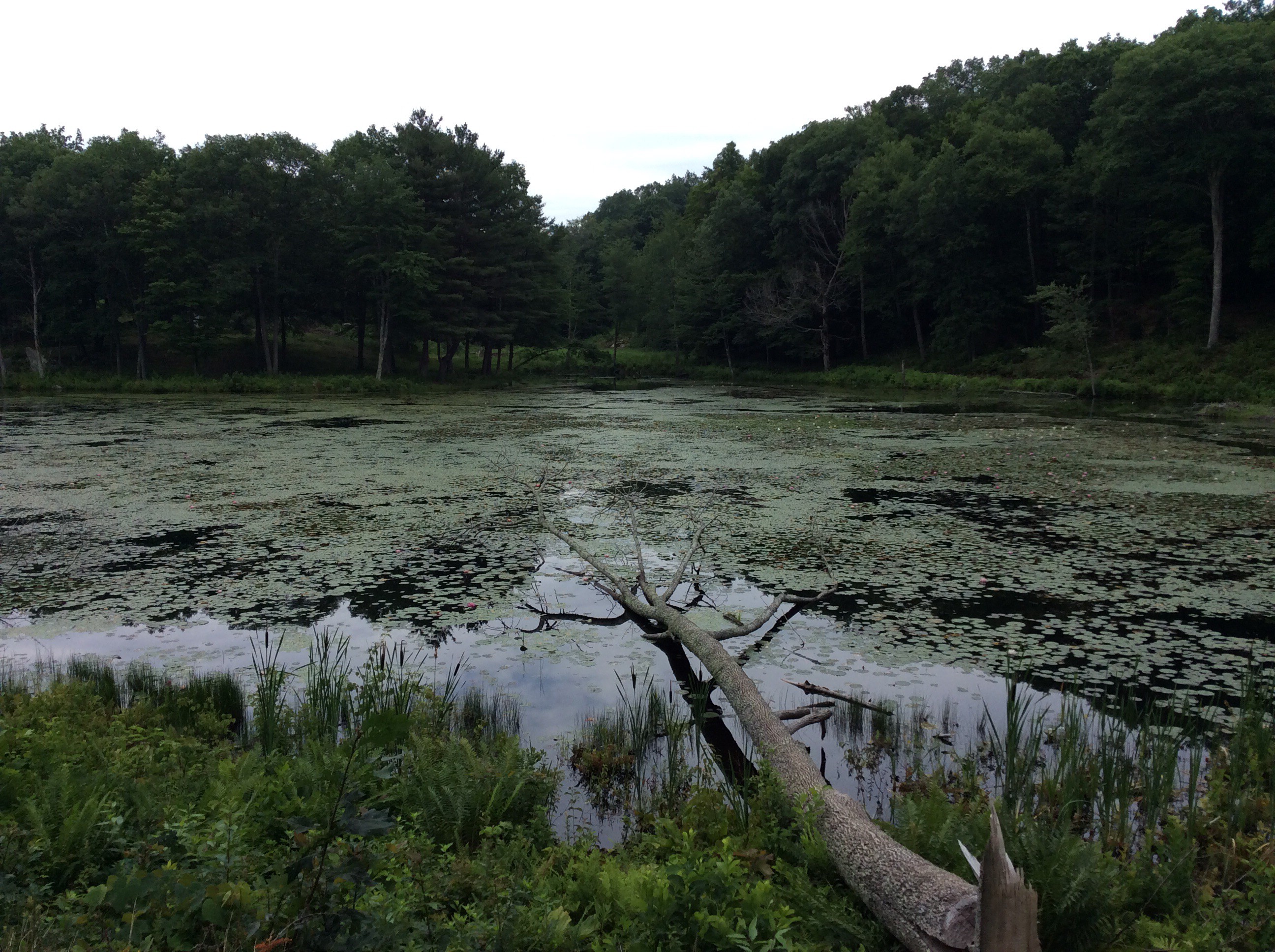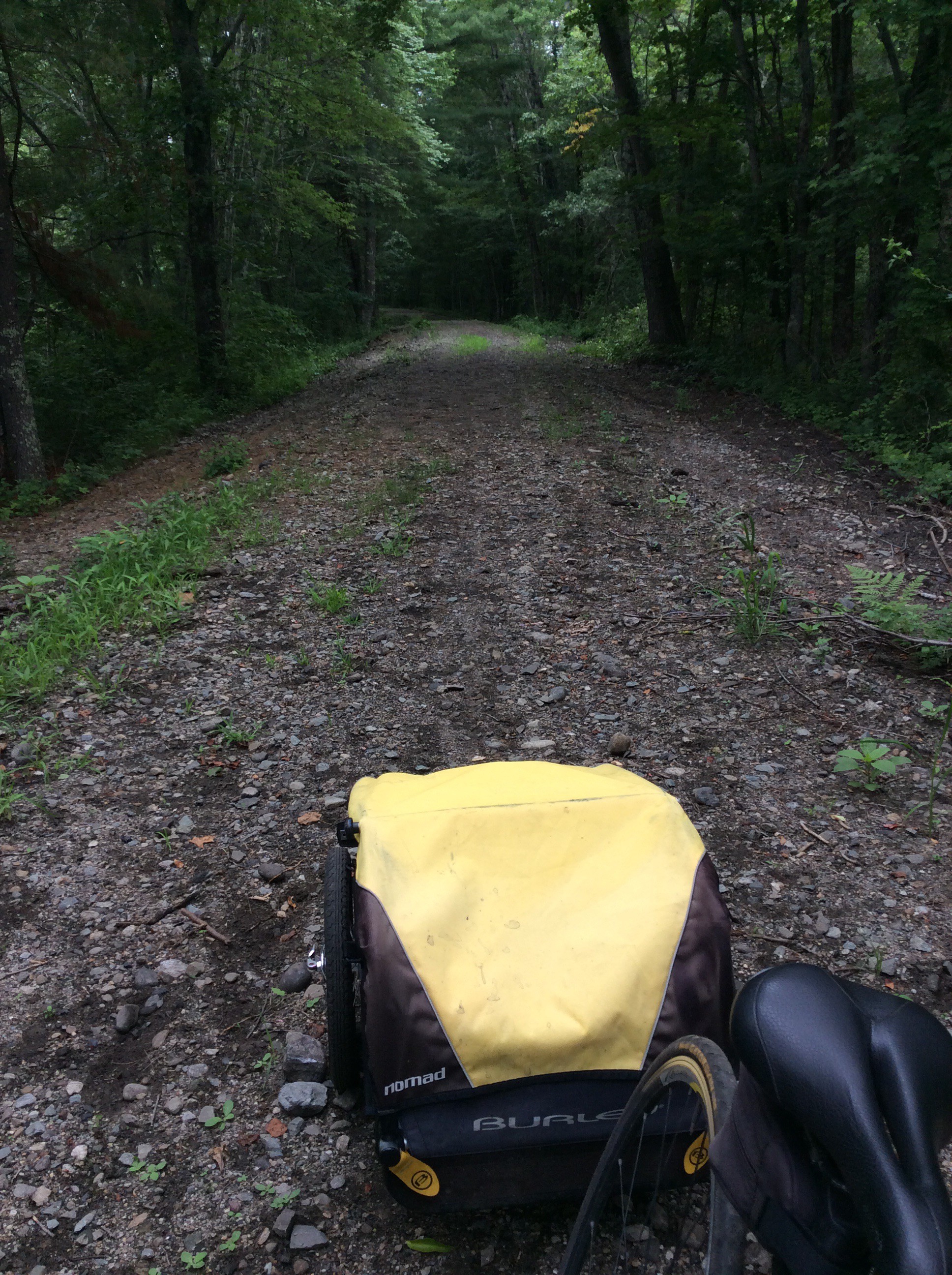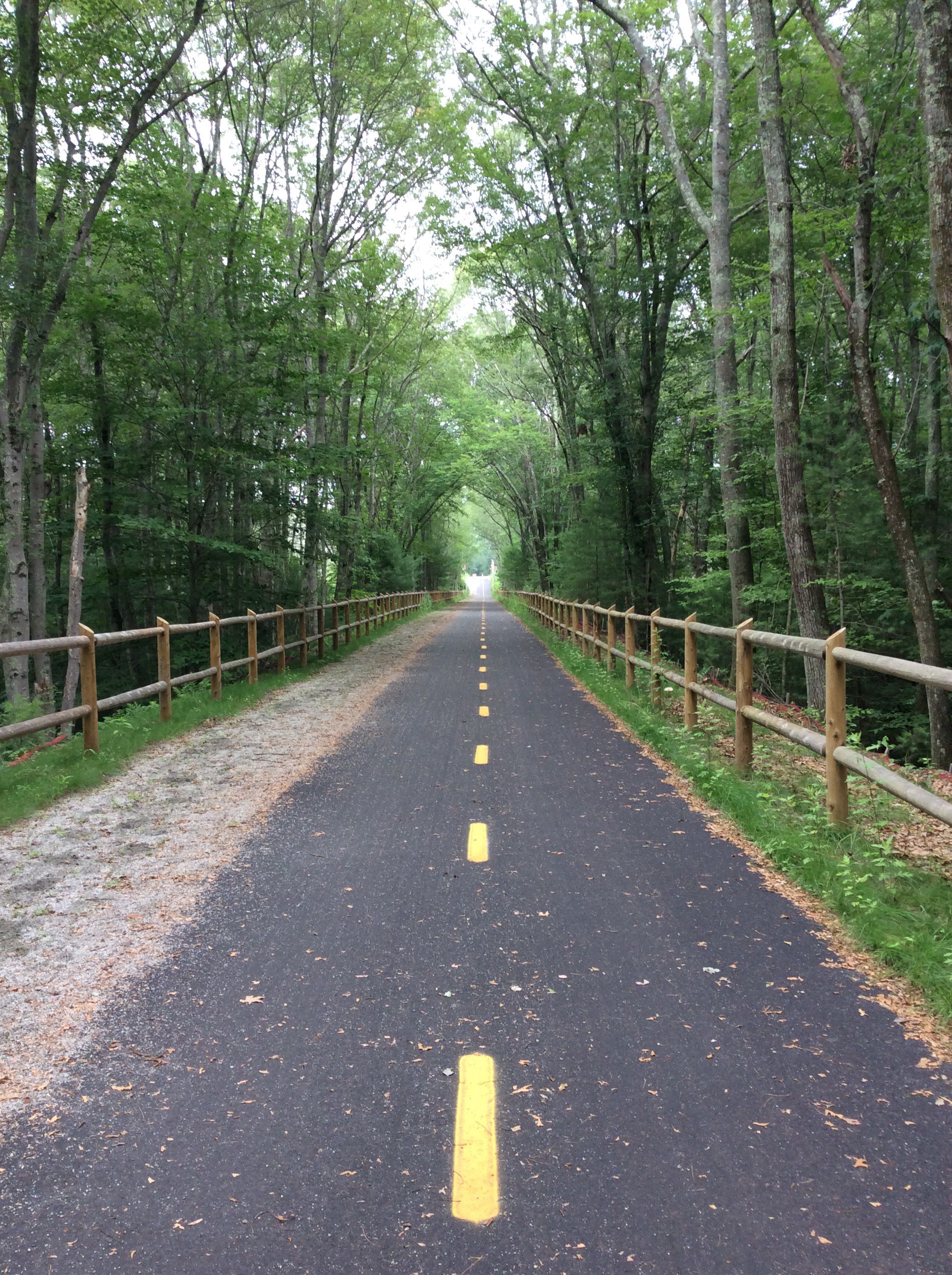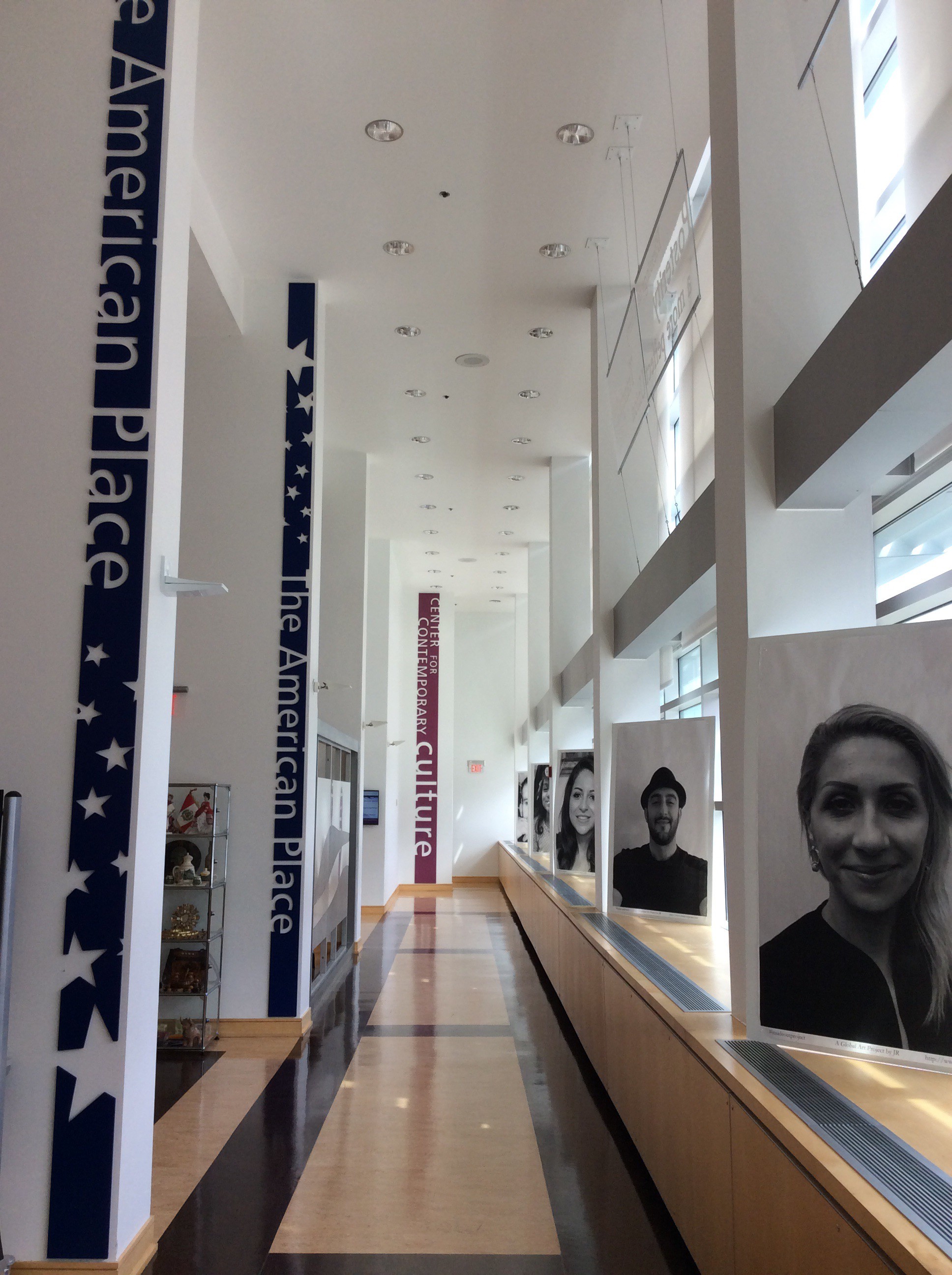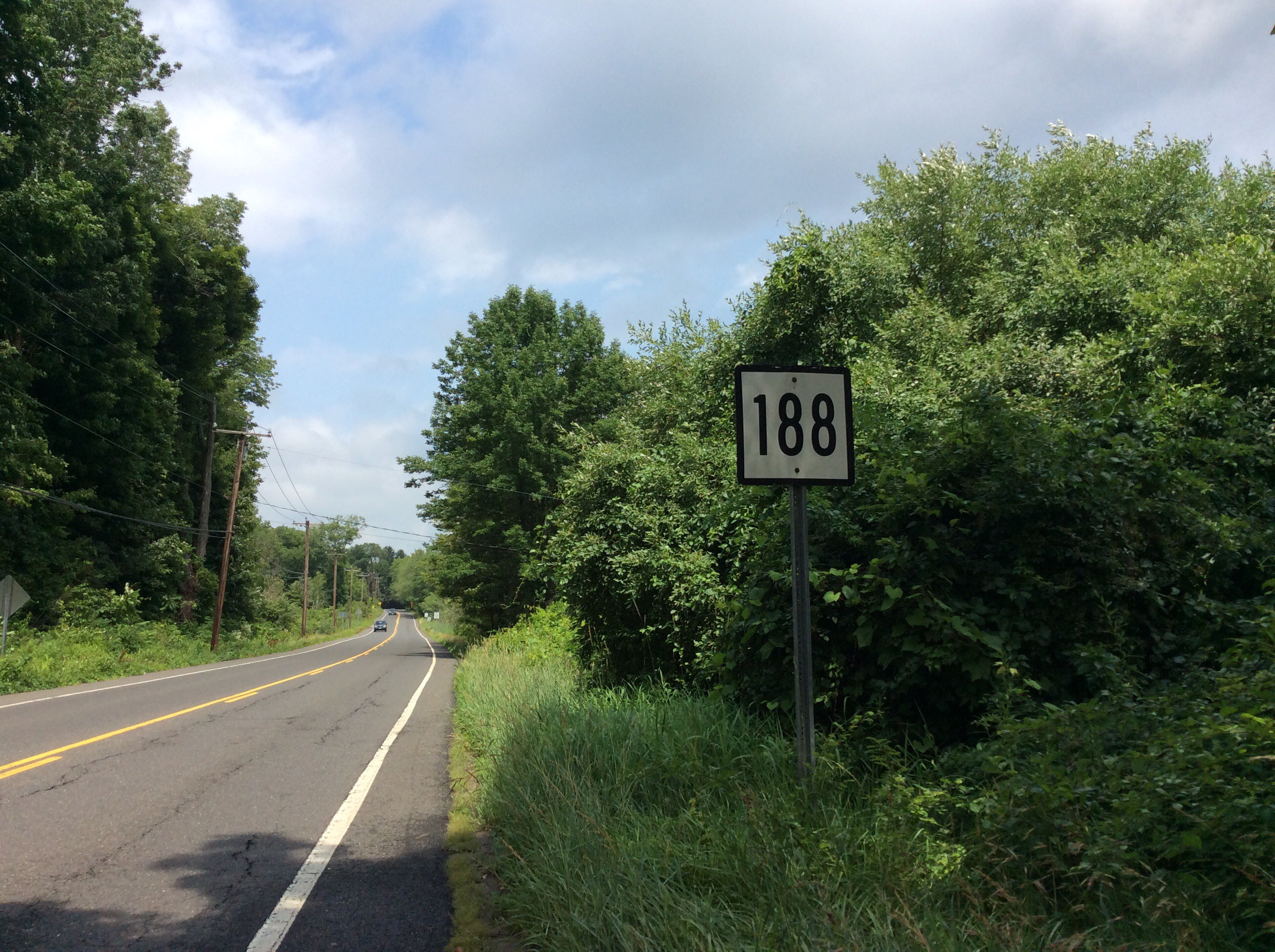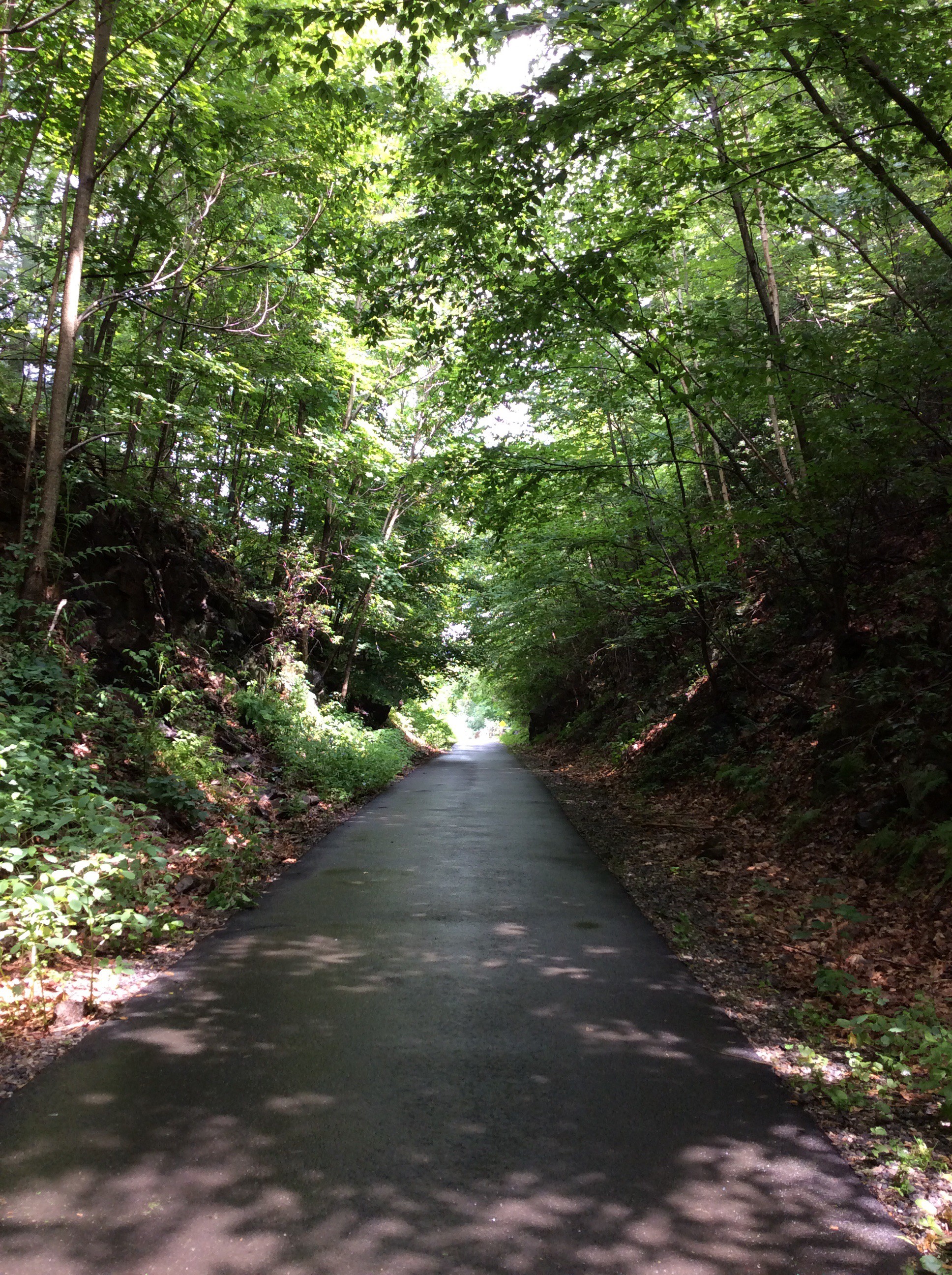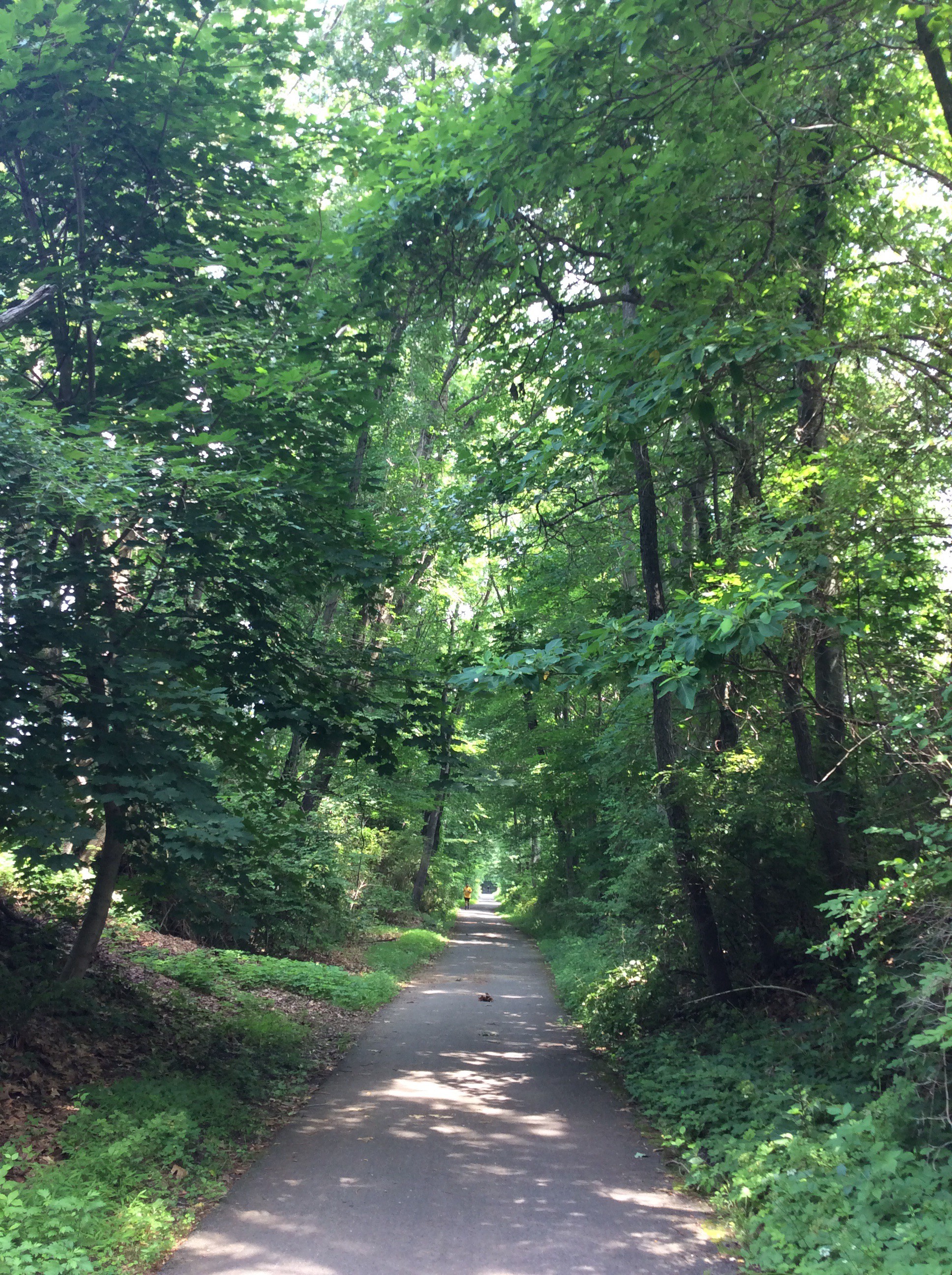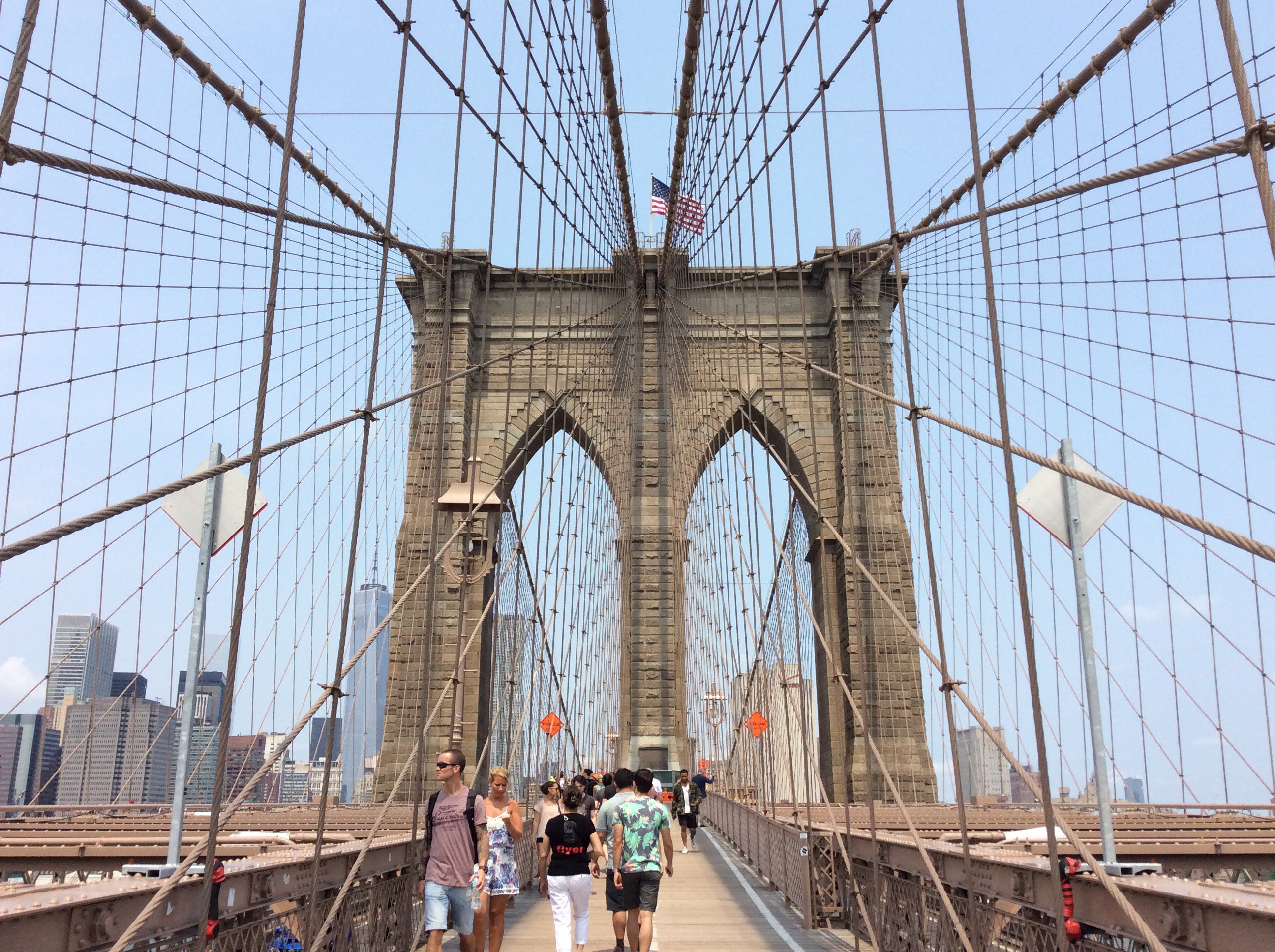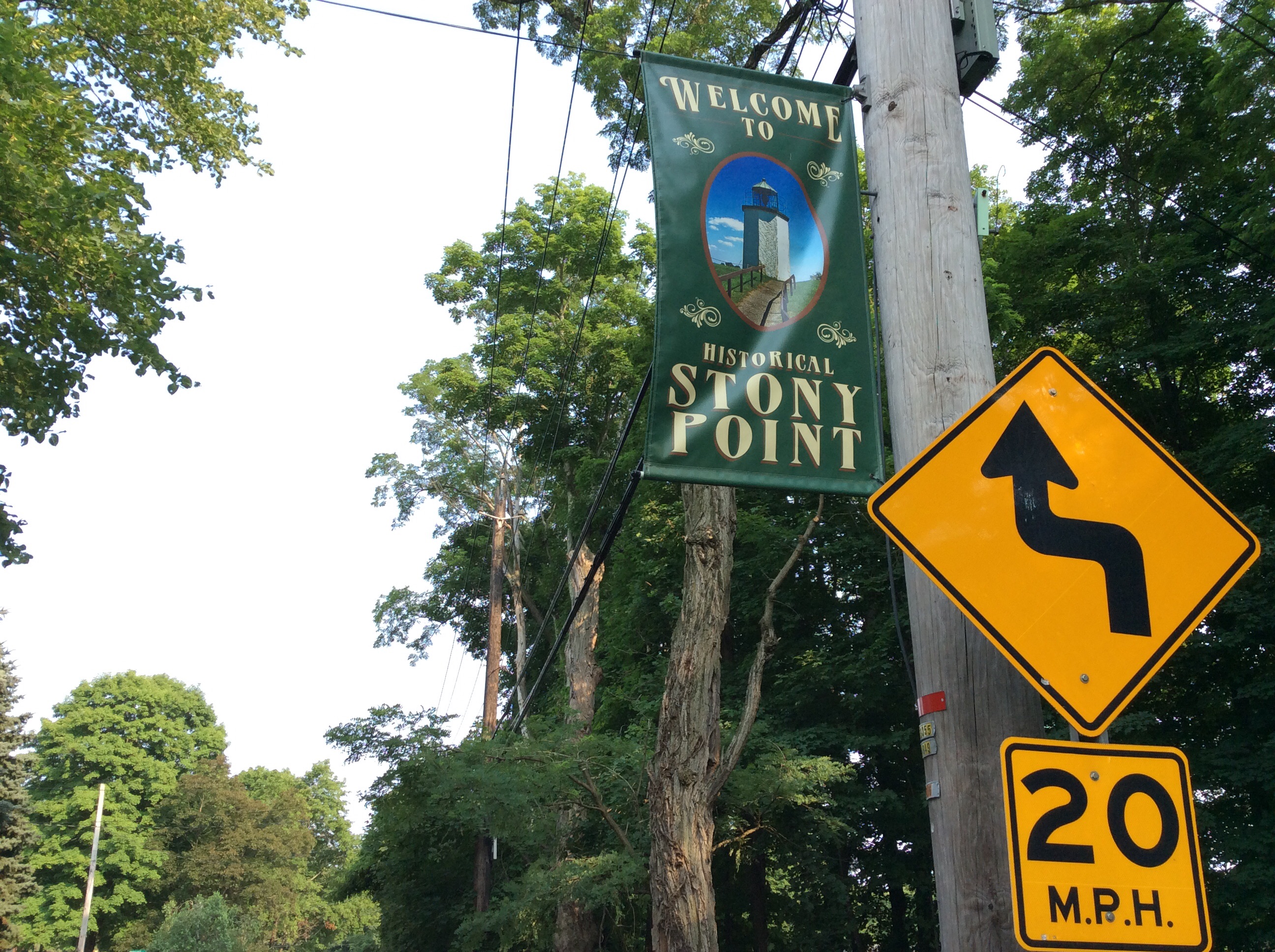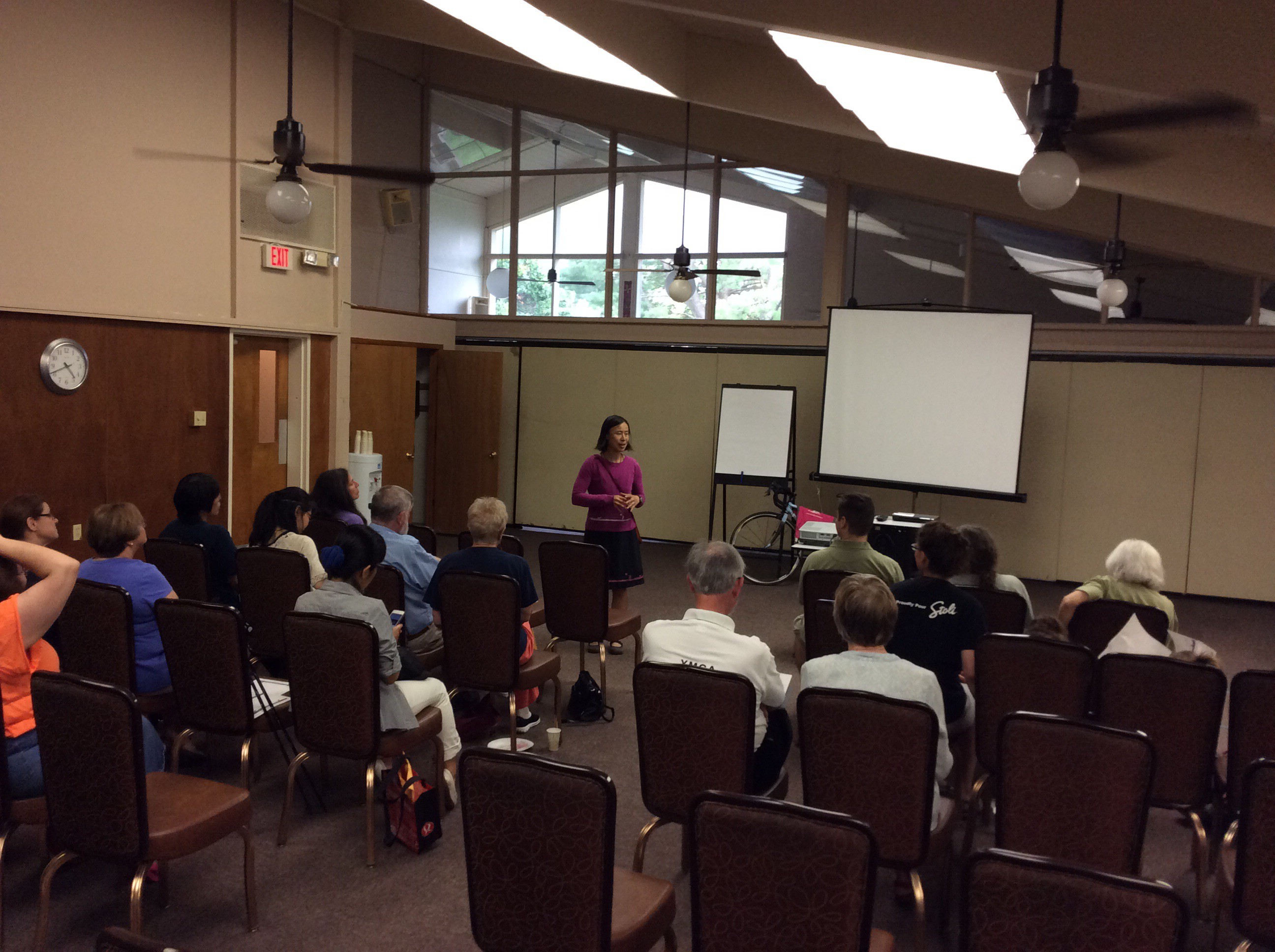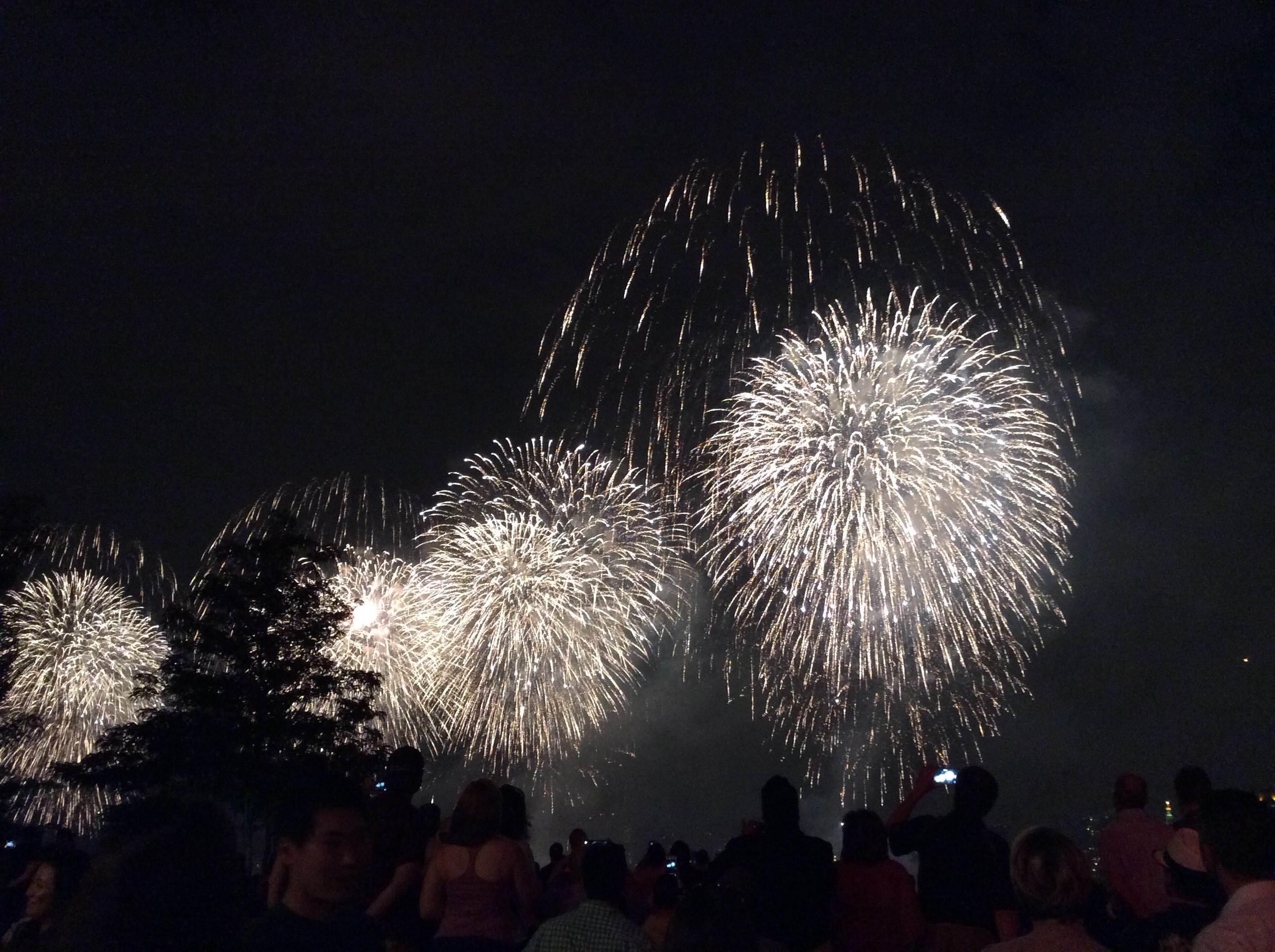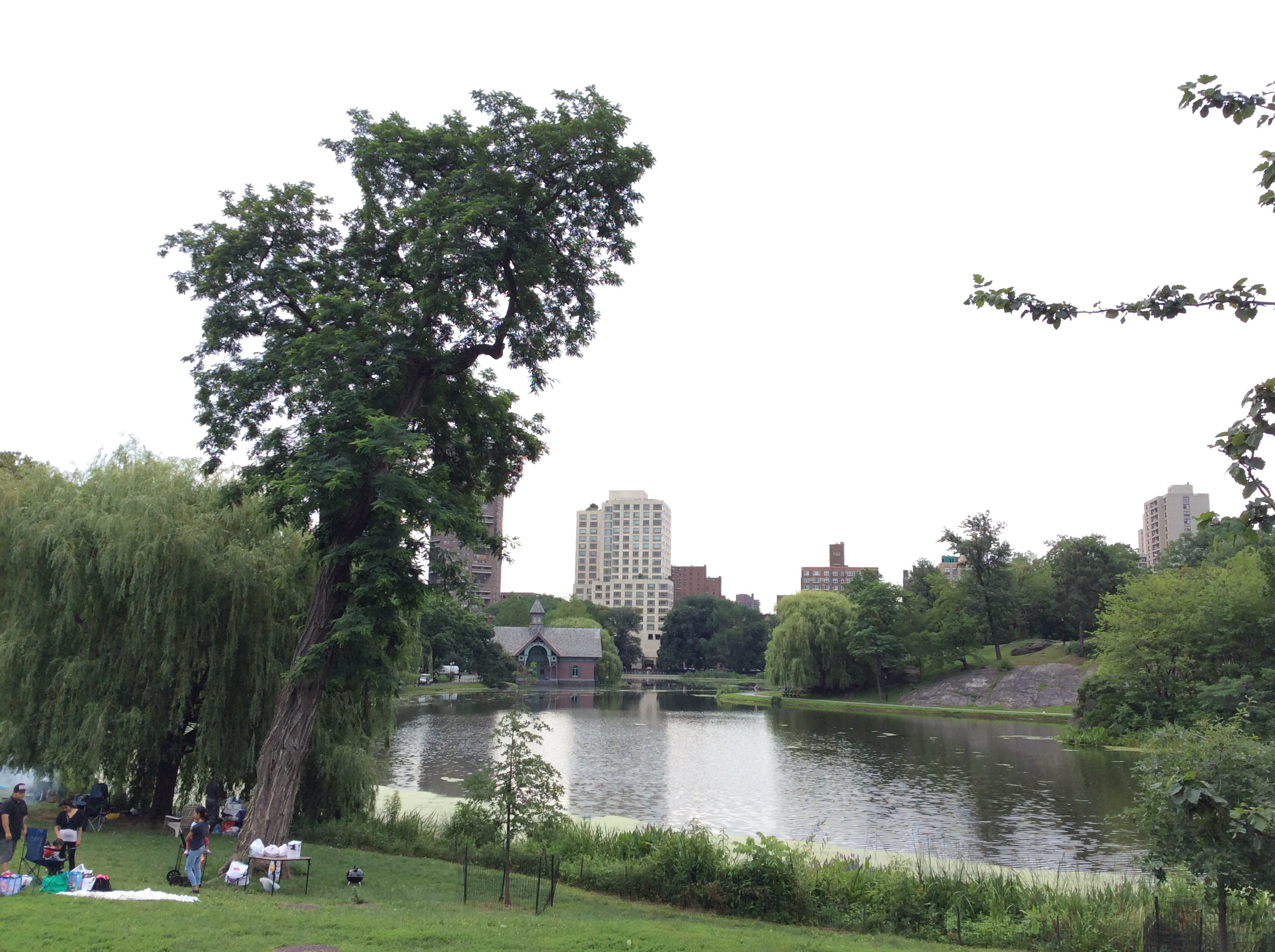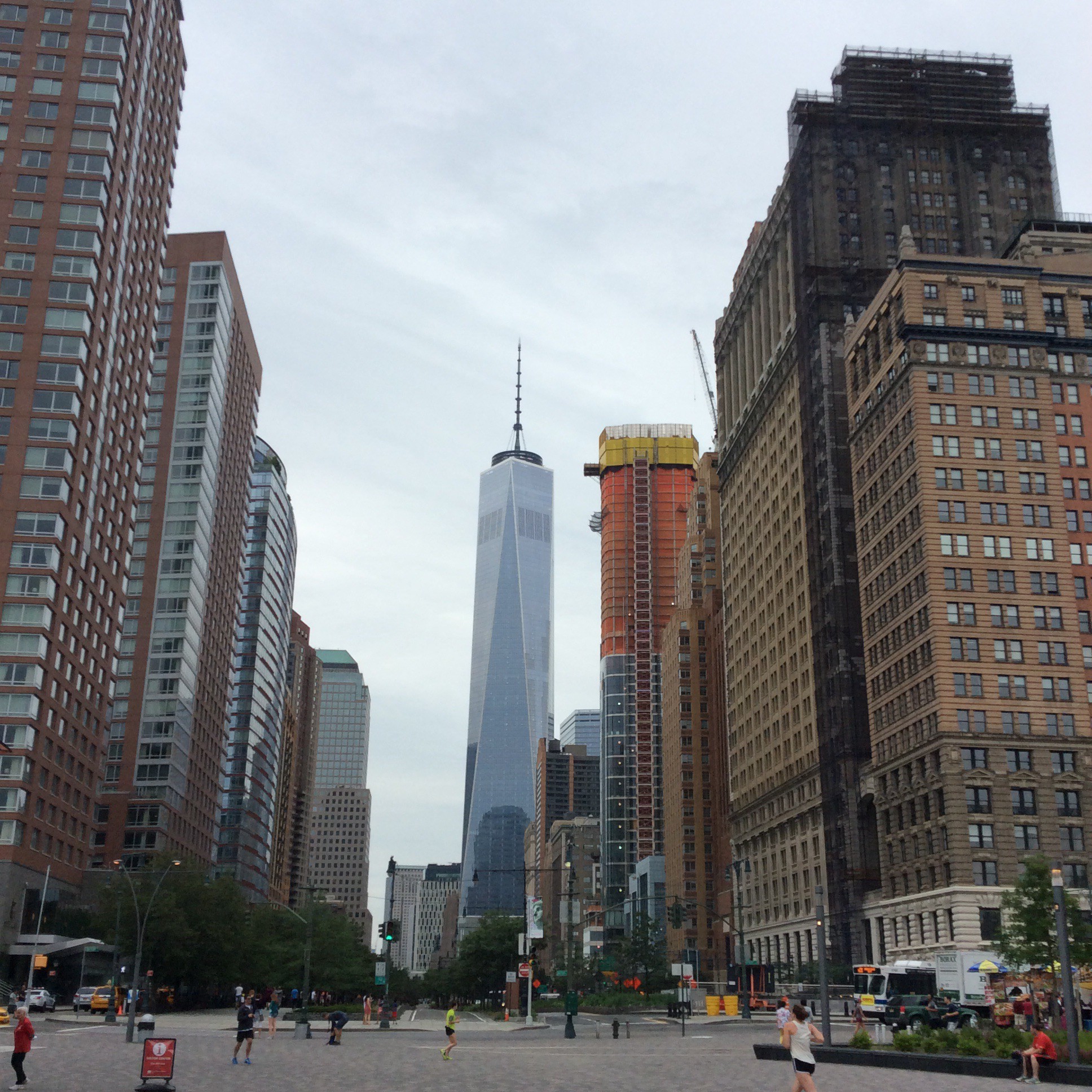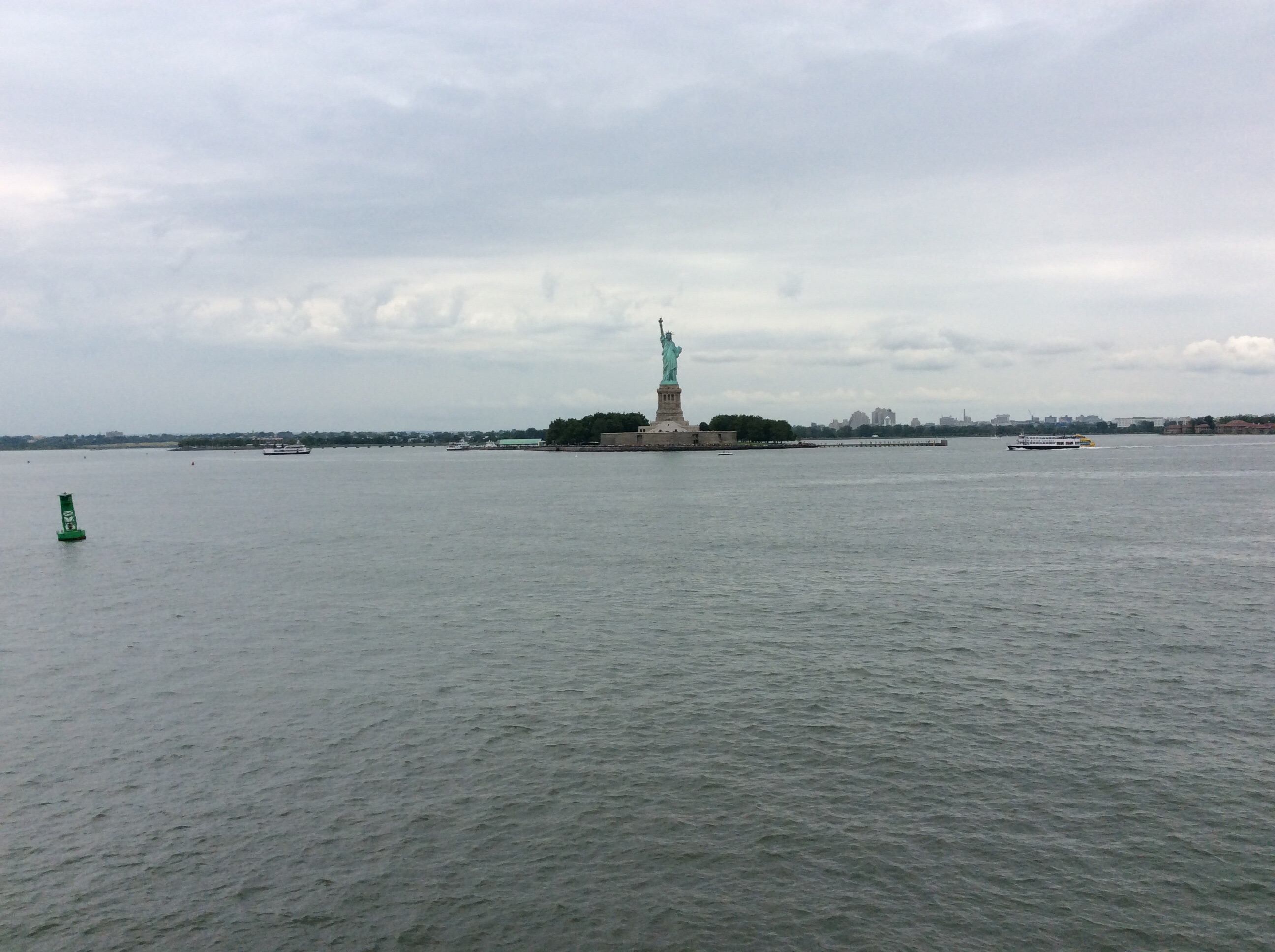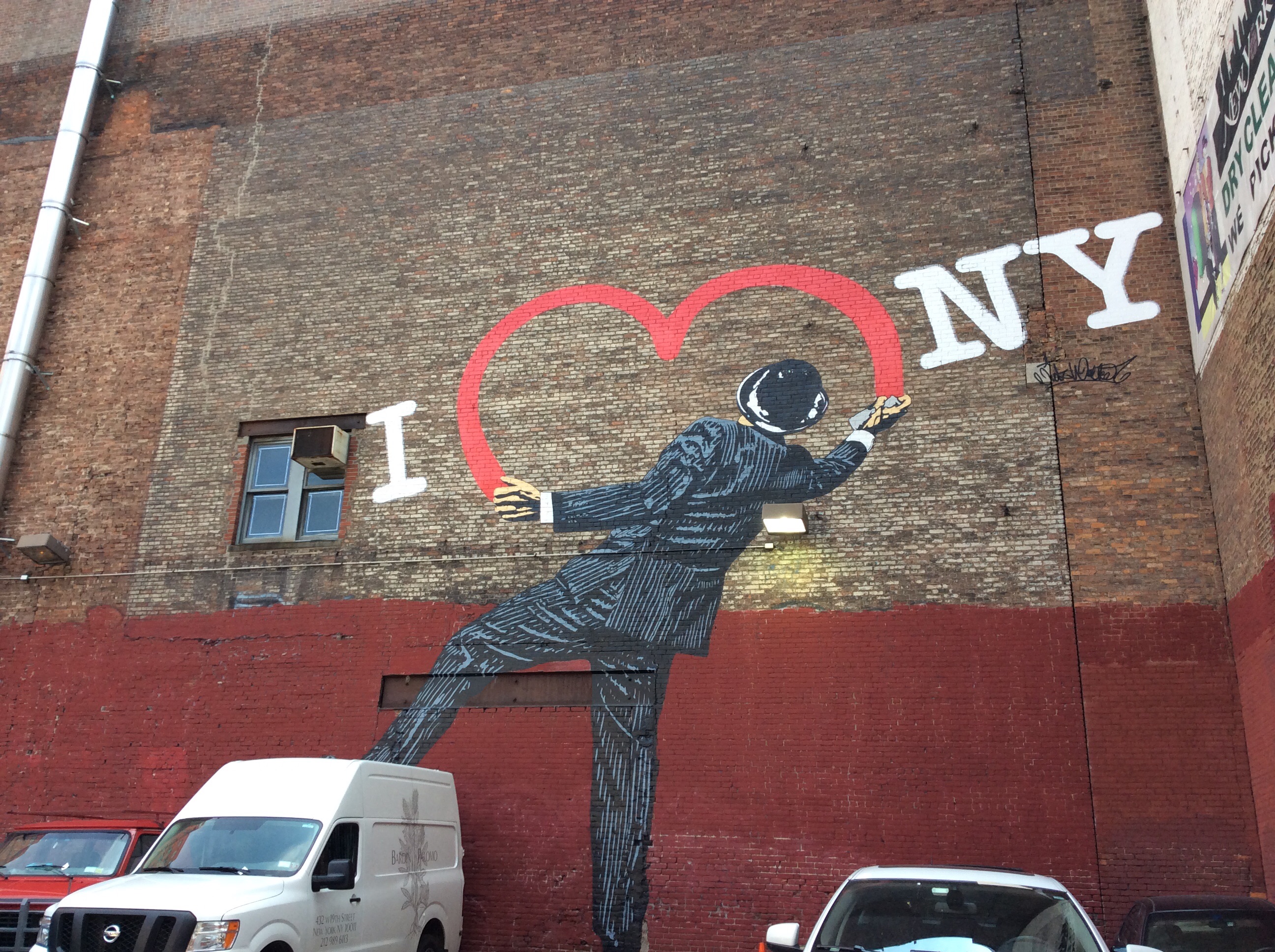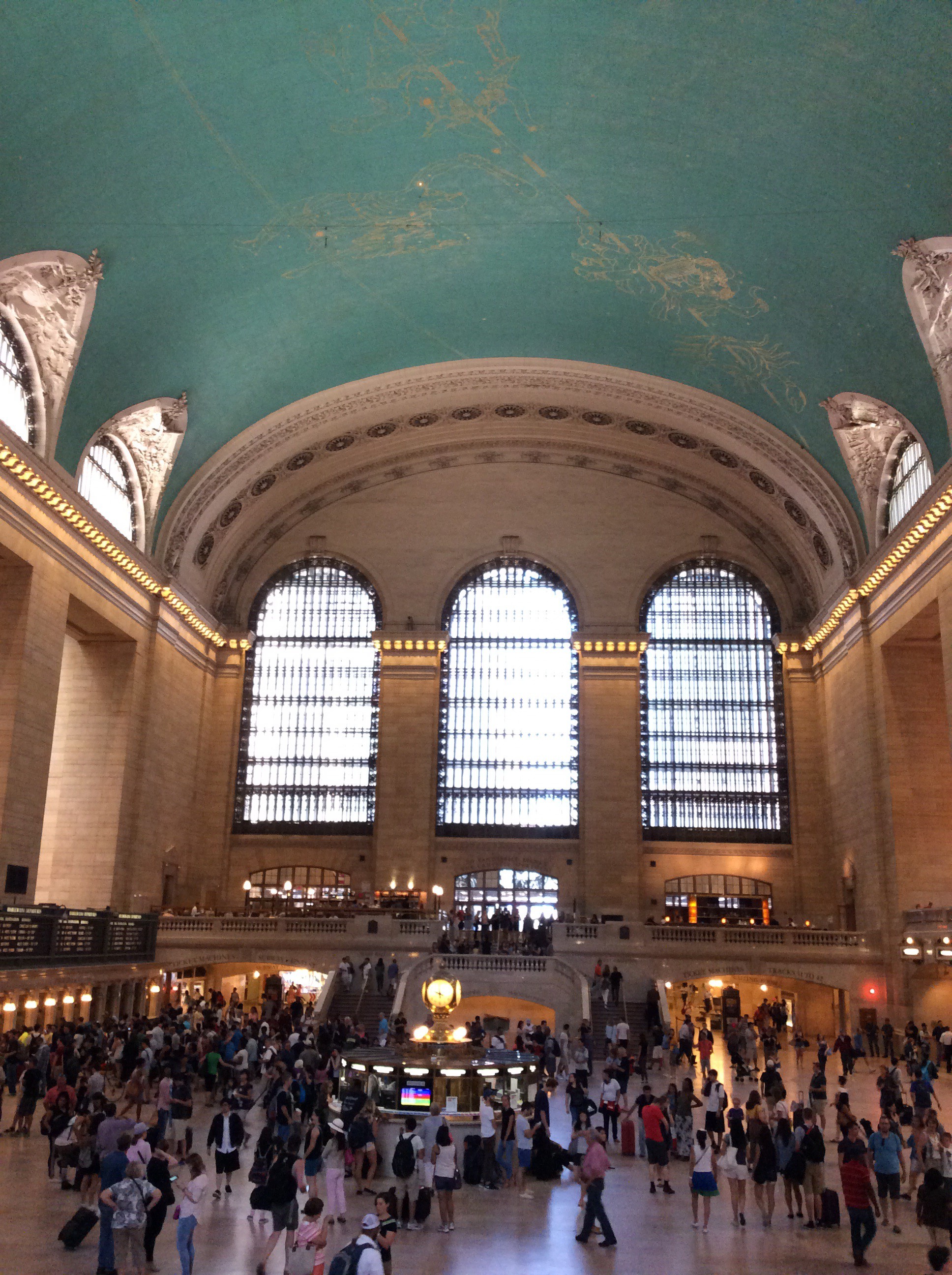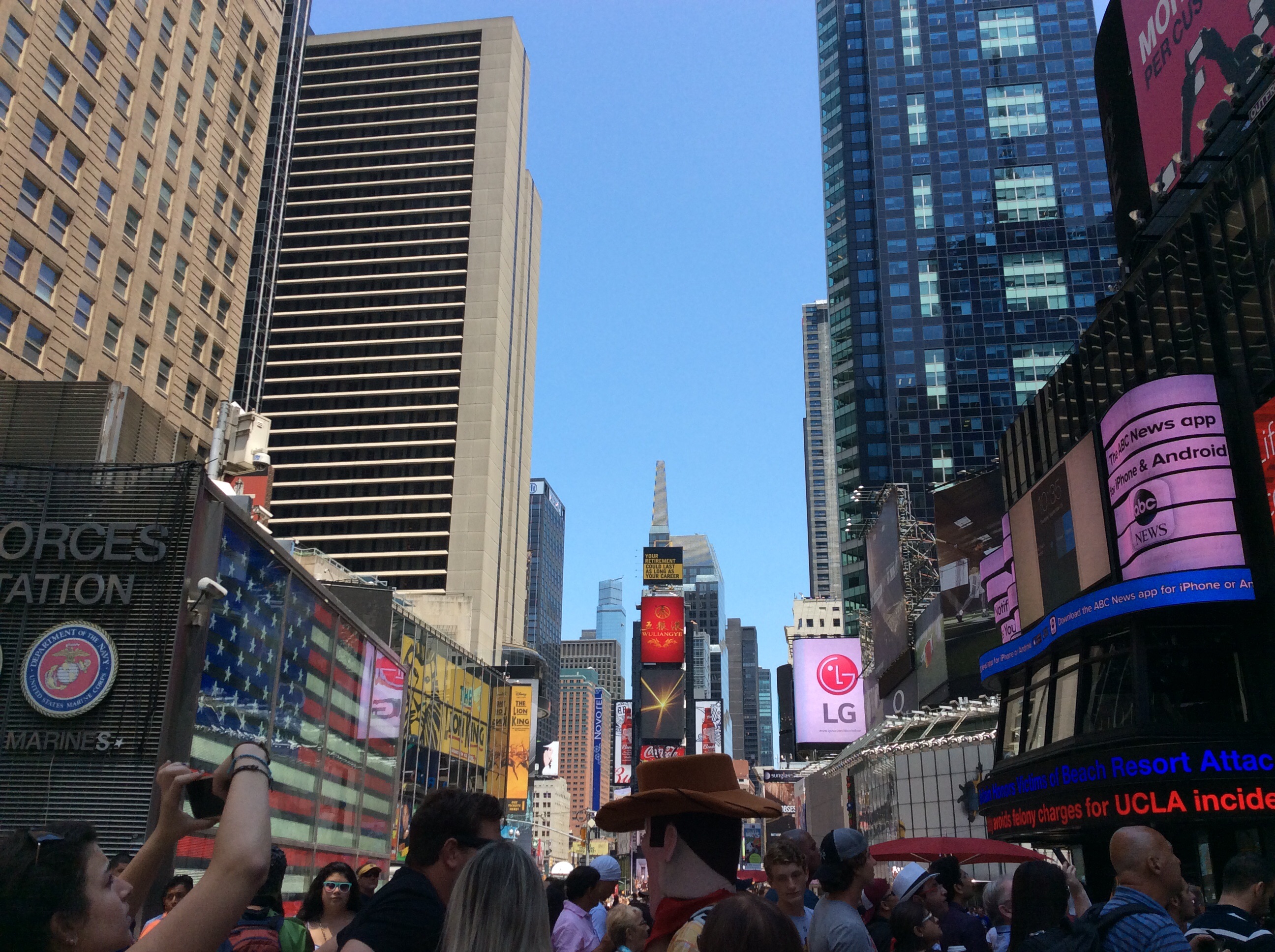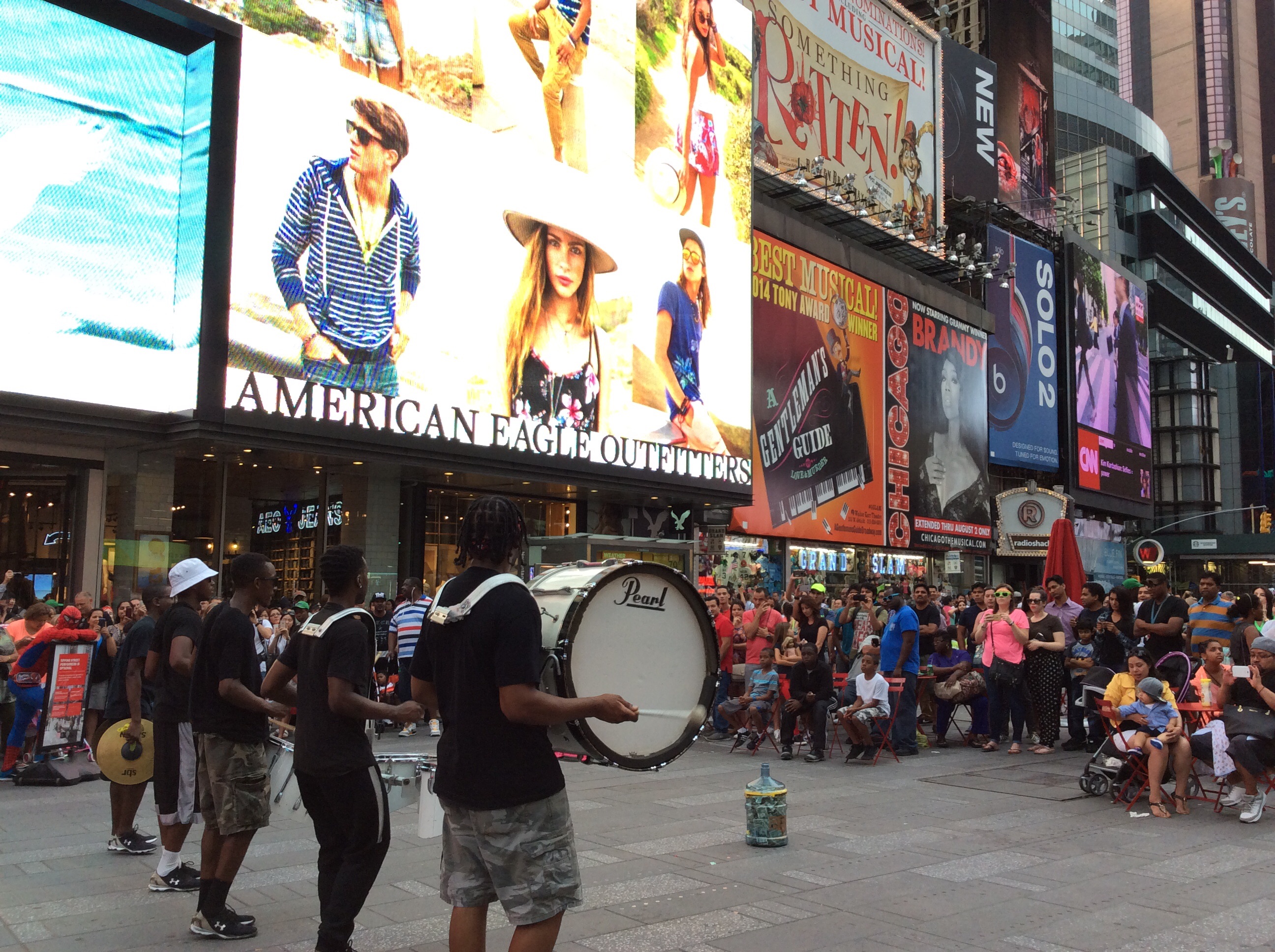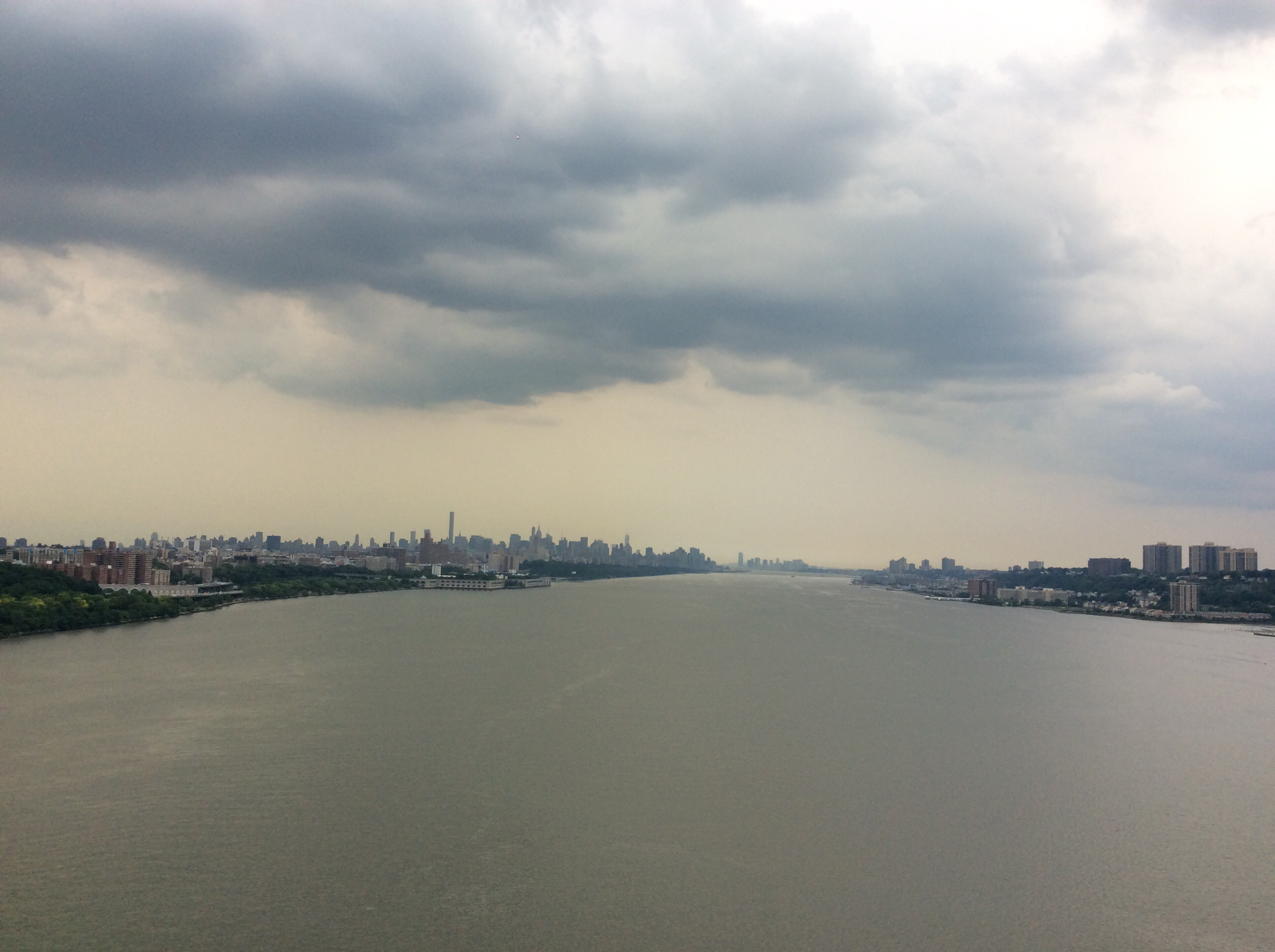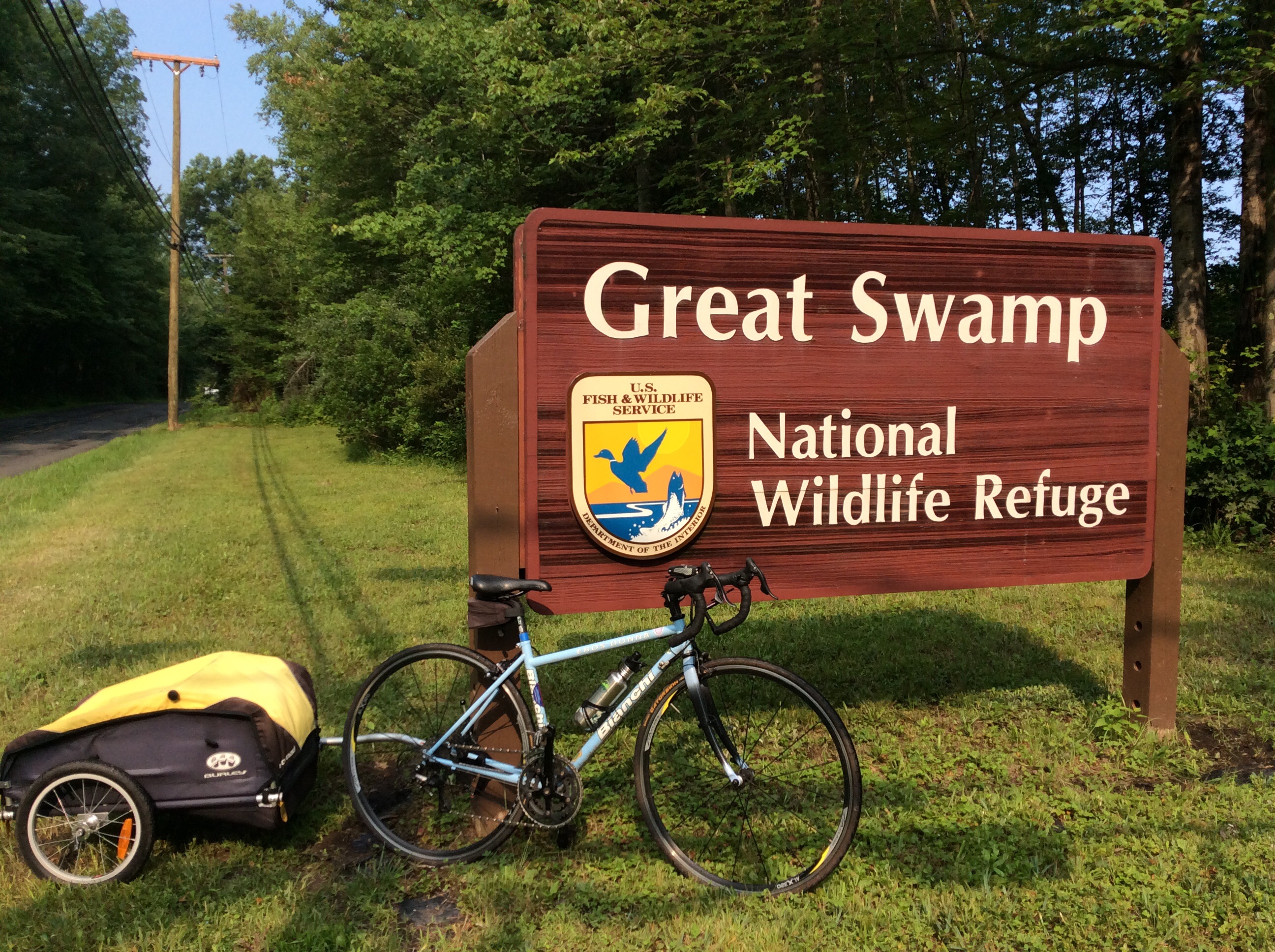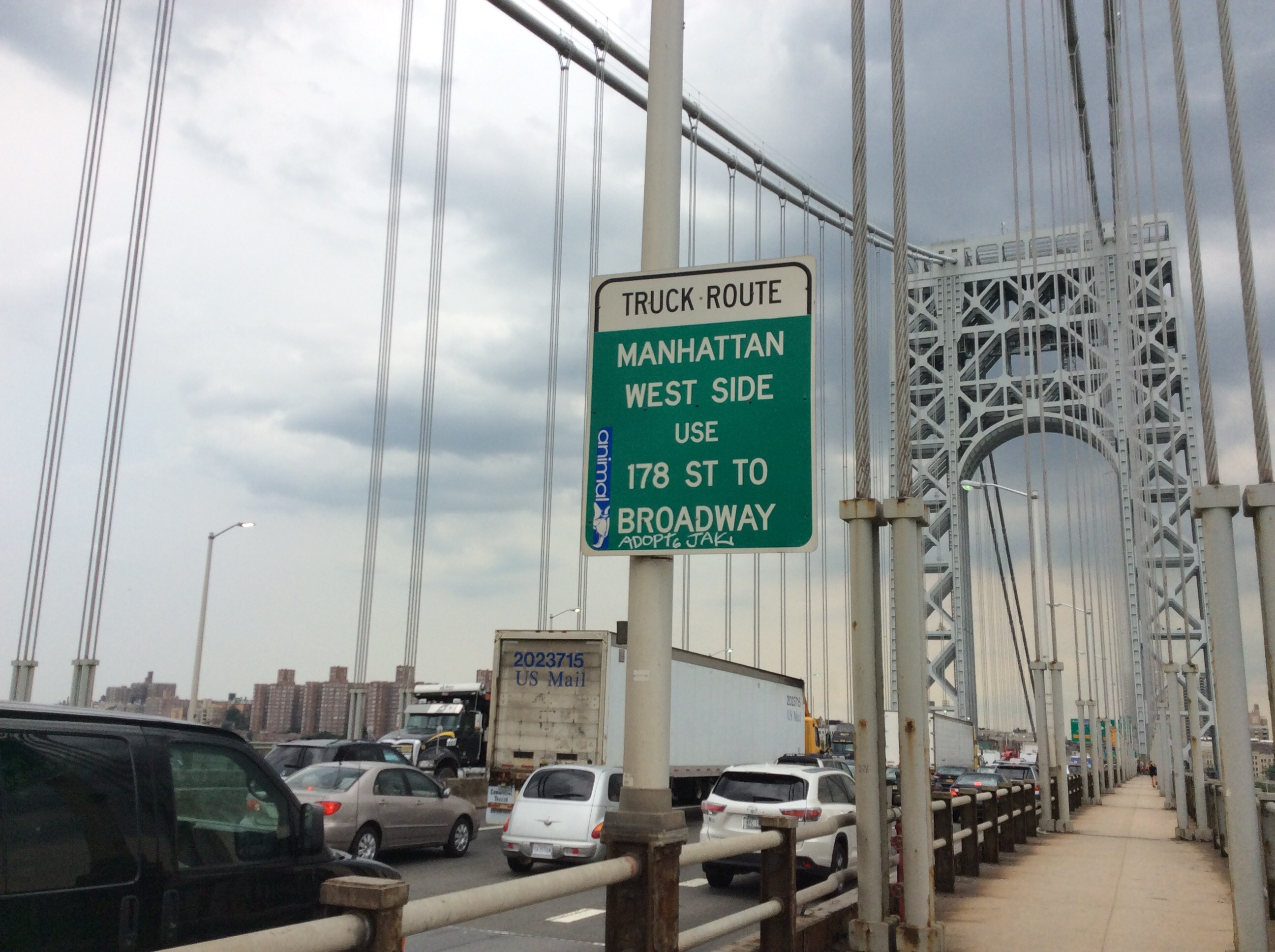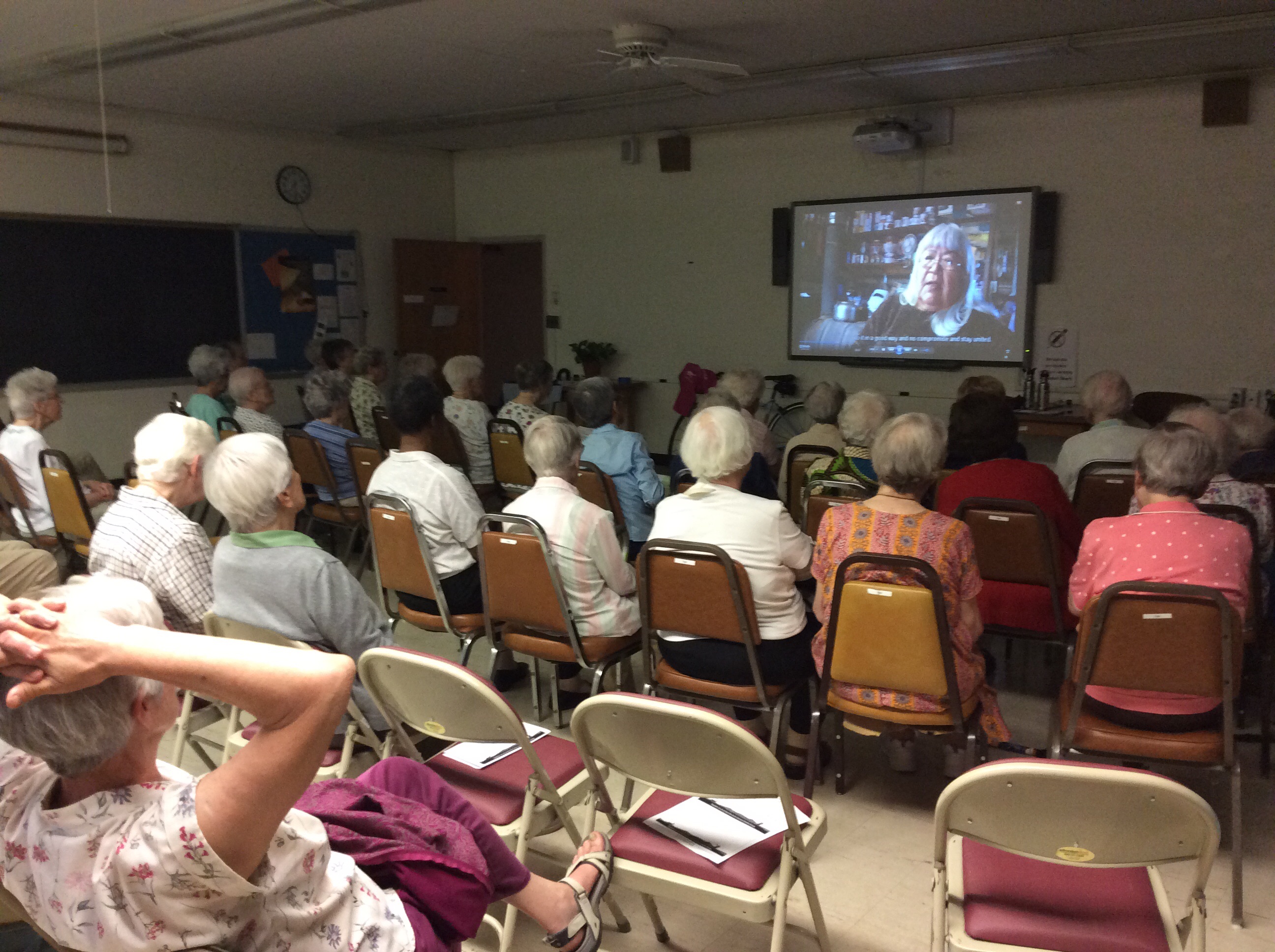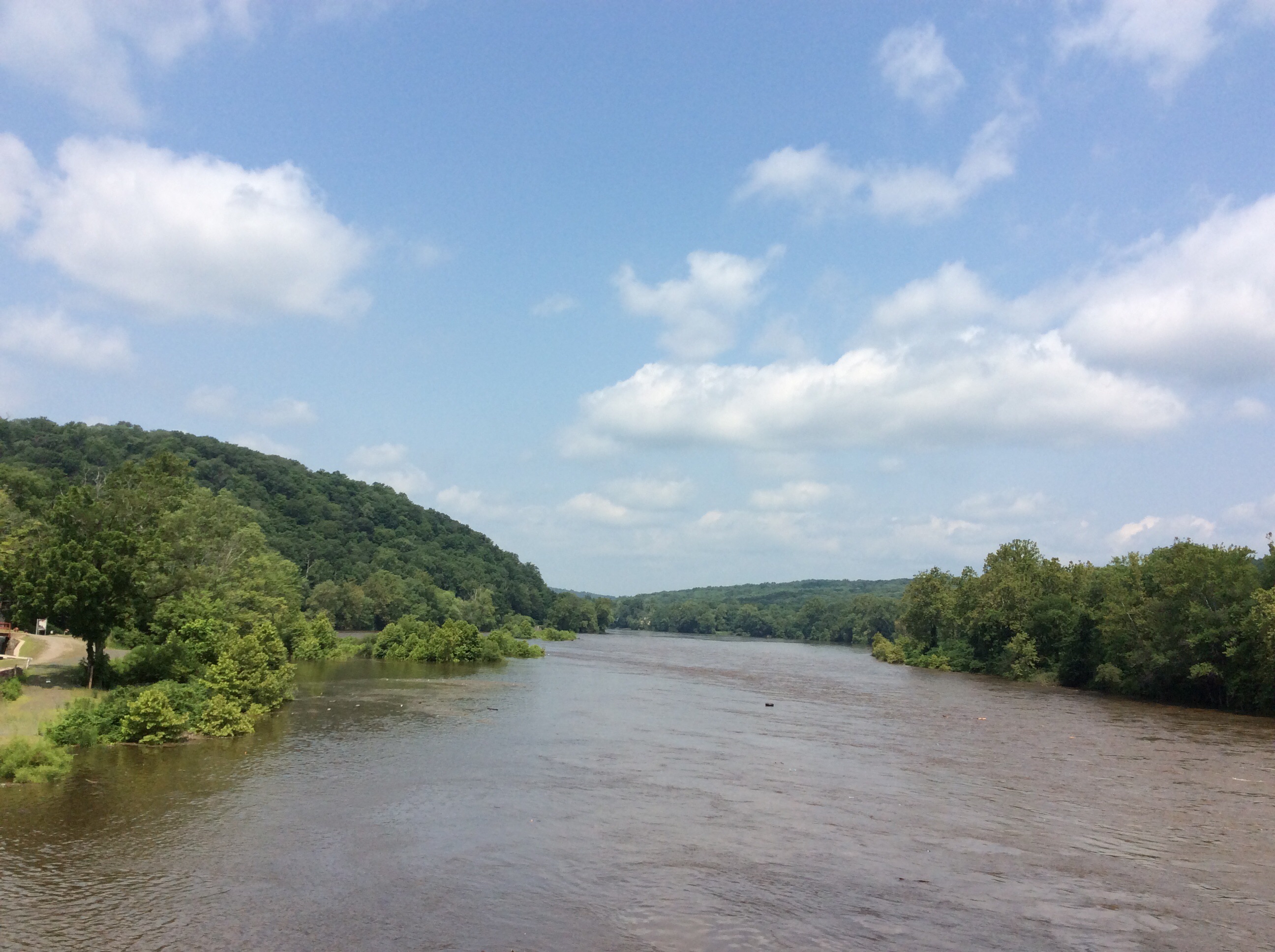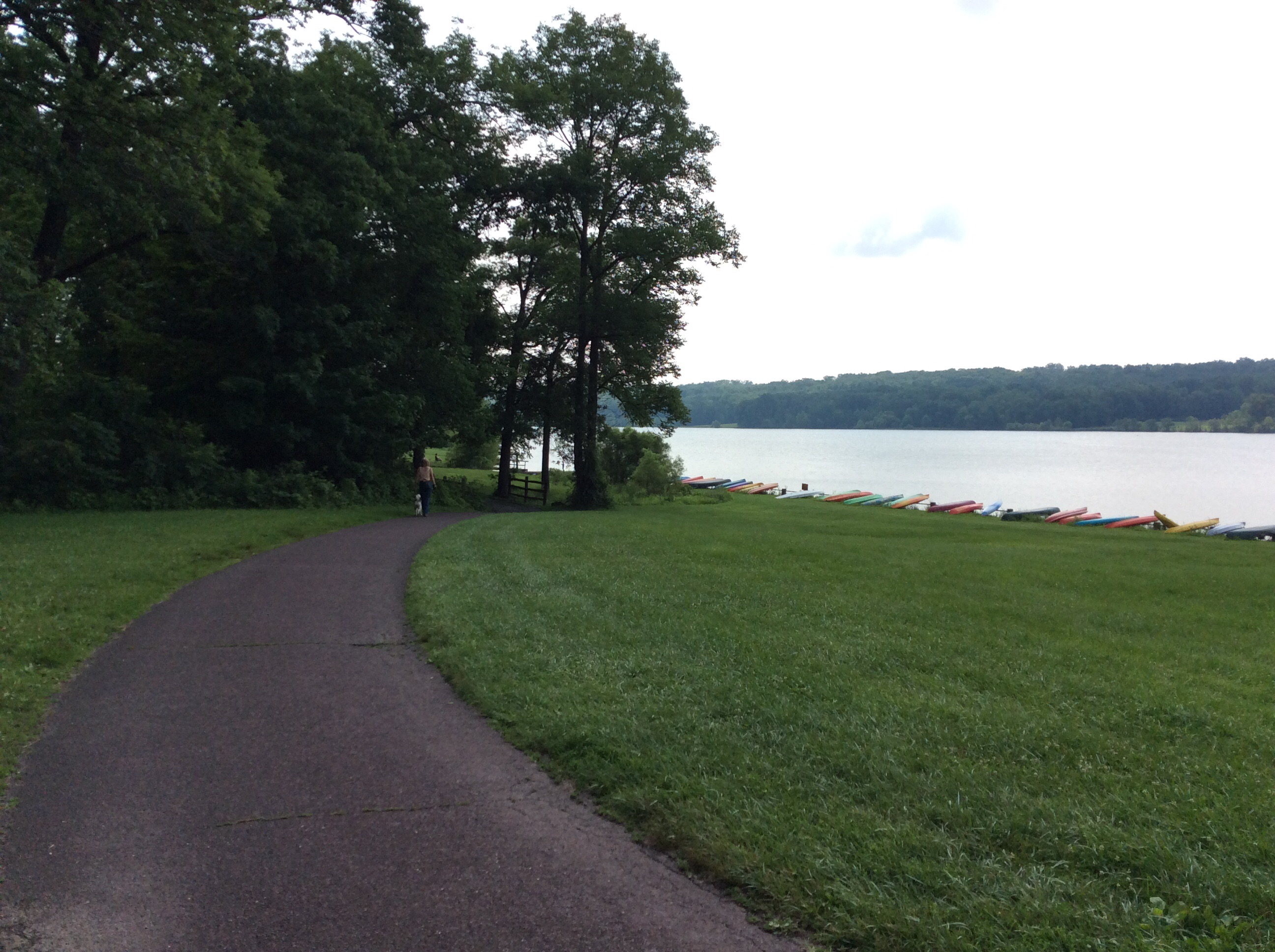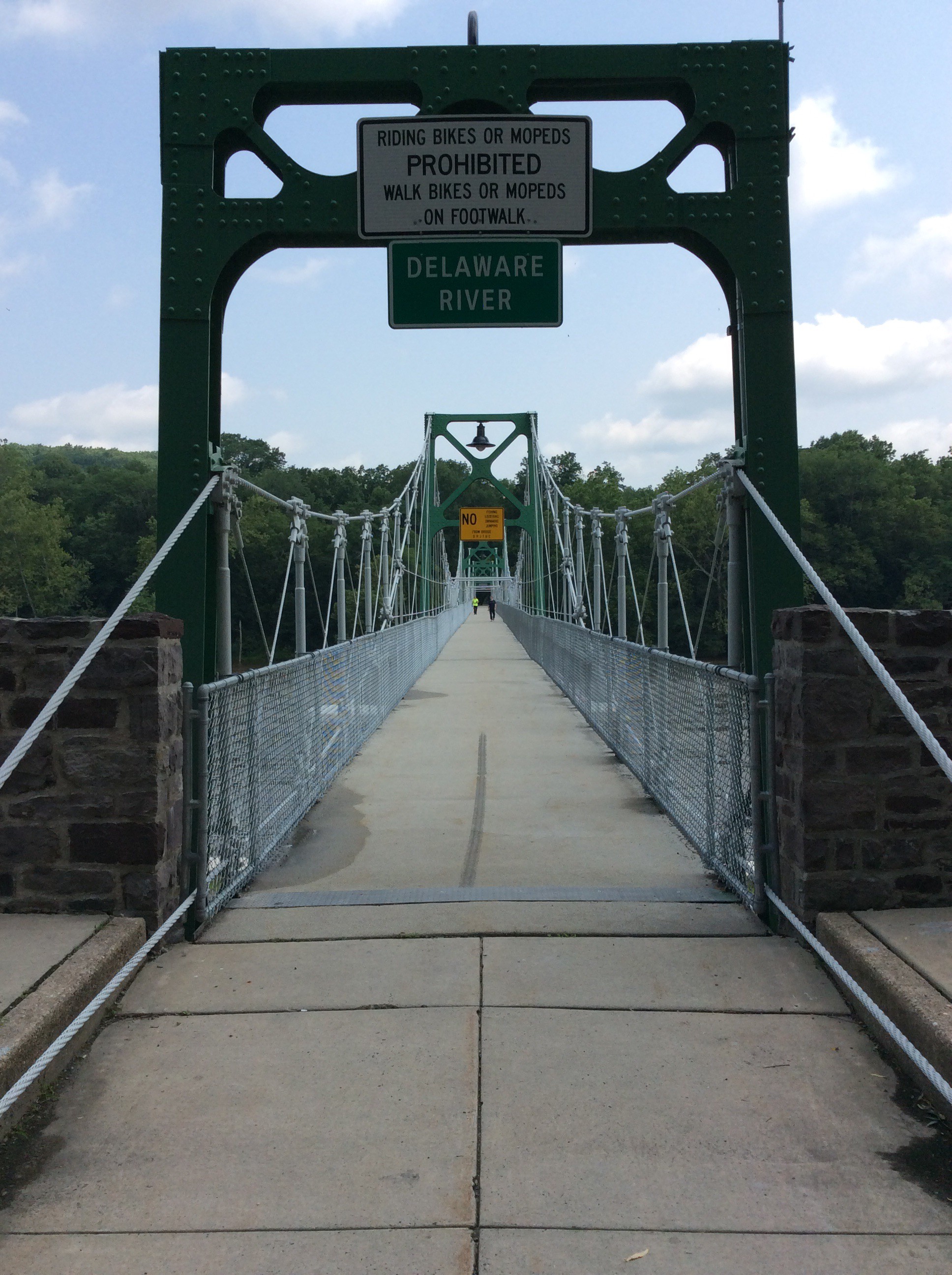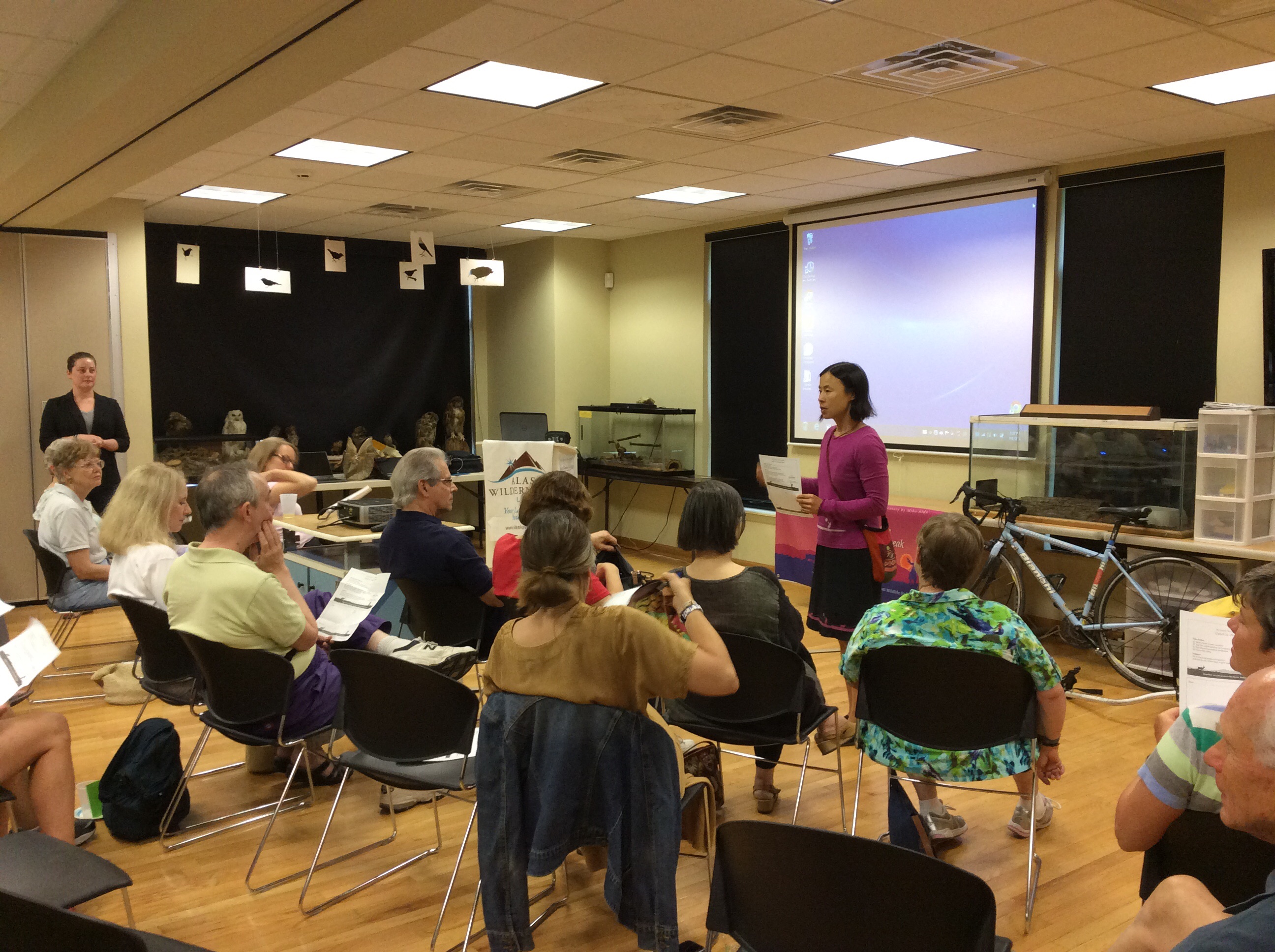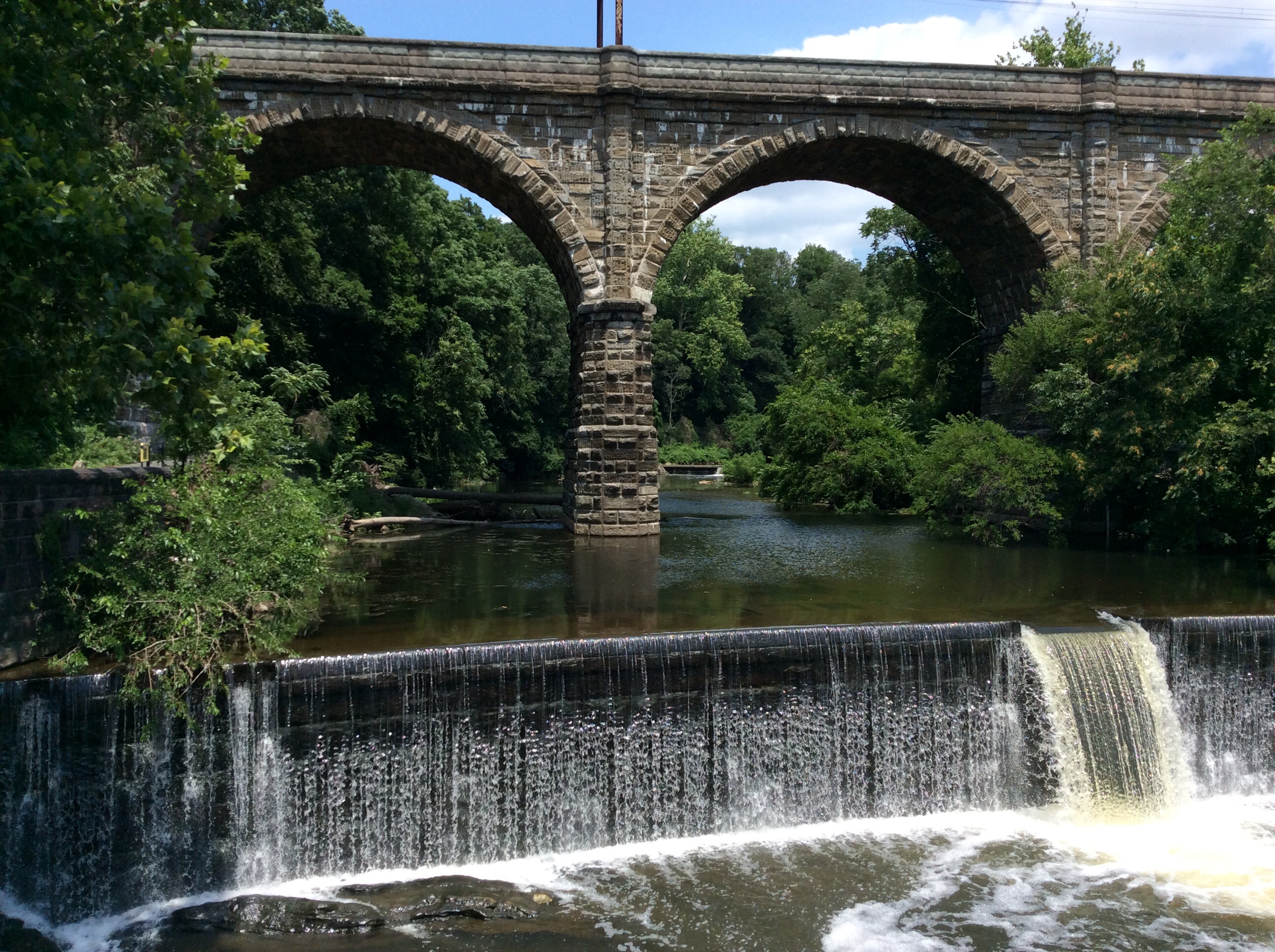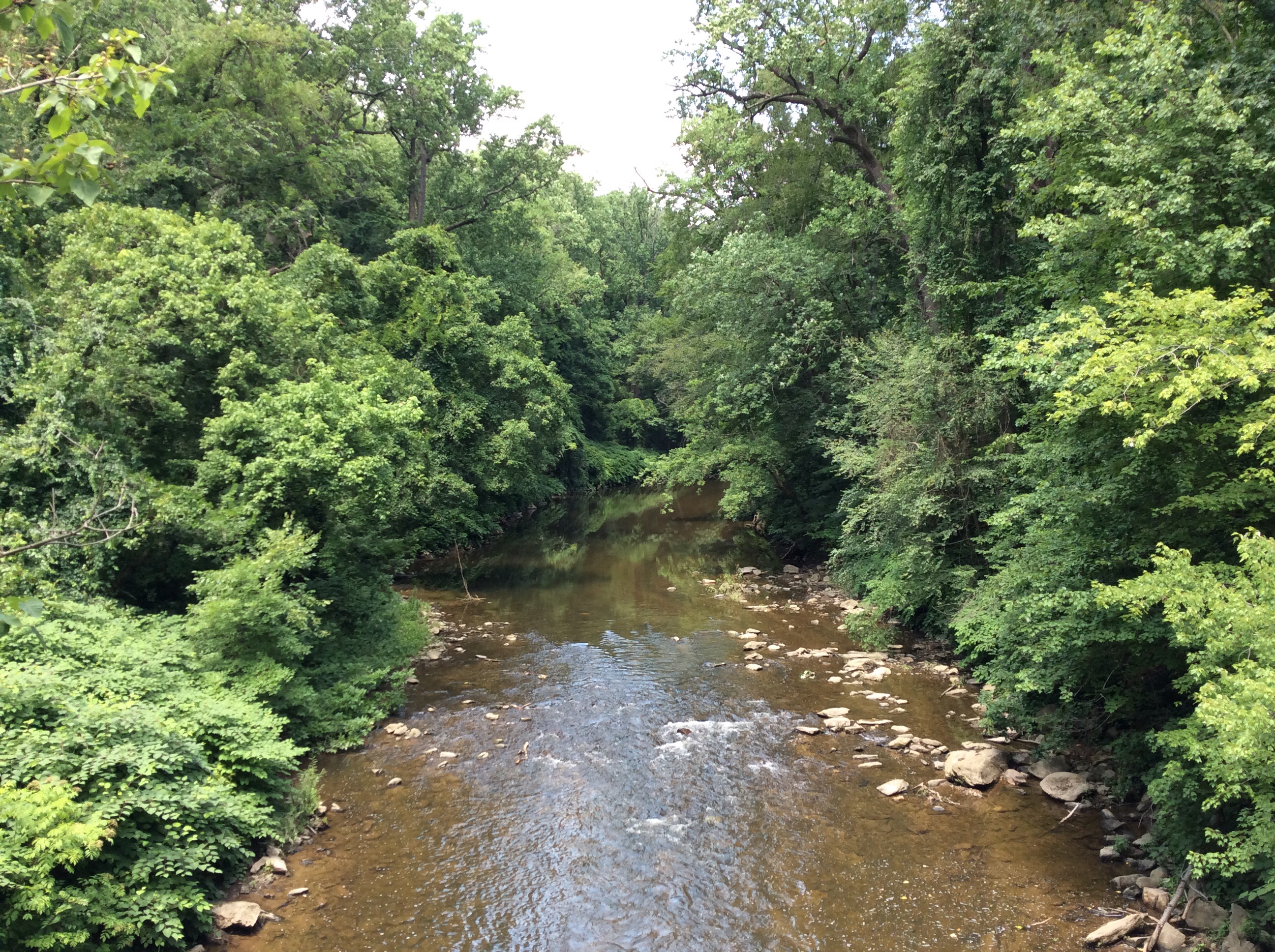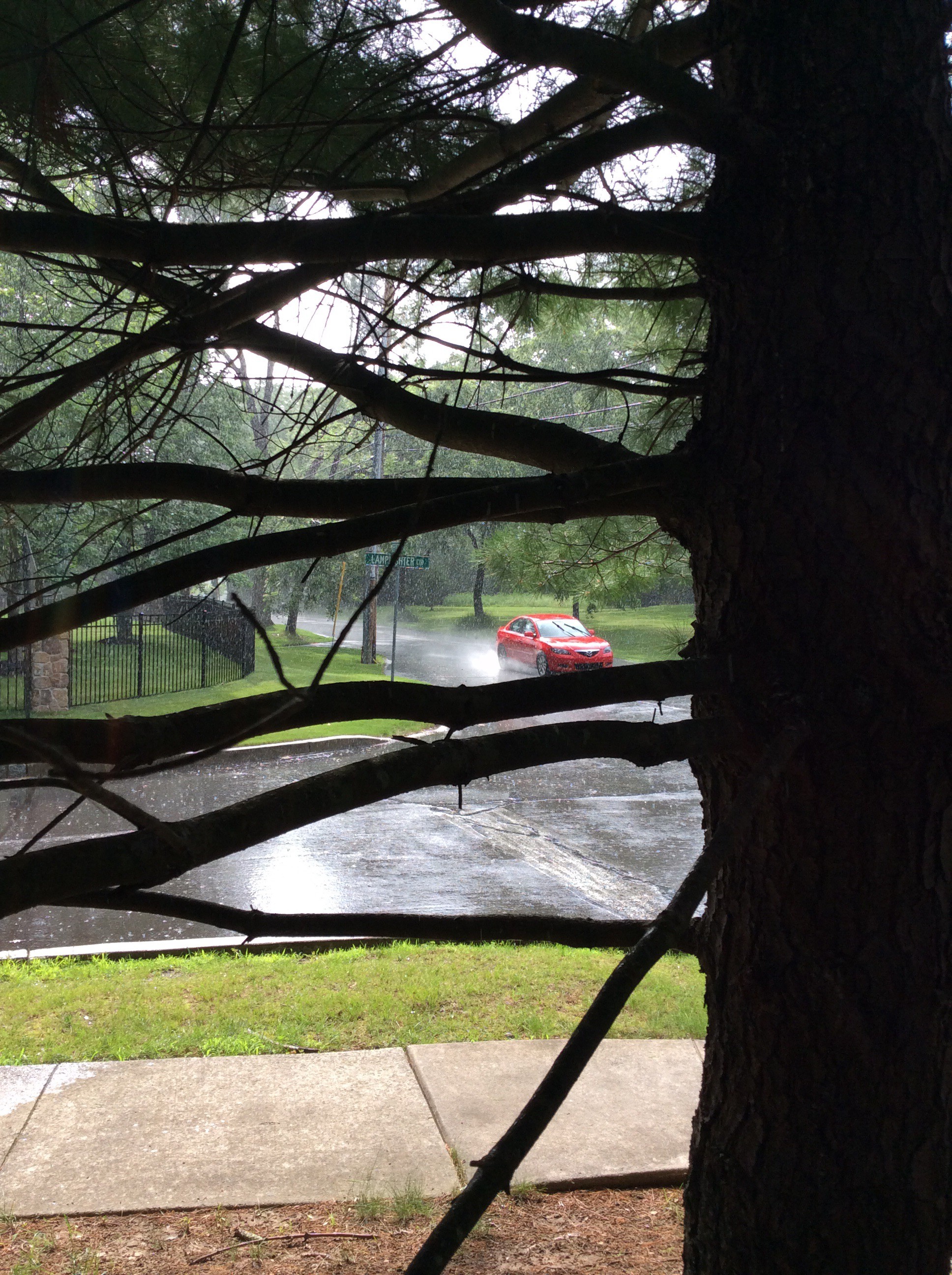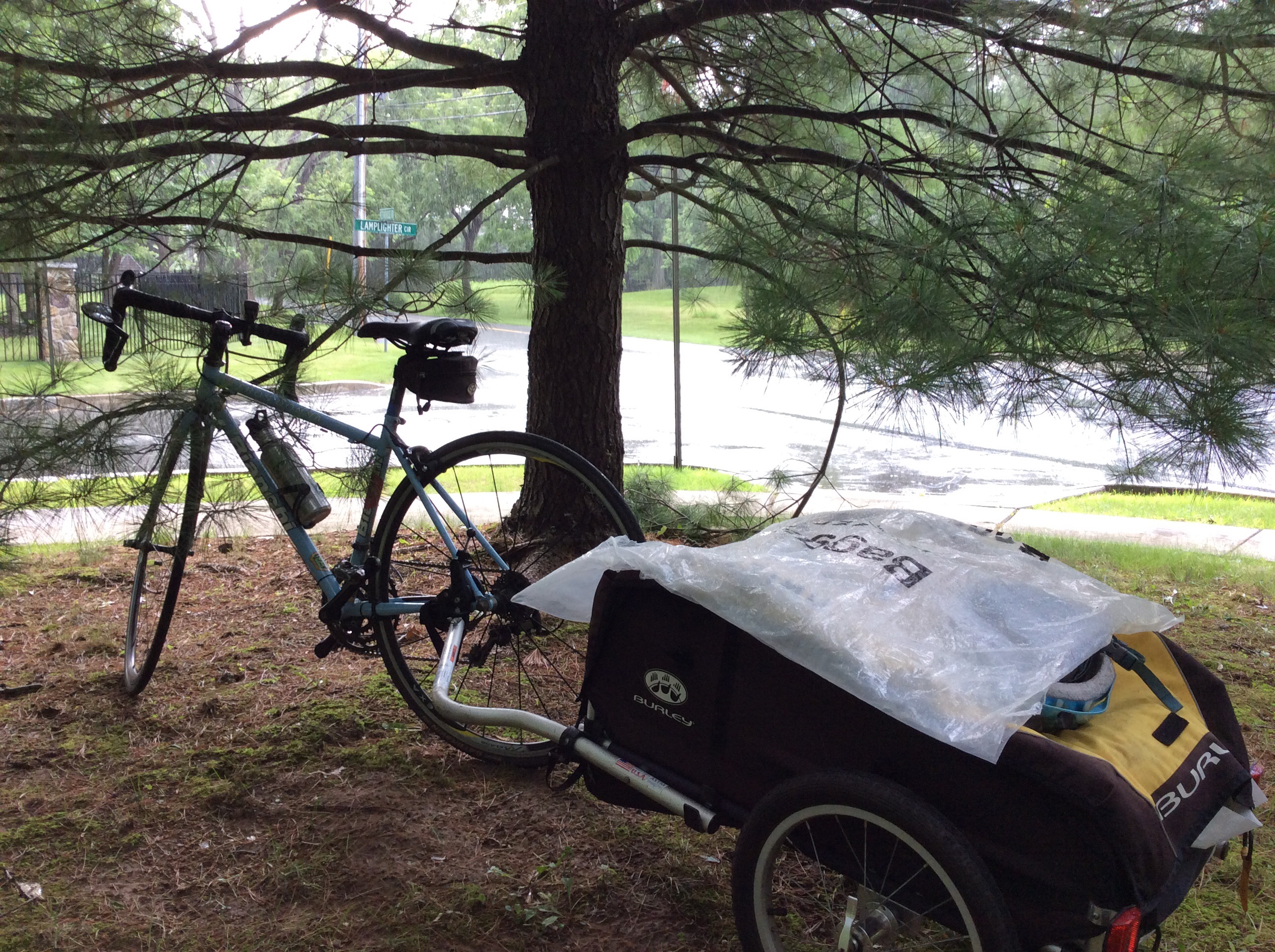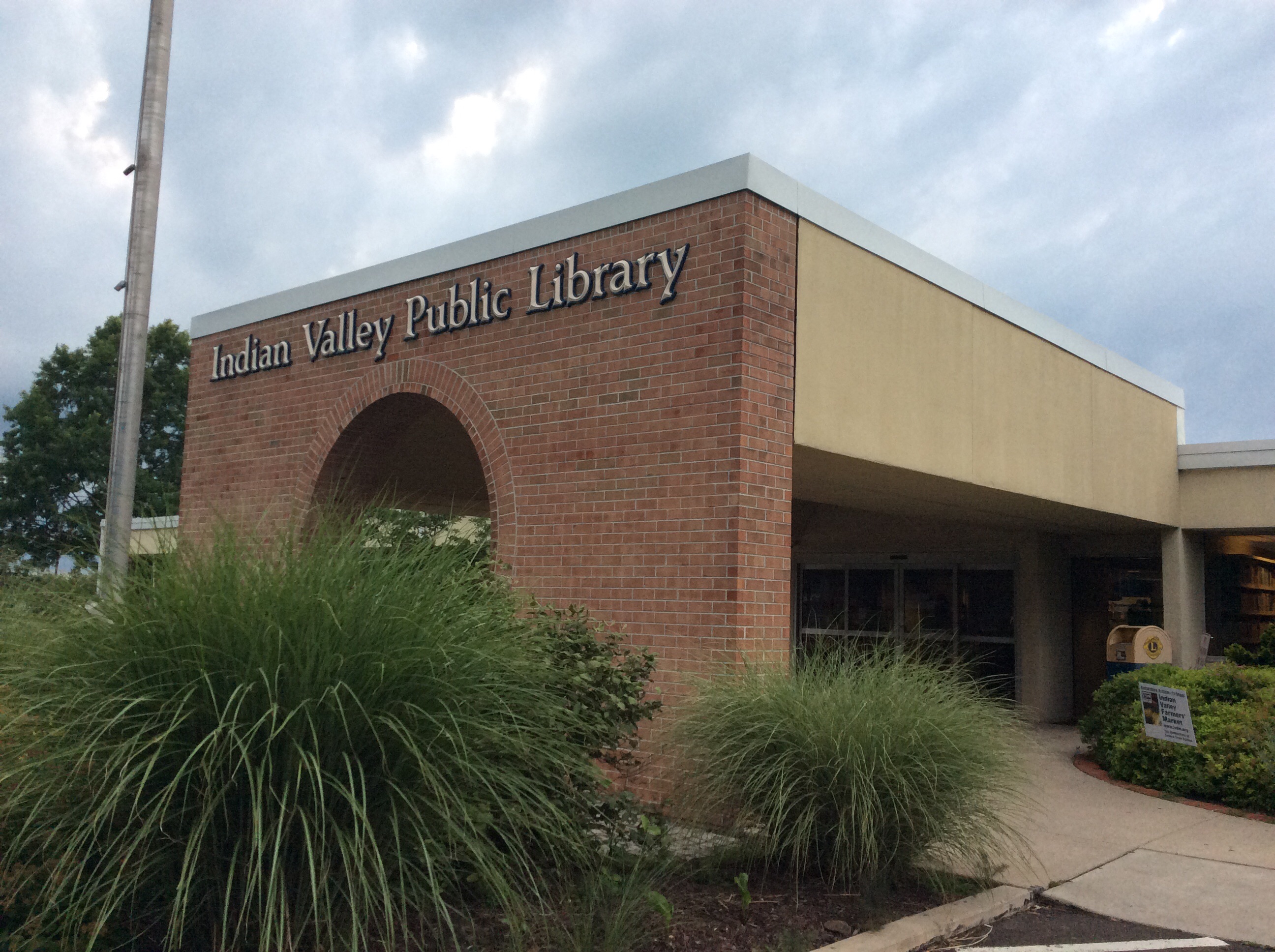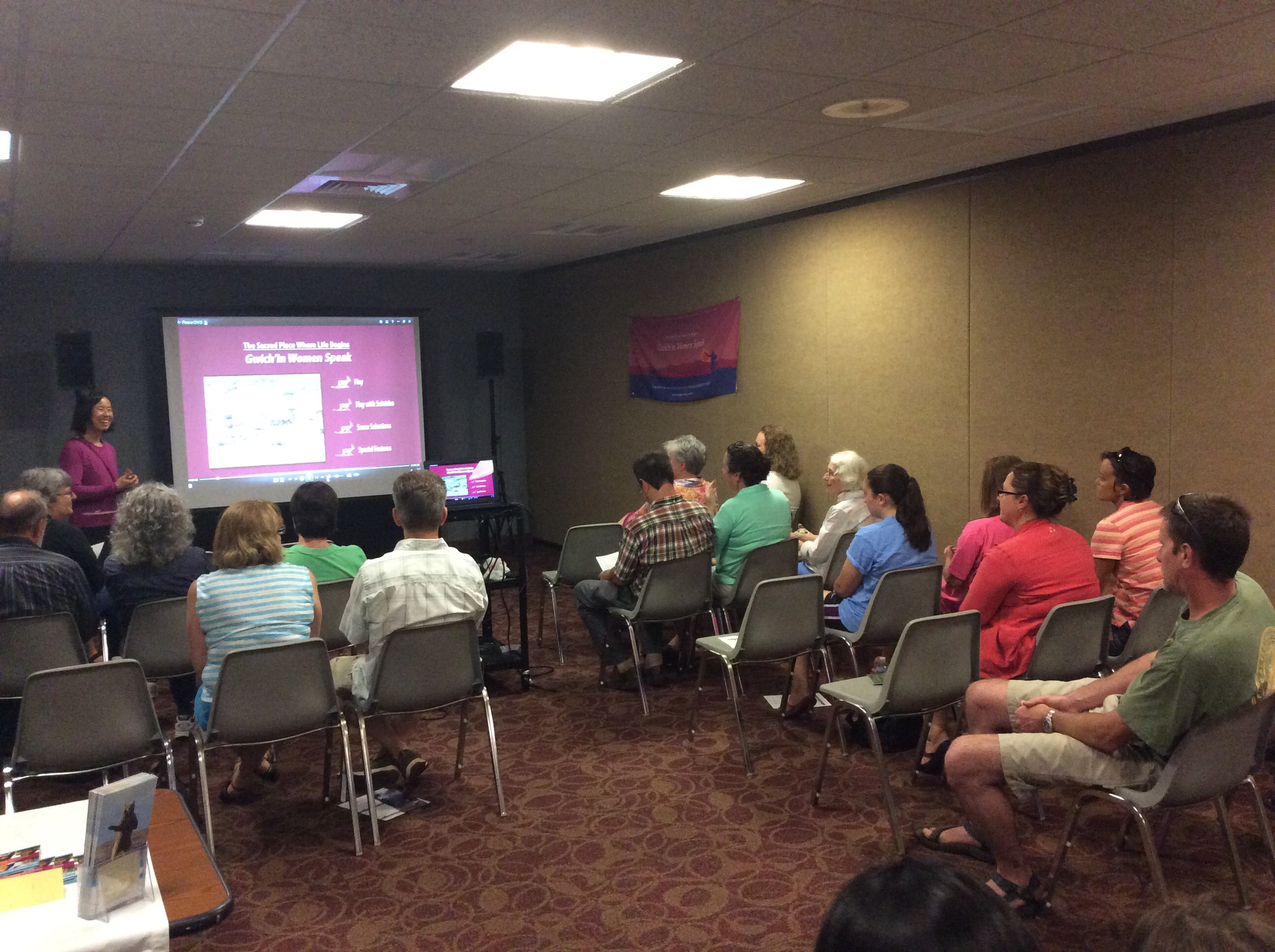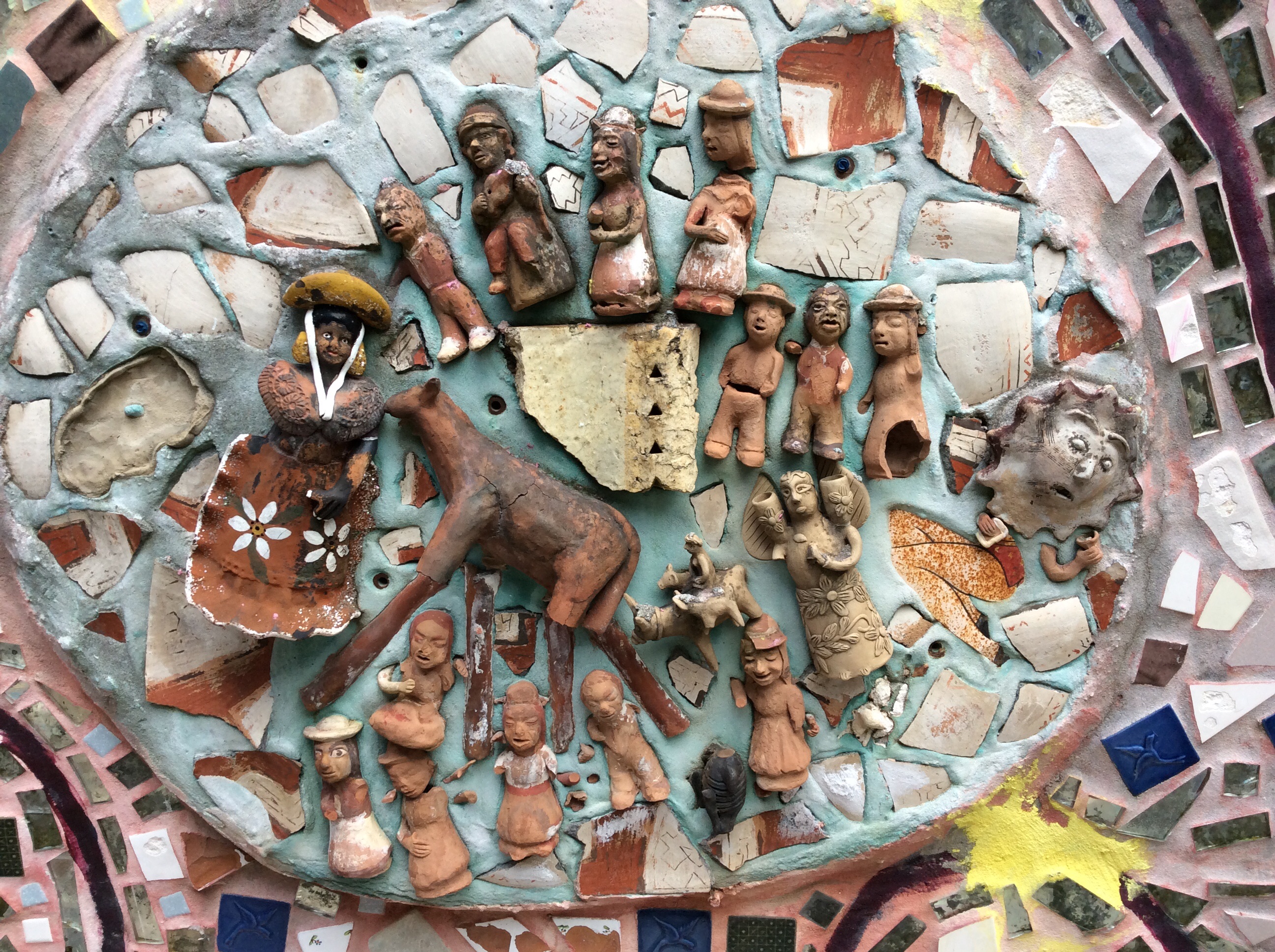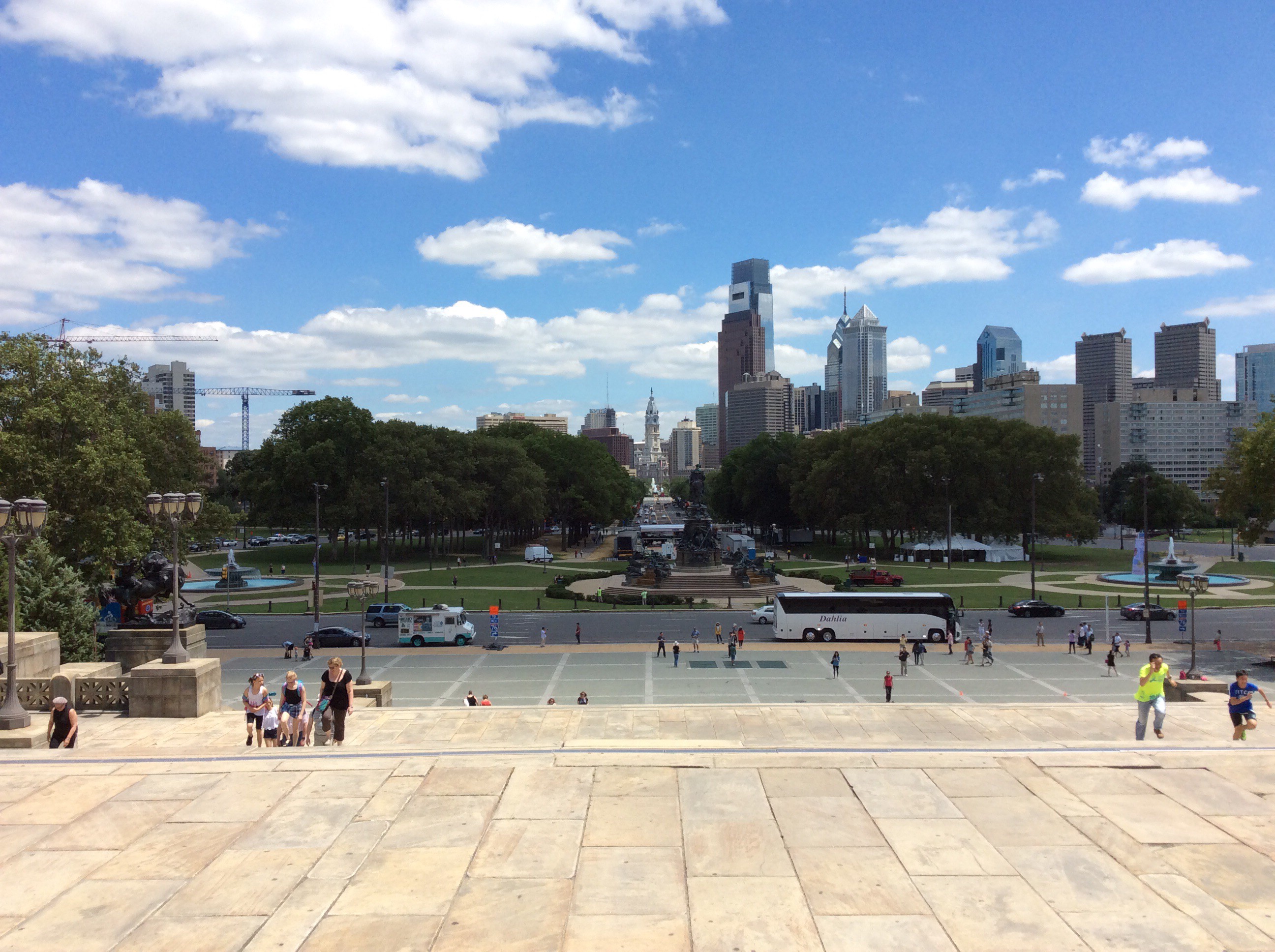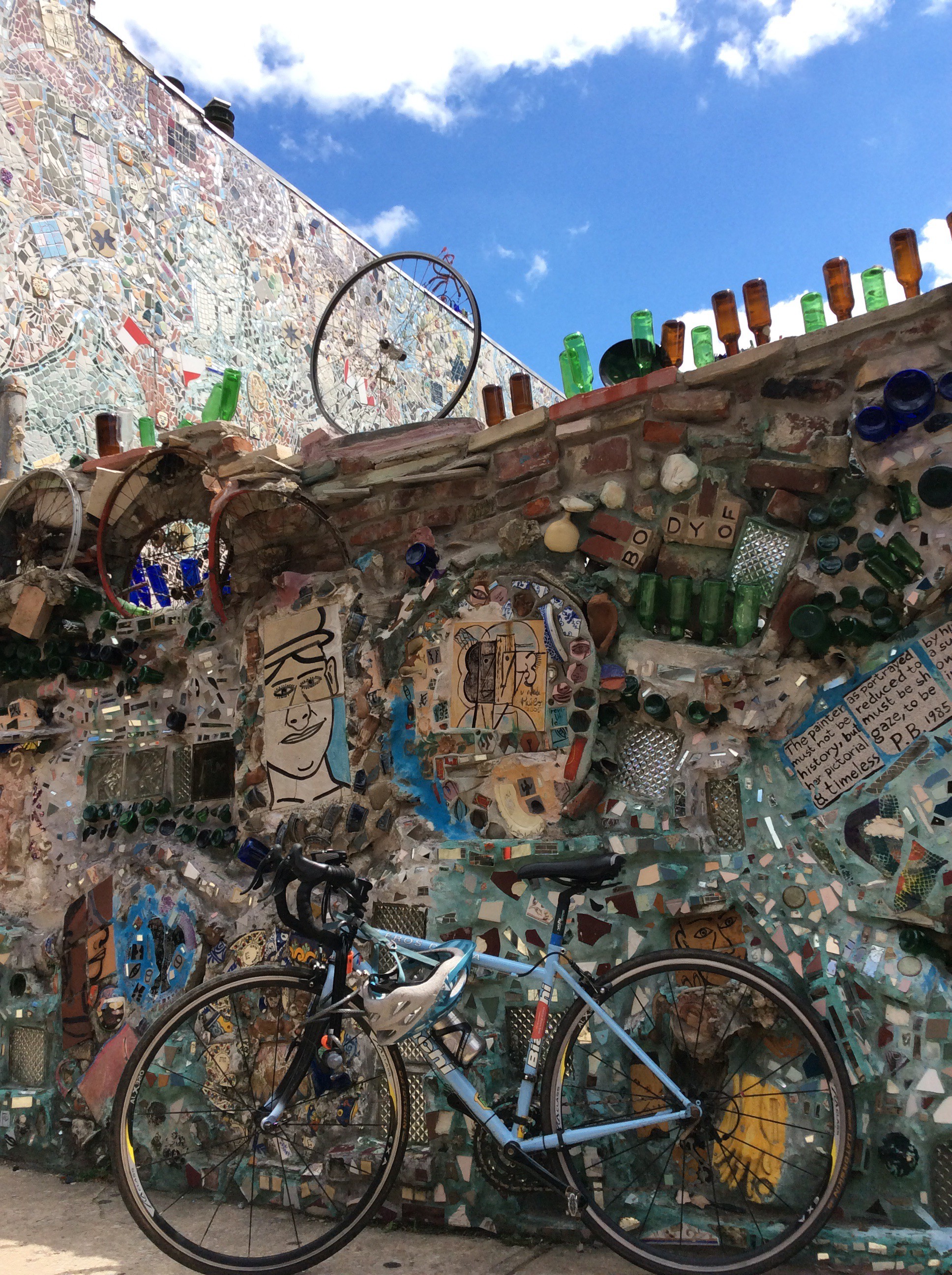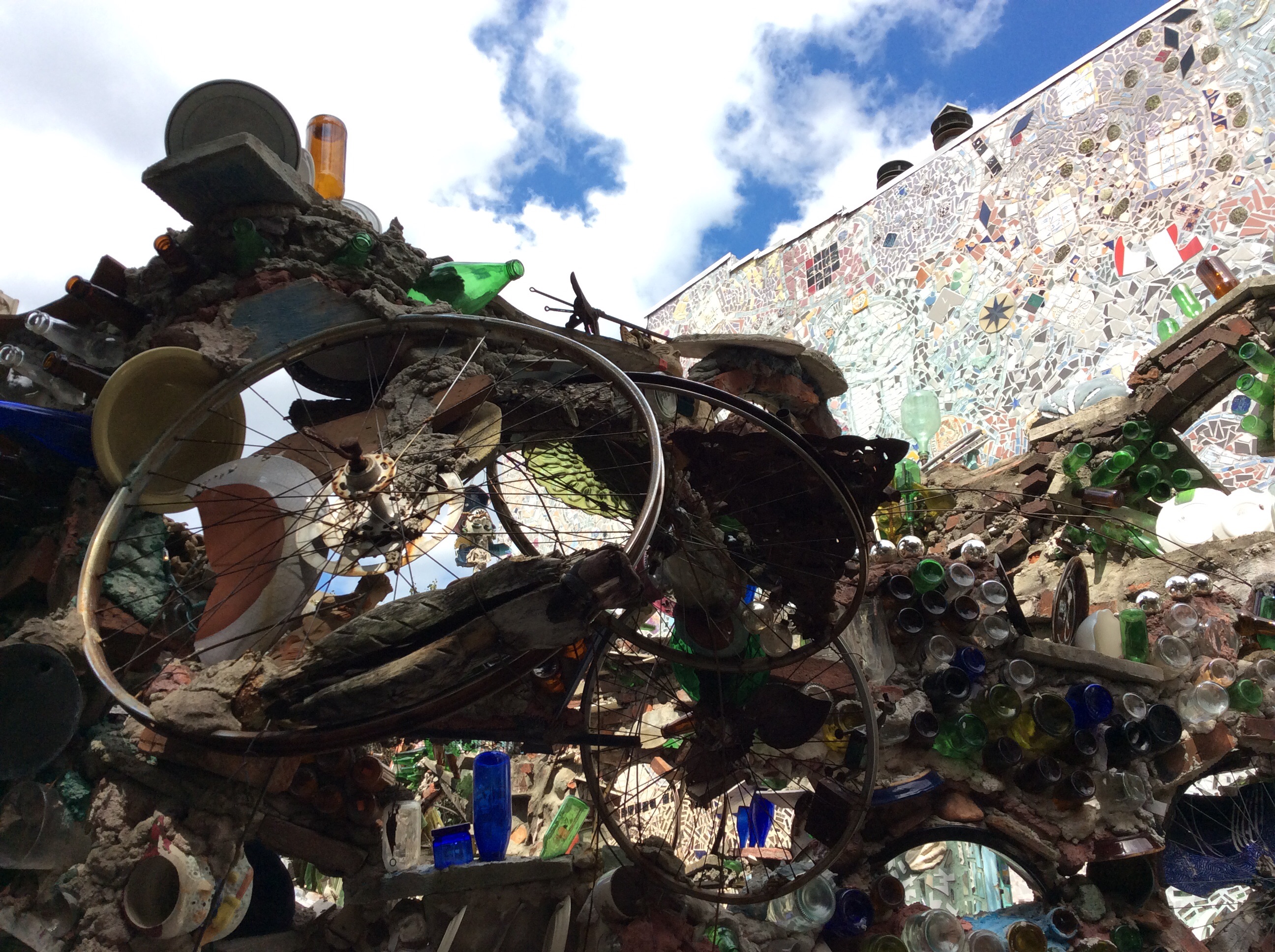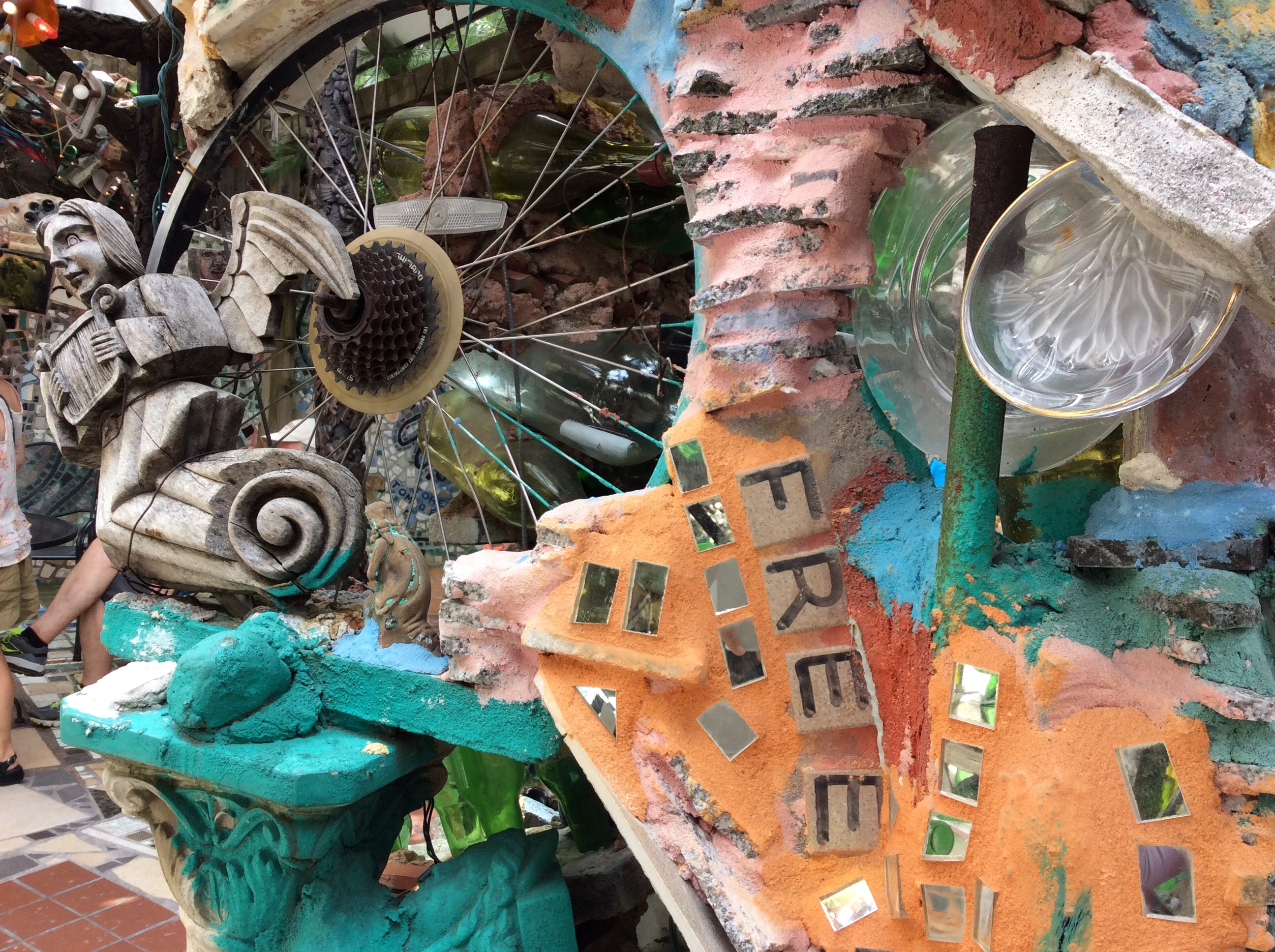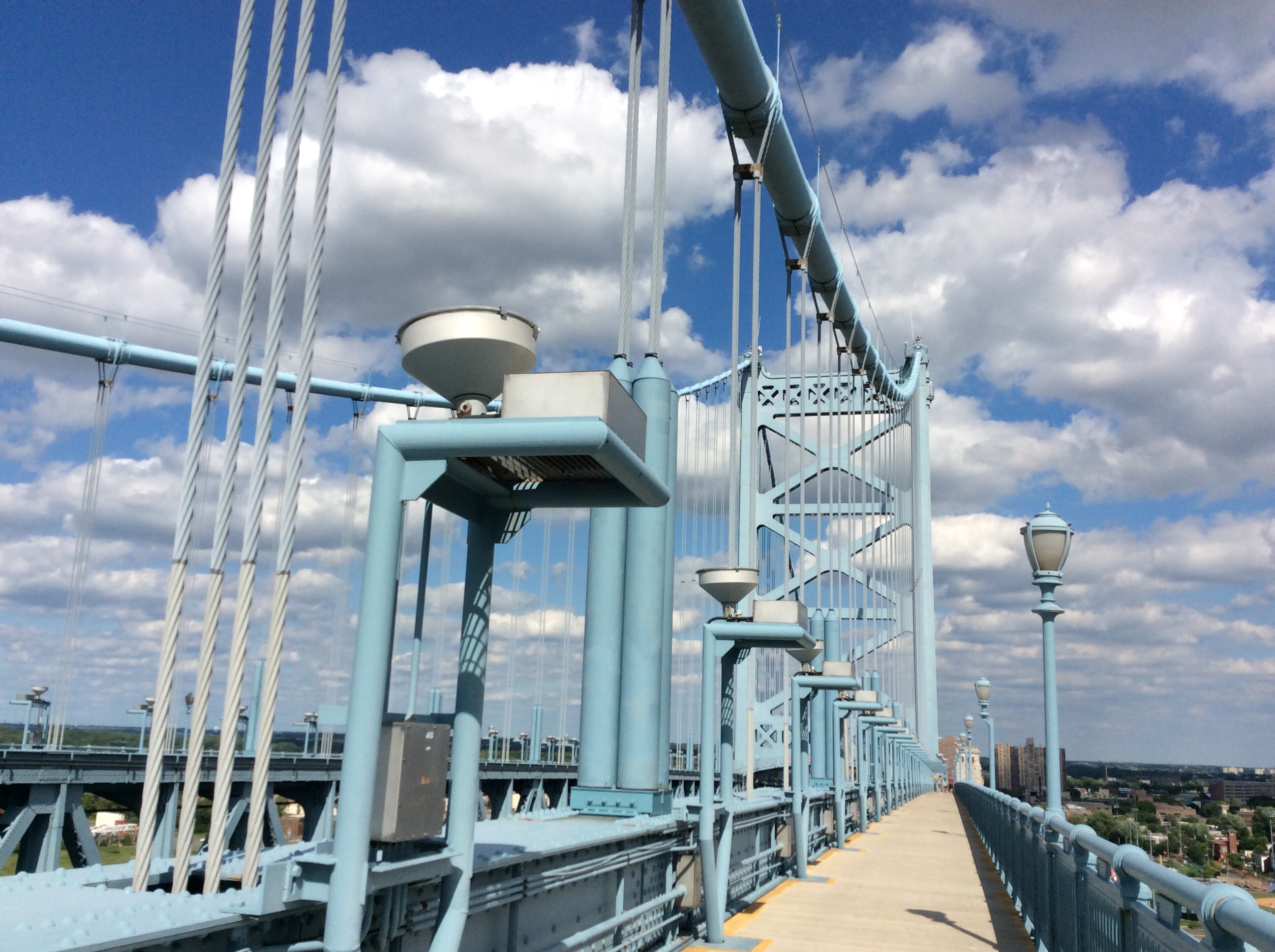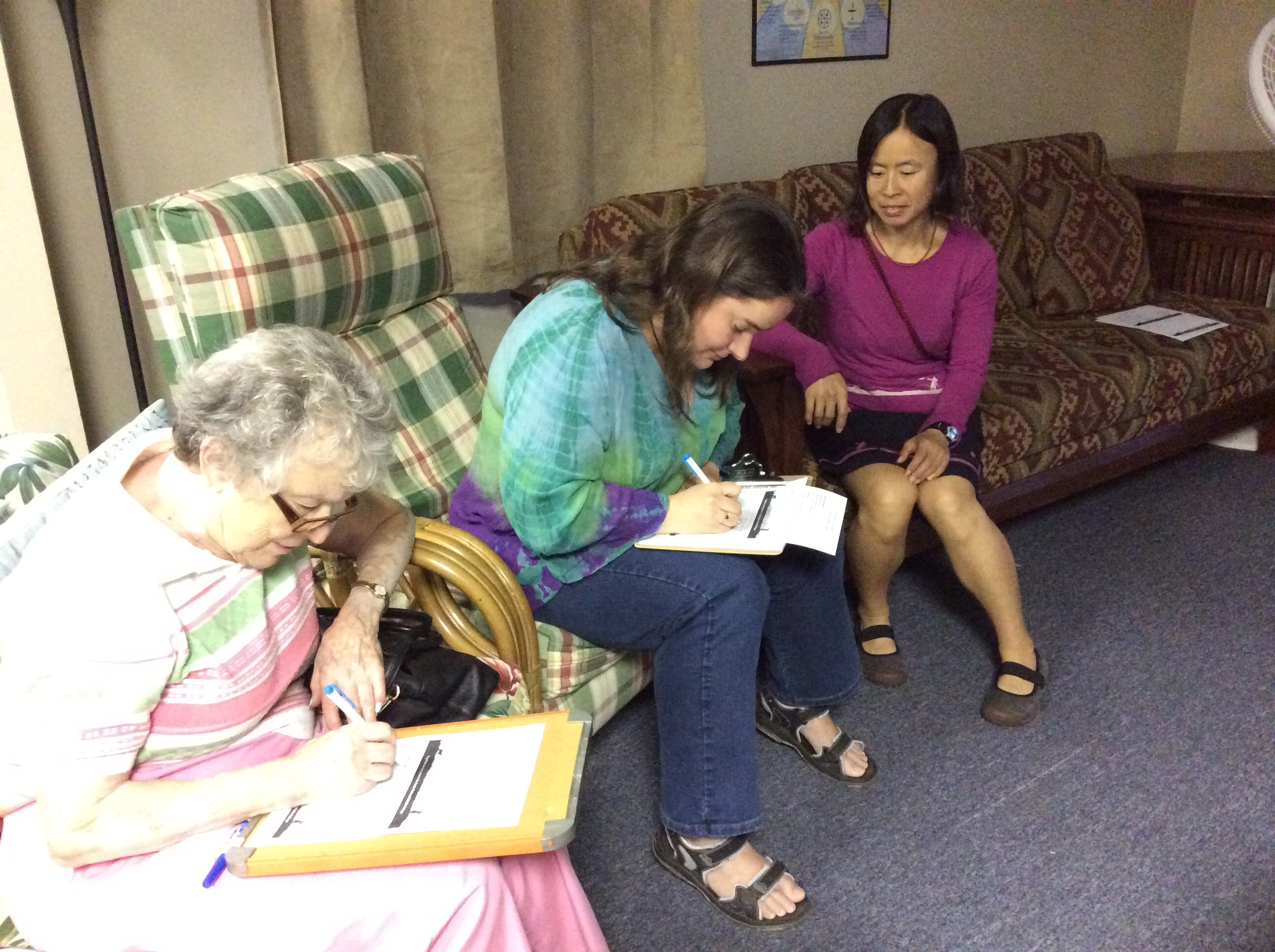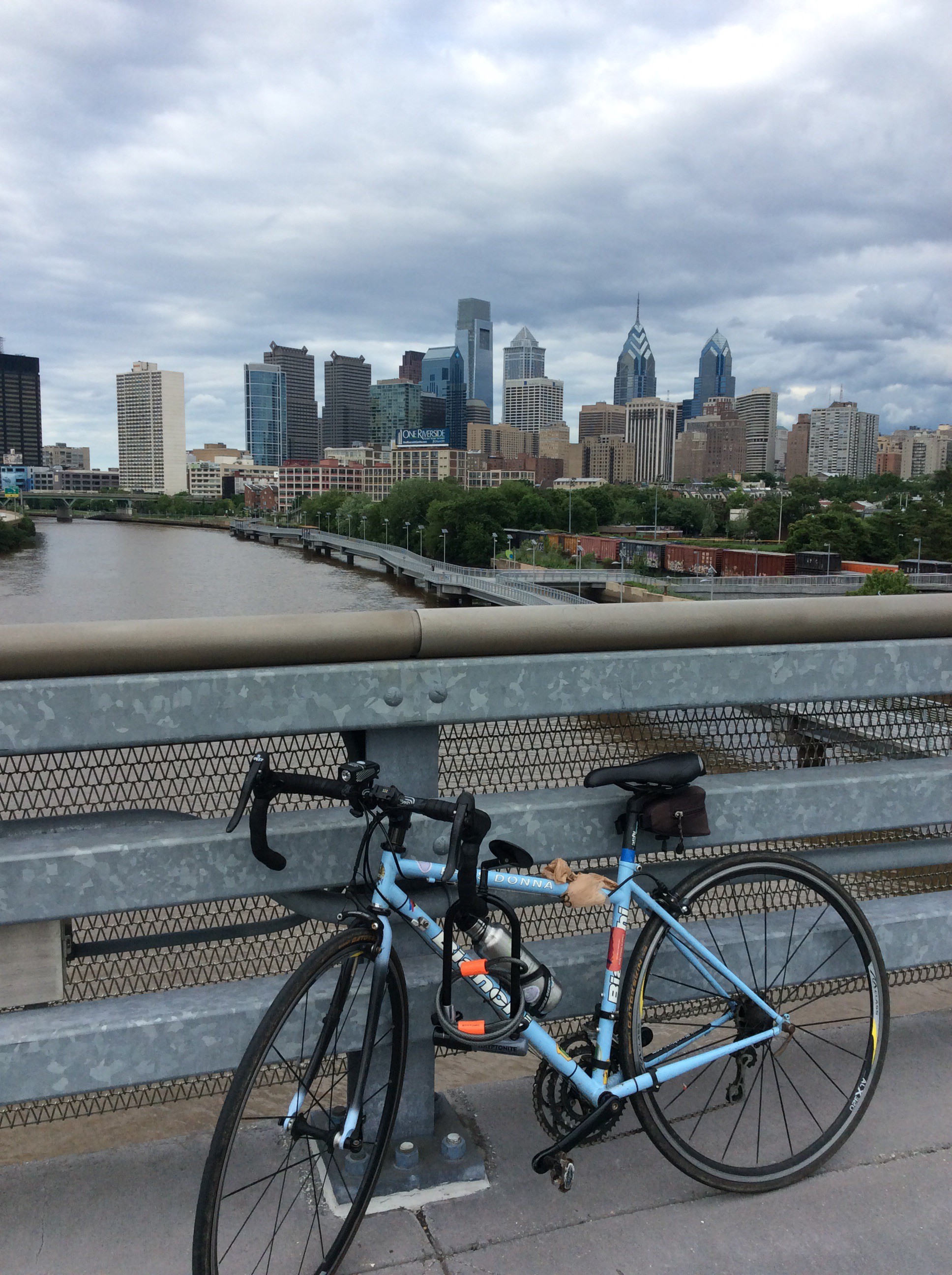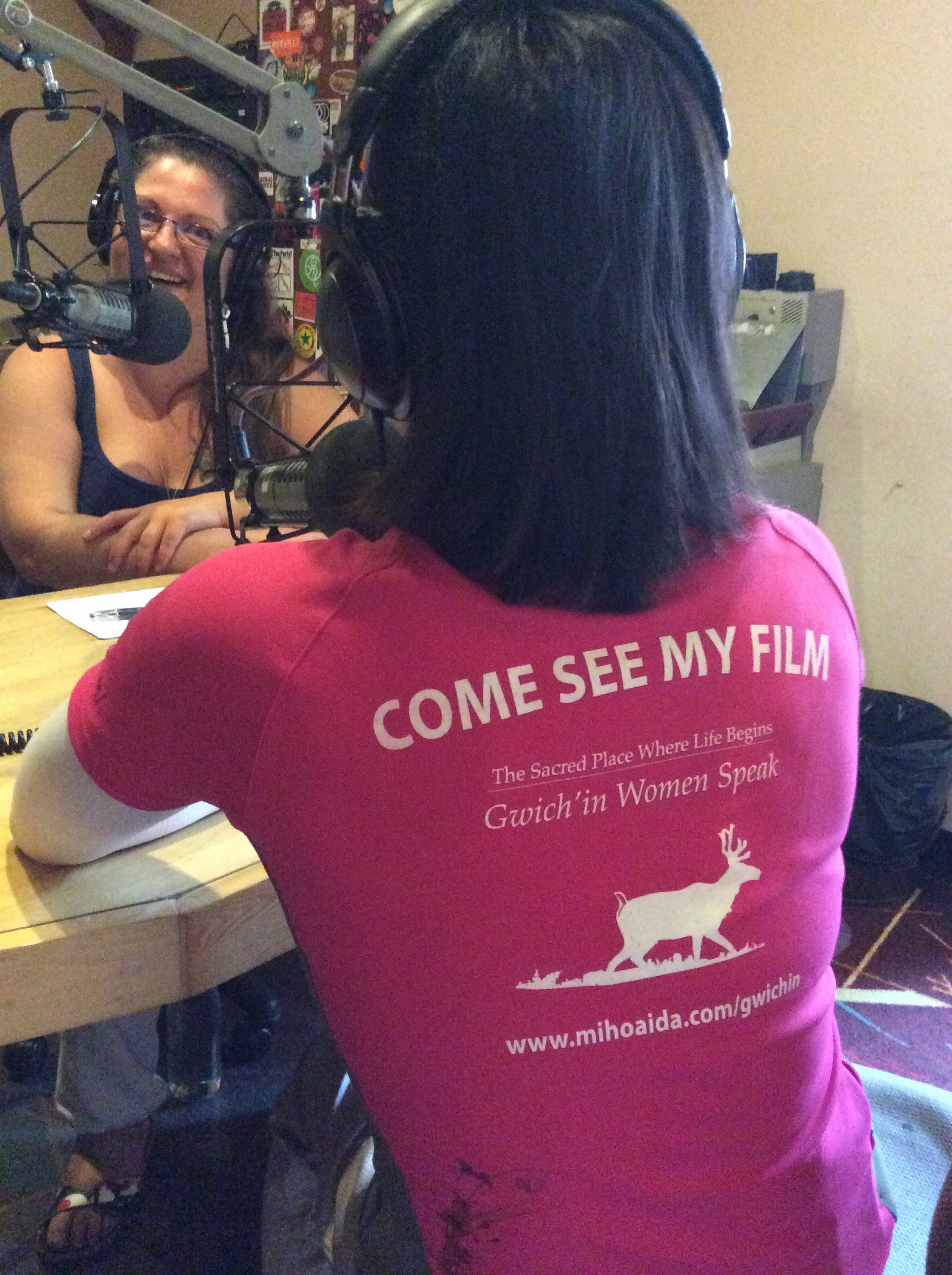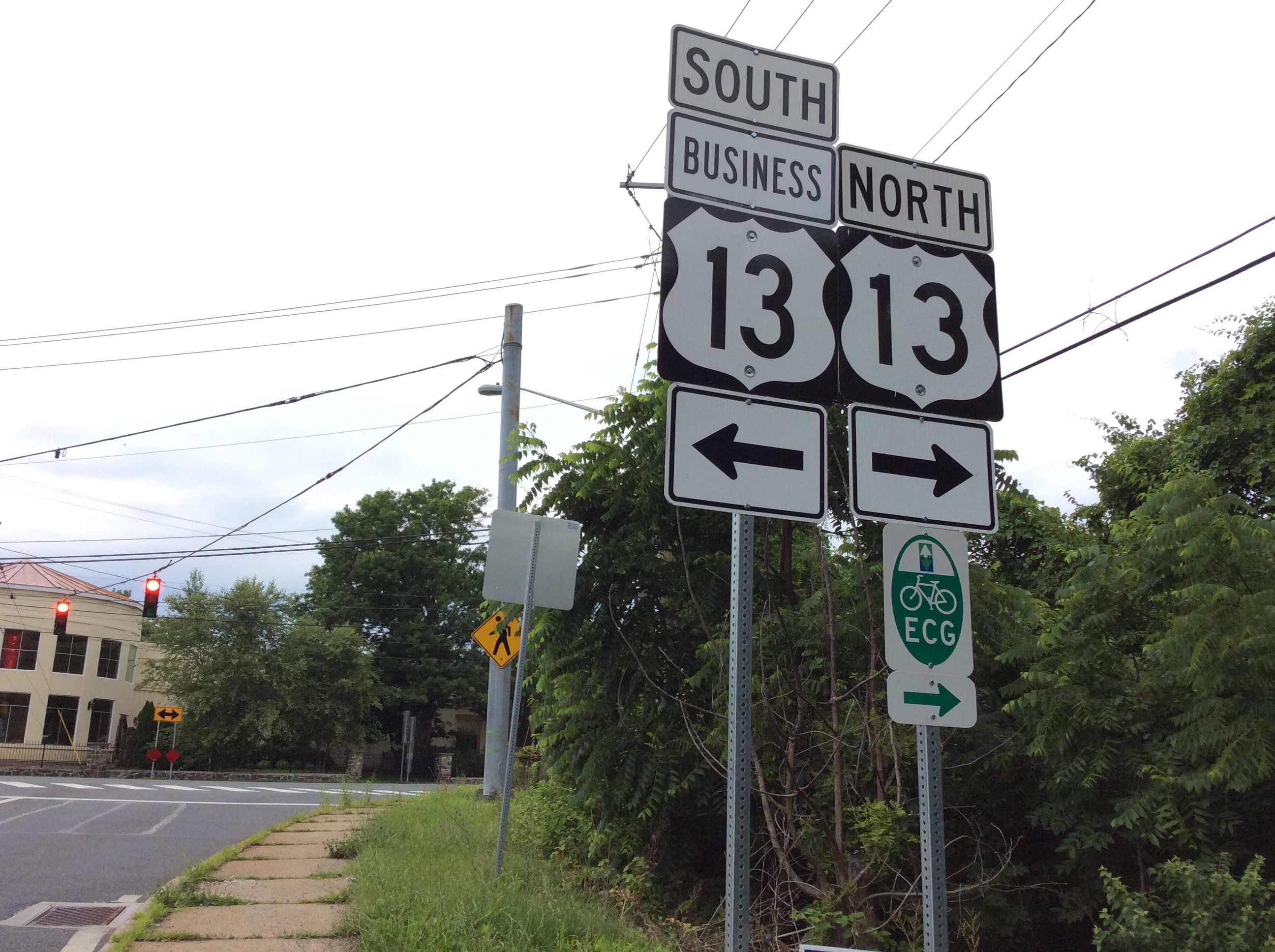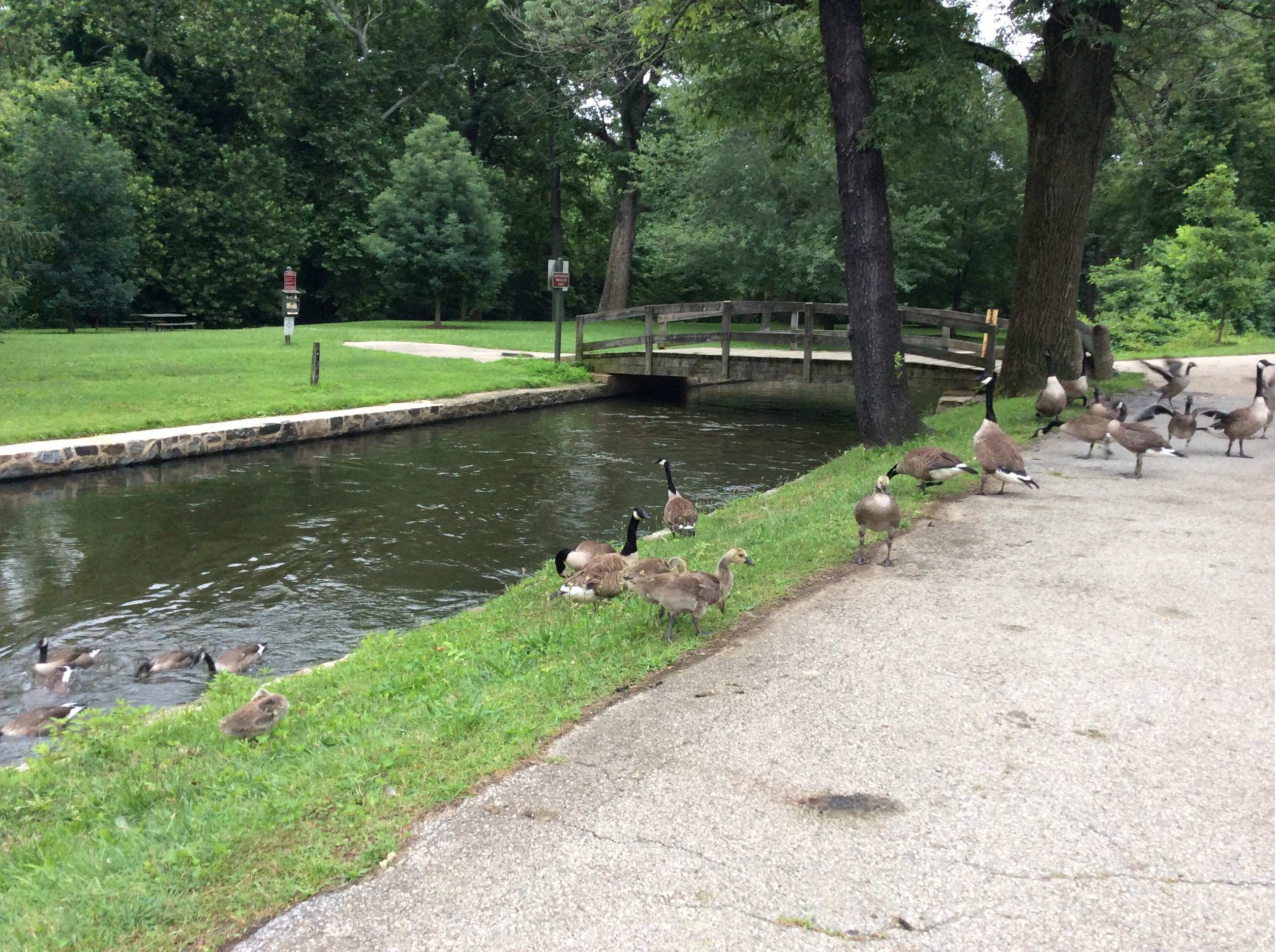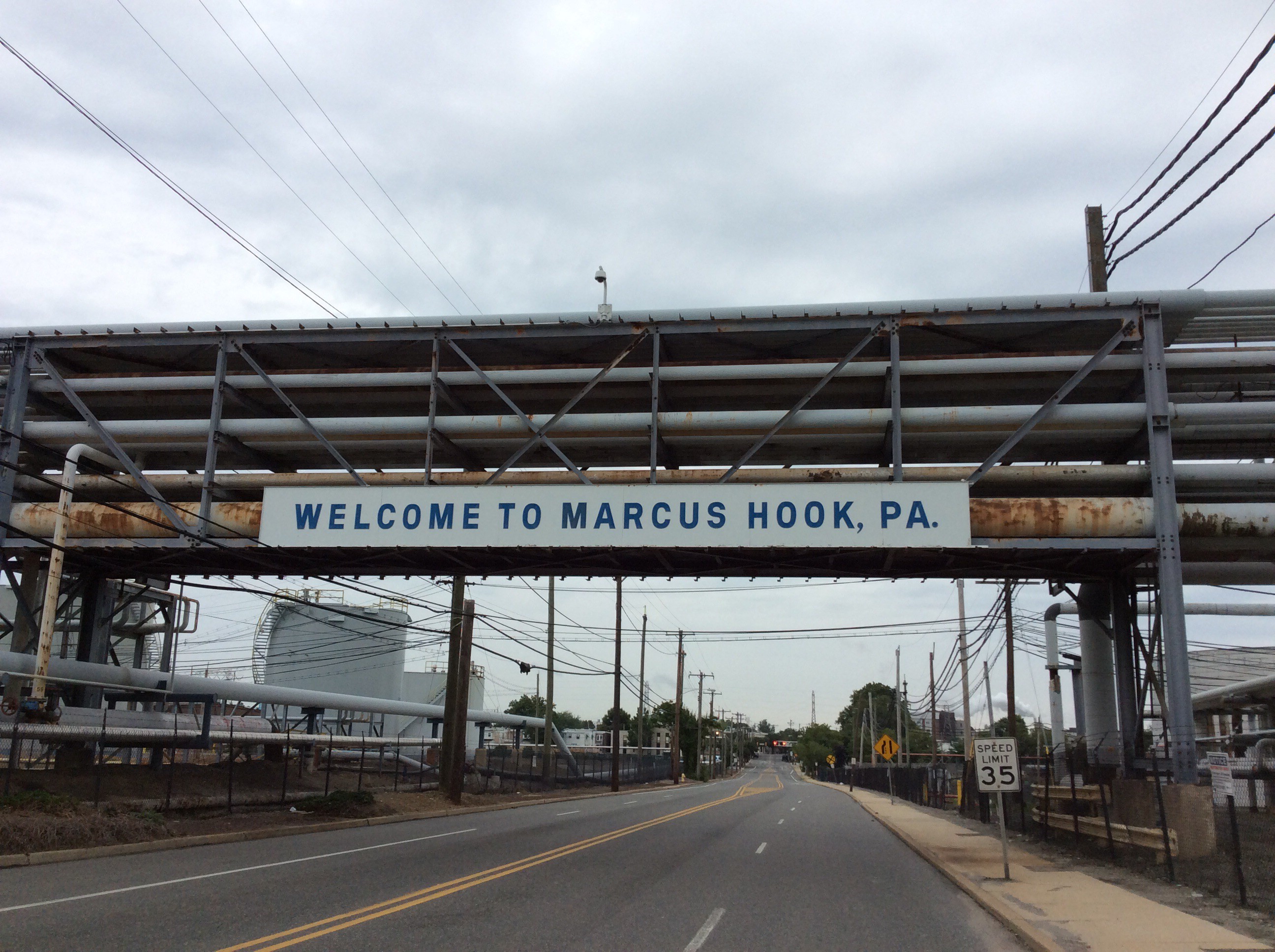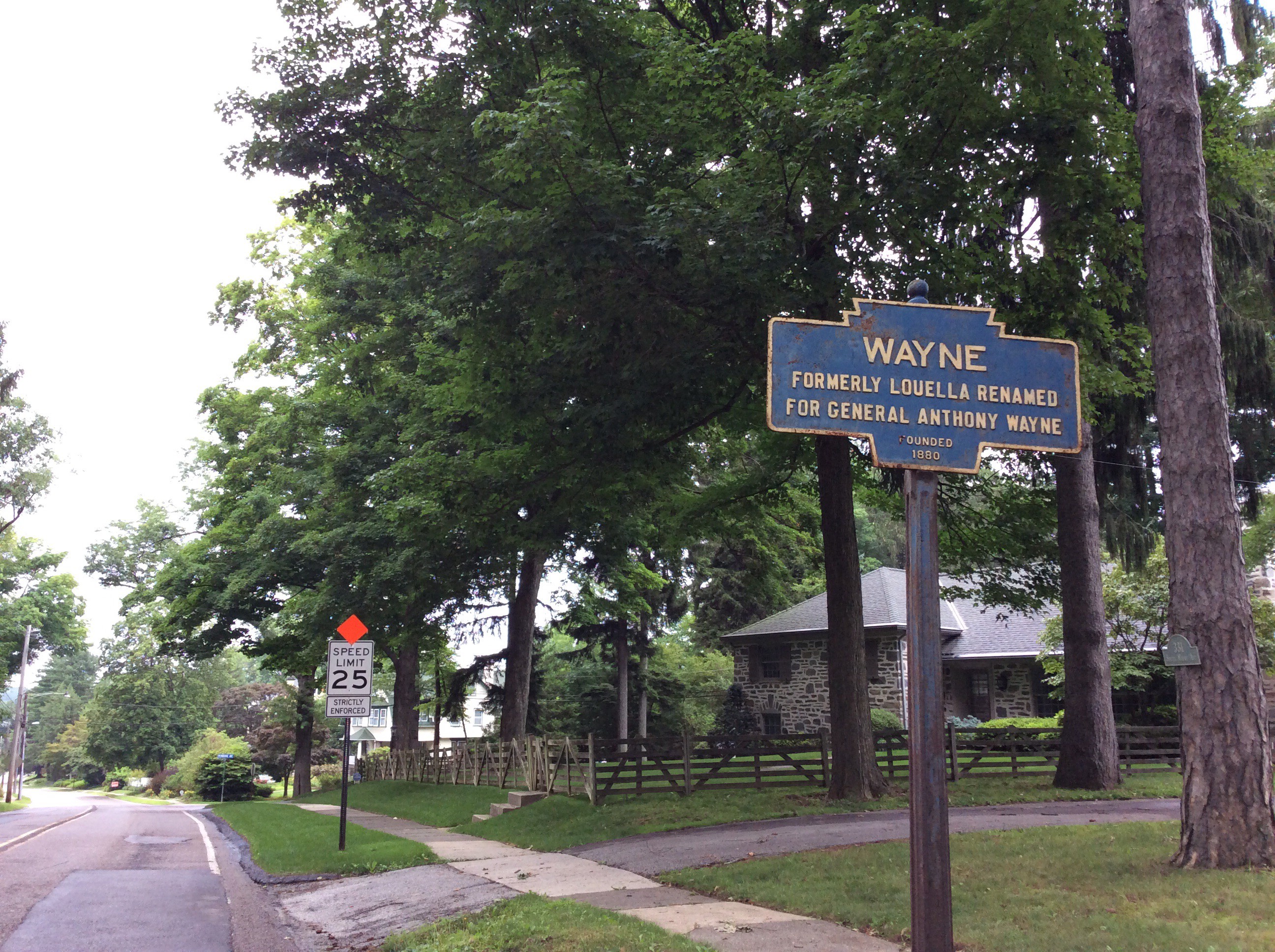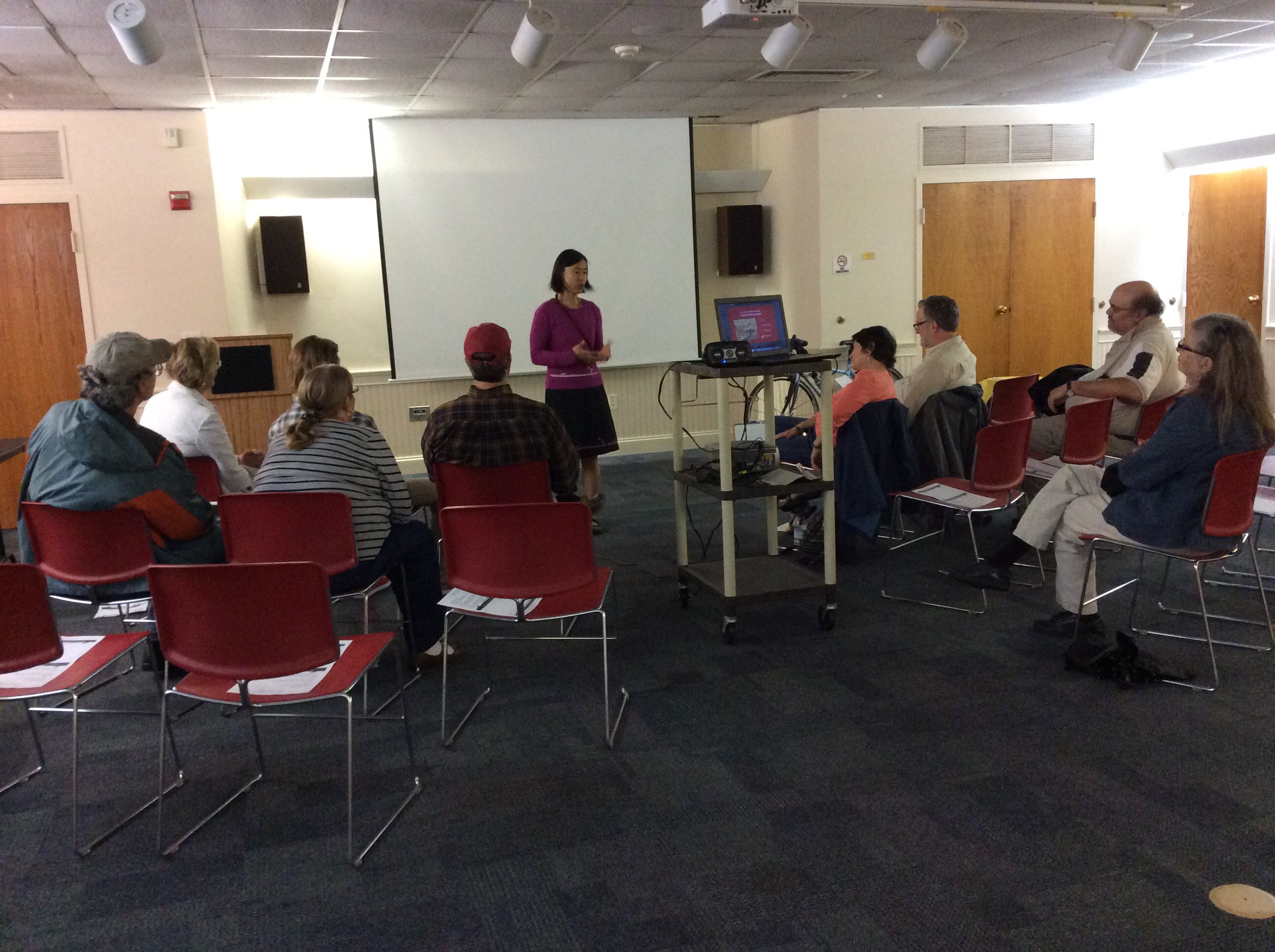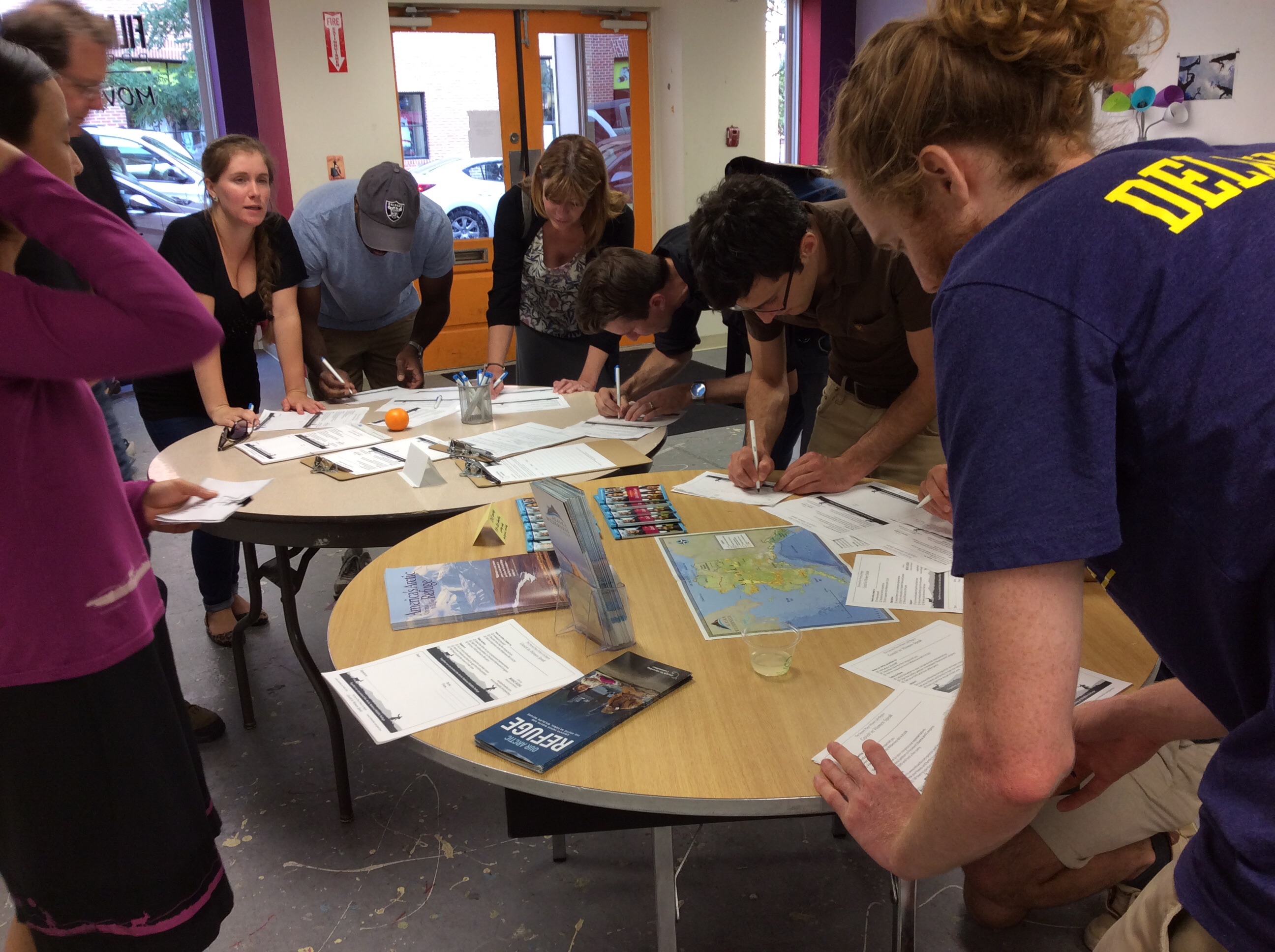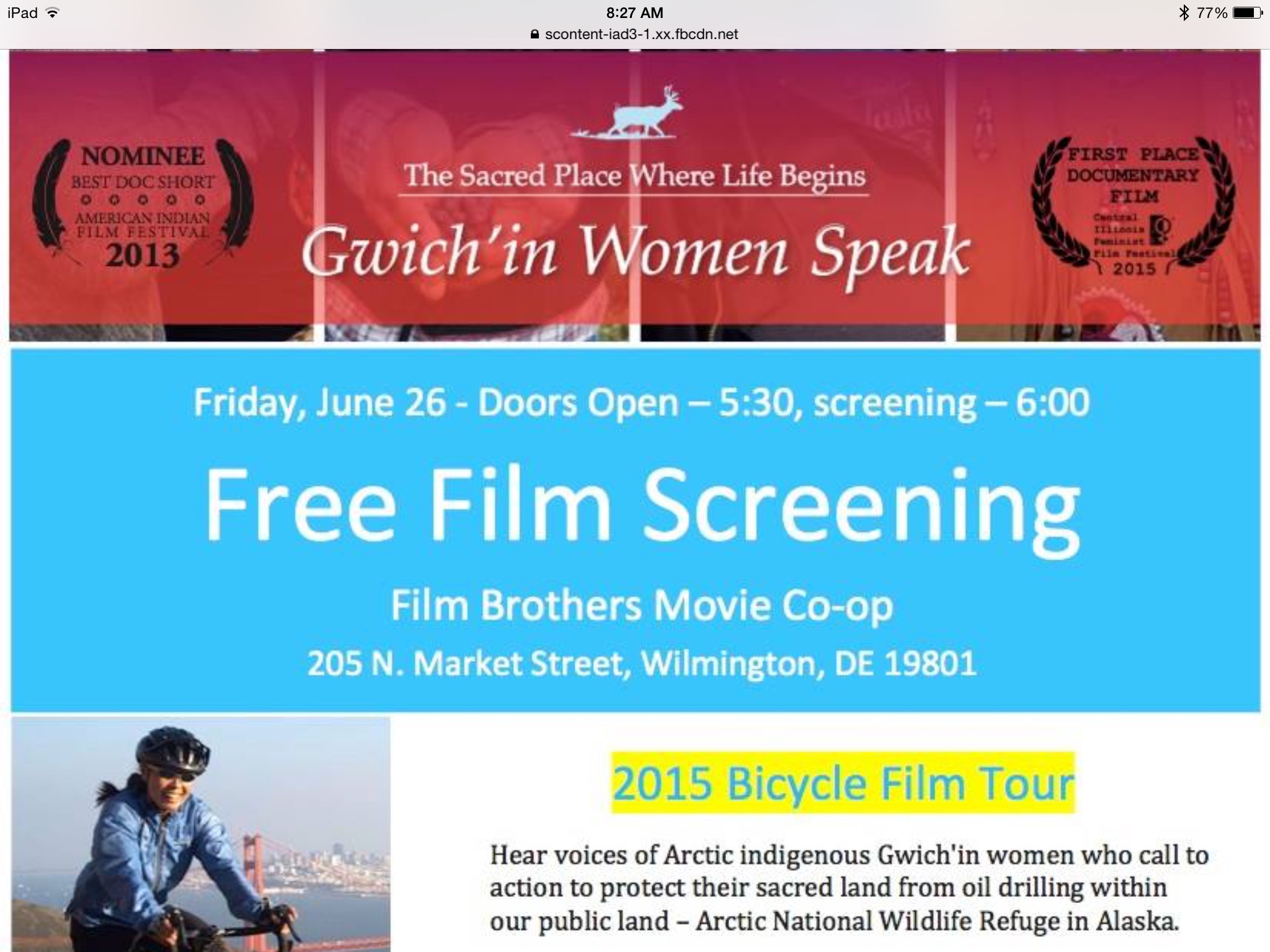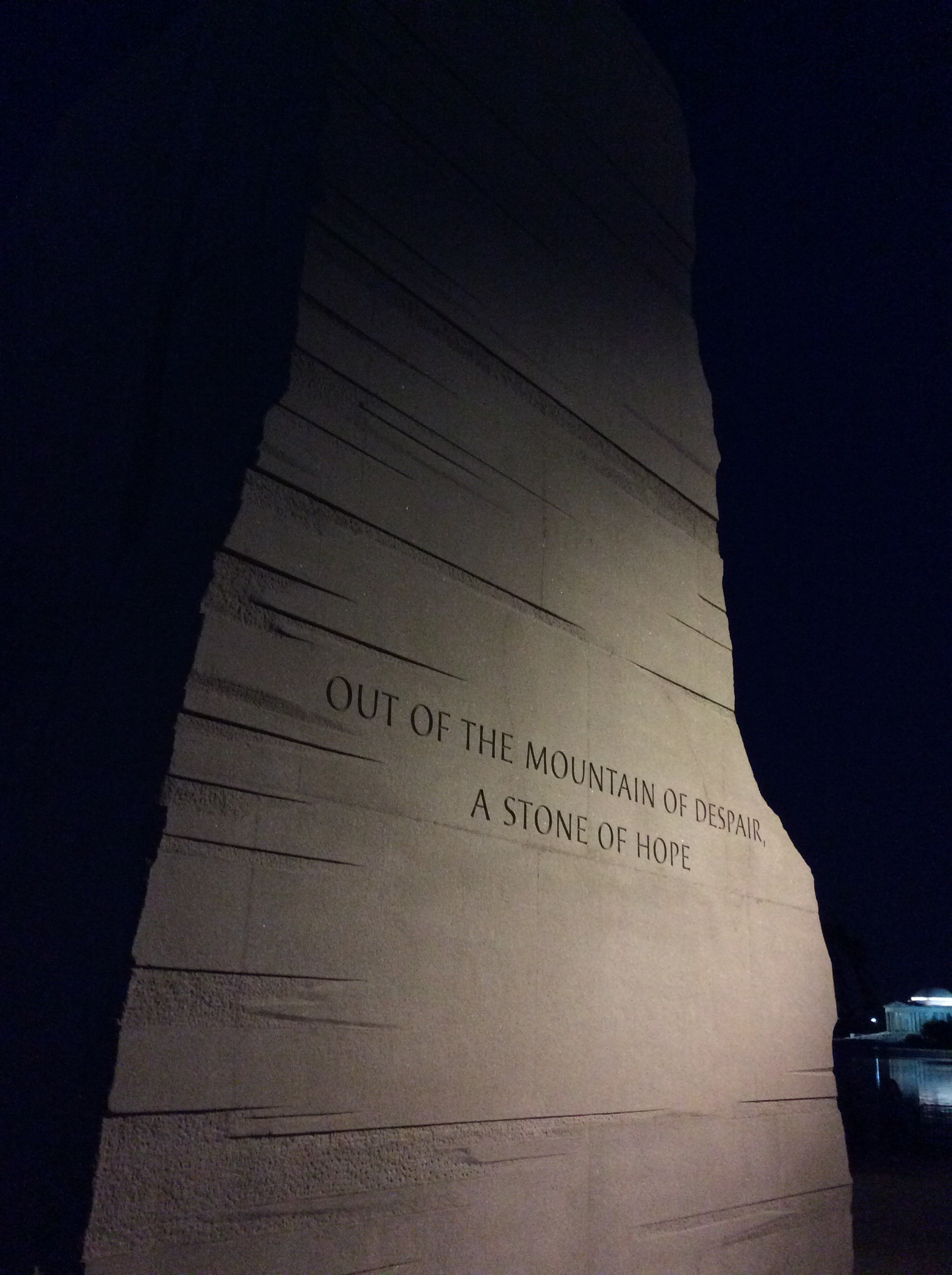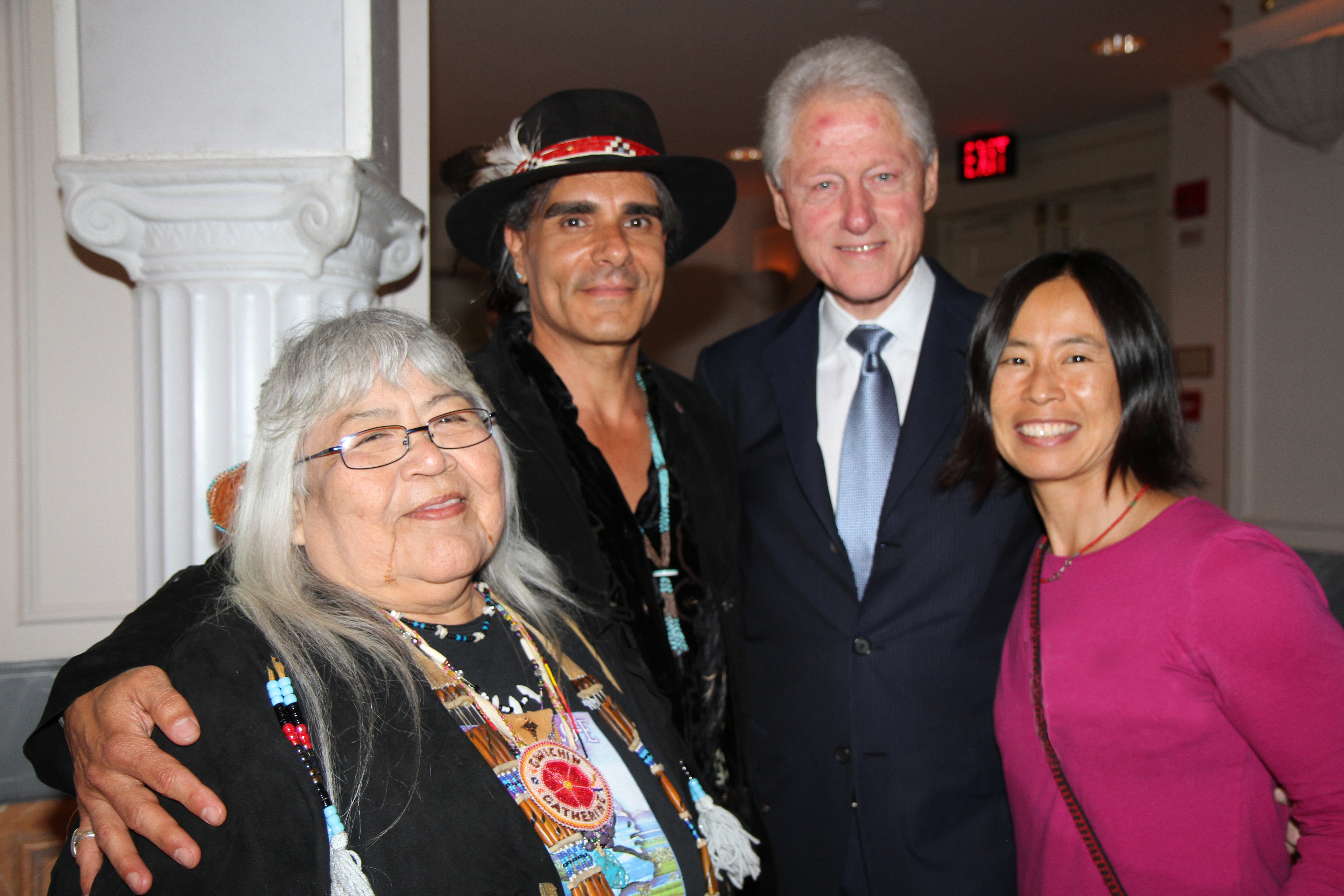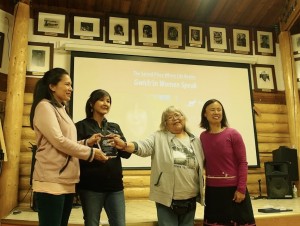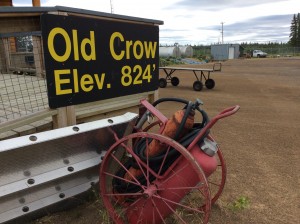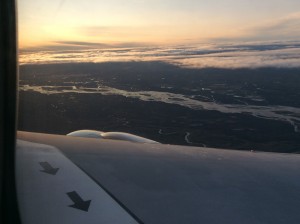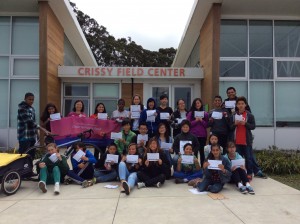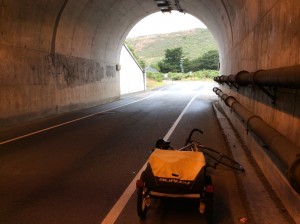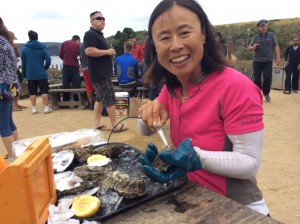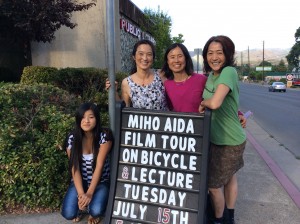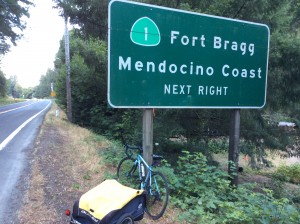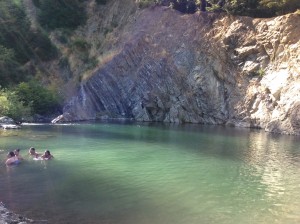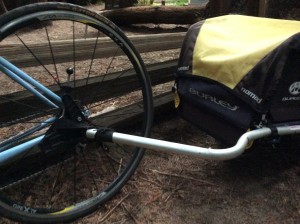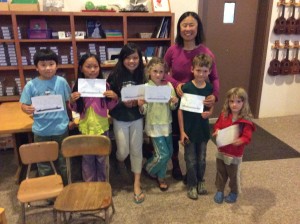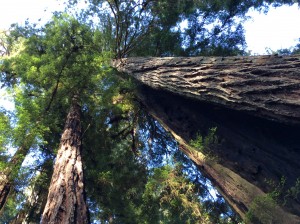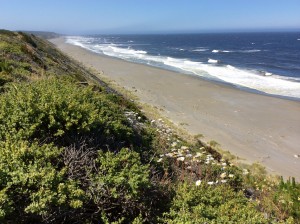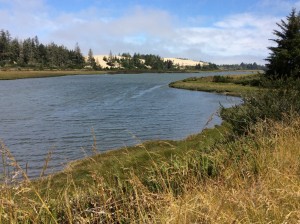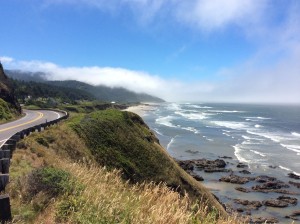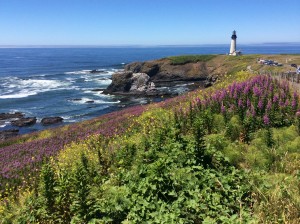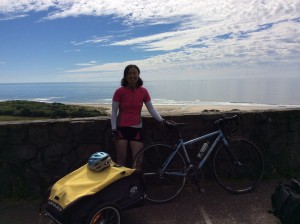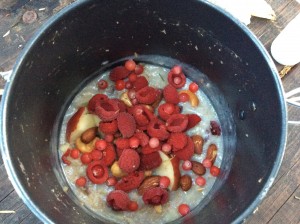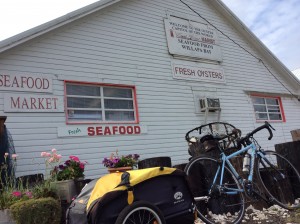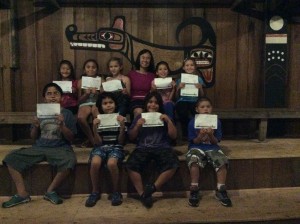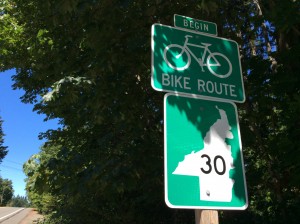7/9/2018
“Eye-opening” is a way to describe my day today.
This morning, Jewell and Kurt from the Lummi nation invited us to their land. They shared their success story of how they stopped the largest proposed coal terminal in North America at the lands of Xwe’chi’eXen, Lummi’s sacred site of Cherry Point in 2016.
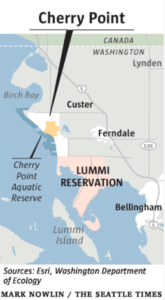 Michelle has worked with them in the past and she arranged this meeting for us. In order to stop the drilling in the sacred land of the Gwich’in, Michelle knew that the traditional conservation movement led by mostly white people has to change by centering indigenous peoples and by supporting them to leverage their land rights. That is how the Lummi successfully stopped the proposed coal port development. If they were able to do that, the Gwich’in may be able to do that too. Kurt and Jewell mentioned that the Section 106 of the National Historic Preservation Act was used to fight for their land rights. It is to claim indigenous nation’s historical and/or sacred value of the land.
Michelle has worked with them in the past and she arranged this meeting for us. In order to stop the drilling in the sacred land of the Gwich’in, Michelle knew that the traditional conservation movement led by mostly white people has to change by centering indigenous peoples and by supporting them to leverage their land rights. That is how the Lummi successfully stopped the proposed coal port development. If they were able to do that, the Gwich’in may be able to do that too. Kurt and Jewell mentioned that the Section 106 of the National Historic Preservation Act was used to fight for their land rights. It is to claim indigenous nation’s historical and/or sacred value of the land.
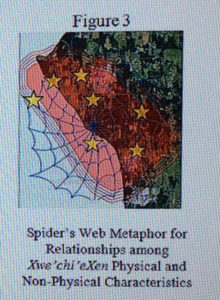 To explain how the Lummi utilized the Section 106, they showed us a map of the Xwe’chi’eXen, the Lummi name for Cherry Point, as the center of a spider web. The map reveals not only topographical space such as distance between objects-of-knowledge marked by the stars. But it also illuminates relational space shown by the strands of the web that connects these ”sites” through the concept of relationship to each other, and to Lummi cosmology. Each strand and strand pattern is signified by cultural constructs and schemas, a cosmology and a way of life that establish the true significance of these associated properties. Their significance in such as cobble stone tools, culturally-modified trees, health-fire rocks and reef-nest anchors, goes well beyond their instrumental value or their material aspect. Instead, all these properties are interrelated landscape/seascape events. The disturbance of any of these material (objects) and/or nonmaterial and connective properties of this pattern, as in a spider’s web, constitutes a disturbance to the historical, spiritual, and cultural whole of the landscape/seascape in a manner, and to a degree that conforms with their aboriginal language, their values, their ancestral knowledge, and their cosmology.
To explain how the Lummi utilized the Section 106, they showed us a map of the Xwe’chi’eXen, the Lummi name for Cherry Point, as the center of a spider web. The map reveals not only topographical space such as distance between objects-of-knowledge marked by the stars. But it also illuminates relational space shown by the strands of the web that connects these ”sites” through the concept of relationship to each other, and to Lummi cosmology. Each strand and strand pattern is signified by cultural constructs and schemas, a cosmology and a way of life that establish the true significance of these associated properties. Their significance in such as cobble stone tools, culturally-modified trees, health-fire rocks and reef-nest anchors, goes well beyond their instrumental value or their material aspect. Instead, all these properties are interrelated landscape/seascape events. The disturbance of any of these material (objects) and/or nonmaterial and connective properties of this pattern, as in a spider’s web, constitutes a disturbance to the historical, spiritual, and cultural whole of the landscape/seascape in a manner, and to a degree that conforms with their aboriginal language, their values, their ancestral knowledge, and their cosmology.
Jewell asked, “Can you prove that the Porcupine Caribou herd and the historic Gwich’in territory is overlapped?” Hearing that question, I got excited because one of the first things I learned from the Gwich’in was that the traditional Gwich’in homeland overlaps with the range of the Porcupine Caribou Herd.
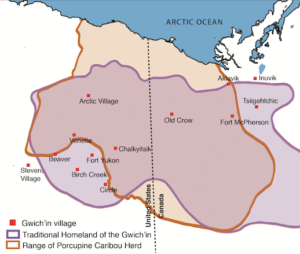 But then, we told him that Gwich’in traditional territory doesn’t extend to the Coastal Plain of the Arctic National Wildlife Refuge, their sacred land, because it is so sacred that no one was allowed to go there.
But then, we told him that Gwich’in traditional territory doesn’t extend to the Coastal Plain of the Arctic National Wildlife Refuge, their sacred land, because it is so sacred that no one was allowed to go there.
Map Sources: This simplified version map was created for my movie based on the detailed map provided by the Gwich’in Steering Committee
We cannot prove there is any historic properties of the Gwich’in at the Coastal Plain. The Lummi was able to prove that Cherry Point is their historic property since there is an evidence of their ancient reef-net site and a 3,500 year-old village site. Does it mean that the Gwich’in cannot use the Section 106 of the National Historic Preservation Act to defend their sacred land?
Jewell kept it cool and continued. “The Section 106 includes the recognition of properties of traditional cultural or religious significance to Native Americans, and you have to use that. When we prepared for our traditional cultural significance report, first page was all written in Lummi to make a point – “if you don’t understand our language, how can you understand us?” Also the report started from time immemorial to show cultural sovereignty understood by our ancestors.”
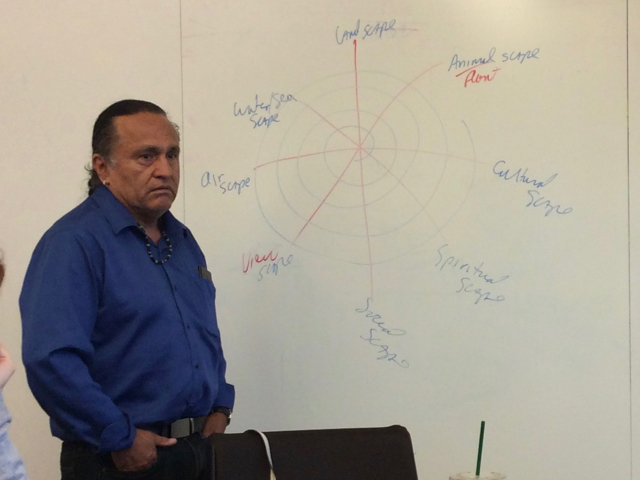 Jewell James of the Lummi Nation drawing all the values that ties to the Coastal Plain
Jewell James of the Lummi Nation drawing all the values that ties to the Coastal Plain
Then Jewell drew all the values that need to be considered under the Section 106 for the Gwich’in: landscape, animal/plant scape, cultural scape, spiritual scape, social scape, view scape, air (sky) scape, language scape and water/sea scape, and how all these are tied to the Coastal Plain to fight for their land rights. “Part of the argument can be made to share tangible and intangible properties and how that would impact the Gwich’in and big landscape. Explain Gwich’in cosmology and how multidimensionally each element is connected to the Gwich’in and the caribou. You can argue the area potential effect on the entire migration route and habitat – where they birth, where they move and where they die. You can add spiritual component in it. Say if you do anything in this area, that will affect the entire caribou herd and the people. If your [tribal] government considers the calving ground and its related area eligible for National Register of Historic Places, then 36 CFR 800 [Protection of Historic Properties] governs the Section 106 process. This is a delaying action and delay is a win,” said Jewell.
That’s right! Delay is a win! Since the provision to drill the Coastal Plain was attached to the 2017 Tax Bill that passed in Congress, the Bureau of Land Management is pushing the process of EIS, Environmental Impact Statement very quickly. Our current strategy is to focus on delaying the EIS. But instead, what if we use the same strategy that the Lummi nation used and utilize the Section 106 for the Gwich’in? What if the Gwich’in claim historic and/or sacred value of the Coastal Plain and the Porcupine Caribou Herd as their historic property? The oral history of how Gwich’in came to be from the caribou can be used to register caribou as Gwich’in people’s relative under the National Register of Historic Places!
I could hear excitement and hope in the voice of Mayra and Virginia. Jewell added, “The Section 106 is a moral process and moral high ground for the public. Tell them [US government] that you are going to win, they are going to loose.”
Then I rode 78 miles with high hopes. It rained at the end of the day. The Pacific Northwest summer rain felt like a cleanse for my spirit and body. It helped me shed layers of doubt one by one. Not only I had an “eye-opening” day but also my spirit was lifted.
Thank you, Lummi nation!!
Figure 3 photo: Courtesy of the Lummi nation
7/8/2018
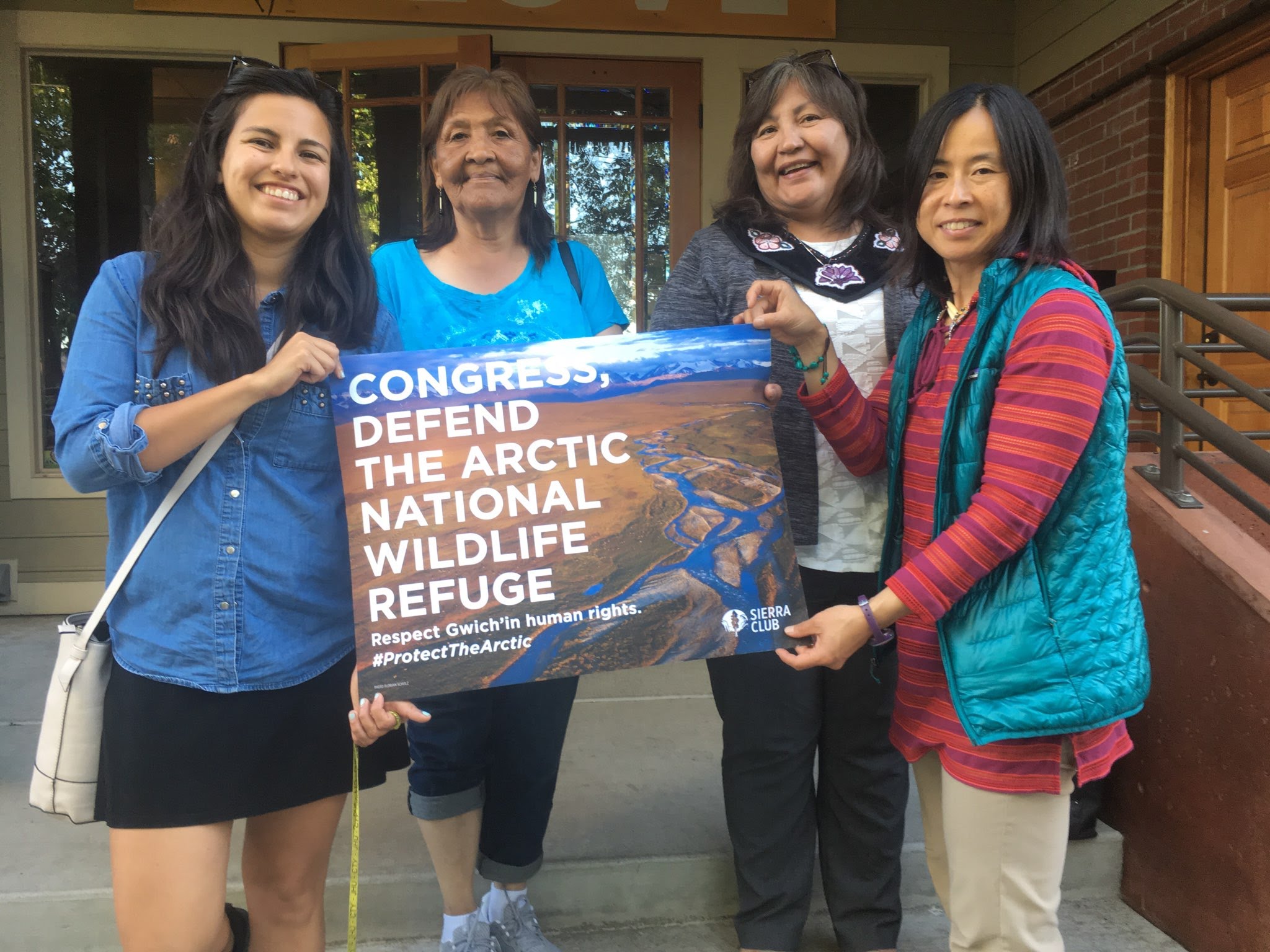 From left to right: Michelle, Virginia, Mayra and me in front of Bellingham Unitarian Church
From left to right: Michelle, Virginia, Mayra and me in front of Bellingham Unitarian Church
“Hi Miho!,” said Michelle, the Arctic Organizer from the Sierra Club. She saw me when I came to the baggage claim. Next to her, Mayra and Virginia, two Gwich’in women from Venetie Village in the Arctic, were sitting on the bench with a big smile. I took a deep breath. This is a big deal. This is a dream come true moment to go on a film tour with Gwich’in women. Tonight we have our very first venue at Bellingham Unitarian Church. “Let me pick up my luggage. I will be right back!”
Then it turned into a mystery. Where is my luggage?! It was packed with my bicycle trailer. The trailer arrived empty. My bag was gone! Luckily, my bike arrived and I have all my bicycle gear so I can at least ride. For next hour, I went through a process of missing luggage but alas, it’s gone. Oh, well. I’ll live.
At Bellingham Unitarian Church, people welcomed us and the house was full. There were over 70 people! They opened the event by inviting all of us to read a prayer to honor indigenous people of this area. Then, Marya and Virginia gave a prayer in Gwich’in language. “I am just going to speak from my heart,” said Marya before the event started. That is what made my film so powerful because the women in the film spoke from their heart.
We’ve come full circle with Mayra and Virginia on this tour with me. Once again and even better this time, the audience not only hear Gwich’in women speak in my film but also they can directly hear from Mayra and Virginia.
An amazing tour has begun!!
7/20/2017
“Remember” – the word was carved on a path that led to the outdoor gallery of the Holocaust memorial.
I dedicated my last few hours of my bicycle film tour to visiting The New England Holocaust Memorial in Boston before my flight back to San Francisco. I stood in front of six luminous glass towers that have millions of numbers, representing the infamous tattoos inflected on many of the victims’ arms. I got chills by just looking at these astronomical numbers reaching 54 feet high into the sky on these towers.
I didn’t know exactly why I felt that I had to come here. But I did. So I came. When I walked through the memorial, it all became clear. That I meant to be here to reflect on my tour and to make a sense of all that happened in a space dedicated to memory and reflection. This memorial was built to reflect on the impact of evil during the WWII and to this day. It represents the effort of many who came together to create a space to remind us not to repeat the same mistakes. They are towers of hope and aspiration as they stand on the Freedom Trail.
I walked through the path and resonated with a sentence carved on a piece of black granite at one of two entries:
“…… As you walk this Freedom Trail pause here to reflect on the consequences of a world in which there is no freedom – a world in which basic human rights are not protected. And know that wherever prejudice, discrimination and victimization are tolerated, evil like the Holocaust can happen again.”
Protecting the coastal plain of the Arctic National Wildlife Refuge is protecting the basic human rights of the Gwich’in. Until we champion this cause and many other human rights issues that exist in the world, we know that there is no freedom – even these problems may not directly impact you. Because if we let the evil take something that is so fundamentally necessary away from someone, we are allowing a system of violence to dictate our world. That will eventually come after you. This thought was perfectly summarized at the other end of the entry:
“THEY CAME FIRST for the Communists, and I didn’t speak up because I wasn’t a Communist.
THEN THEY CAME for Jews, and I didn’t speak up because I wasn’t a Jew.
THEN THEY CAME for the trade unionists, and I didn’t speak up because I wasn’t a trade unionist.
THEN THEY CAME for Catholics, and I didn’t speak up because I was a Protestant.
THEN THEY CAME for me, and by that time no one was left to speak up.”
The time has come. All of us must speak up in one voice.
The news broke out two days ago that the House of Representatives Budget Committee’s 2018 fiscal budget includes a thinly veiled provision aimed at drilling in the Arctic National Wildlife Refuge. Now that our president and the House have put out their budgets, all eyes are on the Senate. As I write this blog, we need 2 more – yes, just 2 more – senators to reach a total of 41 co-sponsors for the Arctic Wilderness Bill to filibuster in case the drilling in the Arctic gets pushed at the Senate.
It means that we have this incredible opportunity to speak up and take action together. Maine’s two senators will likely become key players for the Arctic. Both senators, Angus and Collins, have been supportive of the Arctic and we want to ensure that they will be this time as well. For them to co-sponsor the bill, it is always the best if their constituents or people like me who is not a paid lobbyist to directly ask for their support.
For this reason, I wanted to finish my tour with a visit to the office of Senator Susan Collins in Portland. Glen, the director of the Sierra Club Maine, coordinated a meeting with her staff member for me. My wish came true! It was incredible to be able to share my story of this film tour with Kate, senator Collins’ staff. We handed precious 76 letters written by people who came to my screenings. I read one letter from a 13-year old kid who wrote:
“…… If you vote yes to drill[,] the whole eco system will be messed up including right here in Maine because of migratory birds, so please make a better future for us[.]”
We let Kate know that Collins would certainly leave a legacy, becoming the first Republican senator to co-sponsor the bill and making her position clear to her constituents in Maine that she also cares about the Arctic. Then, I learned that Collins and Lisa Murkouski, Alaska’s senator, are good friends.
“Kate thoroughly enjoyed meeting you yesterday. We are putting together a thank you note for your lovely book and would love your mailing address. I did get a chance to watch your film, and I really enjoyed it. Please expect something in the mail over the next few weeks.”
I never received a thank you email from any office visits I have done in the past. After reading this nice email, I felt accepted and appreciated. I am hopeful. At least, we can work together to demand Collins to vote against budget that includes drilling in the coastal plain if she feels obligated to not co-sponsor the bill due to her relationship with Murkouski.I need to remember that any oppression is an opportunity for people to unite and speak up in one voice. Any obstacles are there to overcome. Challenges are there to be met with faith, creativity and courage.
“Remember” – the word carved on a path of memorial reminded me of all the people I met and the connections I made in Maine. I will remember the enormous support from these people and know that they are now our friends for the Arctic. I met right people at a right time at this remarkably important state for the Arctic. They will remember the film and the message of the Gwich’in women. These are the people who are called to take action. I will remember to continue what I can to share the Gwich’in women’s voice through my film. I am part of a movement where we speak up in one voice to protect the Arctic for all. I will remember that millions of people who had no choice but to sacrifice their lives so that I would learn from our mistakes and evil like the Holocaust or a massacre of American Indians can never happen again. I will remember that everyday people have given their lives to pave a better future for me so that I could live this good life. I will remember that it is my responsibility to leave a better world for generations that come after me.
7/17/2017
Everything happens for a reason. The fact that my film tour in Maine took place concurrently when the Wabanaki, the people of the first light and the keepers of the Eastern Door, open their home to welcome people from all over the world to begin the process of healing the common wound that we all carry from our shared history of violence.
Jacqui who wrote me an email to let me know about this event convinced me to get up there to catch the tail end of the ceremony and share my film with people. I knew it would be logistically difficult for me. I had to ride 71 miles north to get to the ceremonial site on my bicycle after my last film screening on Sunday afternoon in Bar Harbor.
At the Bar Harbor screening, Starr, the Sierra Club organizer showed up. She said, “I just came back from the ceremony and people there are expecting you. I can’t take you all the way, but I have a van at home and I can take you close to the site.” Daniel, a participant and Krayton, my friend from California who works in Bar Harbor in the summer, both offered me a ride to Starr’s home. Yes! It’s all going to work out!
That evening before dusk, I biked the last stretch of 15 miles to Nibezun, the home of Wabanaki people, where the ceremony was held. The road was wet from a thunderstorm that came earlier. If I arrived an hour before, I would have been drenched from the storm. As I rode along the Penobscot River as the moisture on the road evaporated in the evening sun, I thought I meant to be here. Everything happens for a reason.
I arrived at the site and people greeted me. Out of so many people, Raewyn, the Maori educator I met earlier last week at the Indigenous Culture Symposium, was right there. Tom, the leader of the team of Maori, Raewyn and I had a chance to connect more. By the end of the evening, they both showed an interest in seeing my film the next day. The last day was dedicated to a closing ceremony. I knew it’s not a space for me to bring my own agenda. All I knew was if it was meant to be, it would work out.
At the closing circle today, Sherri, the organizer of the ceremony said, “If you are here now, it’s all good.” Her words comforted me since I missed the most of the ceremony. After the closing ceremony, I lined up to say thank you and ask for a permission to show my film. Sherri and Tim, another organizer, both agreed that would be a great idea.
Within an hour with Tim’s help, I had a group of Maori visitors from New Zealand, Bobby, one of the clan leaders and spiritual leaders of Seminole people of Florida and his friends, Wabanaki people and their friends watching the film. Shortly after that, I had the second screening with people who attended the ceremony. They all appreciated the film, the work we do, and those who live in Maine promised to call senator Susan Collins to ask her to co-sponsor the Arctic Wilderness Bill.
On the ride back to Portland, Maine, I got a message from Glen, the Sierra Club Maine director. He said that he was successful in making an appointment with a staff member of senator Susan Collins for me to visit in Portland tomorrow. I have a total of 91 postcards and 76 hand-written letters that I collected on this trip for senator Collins. I have a chance to hand them directly to the staff member and share my story of this bicycle film tour.
There were so many things that were unsure on this trip. All I wished was to share the film with people in Maine, with right people from around the world and be part of our effort to convince our senator to co-sponsor the bill.
They all happened in last 9 days. With so many people’s support, it was possible. Magically. Beautifully. The universe have put me in a right place with right people.
Everything happens for a reason.
7/14/2017
Photo by Martha Ehrenfeld
It’s all about connection. I am convinced that’s how people are moved to take action, support a cause and do things for you.
Martha believes in me and the message that I deliver to the world. People like her work for you to create and promote events, pouring their own time and money. On this film tour, I am so lucky to have Martha, my friend and this summer tour’s biggest supporter who lives in Maine. She has been working tirelessly to set up venues in Portland, Damariscotta and Camden.
“I put an ad for the paper. Here you go,” said Martha this morning. She showed me the ad on the local newspaper and sure enough, the colorful flyer was there! Martha has been promoting these events through social media, newspaper ad and word-of-mouth. She also took me to the Damariscotta’s local farmers’ market this morning to promote the event there.
At the farmers’ market, I connected with locals. Dick who lives here kept me a company and showed up at the event in his twin recumbent bicycle. Liz who lives in Camden told me that she would come to tomorrow’s event at Rockport Opera House. She immediately checked out my website and started promoting the event through her social media. I enjoyed introducing myself to Martha’s friends and strangers, asking them to join us for the event tonight here.
At 5pm, when doors opened, people started to come in. I asked, “How did you hear about this event?” Some said through the Damariscotta River Association. Some saw the newspaper ad. Many people came because they saw us at the farmers’ market this morning or heard directly from Martha or the Association.
I believe that people show up because they care. They care because they feel connections. Many connections are made through experiences, relationships and conversations. The fact that Martha’s friend Kathy who hosted me in Portland showed up with her family all the way from Portland tonight is a great example of that. Another example would be my former colleague and friend Heather. She lives in the area and joined us despite the fact that she had a really long week of work.
If making connections is really the way to move people, it is my job to help people connect to the Arctic through my presentation. The title of this summer’s tour is “Solidarity from Maine: Protect the Sacred Arctic Refuge.” I open my speech by asking people to brainstorm what connections we have between the Arctic and Maine and I ask them to share with their neighbors. By doing so, they connect with other participants and feel that we are all in this together. I also ask questions such as:
“Do you have a place that is sacred to you?”
“What’s important to you?”
In my film, the Gwich’in women answer these questions. I want my audience to reflect on their own special place and things that matter the most to them before showing the film. This helps my crowd to emotionally relate to the Gwich’in women.
I hope I am doing my job. I usually know by what people write in the letters to their senator. A few from tonight and last few days read:
“Protecting the Arctic National Wildlife Refuge should be important to Maine because we share a common concern for our environment and the indigenous people who reside in this special place. The time has come for you to stick up for the Gwich’in people and mare Maine provd. Gwich’in Women Speak is a film you should view to see the real connection Maine has to this land and why its sacredness needs to be protected with your co-sponsor of S 820 Arctic wilderness Bill.”
“ANWR [Arctic National Wildlife Refuge] is a long way from Maine, but we are all connected, and drilling in sensitive and sacred places is wrong, and affects us all.”
“As Mainers should know, destroying ecosystems destroying ways of life and what is lost can never be restored.”
“I also saw many similarities between the people of Maine and the Gwich’in people – namely their passion for protecting our natural resources.”
“I just watched this amazing documentary. We are all connected. All of these lands are the property of the people of this country. It is our responsibility to protect while wilderness still exists in this country.”
“One of the many reasons I love Maine is because of the environmental stewards in the state. It is very evident that Mainers care about the environment. Why would we want to destroy a people’s way of life? Why would we want to destroy the wilderness of the Arctic National Wildlife Refuge? We need beauty, culture and nature to make our lives full.”
“Our lands are sacred for us in Maine. They are also important in Alaska where indigenous people depend on the environment to live.”
“I want to speak for Arctic wilderness. Just as our estuaries provide habitat for nursery stocks of fish and shellfish in Maine, the Arctic coastal plain is an important nursery for caribou. That population gives life to indigenous tribe of the Arctic. Please support the Arctic Wilderness Bill.”
“I am 13 and a student at the earth stewards week at Wells Reserve. If you vote yes to drill, the whole eco system will be messed up, including right here in Maine because of migratory birds, so please make a better future for us.”
It’s all about connection. Again, I am convinced that’s how people are moved to take action, support a cause and do things for you.
7/11/2017
Artwork: from Healing the Wounds of Turtle Island · Hosted by Sherri Mitchell – Wena’hamu’gwasit
“I wanted to make sure you saw this. I don’t know when you arrive but I felt it would be a shame if you were here when this was going on and did not know about it,” wrote Jacqui 5 days ago. She found about my bicycle film tour through online post and reached out to me. I read her email carefully.
I found out that Indigenous Cultural Symposium is happening on July 12th at the University of Maine in Bangor. This symposium invites Indigenous leaders from the United States, Canada, New Zealand, and Mexico. There will be a space to learn about the challenges and successes of Indigenous peoples from across the world. I gotta go!
Jacqui’s email also included information about a gathering called “Healing the Wounds of Turtle Island” from July 14th-17th at Nibezun, 28 miles north of Bangor. The invitation said:
“Prophecy of the Eastern Gate:
Our ancestors tell us that the Eastern Gate is where we will gather to begin the healing of this land. It is here in the East where first contact was made between the Native peoples and the newcomers. It is here that the first blood was spilled between our people, and our history of violence began. So, it is here on this same land that the healing must begin.
The Wabanaki, the people of the first light, are the keepers of the Eastern Door. We are the first peoples to greet Kihsus, the Sun, each morning, and Nipawset, the Moon, each evening. Now, we open our hearts and our homes to greet all of you, so that together we may begin to heal the wounds of Turtle Island and set a new path forward for all life.
This ceremony will be a coming together of people from all over the world, to acknowledge the common wound that we all carry from our shared history of violence. No matter where we come from, we all carry the wounds of historical trauma within us. Whether we were the victims, the perpetrators, or the witness to that violence, that wound is imprinted on our spirits. Now, the time has come for us to acknowledge that wound, together, so that we can heal it and begin working to together to heal Mother Earth.”
I gotta to go to this one too!! Unfortunately, my film tour schedule overlaps with this ceremony. But I can catch the tail end of it if I can get a ride to Bangor after my last screening in Bar Harbor. I can potentially share the film with indigenous people and their allies in Maine if I stick around a little longer after the ceremony. So I called the airline right away after reading this email and changed my return flight. I also changed my plan so that I can be in Portland, Maine by Tuesday night to get a ride to Bangor on Wednesday morning to make it to the Symposium with Jacqui.
It’s interesting how things work out. I wanted to connect with indigenous community in Maine but no success without knowing the right person. The universe connected me to Jacqui who is connected to the Native people in Maine. I am thrilled to meet people, learn their struggles, hear their stories and share mine.
I made it to Portland last night. The ride from Boston to here was smooth. I feel pretty strong and well prepared. I am excited.
Jacqui is right. I am all the way from California to spread the word about the struggle of the Gwich’in people through my film. It would have been a shame if I were here when a week full of indigenous movements is going on and did not know about it.
Here it begins for the 4th summer of my film tour!
Cheers!
12/23/2016
Episode five: Together We Stand
In this last episode of the video series “Standing Rock Women Speak” shares an interview from Melaine and her sister, Jacinda Begay, speaking about how all people came together at Standing Rock and how we must continue this effort globally for the future generations.
“From the north a black snake will come. It will cross our lands, slowly killing all that it touches, and in its passing the water will become poison,” read Lakota end-of-times prophecy. Lakota people believe that the Dakota Access Pipeline is the black snake. In order to kill the black snake, the sacred circle needs to be mended. The sacred circle is a circle that has four different colors: black, red, white and yellow. In this context, these four colors represent four different races. “I truly believe now that within our sacred circle all these different nations are coming together. We have black, we have the red, the white and the yellow. Every nation is here to help with this fight,” said Jacinda.
At Standing Rock, I saw different people from all walks of life coming together and working together under a guidance of Standing Rock leaders. The guidance was clear: this is an indigenous led movement, on indigenous lands, and non-Native people were welcomed and asked to become powerful allies, with deep respect for indigenous sovereignty and leadership. Standing Rock Solidarity Network posted educational resources for non-Native people to be most effective in this movement. The welcome orientation was given to us based on these resources by non-Native allies: a white woman from Minnesota and a black woman from the San Francisco Bay Area. The orientation helped to communicate important messages such as:
- We follow Indigenous Leadership AT ALL TIMES
- We Conserve and Share Resources
- We Work
- We Communicate Mindfully
- We understand this moment in the context of settler colonialism
- We DECENTER settler worldviews/ practices and RECENTER Indigenous worldviews/practices and leadership
- We understand cultural appropriation and make every effort to not perpetuate it.
These messages were delivered with Lakota seven values: Prayer, Respect, Compassion, Honesty, Generosity, Humility, and Wisdom. This inclusive approach gave me a hope, especially after the election that revealed shamefully divisive aspects of the United States — racism, misogyny, colonialism, bigotry, economic inequality driven by ignorance and hatred. Standing Rock symbolizes a monumental effort to change every one of these aspects. Across the country and beyond, people stood up to stop the Dakota Access Pipeline (DAPL), organized and took action.
Among all actions, one that stood out was the divestment movement that engaged people from around the world. Divestment movement is one of the most powerful, creative and effective consumer actions anyone can take by engaging people’s financial power. The idea is to withdraw money from financial institutions such as banks that invest in things you don’t believe in. If enough people close their accounts, companies loose their capital. If they don’t have money, they can’t build. So they have to withdraw from whatever projects they are involved. This works as long as we live in the world of capitalism. Brilliant! Isn’t it?
On September 6th, Food and Water Watch published an article that exposed 35 financial institutions that would benefit from the DAPL. The company list includes major banks in the US such as Citi Bank, Wells Fargo along with Chase, ING Bank, PNC Bank, US Bank, Bank of America to name a few as well as international banks from Japan, Europe and Canada. If you have a bank account, credit card, loans, retirement and investment account through these banks, please check out DeFundDAPL and close your account today. DeFundDAPL provides critical online resources on how to close accounts and where to reinvest your money in more socially and environmentally responsible financial institutions such as my bank: New Resource Bank in San Francisco. Many people took such critical consumer action and organized their community to protest in front of these banks.
As a result, as of today, twenty-eight million dollars have been withdrawn since November 25th from financial institutions that directly invest in the Dakota Access Pipeline. It is about a pace of U$1 million each day regardless of our victory that Obama administration halted the construction of the DAPL. We must continue divesting so that no future administrations have a chance to revive the black snake.
Actions that led to a victory for Standing Rock reflected every strategy that needed to be activated to change the world: direct action that created a human shield on site to hinder construction; consumer action that divested from financial institutions that are making money off of the DAPL; persuasive action that helped to spread the word via social media, music and art, and educate people about the issue; political action that mobilized people to sign petitions, make phone calls as well as filed law suits to fight in a court; and finally, spiritual action led by indigenous leaders to keep this movement indigenous-centered and create unity among all people under the power of prayers. Such strategies can be used as a blueprint for other communities that experience similar systematic oppression and cultural genocide to win their battle.
Speaking of other communities that experience similar situation to Standing Rock, Okinawa in Japan is one example. Just like Standing Rock Sioux, Okinawans have endured and survived 500 years of colonization by the US and Japan.
Okinawa was an independent kingdom called Ryukyu until early 1600 when Japanese government invaded and occupied the island. During WWII, Okinawa became a battlefield where one-quarter of Okinawans were killed. Those who survived were put into concentration camps under the United States occupation. While they were in these camps, their land was taken and turned into US military bases under a violation of the Hague Conventions of 1899 and 1907. No protection from either the US or the Japanese constitutions that guaranteed fundamental human rights was applied to Okinawans during that time. Okinawa was returned to Japan in 1972, and forced to absorb 74% of US bases in Japan on this tiny island. They suffer not only from unequal burden of US-Japan Security Treaty demand but also a persistent form of violence by US military that impacts every aspect of life in colonized countries. The violence includes land theft, crimes, sexual assault and rape, noise pollution by military planes, environmental destruction to name a few. For this reason, the Okinawa’s fight to demand an island without bases continues to this date.
I came to Okinawa a week ago to stand with Okinawans to participate in their peace movement. Last night over 4,200 people including Okinawa’s Congressional Representatives, the governor, mayors and city council members gathered in Nago City. We came together to demand a withdrawal of military aircraft MV-22 known as Osprey. One crashed into shallow water near a neighborhood in Nago City and two made hard-landing at a nearby base last week. We stood in unity to boycott so-called “ceremony” that was held yesterday by the US and Japanese government. The ceremony was for returning part of US Northern Training Area, which was stolen from Okinawans 71 years ago. We came to reassert our commitment to protect Henoko from a construction of a new military base. On Tuesday, Japanese Supreme Court denied the Okinawa’s governor’s motion to cancel the Henoko’s landfill permit. It was issued by the previous governor who could not resist fierce pressure from the government and betrayed Okinawans by breaking his public commitment to not issue the permit. The government announced that they would resume the construction at Henoko and landfill the bay, one of the world most pristine subtropical bays with thriving corals and threaten species such as Dugong, early next week. All these events that led Okinawans to gather last night reaffirmed that Okinawa remains as a colony of the US and Japan.
The deployment of MV-22 Osprey that endangers Okinawans lives everyday, the “ceremony” which should be a “sincere apology,” and the Supreme Court’s decision that ruled in favor of the government’s plan to relocate – not remove – the U.S. military base to Henoko on the island are the black snake of Okinawa. In 2014, for the first time in Okinawa’s history, people from all different political views came together under one voice: peaceful Okinawa with no bases. This movement is called “All Okinawa” and it emerged as if the sacred circle was mended to fight against their black snake. All Okinawa reminds me of how all the seven council fires of the Great Sioux Nation came together for the first time in their history to say, “No!” to the DAPL.
As I stood among crowd and listened to our inspirational leaders one after another, I felt Okinawans’ unshakable spirit to struggle for peace. We held our hands at the end of the gathering. Then, 4,200 of us all stood and chanted together, “We will win! We will win! We will win!”
As Lakota end-of-time prophecy read, a black snake is coming. It’s here at Standing Rock. It’s here in Okinawa. It’s everywhere. If forming unity is the way to terminate the black snake, anyone can act now. It can be a small step like saying something when you witness racism. If you are ready to organize your community, go for it.
“We must all stand together not only in solidarity, not only in prayer but it is in unity all over the world. Not just here at Standing Rock but globally, we must stand together as one. Be good to one another and share our individual stories so that our generation of people, and children and great grandchildren can come along with us. We can pave the road for them so that maybe it’s not be this hard for them,” said Melaine.
It is time. Find your calling and join an effort to create a just world.
I am here with you. You are here with us.
Remember – together we stand.
12/17/2106
Episode four: Standing Rock Women Speak | Women’s Society
In this fourth episode of the video series “Standing Rock Women Speak” shares an interview from Melaine and her sister, Jacinda Begay, speaking about how the women’s society came to be at Standing Rock. They talk about a role women play for the community and how women today need to treat themselves and each other.
“Have one bag ready to go. Get organized. Try to be good to each other,” said Melaine.
At the women’s gathering, she prepared us for the worst-case scenario: an invasion of the camp by authority. I travel often so I pack light and my bag is always ready to go. I can get people organized no problem. I just need to be good to Eiko, better than ever in this kind of situation, and watch out for her as well as other women and children. These are some thoughts went through my head as I listened to Melaine.
Later in the interview, Melaine said that some of the reasons why they decided to start women’s society at Oceti Sakowin camp were because of the safety reasons.
At the gathering, Melaine told all women to figure out how many women and children there were at Oceti Sakowin camp for emergency. She said, “History has repeated itself over and over that [Native American] women and children were taking away. They rape our women. They abuse our women and children.” Melaine described what happens to the children when they were taken. “They were assimilated and adopted out. I will tell you that still exists today in South Dakota and North Dakota. DSS [Department of Social Services] has lots of our children in care and being assimilated to the foster home. And even though they are doing all these things to us, we show a lot of resilience. They didn’t extinct us. They didn’t sterilize us completely.”
That’s true. They are still here. They have survived last 500 years of encroachment on their territory. We must recognize and understand that the invasion of Indian country and cultural genocide of Indian people is not a history. It continues today as it is shown at Standing Rock and else where. If you pay attention to your local Indian tribe and if you are willing to listen to what happens to them, they will tell you that.
For example, in San Francisco Bay Area where I live and where Ohlone people have lived, I am aware of a constant desecration of the Chochenyo Ohlone people’s sacred sites in East Bay. A few days ago, I was told that in West Berkeley, developers are attempting to build a shopping mall atop a 5700-year-old sacred Shellmound that has a designated landmark status. For folks in the Bay Area, here is your chance to stand with our local Indian nation. You can watch a video and use this letter-template-to-city-of-berkeley to write emails and letters to the City of Berkeley by January 12th to protest the Draft Environmental Impact Report.
Such local action is exactly what Melaine asked us to do at the women’s gathering. She said, “If you have a donation for Standing Rock, give it to your community. Give to women and children who really need your help in your community.” Melaine said that they have received so much support from around the world. She felt that what we can give to Standing Rock must go to the communities where we come from.
She also reminded us of how we must stay spiritually grounded when supporting others and each other. Melaine said, “I don’t know how to teach you to be a Lakota woman. But I want you to be the best woman you can be at home and in your community. Your job is much bigger than this fight to protect our water. Treat your body, your mind and your spirit as a sacred temple.”
This is a new way of thinking for me – to treat my body, my mind and my spirit as a sacred temple. I thought of Lakota seven values and approach myself with these values: prayer, respect, compassion, honestly, generosity, humility and wisdom. This is different from my usual thinking of how to stay sustainable as I often work long hours and travel around the world. In last twelve days, I traveled from San Francisco to Washington D.C. to Kona, Hawai’i and to Tokyo, Japan. From Tokyo, I continued to Hayakawa, a remote village at the base of Southern Alps of Japan and to Okinawa. I don’t mind traveling six months a year since I adapt to different climate and time zones easily. That being said, I need to make sure to take care of myself, especially to spend enough time in the outdoors where my body, my mind and my spirit find the most joy. If I don’t, I now know my pattern of bad behavior. I forget to be mindful with my speech and actions, and I say stupid things and do things that often offend and hurt people. Usually these people are those whom I love and care the most.
I want to be better with my family and my loved ones. I am going to try to treat those whom I love as a sacred temple as well. After Okinawa, I am going home in Tokyo where my parents live. I am going to unpack my bag. I pledge to not pack again for a little while. I promise to take a break from organizing and be present with my parents and be good to them. I will reconnect with my friends in Tokyo. I am going to make some phone calls to my friends in the US and tell them that I love them and appreciate them.
I need to do this because my bag is always ready to go. I can get people organized no problem. But I need to be better to others – not because I fear for the worst-case scenario but to practice building sacred temple within myself and around me.
12/12/2016
Episode 3: Standing Rock Women Speak | Spiritual War
In this third episode of the video series “Standing Rock Women Speak” shares interview from Melaine and her sister, Jacinda Begay, speaking about how this movement has become what they call a “spiritual war.”
Thank you.
I am sorry.
Please forgive me.
I love you.
Eiko shared these words from Ho’oponopono, an ancient Hawaiian practice of reconciliation and forgiveness in her last email to me. When I read these prayer words, it shifted a paradigm of our conversation from blaming each other to understanding and accepting. This prayer is powerful that dissolved a wall of defensiveness and aggression. It restored the best of who I am and I hope the prayer will eventually lead us to a reconciliation. Then I realized how much I still have to internally fight what Melaine called a “spiritual war.”
When Melaine said, “this is a spiritual war,” first, I didn’t know what to make a sense of it. When I thought of a word “spiritual” and “war,” they didn’t go together. They just didn’t. Now that I put a lot of thoughts to it and listened to the interview over and over, I was able to make a sense of what a spiritual war means to me. To me, a spiritual war means two things: external and internal. In other words, what it looks from outside and what it feels like inside of myself.
Melaine said, “You have to know that spiritual war means when you are standing in prayer and you have no guns and your hands are in the air, and we are praying and they are taking us down. That is a spiritual war.” No matter how brutal police strike them, the movement at Standing Rock has always remained indigenous-centered and non-violent. This external view of spiritual war is something that I already participate in. I believe that violence needs to be met by non-violence to end violence.
I also realized that there was a whole different level of spiritual war that we must fight within ourselves. Melaine said that she walked up to a headman of the police at the frontline one day and asked his name because she wanted to tell him that she would forgive him. My initial reaction was “What!? Why!?” She said, “We cannot hang on to the anger very long. We have to let the forgiveness happen today. It is easier to say than it is to do. But I was taught to forgive even they are my enemy.”
What does it take to become a person who is able to forgive the enemy? What kind of spiritual practice would require to be a person who is able to forgive even enemies? I ask these questions because intellectually I do forgive my enemy, but in my heart and my spirit, I am not there yet. This is the internal spiritual war that I must fight with myself. When anger comes to my mind, I have to practice just to feel the anger but not to let my speech or actions to reflect that anger. If someone does things that hurt me, I usually try to resolve it. But if I cannot solve the problem, I am not always able to forgive the person who brings the pain that I experience. In these situations, an open wound is left without a proper treatment that turns into a scar with time. The scar stays as an unresolved memory that plays an opposite role of forgiveness. Melaine said that they have spiritual DNA in them that inspires them with prayers to make them strong. This statement reminds me and brings me back to the first Lakota value “prayer,” which is their way and key to the path of forgiveness.
I think we all have spiritual DNA in us. It is just a matter of how you are connected to that part of yourself and how much you practice in both personal life and social situations. If you are skillful, you know how to take care of the wound so it doesn’t turn into a scar. Even if it does, you know how to break the scar tissue with the power of prayers so that you are able to forgive and move forward. I have a long way to go and I am committed to do the work in order to grow spiritually.
It was helpful to hear what Jacinda said about how they practice their prayer for those who even hurt them. She said that as young Lakota children, they were taught to pray for others who bring them harm. “Something happened to these people that would make them want to hurt us, even kill us… We are still going to pray for them, their heart, their mind, and their spirit that the Creator Tunkashila will turn everything around and help them realize what they are doing to us,” said Jacinda. I can include this approach to my practice of praying for forgiveness.
It is also helpful for me to recite kind and compassionate words such as the words from Ho’oponopono when praying. Even though I may not feel and ready to forgive the person caused the damage at a moment, by saying these words over and over, it will channel the energy these words carry, and eventually I hope I am able to feel the words in my heart.
I cannot expect others to do the same. But I can create a change in myself and lead others by example. By doing so, I can improve my relationship with those who surround me and with the world. As a pledge and for those whom I may have harmed, please let me recite the prayer:
Thank you.
I am sorry.
Please forgive me.
I love you.
12/9/2016
Episode 2: Standing Rock Women Speak | Water is Life
This second episode shares an interview from two Lakota women leaders: Melaine Stoneman and her sister, Jacinda Begay, speaking about “Mni Wiconi (pronounces mini we-choh-nee),” meaning “water is life” in Lakota language and what that means to the Lakota people and how it has brought all people to the movement at Standing Rock.
“Mni Wichoni” – water is life. This is true to all the living things on this planet Earth. No water, no life. Water is one of the elements that distinguish our planet from others in our solar system. I always wondered why we named our planet as Earth. If I were to name this planet, I would name it as Water.
Because our life wouldn’t exist without water, many cultures have developed special relationships to give thanks and take care of the water. For example, in Japan where I grew up, we have water deity called Suijin ( 水神 meaning water god) that people have worshiped Suijin to bring rain, good health, good crop, safe childbirth, and many more. We have a book called “100 best water,” describing where to find some of the most pristine natural mineral water in 100 locations across the country. These waters are not only safe to drink without any treatment but also known to cure certain diseases and bring varieties of fortune and miraculous power to your life. Some people travel to these locations to just taste the water. Many places have water protectors to keep the water source pure, hold rituals to thank the creator and celebrate water of life. It is impossible to describe the Japanese people’s spiritual and cultural relationships with water that some are very unique to each region.
When Melaine said, “Our way of life, water of life is not something that you can find in a dictionary. You can’t sit here, sit in front of the camera, and elaborate and talk about it,” I totally understood what she meant. She also said, “We all have a spiritual calling. We are here to connect to the fire, the air, and the water. So drop your personal agenda and go to the water. You have to make a connection.”
I am grateful that I have my own relationship with the water, especially with awe and much deeper respect since I became a surfer. My way of giving thanks to the water is through my teaching. I help my students to connect to the water, teach them about the ocean and how precious our water is. I hope my students would walk away feeling that they are the water protectors. I have a faith in my students that when they go home, they teach others how we can together sustain our one and only planet: Water.
12/8/2016
Episode 1: Standing Rock Women Speak | Prayers
The first episode of the video series “Standing Rock Women Speak” shares interview from Melaine and her sister, Jacinda Begay, speaking about how prayers have always been part of their practice to create a change in people’s mind and the world.
“Mni Wiconi (pronounces: mini we-choh-nee)!” The sound of the collective voice of 108 women went straight up to the women’s teepee, out to the sky, to the Big dipper. It means “water is life” or “water is sacred” in Lakota language. When a silence returned, Melaine Stoneman, a Lakota woman leader and facilitator of the women’s gathering said, “The power of the breath, the power of prayers of 108 women under one thought is powerful. You just made a movement.”
This Thanksgiving, Eiko and I joined Standing Rock Sioux nation at Cannon Ball in North Dakota to stand with their effort to protect their ancestral land and water from Dakota Access Pipeline. It would cut across their sacred and burial sites and pass under the Missouri River just a half a mile upstream of the tribe’s reservation boundary. Not only the pipeline would violate the treaty and the rights of indigenous people but also any spill would be culturally, economically and environmentally catastrophic for anyone who rely on this river.
On the first morning at Standing Rock, we went to the Oceti Sakowin camp or Seven Council Fires camp for the orientation and learned about seven Lakota values. They are prayer, respect, compassion, honesty, generosity, humility and wisdom. The first value is prayer. They reminded us that this is an indigenous-centered movement at a ceremonial camp that is in prayers at all time.
At the women’s gathering at Rosebud camp, Melaine said, ” The power of prayers will change the mind of people who bring us harm. When you go home, keep praying because it reaches here and it’s very important.”
Before going to Standing Rock, praying wasn’t part of my everyday practice to change the world. But since I have returned to my home, praying has become a ritual in my life. I saw the power of prayers and how that has been a core of indigenous-led movement. I understand that praying and giving thanks to the creator is what sustain the indigenous resistance to the colonization and where their resilience comes from. I pray for the safety of Standing Rock Sioux nation, their allies and for the miracle that would stop the Dakota Access pipeline.
On Sunday, December 4th, my friends and I went up to a hill in our community at sunrise to pray. The Army Corps of Engineers has declared protestors at Oceti Sakowin camp must leave by Dec. 5th. I knew that people would reject the order. I was concerned about another militarized police attack to remove people at the camp on December 5th. So I left home in the dark, watched the beautiful sunrise with friends, shared stories from Standing Rock while I kept them in my thoughts.
That afternoon, a miracle happened. A historic moment of victory for Standing Rock and indigenous people around the world emerged. Obama administration halted the construction of the Dakota Access Pipeline and ordered the Army Corps of Engineers to complete a full environmental assessment that includes public input.
This indigenous-centered movement was supported by millions of people around the globe. Some went to Standing Rock to participate in direct action and behind the scene work at the camp. Some made phone calls to Obama, asking him to stop the DAPL. Some called other government authorities such as the Army Corps of Engineers to reject the permit and conduct full environmental assessment. Some called and marched in front of Wells Fargo, Citi Bank and other financial institutions to divest from the DAPL. Millions of dollars were raised to bail water protectors out of jail and to support the movement. Tens of thousands of clothing and sleeping bags, and thousands of pound of firewood and food were delivered to the camps. Last week, up to 2,000 veterans showed up to create a human shield at a frontline to protect the water protectors from police. These people are ordinary people showing extraordinary support. And of course, millions prayed and prayed in solidarity.
The power of the breath of millions, the power of prayers of million people’s thought is indeed powerful. We just made a movement – a movement that changed the narrative of history with Native Americans. We now have a greater responsibility to transform the world that respects all indigenous communities and communities that suffer from systematic oppression around the world.
So let’s keep praying.
Let’s keep moving.
6/14/2016
Aloha spirit
Echoed to all my relations
Blessed, welcomed
Aloha – what a beautiful and affectionate way to greet people. Every time I hear this word, I feel that my presence is recognized, blessed and welcomed. It reminds me to take a moment to see people in the eyes, meet spirit to sprit and heart to heart. It helps me to take a breath, slow down and smile.
Since I arrived to Honolulu, people have greeted me with Aloha. This is my third annual summer film tour and this year’s theme is From the Arctic to Hawai’i, drawing powerful parallels between Arctic and Hawaiian communities.
At my opening screening tonight with Hawai’i Women in Filmmaking, I asked a question to the audience what they think the connection between the Arctic and Hawai’i is. People said both places are isolated, beautiful and surrounded by water, have a strong indigenous culture’s presence, unique and amazing wildlife – some migrate between Hawai’i and Arctic, and feel the impact of climate change first hand. Being able to draw parallels between two remote places, 3,000 miles apart, is so important because I believe that understanding the relationship between places and people whom you may never meet is a key to solve many issues that surround us today.
My film The Sacred Place Where Life Begins: Gwich’in Women Speak was produced with a hope that people can relate to the Arctic indigenous nation – Gwich’in people, and hear their voice. Our new book: We Are The Arctic was published with an intention to connect all Americans to a growing movement of diverse voices coming together around the unprecedented opportunity to protect the Arctic National Wildlife Refuge. With my film and the book, I am ready to do the job to draw the parallels beyond the Arctic and Hawai’i – among Shalak naii, it means my relatives or all my relations in Gwich’in language.
At the end, we are all connected and it all starts from greeting people as if they are my relatives. On this tour, I want to ensure that I extend my Aloha – see people in the eyes, meet spirit to sprit and heart to heart.
Aloha – what a perfect word and intention that sets me up for the purpose of this tour!
Here it begins!
7/23/2015
Friendly faces, kind hands
Angels whisper when in trouble
Protected always
Again, the helping hands came out of nowhere. I sometimes wonder if my name actually means “To be protected by people.” My first character 民 means people and democracy. My parents gave me this character as part of my name so that I would become a leader who listens to my people and protect people. But in fact, I feel that I am protected by people, especially on this bicycle film tour – always.
I officially finished my ride on Sunday, had a final screening at Reel Pizza and took a couple of days to enjoy Acadia National Park. I wanted to explore the park on both foot and bicycle. After saying good-bye to Baxter family on Monday morning, I headed out to explore the eastern side of the park. It was foggy. The visibility wasn’t the best but I was still able to see the beautiful flamingo-colored granite coastline of Acadia. I had this great idea to ride down to Northeast Harbor to catch a ferry to Southwest Harbor so that I could enjoy the view of Acadia from the boat and shave off 13 miles on my bicycle to get to Seawall Campground.
It took me longer than I anticipated to get to the Northeast Harbor. There were more hills than I expected even the road followed the coastline. I came to the junction of the harbor and the town only 10 minutes from the ferry departure time. The sign said harbor but didn’t say ferry service. There are more than one harbor so I was confused. If I took a wrong turn there, I knew that I wouldn’t have a window to turn around and catch a ferry. I got to go but wasn’t sure which way.
I saw a man mowing grass in his yard. I looked at him with a hope that he would make an eye contact with me. He did!! He stopped his mower and kindly told me the terminal was at this harbor. Thankfully, from there it was all downhill. I made it to the dock last minutes! But nobody was there to help me put a bicycle and a trailer on the boat. A lady said, “Nobody is here helping. I can move my stuff out of the way so you can put your stuff here.” I was able to find a spot on the small boat packed with passengers thanks to the lady. In a few minutes, ferry service folks showed up and put my bicycle on the roof of the boat. “I made it!” – what a relief I felt.
But that was just a moment. A couple, Charlie and Holly, sitting next to me asked where I was going and I told them that I planned to catch a connection ferry on our next stop to Southwest Harbor. “I don’t think there is a ferry that connects,” said Holly. A lady who was sitting across from us said the same. She told the captain to wait and made a phone call to the ferry office to find out the real schedule. I was planning based on the park newsletter that had all the bus and ferry information. They said sometimes that schedule wasn’t accurate. Next 5 minutes, people around me were making phone calls, and a new plan for me in case there was no ferries. Holly said, “Well, it’s not your plan but you come stay with us on Little Cranberry Island if there is no ferry. Are you vegetarian? Do you eat seafood? I think that’s what we are having tonight.”
Finally, the captain got hold of the office and he said, “Yes, there is one.” So we were off to the island. The lady across from us knew that I was showing my film at Reel Pizza. I asked, “How do you know?” She said she saw an article about me in the local newspaper. People started asking me about my journey for the entire ride across to Great Cranberry Island. If I had more than 20 minutes, I probably showed my film on the boat! As I was getting off the boat, Charlie handed me a small piece of paper with his phone number and email address. He said, “Just call us or email us if you get into a trouble or if you need anything. You can come stay with us, OK?”
See? This is what I mean. I am protected. Always. Somehow.
I made it to the Seawall campground safely. It was a beautiful evening with a colorful sunset. I saw a couple at the edge of the pond. I invited them over to my unofficial last screening of my film on the following evening.
Tuesday – it was foggy all day. But I enjoyed the steep on and off trail hiking around the tallest peak in the park called Cadillac Mountain. No one was on the west face route. At a peak, some people accused me for bringing the fog from San Francisco. You bet.
At lunch, I followed a tradition of having a pop over, which is a puffed up dough like a dense cream puff without the cream at The Jordan Pond House. Then I went off to my afternoon adventure for more hiking. It felt so good to be on my feet after spending so much time on my butt on my bicycle. I hardly saw anyone, ate hundreds of wild blueberries and kept on hiking in the fog.
I rode my bicycle on the carriage road, a 45-mile stretch of unpaved road that was off-limit for motorized vehicles. It was nice and quiet. I wished that we had a road like this across the country for walkers and bicyclists to safely travel.
That evening, I had 6 people over for the last screening. At a campground, the advantage is that people are already there and many don’t have much to do in the evening. Plus, there is one thing that connects us all instantly no matter where we come from: we all chose to come and enjoy our park, our heritage that we are responsible to protect. At the end, I asked if anyone is leaving for tomorrow. I planned to take the first bus out of the park to save 8 miles and ride the rest of the way to Bangor where I catch a bus to Portland, Maine. I thought it would be easier if I can get a ride littler farther, possibly half way to Ellsworth, all the way to Bangor or if I were lucky, to Portland. But nobody was leaving in the morning so I got myself ready to ride 43 miles to Bangor the next morning.
Wednesday – 4:00 am sharp. Ravens woke me up as if they were asking me to enjoy the last bit of the park. It was early but I packed up my stuff and rode out to see the sunrise over the ocean. I saw a mama deer with a fawn in the morning sun. So quiet. So peaceful.
I waited at the bus station with a sign on the paper said: Ellsworth or Portland. I was told not to hitch hike in the East Coast but I thought it’s safe to do this early in a park. Some had early start and passed by me. One couple stopped and said they had too much stuff to take me and my stuff. Rose, one of the people who came to see my film drove by. She said that she would take me to Ellsworth. I said, “If you don’t need to go there, then no worries. I will take the bus.” She said, “I am just going to hike today so I don’t really mind.” But I told her to enjoy her day and sent her off. After she left, no car passed by. I put a sign away and decided that I would just take the bus.
Little after 7:30 am, the bus showed up. I put my bicycle on the rack and asked the driver to open the back so that I could put a trailer. “We can’t take your trailer,” said the driver. I tried to talk to him and explained that this was how I travel and I don’t have a car. “I have to catch this bus to make it to Bangor today to catch a bus to Portland. I have a flight early tomorrow from Portland.” He said, “I can’t let you take the trailer. I will get into a trouble. It’s against a rule.” I insisted him to help me out. I started to take the wheels off so it looked more like a luggage. Meanwhile he called his supervisor. The answer was no.
I stood there speechless. All I could think was how the system is set up to make the cyclists – minorities on the road – vulnerable. But there was nothing I could do. I had a moment that I felt hopeless and helpless. But I didn’t want to be absorbed by it. I apologized for all passengers on the bus for the delay that I caused. I sadly got my bicycle off the rack and wondered what I was going to do – 52 miles of lots of up and down hills. I wouldn’t make it to the last bus from Bangor with the 50 pound trailer unless I make no stops.
Right then, a car pulled right behind the bus. It was Rose. “Did you come back for me?” I asked. She said, “Yes. Here, I can give you a ride. Let’s get your stuff in my car. They’ll all fit.” We rearranged her stuff and surely, everything packed nicely – her stuff, my bicycle, trailer and me. She took me to Ellsworth. We had a great conversation on the way.
This is what I mean – I am protected. Always. Somehow.
Was it a secret wish that my parents embedded in my name that they never bothered to tell me?
This kind of experience makes me feel hopeful. We live in the world of despair, injustice, and violence that hurt people everyday. But when I meet people like Charlie, Holly, Rose and so many others I met along the way, I believe that the world is a good place where people look out for others, even they are strangers. In fact, we are not strangers at all – we are all connected.
It reminded me of the plaque of Rachel Carlson and what was described on it:
…….. all the life of the planet is interrelated, each species has its own ties to others, and ……all are related to the earth….. In other words, I see it as all the people of the world is interrelated, each one of us has his or her ties to the others, and ….. all of us are related to others and to the earth.
Most people never even heard of the Gwich’in. On my film tour, they connected to the Gwich’in people emotionally through the film and understood what it’s like to loose something so important or sacred. This emotional understanding combined with intellect drives people to want to protect our heritage – the coastal plain of the Arctic National Wildlife Refuge, the Sacred Place Where Life Begins. On the tour, I witnessed that change, which inspired me to hop on my bicycle day after day to reach one more person, one more mile.
As a result, I rode 1001.7 miles on my bicycle, 181.6 miles on train and bus, and 359.5 miles on support cars which enabled me to reached 441 people in a month. 241 signatures on a petition to President Obama and 220 hand-written letters to Congressional representatives were collected. I reached a total of 2,072 signatures on my online petition to Congress. These are numbers that you see. But behind these numbers – what you don’t see – is love and support that countless people provided to me.
I am hopeful – even with news that I heard on the plane today: Shell’s Arctic Ocean drilling permit was just approved. With this news, it was a reminder that we have numerous battles to fight, miles of walls to take down and so many barrier to break through. But there is always a hope as long as people like you are here, speaking up for yourself, on behalf of others and our future generations.
It all came back to me – on the hot humid evening in Washington DC when I was looking for a clue to find words to describe my experience there. It led me to the Martin Luther King Jr. Memorial and to the large stone with engraved words:
Out of the mountain of despair, a stone of hope.
7/19/2015
Finale crowd, Baxter
Full circle only the beginning
A new adventure
“I made it!” – this is exactly how I felt when I saw a sign of Reel Pizza – my official last screening venue in Bar Harbor. One woman, one bicycle, one movie, one month journey. I did it!
I had a very relaxing and quiet morning at Katie’s cottage this morning. I took a short walk out to the beach where I saw deer from the window earlier in the morning. The tide was low. I saw numerous snails and barnacles on the rocks. I heard a soft bubbly sound. I stopped and paid attention to where the sound came from. Some from the bed of seaweed, some from the pile of rocks. I thought it was maybe the crabs hiding in these places making that sound. I looked for crabs but couldn’t find any. I found a dead one. I picked it up and thought this one will eventually break down and go back to nature which nourish a new life. It’s a circle, a circle of life. I heard gulls and ravens in the distance. They are part of the circle. We are too.
I left her place at 11:06 am, taking my time to pedal last 12 miles to my final destination in Bar Harbor: Reel Pizza, the only movie theater in this busy small town. On the way, I climbed one last hill. On the top of the hill, I saw a sign of Acadia National Park. “I am almost there!” – this is how I felt when I saw the park sign. I descended down to the town and arrived at Reel Pizza. Really this time, “I made it!”
Amy from the Sierra Club has been working to get the word out. So is another local ally Ken and John from Alaska Wilderness League. The hard work paid off. When the doors opened at 1:40 pm, people started to came in one after another. My cyclist friend Jonathan showed up with another cyclist. I asked him to count how many people are in the theater. “You have 50 people!” By the time the movie started, we had 55 people – the largest crowd I had on this entire journey. I stood at the very back of the theater and saw my crowd and film. I thought what an honor to have my movie play in a movie theater – on the large screen with great audio makes it more powerful and emotional. In 2010 when I did interviews with many Gwich’in women, I never imagined myself being a filmmaker sharing the movie in a theater like this. It has been a long journey but everything seems like coming together – like a circle.
“1,000 miles for 1,000 allies” – this is how I named this journey. I made a whole new circle of allies on the East Coast. These people learned about the Gwich’in. Many people never heard of Gwich’in people, and spread the word for me as I moved up north. New and old circle of friends and allies cheered me up – this is where I get most of my sustained energy to continue sharing my film. Without them, I didn’t make this far. Without you, I won’t be in Bar Harbor now.
When the movie was over, as usual, we wrote letters together. I stood outside and mingled as people left the theater. Jonathan said, “Miho, that was so powerful. I cried. I didn’t expect to see something like this and I am so proud of you doing this on your bike. Thank you.”
By the time everyone left and cleaned up, it was already little after 4 pm. I thought I still got some time to visit Abbe Museum, a local Native American museum. I called a few days ago to see if they are interested in showing my film there. It was too last minutes but they told me to stop by when I come into town.
Caitlin, one of the museum staff welcomed me and gave me a tour. She took me to the new addition to the building called “The Circle of the Four Directions.” Later, I came back to this special space. The first teaching focuses on life cycle of people: east as we are born, moving toward south and west as we mature, and to the north as we become elder to pass on wisdom to younger generations and eventually reliant on others as children do. The second teaching said that each direction belongs to a particular group of people. I stood on the South, the women’s direction. This space is meant to be a place of quiet reflection. So I closed my eyes and let the thoughts come through my mind.
I made a full circle. I finished my 1,000-mile journey, ending with a great screening at Reel Pizza. I am staying with Baxter family who granted me the very first funding to start my environmental media project dedicated to women, especially women of color called If She Can Do It, You Can Too. Their contribution made it possible to pursue my dream to travel, document and share inspirational stories of women who are making a difference in their community and environment. That journey led me to one after another, and to the Gwich’in people, to make the movie, and to the journey I am on today.
Standing on the South, the women’s direction, I listened to the sound of an ash log being pounded into strips for weaving baskets in the background music. They said that this sound is often described as “the sound of creation.” I also heard the call of the common Loon, who served as Koluskap’s messenger to Wabanaki people.
The message is clear. It’s a circle – so it continues. This phase of my journey would end today but with time and new circle of allies, opportunities will rise, my energy will sustain and create a new phase of a new circle. That will lead me into a new adventure where I will continue to share the voice of Gwich’in women.
I walked out of the museum and pushed my bicycle to a road – a new road where a new adventure awaits. But for now, just now, just tonight I could say,
“I made it!”
7/18/2015
Rain cloud, hide and seek
Rain drops, but my mission possible
Welcomed, safe, cozy
It rained quite a bit last night. When I woke up this morning, I could see the rain drops on the glass windows and ceilings. I checked the weather. The forecast said 55% chance of rain at 2 pm in Bar Harbor. Until 2 pm, it was somewhere between 5 to 20% chance of rain. “I better get going,” I thought. I started to pack my stuff, ate a muffin and some crackers for breakfast, and went to the main house to communicate my plan with Sally and Tom.
“How about this? We could give you a ride about 20 miles, have breakfast, then you go,” proposed Tom. I politely declined the offer. Sally said, “Can we take the trailer to Bar Harbor for you? I read your blog and you said it was much easier without it.” I told her unless she had a plan to go, it wasn’t necessary. After a while talking, Tom got it. He said, “She is on the mission. I understand. Let’s go.” They took me a mile up the road to Camden Hills State Park campground parking lot. I thanked them, attached the trailer onto my bicycle, then started a 67-mile ride to Mt. Desert near Bar Harbor.
I was so happy to ride. This is my second to last section of this whole journey. I made this far and I am almost there. I kept my eyes on the clouds. They looked heavy with saturated moisture. Soon, it started to rain. I found a roof at the art gallery and took a shelter underneath. I pledged to not ride in the rain. It’s not safe, especially on a highway. Roads get wet and tires get too slick that you may slip or can’t stop right away. Cars can’t see you and they splash water when they pass you. It’s better to stay put and wait. I don’t mind waiting – it’s soothing and cleasing to feel the moisture and smell the rain.
I played a game of hide and seek with the rain clouds for the rest of the morning. As soon as it stopped raining, I rode out and tried to outwin the rain. But they caught me so many times. It’s a different kind of hide and seek – instead of hiding so that you won’t be found, you hide when you are found and seek your shelter. It was a fun game – the rain clouds catch me. I hide – under a tiny roof of shops, a tree, a balcony of a pub, and a large ship parked on the side of the road. I got better and better finding these spots!
After passing Belfast in early afternoon, the weather became more stable. It was cloudy but didn’t rain. Because I stopped so often, I wasn’t making a good time. I checked the forecast again and it said 0% chance of rain till 5 pm in Bar Harbor. My map said my estimated arrival time to my destination is at 5:20 pm. “I should be able to make it,” I thought.
In the afternoon, I just kept going. There were some hills but nothing was a major challenge. I felt strong even with a trailer. Giving a break to my legs yesterday was probably helpful to gain the strength and build muscles. I saw a single woman cyclist going the other direction. We waved and smiled to each other. Around 5 o’clock, I saw a guy standing on the side of the road, smiling and waving his hand. “Jonathan!” I stopped. He was the cyclist who kept me a good company out of Portland a few days ago. He told me that he got a ride today and he saw me when he passed me. He wanted to check in with me and see how I was doing. How sweet.
Cyclists are one of the most kind people. We know what it takes to get to a place to a place. We look out for each other. We are all on some sort of journey and have tons of amazing stories. It’s a community that you know you are part of no matter how long you ride alone. Jonathan gave me a sense of belonging to the cycling community on this trip. He wished me a good luck and I pushed the last 8 miles to Katie’s cottage in Mt. Desert.
Katie Baxter, who gave me Matt Baxter Award, the dream grant that I used to start my women empowerment environmental media project, kindly offered me to stay at her cottage in Mt. Desert as soon as I told her that I would be on my bicycle film tour and ending my trip in Bar Harbor. Without her and Baxter family’s grant, I wouldn’t have been able to start my project in 2008. To me, ending this bicycle film tour in Bar Harbor is a full circle. She also kindly offered me to stay at her house in Bar Harbor tomorrow night even it’s in the middle of her family reunion.
I arrived at Katie’s cottage at 5:42 pm before the storm. When I walked into the cottage, she wasn’t there but her dog Elsa welcomed me. Later in the evening, Katie came home and congratulated me for making this so far.
As we talked and the night fell, the rain storm began. Katie said, “Good. We need this.” Sure thing. I was glad that I wasn’t out there playing my version of hide and seek. I played enough for the day.
The game is over.
No more hiding.
No more seeking my shelter.
I am safe, dry, warm and cozy, listening to the sound of rain – the music I love to fall a sleep with.
Good night.
7/17/2015
Salt pond, library flood
Be flexible, solution is there
Resolved, content
Sometimes, unexpected things happen. You have no control. All you could do is to be flexible, creative and come up with a plan B. Today was such a day that tested my patience and ability to find a solution for an unexpected situation.
I took my time this morning to explore Rachel Carlson Salt Pond Preserve and Pemaquid Point Lighthouse Park with Martha. The salt pond was where Rachel Carlson sat down, watched the tide goes in and out, and studied intertidal ecosystem that later she described in her book, The Edge of the Sea.
The lighthouse was gorgeous in the morning sunlight. I watched a lobster boat collecting traps at the nearshore. It was more important for me to spend some time with Martha and her family this morning than rigidly attached to my plan to ride the whole route from her home to Camden. “Enjoy your time. I can give you a ride,” said Martha. I took her word. She and her family treated me with a lobster roll for lunch, then Martha gave me a ride. I thanked her and started to ride the last couple of miles to the library.
I have been lucky to ride without my trailer for last few days. With a trailer, I moved much slower. But it was a short ride. I made it to the Camden downtown, stopped at a turn, and asked a woman who was standing there if the library entrance is ahead of me. She said, “Yes, it’s right there but they just closed.” She told me that they had a flood this afternoon. I said, “Really? I have an event there today.” She told me to go ask what’s going on.
I got to the library and saw a hand-written sign on a piece of paper said, “CLOSED.” Next to the sign, I saw a flyer of my screening event. I waited patiently and finally Ken, the Programs and Assistant Director came out to talk to me. He said that they had a flood and it was indefinite when they could re-open the library again. “I am so sorry, Miho. I wanted to watch your movie. But we don’t know we can open by 4 pm,” said Ken. I said, “You know. I will wait here till 4, and if people show up, I will explain to them what happened and at least I can talk to them.”
I found a nice bench area next to the library and sat there for a little while. Then I thought, “Wait a minute. I have a whole set up that I can show my film right here!” It was a perfect spot. A thick vegetation created a descent shady area on one side of the bench. I thought that would be dark enough to project the movie on to my bicycle portable theater. I got a plan B! I hung my banner on the tree where people can see as they approach the library and flipped my bicycle upside down so that I could put a screen over my wheels. At that moment, a van pulled in right in front of me. It was an emergency rescue service van that could suck up all the flood water out of the floor in the library. The generator inside the van made a big noise. I thought, “OK. My plan B wouldn’t work here. It’s too loud. What can I do now?” I decided to see how many people would show up and make a plan then.
At 4 o’clock, I had five people. With this small group, I thought that I could find a quiet spot and show my movie on my iPad with an outdoor speaker. We walked up the stairs and found a nice spot. They sat on the grass and the show began.
It wasn’t ideal but my plan C worked. I am sure that I lost many audience who came to the library. One of the people told me that I would have had at least 17 to 20 people. The Camden Library event is usually well-attended since the library put a lot of effort to market in the community. But in a situation like this, I had at least five people who found me. They were totally OK for the outdoor screening and supportive of me. That was a great success.
As we were closing the screening, one of the people asked if I had a place to stay for the night. My plan was to stay with Kathy’s friends who offered me a place but I hadn’t heard back from them. It was a good timing to have a plan B. “I am not sure,” I said. She told me that I could stay with her. Two more people said that they could host me for a night.
That is how I ended up staying with Sally and Tom tonight. They both are writers and activists who run a nonprofit called The Vital Ground Foudnation, dedicated to protect Grizzly Bears. They put me up in a cute mother-in-law apartment above the garage and fed me yummy dinner. We enjoyed our conversation. “What is your plan for tomorrow?,” asked Tom. I told them that I had to check the weather and see how early I need to leave. Tom checked the weather and said it would be raining tomorrow. He said, “Let’s leave it open. We don’t have to have a plan now. If it’s raining, we’re happy to take you part way or all the way to Bar Harbor.”
I really want to ride. It’s my last leg of the trip. But I promised that I wouldn’t ride in the rain for my safety. My safety is my number one priority. I have no control over the weather. But I have to be in Bar Harbor to screen the film on Sunday at 2 pm.
I had to remind myself to be flexible.
It’s OK. Thanks to Sally and Tom, I got a plan B.
7/16/2015
Bright summer, friends, youth
Juicy lobster, hint of success
Wonderful and happy
I had a wonderful bright summer day – the clear blue sky and a scent of sweet maple all day long. This is a day that reminded me that I am in Maine. Even better, I biked without a trailer, had a companion on the road, met Martha who has been a huge advocate to make my screening in Damariscotta successful, tried my first lobster roll, and ended my day with a large crowd at the screening. It couldn’t have been any better.
“I have a concert to go in Damariscotta so I can bring you the trailer,” said Kathy, my host for the night. Today, I rode 63 miles from South Portland to Damariscotta. If I had a trailer, I would have moved much slower and been more tired. Without it, it was such a nice ride. She also said that she could pick me up if I get too tired or anything happen. I thought how wonderful to have a support person like Kathy. Speaking of support person, I had a company cyclist who rode with me for the first few miles out of Portland.
Jonathan and I met two days ago on the road in Wells. He was the first cyclist I encountered on this trip. Right where I was about to cross the bridge north of downtown Portland today, I heard his voice, “There you are! How is going?” He said he was staying a night in Portland and scouting a route out of town for tomorrow. “Can I join you for a little bit?” asked Jonathan. The bike lane was wide enough for both of us to ride next to each other. We talked and learned about each other’s life as we moved to north. It felt like the time and miles passed more quickly. I thought how wonderful to have a companion!
After Jonathan turned around, I concentrated on my ride to make a good time. I passed beautiful country of Maine where I saw a lot of wetland, pond and open space. I crossed many rivers and saw flocks of birds. Water is life. I sometimes wonder why we call our planet Earth when 70% of its surface is covered with the ocean. We should be calling our planet Ocean or Water – then maybe we would respect the ocean more. When we can’t see what’s beneath us, we don’t think much of it. But our ocean is our life support system. Without it, this planet would look like any other planets – the lifeless ones.
I entered the town of Damariscotta little before 5 o’clock. There I met with Martha, a hero of the success tonight. She has been promoting my event in town. “Let’s go get something to eat. Have you had a lobster roll?” she asked. I said no. “Oh, you have to try one. You are in Maine!” Martha took me out to a lobster roll food truck. It was delicious. Lobster was juicy and tasted like crab but sweeter and denser. I had my first companion rider and my first lobster roll! How wonderful to have two first experiences today!
We arrived at the Midcoast Friend Meetinghouse at 6:50 pm. Martha took her time yesterday and met with Sue to learn the setup of the equipment and got a key for this place. I did my usual ritual – set a table, put a petition to President Obama and DVDs and placed letter templates on the seats. “12 would be more than enough,” I thought. Then people started to show up. First Martha’s friends from town, Kerry whom I met in New Jersey Audubon screening brought her family and one by one to the point I saw a line at the door. Some people came because they saw the flyer Martha put up in town. Some came by getting emails that John and other organizations sent out. I couldn’t believe it. By 7:35 pm, the room was close to full. Martha gave me a nice introduction and we started our evening. As I watched the film, I recognized a hint to the success of the screening. It is to have someone who is well connected in the community and a believer of what I am doing.
We had 28 people showed up for tonight. The best part was that we had five young people in the crowd. Since Baltimore, I hardly had any young people in the crowd. The film is really dedicated for the future generations so that they can have what we are so blessed with today. I want them to know that. They also took time to write letters to their representatives at the end of the screening. A 10-year old girl wrote:
“………. The drilling will scare away the caribou mothers. So that means the caribou will die out. Because they only give birth there, once the caribou die out the Gwich’in people will have to leave and their culture will die out till there is no more Giwch’in people………. And once they get all the oil w[h]ich might not be enough it will be a waste of money and a peoples culture. The caribou might not come back and all the Gwich’in peoples culture will be lost forever. Canada did it so we can to[o]. So, can you please cosponsor Arctic Wilderness Bill H.R. 239. Thanks.”
How wonderful it is to have this young woman’s voice. This 10-year old totally understood the point of this movie and took the issue straight to her heart. I had a wonderful day and really this letter and other letters that young people wrote tonight made it so exceptional.
Cheers to our future generations!
Cheers to this wonderful day!
7/15/2015
Early fog, evening sea
Legacy of Rachel, all our ties
Trust my feet, stay grounded
It felt good to be on my feet – feeling the earth underneath my feet. I took my time this morning to explore the Rachel Carlson National Wildlife Refuge just outside of Wells, Maine. The refuge was established in 1966, protecting 5,400 acres of southern coastal land of Maine. From the Headquarter, there was a mile loop called The Rachel Carlson Trail, which explores upland along the edge of salt marsh.
I set out my steps into the early morning woods in upland. At first, the morning fog huddled on top of the coastline in the far distance. Soon, the morning sun beam came through, the fog disappeared. I walked slowly, enjoying every step on the earth underneath my feet. I have been spending so much time on my bicycle that I don’t walk much these days. Walking in the woods this morning made me feel more grounded – as if Rachel Carlson was telling me, “Trust your feet.”
Rachel Carlson is one of my role models. She was a curious and intelligent woman who developed a deep connection to the natural world. Her love for nature, keen observation and passion to protect our environment led her to become a marine biologist and an environmental writer. Her book Silent Spring revealed the synthetic pesticide impact in our ecosystem, leading to bad DDT and other pesticides in our country. She inspired a grassroots environmental movement that made people believe that we have a power to make a difference in protecting our environment. I am one of these people who is inspired by Rachel Carlson. I read Japanese-translated Silent Spring when I was in high school. Here I am, on a bicycle tour to promote a permanent protection of our heritage in Arctic National Wildlife Refuge.
I stopped at a memorial plaque. It said,
“……All the life of the planet is interrelated……..Each species has its own ties to others,
and …… all are related to the Earth. This is the theme of ‘The Sea Around Us,’ and the other sea books, and it is also the message of ‘silent spring.'”
We are all connected. I use this sentence as of my theme when I teach my students. I see the connection everywhere, which drives me to share my film to advocate the protection of the coastal plain of the Arctic National Wildlife Refuge. The caribou and so many other wildlife depend on it to give birth to their young and raise them. Many of these bird species migrate to all the states in the US. The Gwich’in depend on the caribou and other wildlife for their way of life. I feel connected to the refuge because that is my heritage which provides ecosystem services that we take it for granted. I understand what it’s like to loose my home – this is how I feel connected to the Gwich’in and all people who are under a threat of their life taking away. So I want to do what I can to make a difference just like what Rachel Carlson and many people before me have done.
Feeling more grounded, I left the refuge and rode to Portland, Maine. I took route 9, which added a few more miles but way more quiet than taking route 1. It followed the Refuge and put me in a town of Biddefold. From there, I caught Eastern Trail, a 6 mile unpaved stretch to the town of Portland. I enjoyed a quiet path through the woods and wetland that was well maintained.
Tonight screening was at the Portland Public Library. We had two women who have met one of the women in my film in the past. One of them texted to their connection in Bar Harbor so that I would be well taken care of when I get there. How sweet.
Speaking of taken care of, Martha’s friend Kathy came to pick me up at the library and took me to her home in South Portland tonight. She and her daughter watched my film, adding two more to my audience count and four more to my letter count. I felt so loved and cared.
As I ate dinner with them, I looked outside of the window. In the distance, I could see the ocean – the ocean Rachel Carlson loved, surrounds us to support our life and where we all came from. I could hear the message of Rachel Carlson that we are all related and connected. I could hear her telling me,
“Stay grounded. Trust your feet.”
7/14/2015
Rain, beach, moccasin
Dissapointment, sigh of stress
At least we tried, are trying
Even it’s last minutes, I always think it’s better to try something than nothing. Maybe the results would be the same. But at least I could say, “I tried.”
I decided to self-promote on the day of the event. “You have to see Ogunquit Beach,” said John before I left his home. According to him, the Ogunquit is one of the most beautiful beaches in New England. I took a quiet road surrounded by deciduous trees down to the beach. On the way down, it started to rain. I found a small Kiosk with a tiny roof on the side of the road. I stood there and watched the clouds pass by. They passed quickly. In a few minutes, I was back on the road again.
I hit the highway 1. It was completely packed with tourists – many of them were coming back from the beach. I weaved my way through the crowds and traffic, then made it to the beach. It was beautiful. The white sands and wide open space reminded me of the Ocean Beach in San Francisco. Salty taste in the air felt good. Within a few minutes, it started to rain again. I joined with the other tourists standing under the roof of street shops. I waited for the rain to pass by again.
I wasn’t sure where to go or whom I need to talk to promote the film. I found out that Rachel Carlson National Wildlife Refuge is nearby. Maybe someone from there would be interested in? I wasn’t sure but I thought I had a good chance. So when the rain passed, I rode up highway 1 north from the beach toward the refuge.
In about 5 miles, I saw a sign on the road “Indian Moccasin Shop.” I squeezed my brakes hard and stopped. I walked into the store. No one was there to greet me but soon a lady came from the back and welcomed me. I introduced myself and asked if she is connected to the local Native American community. “Yes. We are Penobscot nation. Our sister nation is called Passomquoddy.” This is how I connected with Sky. “I wish we know about your screening earlier. You know my husband loves Japan. We have a plan tonight but I will tell him that you’re Japanese. My mother may go.” I gave her the screening information. She asked, “Did you try the college?” She told me to go to York County Community College. “It’s not far. You can talk to the front desk person and ask for a paper to post on their board. They’ll help you.” I thanked Sky for her recommendation and hopped on my bike to the college.
York County Community College was just a mile away from the Sky’s shop. When I walked in, Vicky, the front desk clerk, kindly listened to my story. “We could have hosted your film screening here. We have summer classes so there are plenty of people on campus.” She gave me colorful markers, a piece of paper, and asked me to make a flyer. “Here, you can hang it right here,” handed me some tapes, Vicky printed out the rest of the venue schedule for me. She said, “Write down all the events too. You never know.” Then she introduced me to Danielle, Student Navigator at the college. “I have a plan tonight but I can certainly sent email out for you.” On the way back to Vicky’s desk, I saw a family with two young girls. I invited them to the screening too. The dad said, “We’ll be there to support you.”
It was close to 5 o’clock. “I better go!” so I started to pedal toward Laudholm Farm, my venue for the evening. When I got there, John was already there to set up. He told me that none of the press went through and he was very disappointed. I asked, “No press? Does it mean there is a potential that no one will show up tonight?” With a sigh of despair and stress he said, “Yep.”
There was a moment of silence between John and me. I knew he has been working so hard to get people come to the screenings but things just didn’t go the way he envisioned. I told him that I went to promote the screening last minutes so maybe someone would show up. Then I said, “Well, if no one comes, we get to have early dinner tonight!!” I didn’t want him to feel bad for himself and me, or punish himself. I believe that people can only do so much and doing their best at that moment.
A few minutes before 6 o’clock, a few people showed up. I was happy. We had 8 people tonight to share the film. One of them turned out to be a reporter from Journal Tribune, a local newspaper. Nate, the reporter waited till everyone left and asked if he could interview me. We sat down for at least 20 minutes. He took notes as I answered his questions. John was very happy and said, “His presence worth at least 20 people!”
No one came from my end of promoting last minutes in town. The results was the same. But at least I could say, “I tried.”
But I enjoyed talking to Sky, Vicky, Danielle and the family, and sharing my film that way. They couldn’t make it but you never know that they may see it online. They may spread the word for me or they may not. Who knows? We all have life and priorities. I believe that people can only do so much and doing their best to help out others at that moment. That’s what these people did for me – for someone they never met before.
As I walked out the farm, I said to myself,
“Keep trying.”
7/13/2015
Rolling hills, countryside
No trailer, big difference
Appreciate allyship
“Let me show you where you can hang your laundry,” said Laura this morning. I love sun-dried clothes. They absorb good energy of the sun. When I put them on, I feel that energy – the nature’s power that feed our plants which feed our animals including us. Laura and I talked as we enjoyed the gentle morning sunshine as we hanged my clothes and in the kitchen. She told me how my slideshow created such a big difference to make the screening as a whole experience. She said people could better connect with me by learning about the meaning of my name, my birthdate, my journey to meet with the Gwich’in people and how little experience I had to make this film. My story gave her a sense of allyship and connection to all people and an inspiration that anyone can make a difference.
Speaking of difference, what a difference it makes to not have a bicycle trailer! I could not believe it.
Today I had a screening in Concord, New Hampshire. “I can give you a ride,” said John last night. He had to be there anyways so we could carpool together. I thought about that option but I also wanted to see how I feel on my bicycle without a trailer. On my rest day in Boston, I rode around the town without the trailer and noticed a significant difference. I wanted to see what it’s like to feel on a long distance day.
I gave John a map of my bicycle route, made a plan to check in around 3 pm and left his home at 1:36 pm. It was much later than I wanted to leave. I didn’t expect to cover the entire route of 55 miles to Concord at that late start.
It was another gorgeous day but not as hot as yesterday. I followed the East Coast Greenway to the town of South Berwick. Shades of green, small ponds and bird songs welcomed me on the road. I immediately felt the difference – how easy it is to ride just a bicycle. For the rest of the ride through the beautiful rural New Hampshire, I felt like flying on the flat and down the hills, and I never had to climb in switch backs on the two large hills I climbed. The google map gave 5 hours and 15 minutes as a traveling time. With a half an hour break included, I made it to Concord in 4 hours and 4 minutes. I felt like I could go longer. My body gets sore on a day that ride over 50 miles but I didn’t feel sore at all. What a difference it makes!
When arriving, Kathy from the Sierra Club and John were waving me on the street outside of our venue this evening. “You made it!” Both congratulated me and took me inside the venue. Tonight we had 11 people in the room. We had a technical problem between the slideshow and the movie. So I had a chance to ask where people came from and what inspired them to come to the event. Some heard from Pow Wow that happens in the community, from a friend who went to my previous screening and from a Sierra Club’s member’s email, etc. I recognized how a word of mouth is such an important and effective way to get people come to the event at this grassroots level. I asked my audience to do me a favor to spread the word in Maine venues. This is how I envisioned to build a community of 1,000 allies by riding a 1,000 miles.
Today, I knew that Martha was working on getting the word out to her community in Damariscotta where I will have a screening on Thursday. She wrote:
Miho:
Connected with Sue, we are going to meet up tomorrow and she will show me AV system…………… Contacted newspaper and sending out emails, working on getting you a good turn out in Mid Coast Maine!
I also got an email from another friend who used to live in Maine. She is asking her friends and her old boss in Acadia National Park to spread the word and attend my screening in Bar Harbor.
Because of people like Martha and my friends, I could focus on my ride and presentation everyday. They take a load off of my shoulders. More importantly, they give me a huge emotional support – knowing someone is out there for me and reaching out to their community.
What a difference it makes!
They may not know how much I appreciate their effort. I really do. They may not recognize the difference they are making. You may not know how important role you play as an ally to support me and this cause. You also make a difference.
Yes, you really do.
7/12/2015
Helping hands ease my load
Tears, goosebumps, emotions
I am in good hands
At 7:57 am, I got an email from Jim, one of the quaker group members in New Castle/ Damariscotta area in Maine. He wrote:
“Hosting the film/talk on Thursday at the meeting house seems an
appropriate if belated program opportunity….”
I wrote him back as well as other members of the quaker group to get a final word. By 9:30 am, it seemed like that I could have a venue at Midcoast Friends Meetinghouse. I virtually introduced my friend Martha and Sue from the quaker group to coordinate the rest, I packed up my stuff quickly and rushed to North Station in Boston. Someone told me that I could take a train to Rockport, a beautiful coastal town, then ride up to Portsmouth. I liked the idea but I missed the train. I knew it.
It was a sign that I was trying to do everything and maybe too much. I took a breath and had a moment of reality check. Instead of starting to ride from North Station, I decided to take a train up to Newburyport, then ride from there. It was 10:37 am, getting hot, and riding 67 miles from Boston to Portsmouth seemed an unreasonable expectation to make it to the venue for tonight. I relaxed, did more work to respond emails and got on the train to Newburyport.
I enjoyed the ride. The train took me out of Boston, followed the coastline a little bit passing many wetlands, small towns and open space. In little over an hour, I arrived at Newburyport. I was impressed the Clipper City Rail Trail started right from the platform of the station. The trail led me to the waterfront of Newburyport. That’s when Martha wrote to me:
“I am happy to get the key from her and learn how to operate the video system…….I am happy to do anything. I can put up flyers and such. I can also put it in the local newspaper–maybe we can get an article about it too! (They are always looking for stuff to write about.)”
Sue wanted to know if Martha would be willing to come to the Friends Meetinghouse ahead of time, learn the video/audio system, get the key to open and close the venue on Thursday. I thought it was a little too much favor to ask for someone I don’t know. But Martha said yes. Not just yes, but also willing to go out of her way to promote it. I was trying to do everything but here she is, helping me out so I won’t be doing too much. I am in good hands!
With feeling totally supported, I left the waterfront. Soon I passed a sign said “2,390 MILES TO KEY WEST, FL 420 MILES TO CALAIS, ME.” I have come so far. On this tour, I would cover 11 states on my ride. “Two more states to go: New Hampshire and Maine, and I will by the end of the day.” With this thoughts, I connected to another trail called Old Eastern Marsh Trail and onto Highway 1A that led me all the way to Portsmouth.
It was very hot. I wasn’t sure what the temperature was but guessed close to 95 degrees in the sun. In the blazing sun, everyone was out on the beach. I passed some of the most beautiful beaches in New Hampshire. Even it was very hot, the ride was enjoyable since there was literally no hills. I made a good time and arrived to Portsmouth, then crossed the Memorial Bridge over to Maine. There, John from Alaska Wilderness League met me and took me to his home in South Bewick.
We had 17 people tonight. They were John and his wife, Laura’s friends, neighbors, and family members who come from diverse political perspectives. John and Laura set up a screening space in their old barn. John gave me a wonderful introduction: how he met me, and how my work needs to be out to the world. His kind heart and effort made it possible for me to work with Alaska Wilderness League and get their support so I won’t be doing too much by myself.
When a credit started to roll, one of his friends came up to me with tears in his eyes. With lots of emotions, he said, “You did such a great job. Thank you.” Another man told me that he had goosebumps hearing these women talking in the movie. These are the moments, especially when I see men tearing up or hear that they had goosebumps, I know that I got a job done. In this society, men are expected to show little emotion. But I want to create a space where these women in my film can penetrate the heart of all and people feel safe to express their emotions, breaking stereotypes of gender norm of how we show emotions.
The party went on. I had a great post screening conversation with lots of people. It was getting late. I excused myself and went to my room for the night. I checked my email and there was another message from Martha:
“…………. I will put a notice in the paper and hang flyers around!”
That’s when I also saw a text from Kerry whom I met at New Jersey Audubon screening. She said:
“Hi hows it going? ……… If you are on route 1 heading north after Portland, we can come and get you at route 27, near wiscassett. Bring you to the house.”
I was trying to do everything but here they are. Martha who never met me, and Kerry who met me once at the screening. John and Laura who opened their home to host a screening and providing me with great care, food and bed. All these people are helping me out so I won’t be doing too much.
I am in good hands!
7/11/2015
Opportunities
One by one in person, by virtual
Thankful for support
At 10:16 am, I received this very nice email that was cc-ed to me:
“Yesterday I went to a really great film/presentation about Gwich’in women in Alaska……..The filmmaker, Miho Aida, is biking from DC to Bar Harbor to present the film in different communities. She’ll be in the Damariscotta area on Thursday. She was going to be at the Lake Pemaquid campground, but I think she’s looking for a new venue. I thought the Peace Center at the Meetinghouse would be perfect! At least, I thought Friends would be interested in her work, and other faith communities, too. Could you help spread the word?”
This message came from Holy, a member of a quaker group in Maine and one of the attendees at yesterday’s screening at The Revere Hotel in Boston. I told her yesterday that I was having a difficult time to get people come to my venues. She told me that she could ask her community of quakers and other faith groups to see if they could support me and spread the word. One by one, I am going to reach out and see what I could do to spread the word today- this is how I started my day off in Boston.
I wrote back and asked if they could help me creating a venue in New Castle / Damariscotta area in Maine. I planned to have a screening at a campground that day but it’ll be better if I have a venue in town. I also reached out to Martha, a friend of a friend of mine who said,
“Really we would love to host her even for breakfast or something and also attend the showing. I can help promote it too, put up signs etc.”
We scheduled a phone call in the evening.
It was a gorgeous day in Boston. I decided to take an advantage of this weather and enjoy the afternoon. I looked at a map and found a park not too far from my hotel called Castle Island Park. It’s my day off and I am supposed to give my legs a day of rest. So I decided to ride slowly and gently to the park.
It was amazing how much difference I felt riding without a trailer. I didn’t even feel a gentle uphill and I could go up without downshifting. Unreal. I stopped by a Whole Foods Market to pick up my lunch. At a store, I met Chia Seeds people who were promoting their products at the store. One of them asked, “What is your film about?” I gave a minute pitch of my film. “I travel a lot for my work but actually live in Maine. I can help you spread the word.” One by one, reaching out to spread the word, even at a grocery store.
I rode out to Castle Island Park. When I got there and saw water, I realized how much I missed the ocean. Many people were out enjoying a warm beautiful sunny day at the beach. I watched a cormorant catching a flounder that was much bigger than its beaks. The bird couldn’t swallow the fish for a while but when it finally did, its throat bulged out so big and I was so surprised that didn’t choke the bird.
I continued my ride on Harborwalk, a nice bike path along Old Harbor, to JFK Presidential Library and Museum, then turned around. After passing many beautiful murals in the city, I got back to my hotel and checked my bicycle in. There, I talked to the bell man about my film. I gave him my card and he was excited to watch it. He said, “It’s very important work that you’re doing for the environment. Let me think about people I know in Maine.” One by one, even at a hotel check-in.
At 7:30 pm, a phone rang in my room. It was Martha, a friend of a friend of mine lives in Maine during the summer time. She said that she would promote in Portland and Camden and ask her sister for Bar Harbor connections. After the phone call, I made flyers for all locations and sent them over to her as well as some of my friends who have connections in Maine. I created a Facebook event for each venue and tagged potential community organizations who may have connections at my venue locations.
I did everything I could for the time I had today utilizing real in person connections and social media. I can’t do everything but I can do something. One by one, I am reaching out to you. One by one, I am reaching out to the world and see what happens.
We’ll see.
7/10/2015
A statue of a man
Cheer on the road, applauds of crowd
Made another day
“Would you like to go on a short tour?,” said Eugenia this morning. It rained a lot last night and continued till early this morning. As we walked out the door, I felt humid, cool and fresh morning air. I took a deep breath – a breath to wake all my senses, a breath to remind myself I am here and now, a breath to feel my body, a breath to appreciate the world . Another day begins – a brand new day.
I definitely feel the temperature gets lower as moving up north. Originally, I planned to ride from North to South, ending my trip in Washington DC so that I could deliver all the letters to the State representatives and senators offices directly. But many recommended to reverse the route. DC in July wouldn’t be as pleasant as in Maine. Plus, Congress may not be in session. I am really glad that I took the advice and going north instead of south. It’ll get cooler and better as I enter Maine in a few days – I hope.
Eugenia is a walking dictionary. She drove me around and shared some interesting stories about buildings and people who created Providence. We came to a spot where a large statue of a man looking out downtown from the top of the hill. Eugenia said, “This is Roger Williams.”
Roger Williams, a British man who was too radical and liberal to call for religious freedom that he was exiled from Massachusetts. He marched down south and settled in a piece of land later he named Providence. Eugenia told me that he studied Native American languages and was a huge advocate to create a fair and peaceful relationship with the Natives. He was an abolitionist who fought to prohibit slavery. I don’t usually take pictures of statues of white men. But I felt a connection with this guy so I made an exception for him. The fight he put up to establish peace with Natives and demolish slavery continues today. With a hope that I would be like him and a promise to do my part as an educator and filmmaker for social justice, I took a photo of him with a city he founded in the background.
Soon after Eugenia brought me back to her home, I packed my stuff and hit the road to Boston. “I’m tired!” – my quads were screaming at me today. “I know but I have to get to Boston. Would you work hard for me today? Just one more day and tomorrow we rest,” I said to my hard-working legs. When you start talking to your body and bicycle, you know you spend way too much time alone. Well, I can’t help it!
I thought the hills were over but I was wrong. The terrain between Providence and Boston turned out to have many rolling hills and valleys. With my sore quads I moved slow but steady, often wondering what the journey was like for Roger Williams. What thoughts did he have on the road? What kind of inner voice did he keep hearing? I made my inner Roger Williams cheered for me, “Go Miho!”
It was getting warm and the sunlight became intense. I stopped at Walpole Public Library and took a 10-minutes power nap on the comfy chair. In an hour, I took another break at a Whole Foods Market, had my 2nd lunch and pushed last 11 miles to The Revere Hotel in Boston.
“Hey, Miho!” John from Alaska Wilderness League welcomed me as soon as I arrived at the hotel entrance. “You’re good. Come this way.” I followed John to the movie theater. When I walked in, the theater took my breath away. It was the most fancy theater I have ever seen. The first floor seats are all cushioned couch with a small table. People can enjoy the drinks and food. “You must be Miho. Nice to meet you,” said Aileen from the Sierra Club. She is the one created this venue and has been working hard to get the word out.
At 6:45 pm, we had 45 people in the theater. This is the best turn out so far on my tour. People gave me an applauds when I told them that I rode over 600 miles as of today. I was also grateful that an organization like the Sierra Club finally helped me out and created a venue for me. Aileen told me that her boss is very committed to diversity and inclusion, and she fully supported to make this event happen. Regardless of last minutes notice I gave to my personal connections with diverse environmental leaders, a few people of color who got an email about this event showed up. I was happy and at a same time I recognized how important it is to promote myself rather than relying on others to bring in people.
I am learning a very crucial lesson here. It’s not too late to self-promote. I have another week left. I am going to Maine where I know some of my friends have their friends in these areas. I will tap into my connections as best as I can and get the word out. It’s a lot considering how little time I have to do anything when spending most of my time on my bicycle and showing my film almost everyday.
Thinking that, I took a deep breath – a breath to release tension and a breath to be OK. I took another deep breath touching my quads – a breath to appreciate my able body and the world.
Another day ends – another great one.
Tomorrow, another day begins – a brand new day.
7/9/2015
Lily pond, blue berries, road
Thoughts after thoughts then just my breath
Soothing, peaceful
I made it! I stood in front of the sign of Providence Friends Meetinghouse at 5:32 pm. What a big riding day I had! – 77 miles from Manchester, Connecticut to Providence, Rhode Island. If I didn’t have a bicycle trailer to pull up on the hills, it wouldn’t be as challenging. Adding an extra 50-pound weight, it’s a totally different game. The weather played on my side today – no thunderstorms, no blazing sun and no strong wind.
On a big day like this, I don’t really stop. I probably took a 5 minute break every 2 hours but other than that, I kept going. I ate my snack and drank my water as I pedaled. At one point on a long ride, I always find myself in sync with my bicycle, my breath, and changing scenery around me. It becomes meditative. I feel that I am one with everything around me. My mind stops wondering. The time disappears. My breath becomes the only clock. Peaceful.
What I liked about today was that I had so many great nature moments. Soon after Dan, a friend of mine from graduate school, gave me a ride to the start of East Coast Greenway, 10 miles out of Hartford, I passed a pond with water lilies. I saw chew marks of beavers on the trees around the pond. I didn’t see a beaver dam and wondered where they were. That moment, I heard a call of a hawk. Looking up, I found s/he looking at me on the post.
The East Coast Greenway became unpaved. If I didn’t have to go 77 miles, I probably stayed on the dirt road, which wasn’t too bad. But I had miles to cover, so I went in and out of the path to balance out peace and speed. One thing I noticed today was that Google bicycle map cannot differentiate public road and private road. I was taken to private roads a few times. I had to stop, look at the map and find a new way to negotiate the section by using public road. That at least added 1 hour to my travel today.
At 1:50 pm, I made it to the state border between Connecticut and Rhode Island. I stopped to take a picture of the sign. A Turkey Vulture was perched near by and enjoying a dead skunk. Right then, my hunter/gatherer sense did not miss a blueberry bush near by. “Wild blueberries!!” – I was so excited to see the large berries that were a size of garbanzo beans – the biggest blueberries I have ever seen! I picked the ripened ones and popped them into my mouth. Anything tastes good after a long physical work but wild berries are the best! The best nature moment I had for the day! I left some for the birds and started to ride the last 29 miles.
Washington Secondary Trail was amazing. It is the state’s longest bike path. I enjoyed the entire 19-mile stretch of the ride, passed the downtown Providence and pushed the last hill up to the Friends Meetinghouse. Steve and Eugenia greeted me with warm welcome and Indian food. I didn’t eat well today so the food tasted amazing. At 6:45 pm, we had 14 people in the house. The screening was well received and I had a great time, especially John from Alaska Wilderness League joined us. He’ll be with me at screenings from here up the coast.
We finished up for the night and Eugenia took me to her home. Tired but in good spirit, I moved my bike and belongings to inside her home. Right then, I felt a rain drop on my face. I looked up and felt another one. I don’t like to ride in the rain but I love falling a sleep in the sound of rain. It’s soothing. It’s meditative. I thought what a great way to end my day with another great nature moment.
Good night.
7/8/2015
Small but powerful
One mile one voice at a time
Focused, doing my best
I had a day in Hartford. My screening was at 4:00 pm at Hartford library in downtown. I rode my bicycle down there to get ready, which marked 500 miles on my bicycle since I left San Francisco on June 16th. My goal is to ride 1,000 miles to share my film with 1,000 people to create a community of 1,000 allies. Everyday I think one woman, one bicycle, one film to create a change one mile, one person at a time. Slowly and steadily, I am reaching toward my goal. I reached 50% of my goal for the ride but only 25% for the crowd. I was hoping that I would have a big crowd here today at the state capital.
The library was absolutely gorgeous and the theater was big. “I am half Japanese,” said the coordinator who came to meet me and greeted me in Japanese. She told me that the library couldn’t market the event as much as they wanted to but she made a couple of announcements for me before the screening.
At 4:03, I had only 7 people. To be honest, I was disappointed. I originally planned to take a coastal route but I was told to go on this route to specifically target the congressional districts in Danbury and Hartford. The terrains were more challenging and it’s a lot of work to get to a place to place. But at the end, it’s my fault. As my movie played, I sat there thinking, “Well, I didn’t make a phone call to the library to create this event. I didn’t follow up on how this was marketed or promoted myself. I need to get on my feet and promote the rest of the events my own by using my limited connections.”
When the movie was over, I realized how this small group of people were eager to help me. Two were cyclists and one of the them was taking notes and said, “I know folks in Providence and Boston. I can help you to get the word out to the bike communities there.” I have not had many cyclists came to my screening and it was so nice to finally make a connection with local cyclist group. Two people were from a local quaker group and they know people in Providence and Boston. They said they would spread the words for me. One person wrote two letters. He took one more letter template home to write to another of his representative. It was a small crowd but powerful people who have connections to other places that I am traveling. Then Ronald, a friend of a friend of mine walked in.
He drove all the way from the coast to come see the film but was caught in the thunderstorm. That delayed his travel. “It’s only 20 minutes and we still have a time here. Let’s watch it,” I told him and played the movie again, thinking reaching out one person at a time. How sweet it is to come all the way from the coast just for this. Sometimes my goal-oriented personality drives me up the wall but I have to remind myself quality over quantity. I don’t think it’s reasonable to manage this tour by myself. I can’t do everything and that’s why I asked for support. Sometimes it turns out great and sometimes it doesn’t. Everyone is doing the best. I have to stay focus on doing my best with my best ability possible at a moment. Having a small dicussion and making a personal connection to people is as important as talking to the large crowd – I knew that.
I have a big day tomorrow to get to Providence. It’s over 80 miles. So stay focus.
Remember, one mile, one person at a time.
7/7/2015
Hills, boulders, downpour
What and why but no doubt my purpose
Good another story
What a day I had! Adventures become adventures because so many unexpected things happen. Most of these occasions are challenging – physically, mentally and emotionally. When you are in it, you spend all your energy to deal with it. You wonder. Later, it becomes a good story.
I knew that the thunderstorms warming was out today. I started early to avoid the thunderstorms but one thing I didn’t think was how hilly the route would be. Originally, I planned to go along the coast from New York to Providence. With a request from Alaska Wilderness League to target audience in Danbury and Hartford, I changed my route to go inland. Yesterday, I didn’t feel much of the hills but today, it was ALL ups and downs. They were never so long but just one after and another. I am used to riding hills in San Francisco and Marin. Hills usually don’t bother me too much. With a 50 pound trailer, it’s a different story.
People who named the road knew the hills. After passing beautiful farm lands, I saw a road sign said Great Hill Road. I thought, “Oh, great. It’ll be a long way.” That road connected to Castle Hill Road – another hill that I had to ride in switch backs. By the time I got up to the ridge called Cornfield Ridge, I was all covered by sweat and spent all of my fuel. But the view was gorgeous. At a same time it was daunting – I could see rolling hills one after another toward my destination.
I descended down to a town called Newtown, made a quick stop to get second breakfast and got back on the road. I felt some rain drops but the sky seemed to hold it. As I rode, I wondered how far I could go before the thunderstorms start. It turned out not so far.
I hit a town of Southbury, 8 miles from Newtown. 1 mile out of Southbury, it started to pour. I quickly tucked myself under a big tree next to the intersection of I-84 and Hwy 67, thinking I should know better. I saw a library sign to my left a mile ago, and that was my opportunity to be in a shelter. But it’s too late. I stood under the tree and hoped that the storm would pass soon. Many cars went by and people looked at me from inside the car. I didn’t expect anyone to stop and offer a ride to somewhere. It was pouring but I wasn’t in danger. I just let the time to pass and waited for a while. Maybe 30 minutes, 40 minutes….. then a car stopped and the window opened. I saw two young college age women in the car. They asked, “Do you need help?” I said, “Sure, if you can take me to the library, that’ll be great!”
I was soaked from head to toe. I squeezed my wet clothes in the sink of the bathroom and put them back on. I quickly looked at the weather forecast for the afternoon. It looked like there was a small window of 0% chance of rain till 3 pm. As soon as the rain stopped, I was back on the road. I looked forward to this next section of the ride on Larkin State Park Trail, a 9-mile stretch of a bicycle trail. Well, once I got onto the trail, it wasn’t too exciting. Or yes, it was exciting.
It wasn’t a paved bicycle path. I was able to ride the first few yards and then, it turned into a trail with boulders. In stead of riding, I started pushing the bike and trailer. Over the wet boulder, my bike shoe clips didn’t do so well. I watched every step I took so I wouldn’t take a fall. Some parts I had to put the bike down and lifted the trailer over some rocks. Then, it got more exciting. The trail got narrower and turned into a creek after all the rain we just had! Then it became a hiking trail. “I can’t go this way!”
I turned back to the road and decided to stay on Hwy 188 to Middlebury. From there, I finally found a nice bicycle path along 64 to Hop brook Lake. There, my friend Dan picked me up. He came to get me from Hartford in case people show up at the Hartford Library today instead of tomorrow. We had a scheduling error that the venue was advertised today but in fact, it’s tomorrow. I was glad that it was done for the day.
That was the longest 31 miles I rode on this trip. It took me 6 hours and 37 minutes. It reminded me so much of some backpacking off-trail traveling trips I have done. Or long multi-pitch climbing days. Something always happens and turned into a big adventure we call epic. When I am fully in it, I often ask myself, “What the heck am I doing here?!” or “Why on the Earth am I doing this?” But then later, always, it becomes a good story to tell.
I would say today’s adventure was an epic. “What the heck am I doing here?!” I had moments I asked this question – riding up the hills, under the tree, in the library bathroom, on the dirt road…… all I was doing is to get to my destination with my best ability possible – the destination toward the permanent protection of the coastal plain of the Arctic National Wildlife Refuge with my best ability as a filmmaker and an outdoor adventurer. I could have just gotten a ride to avoid all the hard work – people may say.
Well, at least, I got another good story to tell.
7/6/2015
Fun signs of wisdom
Bird songs, calls to take chances
It’s never too late
IT’S NEVER TOO LATE.
At a cafe I had my lunch today had this little sign up on the rail. I like signs like this that reminds people to live our lives fully. This one is a good one. It reminds me to rather try something than contemplating. In other words, just do it. I applied this philosophy when making the film. With no previous experience in filmmaking or no formal training at a film school, I knew that I would have a long process to finish the post production. I had to learn how to edit, listen to 8 hours worth interview and cut down to 20 minutes, search low cost third-party images to supplement what I didn’t have, look for the music that I could use for free, ask my friends for their support, and spend hours and hours of labor of love. I filmed all the interview in 2010, and I procrastinated for a while. I almost gave up but Princess from the Gwich’in Steering Committee continued to encourage me to finish it. IT”S NEVER TOO LATE – it’s OK to take this much time. I am a full-time educator. Slow but steady, never give up, just do it.
The work that went in to create the film has been paid off. I had so many great moments that I felt that way. Of course, the day we hear a news of the permanent protection of the coastal plain of the Arctic National Wildlife Refuge would be the ultimate paid off. But the recognition and nice words that people have given me is enough to persist the effort to share the film and motivates me to be on the road. This morning, when Sister Jean kindly sent me off, she said to me, “You describe yourself as a fillmmaker. But I describe you as a voice of Gwich’in people. Take care.” What a nice thing to say.
With that words, I started my ride from Ossining to Danbury, Connecticut. It was a beautiful day. I planned to take a bit longer but scenic route that puts me on N Country Trailway and Putnam Traiway system – a 24-mile stretch that explores one of the most beautiful areas of upstate New York. But somehow I deviated from the route. By the time I realized that, I only had 28 miles to go if I sticked onto the highway route. If I go back to my original planned route, I would have to ride 36 miles. I looked at my clock and thought, “I have a time. Just do it.” I much prefer to be on a bike trail than on the highway with a narrow shoulder and loud cars. So I turned around and climbed down the hills that I just came up. Soon, I was rewarded by the quiet and well-maintained bike path. I was so glad that I made the choice. The trail was gorgeous, taking me through the green deciduous forest that hosts so many song birds, numerous creeks, marsh areas, lakes and ponds. IT”S NEVER TOO LATE.
I made it to the cafe and had lunch. They had other signs and I liked them all.
TAKE CHANCES.
ABANDON ALL THE RULES.
DITCH THE RECIPE.
COLOR OUTSIDE OF THE LINES.
I don’t abandon all the rules (pretty close though), all the recipes or color outside of all the lines but I take chances a LOT. I took a chance again today to not have an accommodation in Danbury.
I crossed the border of New York and Connecticut and soon arrived at Danbury Public Library. The technical support person was so helpful that my presentation was set up in a few minutes. At 6:00 pm, I had 2 people showed up. George has traveled to Arctic in 1950s and has done so much conservation work around the world. Moki, the first Ukranian woman to reach the geographic North Pole, is Arctic Editor for The Polar Times, and connected with so organizations and UN. She said, “I could have brought more people if I had more advanced notice.” But again, people who need to be there are always there. Moki told me that she could connect me with other opportunities to screen the film and speak.
The library closed at 7 pm. I said thank you to George and Moki and sat outside of the library bench with my bicycle and trailer. No accomodation for tonight. No problem. I searched closest hotels around me. I found one so I called and asked if they had a room. They did.
TAKE CHANCES.
IT”S NEVER TOO LATE.
7/5/2015
Assumptions, reality
Change of plan, adapt, listen
Am not sure yet sure
It’s Sunday. The 4th of July weekend still continues. When Ayumi, a friend of a friend of mine kindly coordinated a screening of my film screening tonight at the Stony Point Center in upstate New York, we didn’t know the Women’s World Cup final would play at the same time. Who would show up? I wasn’t sure.
Speaking of not being sure, traveling in new places have a full of it. I have to rely on my previous experiences in similar situations to navigate these situations. Sometimes that helps and sometimes doesn’t. I experienced both today.
From my previous experience with taking ferries, I assumed that a ferry between Haverstraw, a town nearby Stony Point, to Ossining would run tonight. That didn’t help! I found out that the ferry is a commuter ferry so no service is available on the weekends. Stony Point and Ossining are just across Hudson River so I planned to stay at Maryknoll Sisters Center where I screened my film last Thursday. My bicycle trailer is there. What do I do? I wasn’t sure. I thought there got to be someone coming from Ossining. That assumption helped. Later, Ayumi told me that I could get a ride from someone who is planning to come to the event tonight from Ossining. Great! The problem solved.
It was a beautiful day. The sunlight was bright but it was still cool in the morning. I decided to ride across Brooklyn Bridge from Brooklyn to Manhattan to celebrate my last day in New York City. I took a path down south from Astoria in Queens where Shannon, my friend’s sister and my host in NYC lives. Crossing Newtown Creek over Pulaski Bridge put me to Brooklyn. Parts of the neighborhood reminded me a little bit of San Francisco. The bike path was well marked along the waterfront and soon took me to the path that led to Brooklyn Bridge. The bridge was so iconic and beautiful. I took a last glance of the Statue of Liberty, crossed over the bridge to Manhattan, had a yummy lunch at Le District and made it to Penn Station.
From my previous experience of taking public transportation in a big city, I assumed that a train up to Woodbury Commons from Penn Station would be plenty. Again, that didn’t help! At the information desk, I was told that the train runs only every two hours. Tina, a friend from my graduate school, and I have been planning to meet up in her community of Woodbury Commons for a while. On the phone she said that I might have to change trains and that can be little complicated from Penn Station. I said, “Tina, don’t worry. I am from Tokyo. I am used to taking public transportation in a big city.” She said, “That’s right! I forgot about that.” I made a plan to be there between 2 and 3 pm. “OK, we’ll see you later then,” said Tina this morning. But then, I found out that I won’t get there till 5:11 pm. That’s not enough time before my screening at the Stony Point Center. I texted Tina, “What should I do?” I wasn’t sure.
I took a moment to do a quick search on how I can possibly get up there but none seemed to work out. The plan was to hang out with Tina and her family, then they would take me to Stony Point. But now, I have to find a way to get up to Stony Point on my own. “What are my options?” I wasn’t sure. But then, of course, I have a bicycle! I should be able to ride there if combined with a subway ride to George Washington Bridge. That assumption was helpful. “This wasn’t my plan but I better get going now,” I said to myself and quickly found a way to get to subway A: the line connects to George Washington Bridge. From there, I started a 32-mile ride to the Stony Point Center. Tina texted me and said, “Ok be safe. Text me when you arrive at stony point. We can plan from there.” I hoped that Tina and her family would be able to meet me there. Maybe this would work. May be not. I wasn’t sure.
The northbound of bike route on highway 9 was in the sun for the most part. I enviously watched the southbound shady bike lane. It was hot. Within 45 minutes ride, I was out of water. Since I didn’t plan to ride 32 miles today, I only had one water bottle and it wasn’t full when I started the ride. I could tell that I was getting dehydrated. I knew I wasn’t supposed to but I moved over to the shady southbound side to survive till I could refill my water bottle. Some cyclists yelled at me and I took it. “How far do I need to go till next water?” I wasn’t sure.
There got to be one soon. It’s East Coast. That assumption was helpful. Within a half an hour, I came to a road side cafe. I asked to fill out my water bottle. I swallowed the first bottle of water, then the second. A man at the register kindly refilled my third with ice. Then I rode the rest of the way to Stony Point Center.
The center is nestled in a quiet and peaceful land. The center offers conferences and retreats. One of the center’s commitment is peace and human rights. They have hosted Peace walkers and those who protest against the nuclear site in Indian Point. Ayumi saw a connection between the Stony Point Center’s mission and the groups they have supported in the past, and my film. In fact, Dan and Duna, a couple who is involved with the activism for the Indian Point nuclear site and have lived in Alaska, asked the center to host my screening and took me back to Ossining tonight.
At 7 o’clock, we had 17 people in the auditorium. Tina, her husband, and their three girls showed up. A total of 22 people were there regardless of the holiday weekend and the Women’s World Cup final. I finally met Ayumi and her friends. We had a great discussion. Ayumi connected her involvement with the nuclear site protest, resource exploitation and climate change to my film. We had a good conversation. All people wrote letters to their representative or to their senators.
Dan and Duna took me back to Maryknoll Sisters Center in Ossining. Once we came onto their property, I couldn’t tell which road led me to the building where Sister Jean was waiting. I have only been here once. Their property is huge. It was dark. We drove around for a while. Again, I wasn’t sure. Then, Dan and Duna said, “Well, we could just take you back home with us if we can’t find the building.”
There are so many moments I wasn’t sure today.
But one thing I was sure is that even when my assumption was off and not helpful, people trust me and help me get out of the unsure and unknown situations.
When we finally found the building, the door was locked. I pushed the door bell. I wasn’t sure if Sister Jean or anyone would answer. I stood there and waited. Then I heard the door open and saw a smile of Sister Jean. She greeted me with a hug and said,
“Oh, I am glad that you made it. I wasn’t sure but I waited for you.”
7/4/2015
Green Statue of Liberty
Calling freedom for all people
Inspired to act
Happy 4th of July! Born and raised in Japan, I don’t quite articulate what July 4th really means to me. But I know that this day is to celebrate the foundation of the United States as a country and commemorate the Declaration of Independence that was declared on 4th of July in 1776.
Being independent is highly valued and expected in this country. I adopted the concept very well since I immigrated to the US. But to me, a complete independence is a delusion. As a human, we are not separated from each other and there is no moment that I could live and function on my own without a support from people and my community. This bicycle film tour is such an example. “One woman, one bicycle and one film making a difference” is a way to describe my journey, but without my donors, volunteers, support organizations, friends and people I meet on the way, this trip is not possible. Today, I wanted to celebrate both – my independence and our connections as people.
At 7:56 am, I was out exploring New York City. I biked across Queensboro Bridge to Central Park in Manhattan. This park is an urban oasis in the middle of New York City. It was still early in the morning but the park had plenty of people – tourists, walkers, joggers, runners, cyclists and families getting ready to have a barbecue. I made a loop around the park and rode out to the Hudson River west trail.
Then I headed down to the south end of Manhattan where I got on the Staten Island Ferry. As cannons blasted from the Coast Guard station next door, the ship departed Manhattan and I thought, “There she is!”
Statue of Liberty – an icon of New York, a symbol of freedom and its picture is on my Green Card. I had to see her. As the ferry went by the Statue, I took a moment to appreciate how much freedom and independence my Green Card has granted me. I thanked people, especially my former boss and volunteer lawyers who spent many hours to take care of the paperwork and went through legal process for me. Without their support, I wouldn’t be here today. It took 6 years, 7 months and 8 days to get. It was a long and painful process that most immigrants experience. But at the end, I was the lucky one to receive it. For many years before I got my Green Card, I felt that I was always at a risk of deportation which separates me from my community, my job and my life in the United States. On the surface I functioned as a citizen who serves the country but deep down, I was never sure about my future. Seeing the Statue of Liberty on the 4th of July was a perfect way to celebrate my independence and a community who support me.
But there are so many people who are struggling to get the freedom I have. This day also reminds me of my privilege, and inspires me to use my personal power and responsibility to create more just world. The Statue of Liberty reminds us the work we have to do. Later, I found something I didn’t know about the statue at the Park Service website:
“Freedom is not standing still. A symbolic feature that people cannot see is the broken chain wrapped around the Statue’s feet. Protruding from the bottom of her robe, the broken chains symbolize her free forward movement, enlightening the world with her torch free from oppression and servitude.”
This is what 4th of July means to me. The forward movement toward bright future for all people starts from one person, one community and takes a whole country to create it. What a great reminder the Statue is giving us. What an amazing opportunity I had to celebrate both – my independence and our connections as people.
Happy 4th of July!
7/3/2015
Crowded but grounded
Thanka, drum, art of freedom
Necessity for all
Today was my day off. Tomorrow too. It’s the 4th of July weekend. I was ambitious to create a venue in New York City originally but I decided to enjoy exploring this area instead. Why not? It’s my first time to visit New York City.
At 6:28 am, Lhaksam, a Tibetan filmmaker in exile in New York texted me and asked where I was. I wrote back to him and said that I came in last night. He said, “This is totally disrespect[ful] if I didn’t make time to meet u.” So we made a plan to meet up at the Union Square in the afternoon.
After having breakfast with Sister Jean, she dropped me off at the Croton-Harmon train station and I headed into the city. I got off the train at the Grand Central Train Station, the biggest and most beautiful train station I have seen in the US. It was gorgeous, lively and busy. I stared at the high ceiling that had an astrology design and watched people for a while. People are moving in every direction with their own pace. All have their own agenda and destination. “This feels just like Tokyo,” I thought. I felt home. I was surrounded by gozzilions of people. So much was going on at a same time. The busy and lively large city vive made me feel home.
I hopped on my bicycle and headed toward Union Square. I came to Broadway. Tons of people were out. I noticed that people were looking up and fixated to something. I looked toward their obsession. There, I found a couple of large TV screens on the side of the building. Again, I thought, “This feels just like Tokyo.” I felt home right there in Broadway. It reminded me of Shinjyuku, one of the major train hubs in Tokyo and I consider Shinjyuku as my “hub in my hood.” I weaved my bike through the crowd on Broadway and made it to Union Square.
“Lhaksam!” I saw him looking for me. He and I met at the Peace On Earth Film Festival in Chicago in March. His film Flames of Bodhichitta exposed endless self-immolation of Tibetans as a mean of peace protest for the freedom of Tibet. His documentary was powerful. His story helped me to understand the on-going serious human rights issue in Tibet from a Tibetan’s perspective. I asked him to show me around New York with a lens of a Tibetan. “OK. Let’s walk around here a little bit and then we go to the Tibetan Museum,” said Lhaksam.
Throughout the day, I saw how deeply Lhaksam is connected to the Tibetan community in New York. Literally, he knew every Tibetan we came across that day in everywhere we went – at a farmer’s market, the museum, on the streets and at a restaurant! I could tell how people treat Lhaksam with such high respect from their expression and body language. But showing resect is not only for Lhaksam. He said, “That’s how we Tibetans are. That is our culture.”
I understood what that means little more when I sat at a table in the museum coffee shop with his friend and two youth. One of the youth asked, “How do you define Tibetan culture? What is Tibetan culture?” His friend said, “What makes Tibetan? When I rise in the morning, I say, may I not harm anybody today. That’s our culture.” Wow – that is not how I rise in the morning. She talked about respecting others and caring others before oneself are huge part Tibetan culture. Lhaksam explained how important to keep Tibetan culture while living in the US. These two young women were born in the US. Their parents are doing their best to teach them the language and traditions. But they are growing up in a diverse community of New York. Their perspective and values are hugely influenced by the society. It’s almost unreasonable to expect them to live a life of Tibetan in Tibet. As we headed toward Times Square, Lhaksam said, “That’s why I get so heated up when I meet young people. I don’t want us to loose our culture. I want young people to keep our culture and who we are. But it’s so difficult.”
It’s difficult because they don’t have a home to practice their way of life. I saw how devastating it is to not have a home through the eyes of Lhaksam. I connected his story and his experience to the Gwich’in. I could see how traumatic and lost Gwich’in people would feel if we allow drilling in the coastal plain of the Arctic Refuge.
Everyone needs a home. Home is our foundation, where our identity is formed and the culture is celebrated. When we don’t have one, we become lost.
At the Times Square, it was so loud all around me. I could hardly hear Lhaksam. Five drummers are playing music. People were clapping and dancing with the drummers. Six huge TV screens are showing all kinds of images at a same time with fast pace. It totally reminded me of Shibuya, another huge hub of Tokyo.
As I watched the drummers and screens, I wondered why I always feel so comfortable and calm even I am surrounded by this chaos. Then I knew why. Because that’s how I grew up and this scene has always been a part of my home. Again, I thought, “This feels just like Tokyo.” I felt home right there in Times Square.
I looked at Lhaksam.
I wished that he would someday have a freedom to call his Tibet home.
7/2/2015
Sisters and brothers
Offering and asking to help me
Oh how lucky I am!
I often feel that I am the luckiest person on this planet. My family is healthy and loving even they are far away across the Pacific. My job as an environmental educator allows me to teach in one of the best outdoor classrooms of the country called national parks. My film project enables me to see the world and gives me a sense of personal power to create a change. But people I meet are the best part of all my experiences to feel how lucky I am. Today, I definitely felt that way.
Today, I had to get to Ossining, New York. If I ride there, it would be over 80 miles. I planned to ride to NYC for about 46 miles, and take a train up north from there. I wasn’t sure if the train would allow me to take my bicycle and trailer. “I’ll see,” I thought.
After breakfast, Kerry, my host for the night, took me back to the Audubon New Jersey office where I left my bicycle and trailer last night. She is a cyclist too. Her van was converted in order to transport many bicycles at a time. She took me to the entrance of Great Swamp National Wildlife Refuge. Her support tremendously helped me to save time and some miles. “Ride safe. If anything happens, just call me or text me. I’ll come get you,” said Kerry. How lucky I am to have someone like Kerry who looks out for me and goes out of her way to support me.
I started my ride into the Great Swamp National Wildlife Refuge. It’s still early in the morning so I enjoyed the fresh cool air and the harmony of many song birds. After the refuge, the scenery started to become more urban. I passed many small towns. Finally, I got to the George Washington Bridge over the Hudson River, the border between New Jersey and New York. From the bridge, I could see Manhattan far down south. “NEW YORK!!” – I had to say out loud. For so many years, I heard about the city and everyone who has been there told me that I must go, knowing that I was from Tokyo. I felt a strange sensation as I crossed over the bridge into New York and watched the city in the distance. Even I never visited the city, I felt like that I was coming home.
Once I was off the bridge, I enjoyed watching and pedaling through the densely populated urban scene – NYPD cars were everywhere. People were walking down the streets in the fast pace. Cars were honking. Nobody looked like me – a cyclist with a bicycle trailer – but everyone was different here in New York. I didn’t feel that I was out of place. Rather, I just added another flavor to this unique and diverse place.
At 3:38, I made it to the Marble Hill train station. I stood there thinking, “How am I going to get down there?” I thought all the train stations are made to have ADA access. I expected to have an elevator or the station would be at the ground level. But all I saw was a narrow stairs down to the platform. If I had someone with me, I could detach my trailer from the bike, and carry bicycle and trailer one at a time while the other person watches the stuff. But traveling alone, you can’t do that. What do I do?
Right when I was thinking, a man came up from the stairs. I asked him, “Is this the only way to get down to the station?” He said, “Yeah,” looking at me, bike and trailer. He told me to ride to the next station which doesn’t have stairs and I could just roll my bike into the station. “But it’s all uphill from here. How heavy is your stuff?” he asked. I said, “It’s heavy.” He looked at my trailer and said, “Let’s see.” Then he lifted my trailer a bit and said, “This is not too bad. You know, I am just waiting for someone to come get me. Let me help you going down the stairs. The first part is short to the ticket area but the second part to the platform is even longer. Here, let me help you.” I couldn’t believe it. I didn’t expect a stranger to help me in NYC. Unreal. How lucky I am!
I got onto the train no problem with all my stuff. I was standing next to my bike and trailer, and a man sitting across from me asked, “Do you want to sit here?” He gave me his seat and stood next to my stuff for me. When getting off the station, he rolled my trailer while I pushed my bicycle out the platform where I was greeted by Jean, a sister from Maryknoll Sisters where I had a screening tonight. Unreal. How lucky I am again!
As soon as we arrived to Maryknoll Sister Center, Jean said, “They are serving dinner and closing soon, so we’ll go eat first.” She took me to the dining hall and there I met some other sisters. One of them came, sat next me and said, “I have something for you.” She pulled out a business card out of her wallet and started to fold the card. As I watched her folding the card, she told me that among indigenous people in Bolivia and Peru, frogs are the lucky charm. Because I came from Japan and made a film to support indigenous people in Arctic, she wanted to give me an Origami frog. “Here you go.” She placed a nicely folded paper frog on the table and pushed it’s butt. The frog leaped and landed in front of me. “Thank you,” I said to her and let it jump for a few more times. A lucky charm for lucky me.
Tonight we had 45 sisters attended my screening. After the screening, we wrote letters but then we made a circle and talked for a while. Some of them were really curious about my trip and had so many questions. Around 9 pm, we called for the day and Jean took me back to my room.
As I settled in and got ready to go to bed, I felt a paper frog, my lucky charm, in my pocket. I put it on a desk, pushed its butt and made it jump, thinking how lucky I am to have all these people helping me whenever I go.
Yes, I am the luckiest person on this planet.
7/1/2015
Saviors surround me kindly
Voices of those who cares
All around me always
“Good morning. How did you sleep?” asked Wendy, my savior to give me a shelter for a night. I slept well but the thunderstorm woke me up in the middle of the night. But at least I was under the shelter, well protected, and in the bed not under the trees. I have nothing to complaint.
After breakfast, Elise came over to say good-bye to me. I asked her, “Would you like to come with us? Wendy is going to drop me off at Peace Valley and there is a room in the car.” So three of us headed out to Peace Valley Park. In the car, we had a conversation about how we are all connected. I see the connection all the time. We may fight for different causes in different places but it’s the same. At the root, we must feel compassion that drives us to protect vulnerable people and our environment. Compassion connects us all. In fact, that’s how I ended up with Wendy and Elise. No doubt.
We arrived at Peace Valley and they wished me a good luck. I took my time to get ready. Then I pedaled into a brand-new day.
Today was a big day. I haven’t had a day that I rode over 50 miles. But I felt good and strong the entire day. The bike path from Peace Valley was well established that I didn’t have to ride on the road for a while. Even when I got to the road, it was all country road that the traffic was minimum. A beautiful road that followed the Paunnacussing Creek put me to the Delaware River, the state border between Pennsylvania and New Jersey.
There was a huge American flag under the bridge to celebrate the fourth of July in a few days. I crossed the river and followed the bike path on New Jersey side to highway 523. On the highway, there were mile markers. Last summer when I was following highway 1 and 101 on the West Coast for my bicycle film tour , the mile marker became a big motivation for me to get going and put many miles in. Mile markers on 523 did the same. I moved the 10 mile-stretch on the highway pretty fast to Flemington. Along the 523, I noticed a sign one after another said “STOP the PIPELINE! STOP PennEast PipeLine Join the CCAP – Concerned Citizens Against the Pipeline” Here, people are also fighting to protect their community and environment – a different cause in different place but it’s the same. I clearly saw the connection.
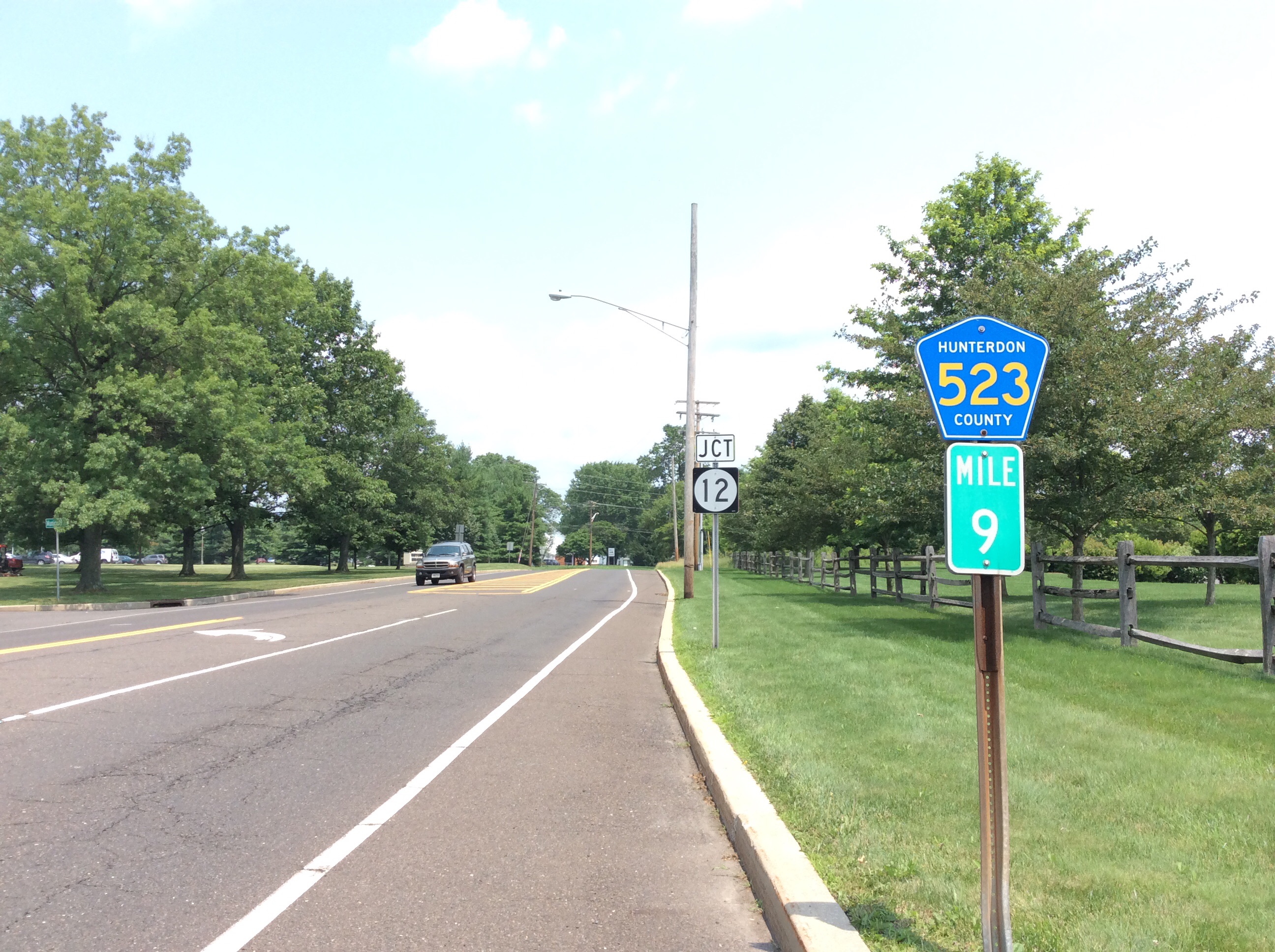
I had a good lunch in Flemington that kept me strong for the afternoon ride I crossed a few more creeks and rolled into Bernardsville Public Library where I met Monica. From there, we headed out to our venue for the night – New Jersey Audubon office in town.
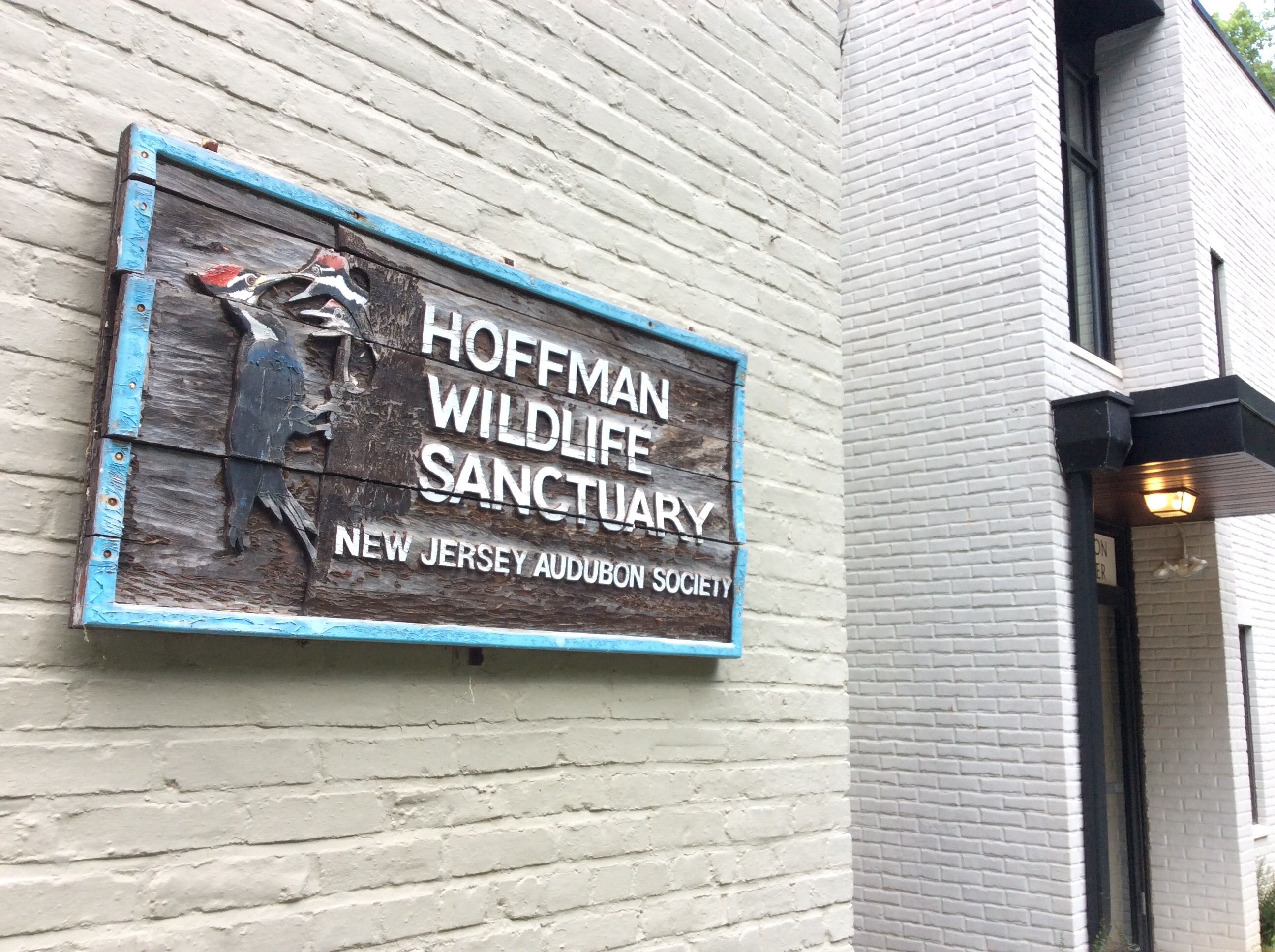 At 6:30 pm, we had over 30 people. By the time we started, the room was getting full. Tonight we had 39 people showed up for the screening. As an opening, I showed my bicycle and the trailer, and explained that has everything I need on the road: a tent, sleeping pad and sleeping bag, etc. Right then, I heard, “You can come to my home tonight. You’ll have a room and a bed.” That was Kerri. I was going to ask for a place to stay for tonight later, but tonight, I didn’t even have to ask. I saw how compassion connects us all.
At 6:30 pm, we had over 30 people. By the time we started, the room was getting full. Tonight we had 39 people showed up for the screening. As an opening, I showed my bicycle and the trailer, and explained that has everything I need on the road: a tent, sleeping pad and sleeping bag, etc. Right then, I heard, “You can come to my home tonight. You’ll have a room and a bed.” That was Kerri. I was going to ask for a place to stay for tonight later, but tonight, I didn’t even have to ask. I saw how compassion connects us all.
On the way home, Kerri took me to Great Swamp National Wildlife Refuge. She told me that there was a threat of development to make an airport over this swamp in 1960, and how the citizens fought to protect this land, creating the first national wildlife refuge in the country. As a result, about the half of the refuge remains as wilderness to protect the birds and other species in the area. This is another example of how we are all connected. A group of citizens with compassion for the community and the environment left the legacy that we now inherit – a different cause in a different place at a different time but it’s the same.
At the root, compassion connects us all.
In fact, that’s how I ended up with Kerri and her family tonight.
No doubt.
6/30/2015
Narrow trail green shade
Rain drops roaring thunderstorm
It’s all right always
There are so many times that I wish I planned better. But at the end, it all seemed to work out. It really does.
Today was such an example. I have been checking the weather around the clock to make sure that I give myself enough time to travel without being caught by thunderstorms. When I checked the weather this morning, there was a 20% chance of rain, not a storm, after 3 pm but overall it looked OK. So I took my time and left Philadelphia around noon.
I crossed the South Bridge and took a glance of the city one last time. Then I took the Schuykill River Trail up north. In about 8 miles, it connected to the Wissahickon Bike Trail that followed the Wissahickon Creek. The traffic on the path got much less. It was so quiet and peaceful. The pavement ended within a mile. I concentrated to avoid potholes and big rocks. But at least I was on the trail and not on the road with potholes and random debris such as metals and glasses.
My google bike map told me to go on highway 38 once the trail ended. But I found that the trail continued along the creek in Wissahickon Valley Park. So I took the trail instead. It was pleasant but then it turned into more like a hiking trail than a bike trail. Then, it got really narrow. I knew it was meant for a hiker, not for a biker with a trailer. Too bad! I rerouted myself onto the road and from there, I just followed the road. I looked up the sky and noticed that the cloud was getting heavier. I was moving much slower that I expected – being on the unpaved path and route-finding takes much longer. I better hurry now.
At 3:46 pm, I felt the first raindrop on my face. Shoot. It’s coming. I better get to somewhere with a roof to wait for the storm to pass by. But unfortunately, I was in the midst of the residential area. I kept riding for the last minutes till it started to pour. I found a bundle of trees on my right. I pulled into the trees and set my bicycle under the shades. It worked! I was well protected. I took a screenshot of my location on my iPad and sent it to Monica. I still had 12 miles to go from where I was. It was 3:53 pm. The screening starts at 6:30 pm at the library. “If the storm passes in an hour, I can still make it,” I thought. But Monica emailed me and said, “I can come get you.” It’s so nice to have a support vehicle when a situation like this happens. I wished that I left earlier. But it all seemed to work out. It really does.
So I put a plastic luggage sheet on the ground, sat there and watched cars go by. Nobody noticed that I was hiding under the trees. Then it started to rain really hard. I stood up, put a rain jacket on and put the luggage sheet over my trailer to keep my belongings dry. Somebody told me once that rain cleanses our body and spirit. So it’s good to feel the rain, hear the downpour and smell the moisture in the air. By 4:30 pm, it all stopped. I thought about starting to ride but Monica said to stay put. So I did.
We rolled into the Indian Valley Library and were greeted by Nicole, a friendly librarian who promoted this event to her community. It really paid off. We had 22 people showed up tonight. During the Q & A, someone asked me about what kind of support I needed to promote my film. As I was answering the question, I added, “Speaking of support, if anyone can host me for a night, that’ll be awesome.” “You don’t have a place to stay tonight?” asked one of the audience. I said, “No, I don’t.” In a few moments, I already had a few options. Within a few minutes, I knew where I was going to sleep tonight.
I knew that I could have planned better. But really, this is the best that I could stay with one of the audience who was moved by the film and wanted to help me. Wendy and her husband John were such people tonight. They took me under their arms. As I sat down on a comfortable chair in their living room, holding a glass of water in front of the screen that showed the US vs. Germany semi-final Women’s World Cup game, I said to Wendy and her friend, Elise who also came to my screening tonight, “I am in heaven!”
At the end, it all seemed to work out.
It really does.
A big city, small crowd
Chattering, traffic, quiet voice
Thrilled elements
I love big cities. A city like Philadelphia reminds me of how much I enjoy being in a large city. At a same time, I know that I can’t live without being in nature. It’s interesting how polar opposite I can be.
An interesting thing is that I feel very comfortable in both situations.
Urban or wilderness – both are my elements.
In one moment, I can blend in a huge crowd of people, navigating concrete jungle by foot, bicycle or an overwhelmingly complicated and well-timed web of metro system. Another moment, I can be traveling in the wilderness where I find myself completely alone in a silence for days, reading the landscape and choosing my own route where there is no trail, no people, nothing but nature.
Today was another day to enjoy the city moment. I heard about Philadelphia Museum of Art has one of the best views of the city as well as famous rock steps. It was true! The view from the top of the stairs gave me a straight shot all the way to the Philadelphia City Hall.
Next, I biked over to the Magic Garden where I could explore the garden of mosaic art. The gallery was a maze of wonder and creativity. They were all made of materials that otherwise may have ended up in the landfill or recycling center – old glass bottles, tiles, toys and other kind of junk. But the artist Isaiah Zagar turned them into a magical world.
I couldn’t help noticing all the old bicycle wheels and parts. They were all rusted and bent, being a part of this mysterious space. I specially liked the one wheel with a creepy wooden lady with wings tied up on one side of the wheel and mosaic of a word FREE on the other side – the polar opposite of being and feeling.
I liked this one because it expressed the feelings that sometimes I experience on the wheels. Sometimes, the ride is very difficult – whether the terrain is challenging, the weather is bad or I am hungry and exhausted. These are the times that I wish I have wings to get out of the situation but I am tied up to my wheels – the best companion on the road. But most of the times, I feel free. I enjoy the freedom to move around on my own, the fresh breeze on my cheeks that carries the smell of fresh baked goods or the flowers in the field. I feel free to explore, take my time, and see the world at a slower pace. Maybe this art is a way to express, “No pain, no gain.”
Speaking of no pain, no gain, the ride to my screening in Cherry Hill, New Jersey was a pain. After the Magic Garden, I took a glance of Independence Hall and started my ride to what I decided to later call “Cherry Hell.” Crossing the Benjamin Franklin Bridge over the Delaware River was fun. But after that, I had to manage endless pot holes, poorly managed bike lanes and aggressive drivers. When I finally arrived to Cherry “Hell,” and saw Monica, I was happy the ride was done for the day.
We set up a room and waited for folks to show up. Monica told me that she was expecting at least 10 to15 people tonight. At 7:30 pm, we had a couple of people in the room. We waited for another 10 minutes to see if anyone would show up. But no one did. So I started. Instead of standing in front of the screen and introducing myself, I pulled a chair and sat next to our lovely audience of honor tonight. In stead of giving a presentation, we had a conversation. In stead of having an official Q & A, I sat on the couch next to them after the film and had a close dialogue.
I love big crowd. I enjoy Q & A session, looking at the sea of people in a theater and connecting with the large audience with a spotlight on my face and a microphone in my hand. Venues like film festivals are very exciting to me. At a same time, I appreciate sharing my story and the film with small groups of people. That’s the setting I could make personal connection with people and have one to one conversation. I feel very comfortable in these polar opposite social scenes.
Big stage or two people sitting on the couch next to me – either way is fine.
Because both are important. I know I reach one person at a time regardless of the size of the crowd.
Plus, big or small, both are indeed, my elements.
6/28/2015
Fireworks dark in the sky
Awe, excitement in the air
Up my spirit with joy
It has been wonderful that I had people host me along the way. It’s not like last summer when I was riding along the West Coast, which has so many state parks and no major cities between Seattle and San Francisco. East Coast is more densely populated and cities are so much closer to each other. Camping is not really an option in these areas.
This is when my friends become my stars – so many of them shining lights of support whenever I look for in every direction.
I have been able to stay with people who are friends of my friends. But in Philadelphia, a friend of a friend wasn’t available. Instead of telling me to find a hotel, she posted my visit on WomenBikePHL Facebook page, and someone responded to the request to host me. Lucky! This is how I met Madeline, my host in Philadelphia.
“Welcome, come on in,” said Madeline yesterday when it was pouring rain. After I settled, we went out to a nearby restaurant and learned about each other over dinner as we watched a game of Japan vs. Australia match of the 2015 Women’s World Cup. After the game, with her housemate, I shared my film at their home – one by one, making new friends. They are my stars in Philadelphia.
Today is my rest day. That doesn’t mean I don’t ride my bike. That means I don’t have a film screening. Madeline gave me a house key and a piece of paper with all the places that I could explore. The first thing I wanted to do is to ride my bike on the Schuylkill River Path in Fairmount Park. I rode out on the path to the Falls Bridge and took west side of the river trail back. Near the Fairmount Dam Fishway, the thick vegetation along the river opened up and the view of the skyscrapers of downtown Philadelphia came into my sight. I stopped to admire the view.
“This is a nice view!,” said a cyclist.
I said, “Isn’t it? This is my first time visiting Philadelphia.”
She asked, “Where are you from?”
“From the West Coast. I came from California,” I answered.
“Really? Me too!”
For next 10 minutes, we talked as we enjoyed the view of the Schuylkill River, rowing boats and downtown Philly. I told her about my film tour. “Can I take a picture of your shirts? I want to look up your website later.” She took a photo of my jersey shirt that says, “COME SEE MY FILM.” This shirt has been serving its purpose a lot!
I invited her to the screening for tomorrow in Cherry Hill in New Jersey. She told me her work is only 20 minutes from Cherry Hill and she works for a non-profit that provides medical support for low income families. We hit it off talking about social justice and how her work and my work are all connected – again, one by one, making new friends.
Before she got back on her bike, she said, “I think there is a firework tonight.” She told me that the Tall Ship Festival is going on and they were supposed to have fireworks last night but postponed it due to the storm. She said, “It’ll be on Delaware River, not this river.”
Fireworks along the river – this automatically brings my fond memory of Japan. In the summer time, many fireworks events take place along major rivers in Tokyo. People dress up in our traditional summer outfit called Yukata, and head out to the shore with good food and company. It goes for sometimes over an hour to showcase the art of firework masters. Seeing fireworks on Delaware River – sounds fantastic! I must go.
At 9:15 pm, I hopped on to my bike and headed toward the Delaware River. Crossing the South Bridge, I saw a beautiful night view of downtown Philadelphia. South Street led me straight to the bank of Delaware River.
I heard words of excitement in the air. Looking at the faces of people lit in the dark by the fireworks made me happy. It was short but sweet, one by one – the art of fireworks illuminated the sky. Some lasted long. Some sparkled for a second or two. But they were all beautiful, lit up the darkness and my spirit. I thought the fireworks are just like my friends – some I have a long-lasting relationship. Some are only at the moment. But they are all beautiful, lighten my dark moments and lift up my spirit.
Then I thought, of course!
They are my stars – so many of them shining lights of support whenever I look for in every direction.
6/26/2015
Morning red warning sign
Pouring rain roll of thunder
Wished but play safe
5:23 am. I saw the red eastern sky. “Red sky at night, sailor’s delight. Red sky in morning, sailor’s warning.” – an old saying. We have a similar saying in Japan. I knew that a big storm was coming when I checked the forecast last night. I better go now.
Intense storms and thunderstorms have been going on at the East Coast since my arrival. I learned my lesson in DC – not to ride in the thunderstorm or storm. I learned in a hard way. Right when I started to ride my bicycle back to the hotel in DC from Alaska Wilderness League’s office one day, the madness of rain started to pour. It came so quickly that I was soaked in a few minutes. I was in the bike lane on the 10th street. There was a metal surface stuck out to the lane and my bicycle slipped over the sheer of metal. Thankfully, I was wearing sun sleeves and a pants. The sleeves shredded in stead of my skin. My pants protected my legs. I only got a small scratch on my right arm and a bruise on my right quad – that was it. I was lucky. “I told you not to do this. But you insist to go on a bicycle trip. I don’t want you to get hurt,” said Sarah when she saw me back at the hotel room we shared that day. I know people worry about me more than I do. So here is my lesson and pledge:
My safety is number one.
I am not going to ride in the madness of thunderstorms.
6:17 am. I left Jason’s home in Wilmington and started 31-mile ride to Wayne, Pennsylvania. When I went outside, I felt some raindrops but the sky seemed to hold it. I started my ride.
It was very pleasant. No one was on the road. It’s Saturday. I pedaled on the path that followed Brandywine Creek. Birds were chirping. Canada geese and little babies were busy eating their breakfast grass. The path ended and put me on highway 13. Bike lane was there but not well maintained. Since there was no traffic, I could ride on the right lane of the road no problem.
“Welcome to Marcus Cook, PA” – a huge sign greeted me. Marcus Cook is an industrial town that Sunoco refinery dominates the landscape. It was first settled by Swedish people and named by the Dutch Marrites Hoeck in 1655. It was the first port of call for Philadelphia shipping. From there to Chester along the Delaware River, I saw refinery and facotry one after another. With pour air quality and industrial scenary, I felt urge to pass the area as soon as I can. I remembered vividly feeling the same urge to leave when I visited my friends in my old industrial town in Tokyo where I grew up till 10. In seeking better quality of air, my family managed to move out of the area. My health was at a risk due to the poor air quality. A doctor told my parents that the only way that I could get better was to move. When I visited my friends in my old town after we moved, the first thing I noticed was the bad air quality. Since then, I never went back to the old town. I was the lucky one to leave. Many stayed. They had no other choice. I saw inequity in access to clean air and environment at that young age, which probably played some role to shape who I am today. I probably wouldn’t have noticed the poor air quality in Marcus Cook and had a time to reflect my childhood if I were driving through. This is one of the reasons why I like bicycling. You feel the air and see the world completely differently.
From Chester, the road winded up toward north. At a town of Swarthmore, it looked like the farmers market was about to open. I felt a few rain drops. If I weren’t pressed with time and weather, I would have stopped there and had a breakfast. But I had to keep going. The forecast said that 50% chance of rain at 9 am.
The last 5-mile stretch to the Radnor Memorial Library was beautiful. The road took me along open space and park. Finally, I saw a sign said Wayne. Right then, it started to rain harder. I knew I was only a couple of minutes away from the library. I pedaled faster and luckily, it was a downhill. I made it to the library without getting caught in a storm. The librarian let me store my bicycle and the trailer in the hallway of event space. I took my time to change and got ready for the afternoon screening.
1:30 pm. It was pouring rain outside. Regardless of the weather, 9 people showed up. It was a small crowd but to me, that’s not a problem at all. With a small size audience, it’s more casual and intimate. Everyone has a chance to ask questions. In stead of Q & A, it becomes more like a conversation. Small group screening has its own beauty to it.
By the time everyone left, it was more intensely raining. It’s only 14 miles to my home for next few days in Philadelphia. I wished that I could ride into Philadelphia. But no, I am not riding my bicycle in this kind of weather. I have to play safe. “Can I get a ride?” I asked Monica, the Alaska Wilderness League staff who has been working hard to set up venues in her districts. I took my pledge seriously.
My safety is number one.
I am not going to ride in the madness of thunderstorms.
I got it.
6/25/2015
Little gem, big heart
News of justice for all love
Shining light for hope
“I want you to have this so you would remember me,” said Merritt’s eight-year old son the other night. I was packing up my stuff this morning and I felt a little piece of quartz he gifted me in my purse.
Little gem, big heart – that’s how I would remember this kid.
I will remember him even without the quartz crystal. At dinner last night, “For your movie and Alaska!,” he gave us a toast. When he said good-bye to me this morning, he wished me a good luck and asked me to tell him how many people would show up for my last minutes screening in Wilmington.
The bus got an hour delayed. While I was waiting, a lady who was heading out to New York asked me about my bike, trailer and a jersey shirt I am wearing that says “COME SEE MY FILM.” She was fascinated by the film so I told her to spread the words to her friends along the coast. She said, “I will. You’ll hear from me. Have a safe trip!” I love talking to random people. I notice that I do it all the time but specially now since I am on the road by myself, I do more. And, I love it.
“Hey, you made it!” Ken greeted me with a big smile at Film Brothers studio. We weren’t sure how many people would show up. Doors opened at 5:30 pm. No one came. We scheduled a screening at 6 pm. Only one person came at 5:55 pm. But then, one by one, people started to come in. We had a total of 14 people came – not bad for the last minutes arrangement. Many were from Save the Valley, a group of concerned locals who are fighting to protect the Beaver Valley, which is next to the newly established national monument, from development. They could relate to the issue, and the struggle that Gwich’in people are experiencing. All the participants wrote letter together to ask their representative John Carney to cosponsor Arctic Wilderness Bill. Not everyone usually writes a letter, so it was a huge success.
I thanked Ken for hosting the screening and grabbed a bite. That was when I found out that Supreme Court ruled to make same-sex marriage a right nation wide. Wow, what a big deal! What a historic day today became. Equal rights for all people – we got little closer. We still have a lot of work to do. But news like this lifts up my spirit and affirms that people can make a difference. So many people stood up, spoke up and never gave up – that’s how we won the LGBTQQ equal rights for marriage today.
In extreme happiness, I took my time to ride my bike to Jason’s home. It was getting late. I came to South Park Road that runs along a beautiful creek called Brandywine Creek. It was getting late. Then I saw a magic. Tiny lights started to show up. One to the right. Then more to the other. It lights up and makes a trace of lights for a few seconds in the air then disappear. They were fire flies. The darker it got, the more showed up. They lit up as they were putting a little fire works to celebrate this historic day.
Little light, big hope – that’s how I would remember this day.
At the last minutes
New friends’ words of mouth out the world
Miracle of love
“Hi Miho sorry we keep missing each other. Give me a call back when you’re able,” said Jason this morning. It was 11:40 am. I know this is the last minutes arrangement. But there is a potential to set up a venue for tomorrow night in Wilmington, Delaware. I am passing 11 states on my trip. Delaware is the only state that I don’t have anything lined up.
Last Monday I met up with my good old friend Jim in DC who was my co-worker at NatureBridge. As we are saying good-bye to each other, Jim asked, “Hey, do you still need a place to stay or venue in Wilmington? I have a friend there. He is involved with Save The Valley and I think he would be very interested in your work.” That’s how I connected with Jason.
When things work out, they really do.
Jason and I finally talked on the phone. He connected me with Gordon who is a filmmaker and owner of Film Brother’s Media Co-op in Wilmington. At 11:55 am, I called Gordon. He said, “I’m out of town tomorrow but you can use my space. You need to talk to this guy Ken Grant. He has used my space before and see if he can help you out tomorrow.” 12:26 pm, I connected with Ken. “Yes, I am available tomorrow night. This is very last minutes but let’s try and see what we can do.”
1:08 pm, all the logistics were set. A team was established. 1:17 pm, Ken managed to get invitations out for Congressman Carney, Senator Coons, and Senator Carper’s offices staff. The flyer was created. In an hour, there was a post about the event on Delaware Liberal. In two hours, Save the Valley and Sierra Club created a Facebook event page on their site. The people who got involved and made this happen don’t even know me. Not at all. It’s a miracle – a miracle of love.
The only problem is – I have to get there. By the time I figured these all out and spread the word on my social media, it was passed 3:30 pm. It’s too late for biking, knowing that the thunderstorm alert is out. Merritt came home and told me it was already raining in downtown Baltimore.
It is 93 miles from here to Wilmington. Without a bicycle trailer, I would be able to ride it in a day. But with a 60 pound trailer, it’s possible but not a realistic expectation for myself. I need to be presentable for the screening. I cannot be spent or exhausted.
I remembered that my friend in DC sent me information about public transportation between major cities on the coast in case I need to use it. With intense, frequent thunderstorms on the East Coast, it is a good backup to use public transportation. I found out that Peter Pan Bus takes bicycle for free and a trailer for a small fee. I checked them to see if they have a service from Baltimore and Wilmington. They do and tickets were still available!
I got a ticket. The venue is set. Words are out. My team is standing by this last minutes deal. It’s amazing.
When things work out, they really do.
6/23/2015
Thick green, humid air
Song of “Stand By Me,” words of allyship
Blessed with big hearts
It was a beautiful day – not too hot, not too humid. The last night’s intense thunderstorm cleared the excess moisture and cleansed the air. I took a last glance of the Capitol at the Union Station and hit the road – the bicycle film tour officially began!
I cruised down the narrow isle next to the station to merge onto the bike path. In the fresh morning breeze, I heard amazing acoustic live of my favorite song; Stand By Me, played by three musicians: Trumpet, Saxophone and base on the street. I started to sing along the parts I know as I passed them:
……… Oh, I won’t be afraid
Just as long as you stand, stand by me
So darling, darling
Stand by me, oh stand by me
Oh stand, stand by me
Stand by me……
The song reminded me of what Sarah James told me when I interviewed her in 2010. Sarah has been the Gwich’in spokesperson and the board of the Gwich’in Steering Committee, a non-profit organization dedicated to permanently protecting the coastal plain of the Arctic National Wildlife Refuge. She said, “We’re different from environmental organizations. We are indigenous organization.” But the goal to protect the coastal plain is the same. “So we are working side by side and asking people to stand by us.”
I named this bicycle tour “1,000 miles for 1,000 allies,” aiming to build a community of people who would stand by the Gwich’in people and actively engage in spreading the word. I already met so many folks in DC from diverse arrays of groups including Quakers, Latino Outdoors, Earth Justice, Green Latino, Sisters, staff members of Congressional Representatives, etc. I reached 55 people in DC. 945 to go, at least.
I followed the bike path out of DC following the Anacostia River. The riparian vegetation is so thick in the East. The humidity and the green remind me of the temperate forest in Japan. I pedaled through the woods and out on the road to Elkridge Furnance Inn near Baltimore.
“Sorry, I’m late,” said Merritt, as she pulled into the parking lot. She came to get me and took me out to lunch in Baltimore. Earlier this month, my co-worker Amy introduced us over email. When I reached out to Merritt, without any hesitation she wrote, “How would a home screening work? I need a bit more info from you, but would certainly consider inviting as many people over as I can think of, providing them with pizza and beverages (I’d pay for food and beverages), and having you screen your film.” She is someone stands by the Gwich’in and me.
By 6:30 pm, the house was filled with her friends and neighbors. At 6:50 pm, the show was on. 27 people, including a year and half old who became the youngest audience of the tour, packed the TV room. Some people took their time to write letters and signed the petition. Some sticked around to have more conversations and promised to connect me with their friends who may be able to help. The party went on till late. This is the beauty of private home screening!
“I don’t know how to spell selfish,” said Merritt’s 8 year old son. He was taking his time to write his letter past his bed time. When he finished his letter, he disappeared for a moment. When he came back to me, he had a small wallet which keeps his small earnings in his hand. He pulled out all he had – a $20 bill and asked, “Can I get a DVD?” I said, “This is a lot of money for you. I don’t know if I can take that from you.” Then he said, “But you worked a lot to make this movie.”
I gave him a copy of a DVD that has autographs of both Sarah and me. I told him a story of Sarah, how Sarah and I met in Arctic and how I was put on a path to make this movie. He was happy to get the copy and walked around the house with the DVD in his hands for the rest of the night.
This little man has such beautiful big heart. He told me a story of how he noticed people leave carvings on trees on the street and how he found out that these carvings actually kill trees. So he wrote a story called tree diary to educate people about it. A park near his home made standing displays of his story on the park path. They read his story as they walked on the path from one display post to the other and learned to leave trees alone. This kid knows how to stand by nature.
It was way passed his bed time. He came back to me again. He said, “Do you think you can give some of the money I gave you to the people in the movie?” I said, “Of course. I will actually give all you gave me to the Gwich’in people.”
This little man stands by the Gwich’in.
If an 8 year old can see the connection between him, his environment and the Gwich’in, so you can.
So, will you, would you stand by us?
6/22/2015
The sacred beings lost
Out of the mountain of despair
Here, a stone of hope
My DC visit is about to end. Tomorrow, I am starting my 1,000 mile ride. It’s been a full and busy week filled with new experiences.
My taxi ride from the airport only a week ago seems forever ago. A man who drove me to the hotel was a Kurdish refugee who had a name that meant Saturn in his language. I told him the meaning of my name Miho in Japanese: 民穂 – a protector of people, culture and environment. He said, “Ahhh… I want to tell you about my life because you’re a protector.”
Protecting very basic seemed to be difficult for this whole week as I watched the news from Charleston. Last year we celebrated 50th anniversary of Civil Rights Act and Wilderness Act, signed by President Johnson in 1964. These two acts supposed to protect the most vulnerable people and vulnerable places. Yet, “we have a long way to go,” said Senator Bernie Sanders as I sat through the Senate hearing and listened to his floor speech yesterday.
We have a long way to go to – I felt that when I saw the Moai, a stone statue from Easter Island at Smithsonian Natural History Museum. I read that the figure came from a rare inland ceremonial site. I saw a human remain right next to the statue in the old photo that was taken. I know that I am supposed to admire these statues and be owed by the mystery of how Rapa Nui people made these over-sized human figures out of rock thousands of years ago. But I could not stop thinking that we live in a society where removing sacred objects such as Moai is totally accepted. Rapa Nui people are all gone. But we still steal things and take lives away from vulnerable people such as indigenous people and black people. As I came to stand in front of Martin Luther King Jr. statue at the Capitol, I wondered what he would say to me now. Would he make a same “I have a dream” speech? Because things just don’t seem to be better than then. Bernie was right – we have a long way to go.
But I am hopeful. I experienced feelings that are almost polar opposite: despair and hope in a same week. From deep grief and sadness for the black lives that were taken in the name of racism to seeing Sarah James getting one of the most honorable awards that a citizen can get: Bob Marshall Award by the Wilderness Society.
Everyone was there. I was too. I found myself talking and standing next to former President Clinton, Secretary of Interior, Congressmen, other important people and of course, Sarah James.
I had an honor to be around her 24/7 for first three days, sharing a hotel room and talking as we were back in time at Arctic Village in 2010. Whenever I see Sarah and hear her speech, I feel hopeful. That’s why I am doing what I do. I am not afraid of speaking up – even in front of staff members of Congress. I stood and spoke behind the podium of the House of Representatives meeting room yesterday as when we had a congressional screening of my film. Regardless of Congress in session, 20 people came to the screening. That was a good turn out. On Friday when we had a screening with Alaska Wilderness League, 35 people showed up from diverse arrays of groups and organizations. They made me feel that I could do something to challenge our society and people would respond. That’s hopeful.
It’s my last night here in DC. I took a short bike ride from the Capitol to Lincoln Memorial at Sunset in the national mall. I needed a moment to reflect my intense and condensed experience in DC. As the sunset turned into a hot humid night, I looked for a clue to find words that express my experience here. I stared at the Washington Monument, I climbed the stairs to see Lincoln statue in the Memorial that is imprinted on my green card, I gazed the Reflecting pool but no words or expression came to me.
It was getting late. I followed a path that led me to Martin Luther King Jr. Memorial. There, it was. It was there – on the large stone, on the side of Dr. King, it simply said, “Out of the mountain of despair, a stone of hope.”
I am hopeful – people are excited about the this. I am super stoked. This is an opportunity to show how one woman, one bicycle and one film can create a change one mile and one person at a time with a community of supporters. It’ll be a great adventure.
I hope.
7/25/2014
Huge rounds of applause
Verify our work together
towards tomorrow
“Together towards Tomorrow” – this was the theme for the 2014 Gwich’in biennial gathering. With this theme, the gathering provided me with an opportunity and time to reconnect and deepen the relationship with people I met in the past, and make new friends. I love themes. Thematic teaching is a technique that I use in my everyday teaching. A theme brings everything I teach and what students learn into one main idea. It ties all together. It’s catchy. It’s memorable.
“Together towards Tomorrow” is a very inclusive theme. It invites everyone to create a better world for the future of the Gwich’in. My contribution to the community is the film. The screening of the film took place at the community hall in Old Crow on Wednesday late afternoon. Mymee, my host and an official of the tribal government asked me to come to her office at 3:30pm so that she could help me set up the hall.
I left the gathering at 3pm to make sure that I would be there to meet her. “Oh, you are early, Miho. Of course, you are Japanese – very organized and on time. We are not like that so you have to wait till 3:30pm,” said Mymee. I had to laugh. Culture is a way of life. Being on time is ingrained in our Japanese culture. Even in the indian country where I don’t need to obey my own culture, I still do!
At 4pm, people started to show up. My new friend Tami told me that the meeting in arena is still going. We decided to wait for a few minutes. Soon all the chairs were full.
Princess, the director of the Gwich’in Steering Committee gave a very nice introduction of me to the audience. I followed her intro and first greeted my new Japanese friends Tomo and Yoriko in Japanese. Next, I greeted people in Gwich’in. The whole morning, they talked about how Gwich’in people are loosing their language and how they want to keep it alive. The only way to keep it is to use it in our everyday life. So I tried. I may have pronounced the words incorrectly, but who cares! It did what it was supposed to do – make a connection. Language is a tool that opens a whole new world to connect with people and culture. Being bilingual of two completely different languages: Japanese and English makes me bold to try any other languages.
As a part of introduction to connect with the audience, I talked about my name. I said, “The Gwich’in people and Japanese people – we both know what our name means.”
My parents chose the character 民 (“mi”), which means “people or democracy,” as the first part of my name. In so doing, they wished that I’d become a kind person, a good listener and a trusted leader who protect ‘the people.’ Inherent in this character is a reference to democratic society, where all people’s voices are heard and valued.
The second character, 穂 (“ho”), means “rice,” the staple food of Japan. My parents value rice fields as symbols of Japanese culture and understood the role rice fields played in preserving water and providing animal habitat. By giving me these two characters 民穂 (Miho), my parents hoped that I would become a protector of people, culture and environment.
In addition, my birthdate is the day when US Congress officially recognized as Women’s Equality Day.
The older I get, the deeper I connect to the meaning of my name and my birthdate, which called me to create the women empowerment environmental media project: If She Can Do It, You Can Too: Empowering Women Through Outdoor Role Models in 2008. This project is dedicated to promote representation of women of color in the outdoor and environmental media to inspire all girls to see what career, leadership opportunities and outdoor adventures are possible. The film was produced as a part of this project. I wanted this film to be not only inspiring audience around the world to action but also empowering women, especially young indigenous women to see themselves in a very positive leadership role so that they know they can make a difference in their community and environment.
The film received two big rounds of applause. I handed the plaque of the Audience Choice Award from the 2014 Earth Port Film Festival to Sarah James, Crystal Frank and Princess Lucaj in front of the audience. Princess and Sarah gave me nice words again, which is the best award that I could ever receive for this film. I felt that all the hard work, thousands of unpaid hours of mine and the volunteers, the intense mental, emotional and physical energy and labour required to produce this film were acknowledged in the eyes of the Gwich’in people.
I wished that my volunteers were there with me to witness the love and appreciation that Gwich’in people shared with me. My film wasn’t possible without these volunteers who gave their skills and hours without being compensated. I wished all the donors of this film were there as well. Without their financial support, I couldn’t have carried on to bring the film to the world. I couldn’t have been to Old Crow. I thanked them in my mind as I stood in front of the audience and received the ovation. I will remember this moment. I will remember as I continue to take this film to the world. I will remember why I am doing this work and for whom – Together towards Tomorrow. I will remember.
“Together towards Tomorrow” – the last not the least, it includes you. As Mymee said to me, this journey has just begun. Be with the Gwich’in – continue to share the film, ask people to sign the petition and spread the word. Be with me – see where we will go with the film. You are an absolutely crucial and important part of this movement. Without your support, I am not here.
So be with me – to create a better world together towards tomorrow.
7/21/2014
Dancers fiddlers songs
Excitement claps laughters
The Gwich’in party is on!
The party is on! Fiddlers are on the stage. Gwich’in people and visitors are on the dance floor. Everyone is having a good time. I remember all night long dancing session from the 2010 gathering. It’s good to be here with Gwich’in people. The 2014 biennial Gwich’in gathering has officially began in Old Crow, Canada tonight.
I left Fairbanks this afternoon. I met Princes, Adeline’s daughter and the director of the Gwich’in Steering Committee the first time. We have exchanged many emails and phone calls but we never met in person before today. I said, “Can I give you an official hug, Princess?” She said, “So nice to meet you finally, Miho.”
At the Fairbanks airport, I also saw Sarah James, Crystal Frank and Kay Wallis who are in my movie. “Hey, Miho. Do you remember me?,” said John from Alaska Wilderness League. He came to the 2014 Earth Port Film Festival to support the film and the Gwich’in people. What a surprise! Carol and Pam who were at the gathering in 2010 greeted me as well. With excitement, we got on to a small plane. But the plane didn’t take off – for an hour.
“Kay Wallis, where are you? What is your real name?,” said one of the flight attendants. We all laughed. We have been sitting in the plane for more than half an hour already. They got multiple calls from the immigration in Canada to make sure that we are all “legal” to enter the country. That’s why we couldn’t take off. We were held in a small plane for an hour tiIl all of us were”clear.” I never traveled to a foreign country with this many indigenous people. I never thought it would be this difficult and complicated.
The Gwich’in nation today still faces the border issue. About a 100 years ago, the Gwich’in homeland was divided between the US and Canada. Before colonization, the Gwich’in lived a nomadic life following the Porcupine Caribou Herd. No border. No immigration. No passport. They were free to go anywhere in their territory. Today if you are traveling on the land, you can show your tribal ID but on the air, you have to have all the documents. Sandra Madison who is also in my movie was denied to board on the plane this morning because she only had an ID, not a passport.
In the plane, it reminded me of a detention room at the immigration. As a recent immigrant, I have experienced being detained quite a few times with my complicated immigration status until I obtained my green card. Thanks to the good relationship that Japan and the US have today, my experience at the immigration office was nothing compared to those who come from countries like Mexico and China. But still, there were times I wondered, “Why am I being treated as if I were a terrorist?” Sometimes I felt interrogated for nothing I have done to threat this country. Or maybe being an educator is a big threat? I don’t know.
As I sat patiently in a tiny seat in a small plane, I said to myself, “This is what it’s like to be indigenous people whose homeland has been taken and divided by two countries.” They are treated like illegal immigrants on their land. What kind of world do we live in? How can we be allies to these people? This experience gave me another reason why I biked to promote the film and came to the gathering.
An hour later, we were all “legal” to take off. When a flight attendant announced that we were leaving, we all clapped! When did I ever feel so happy to know that we could take off? Never before today.
The plane ride was smooth. We landed in Old Crow – over an hour late. Immigration person came on board and checked our document before leaving the plane. That was interesting. No chance was given to anyone to touch the Canadian soil unless you have papers. But we all landed. Happy faces of Old Crow welcomed us.
As the name of this small indian village indicates, a lot of ravens greeted me. It reminded me of Mr. Raven, the young male raven who kept knocking on my door in Headlands two months ago. Without him coming to my door persistently every day, I wouldn’t have made a commitment to come here. These ravens flying over me now are sisters and brothers of that Mr. Raven. “Here I am, Mr. Raven,” I said to him and thanked him in my mind.
The opening of the gathering began with the grand-entry of dancers, followed by the speeches by the chiefs and a guest speaker. Then, I could tell that everyone was waiting for that moment – fiddle dance. The music started. The dancers were lined up. They were ready. The burst of excitement pushed the first pair on the floor. Then the rest followed. Laughters, claps, flashes of cameras and the pride – the pride of being Gwich’in filled up the entire arena.
What a privilege I have to be part of these people. Darius Elias, the MC mentioned Gwich’in values tonight – Respect, Honor, Love, Kindness, Laughter, Strength, Teaching, Our Stories and Dance Song. I thought that Dance Song is such an essential part of these people that keeps this nation resilient and alive. Without Dance Song, as Sarah James said in the past, “We would have been all dead long time ago.”
It was getting late. At least for me. I said good night to the people and walked out of the arena. I headed back to my nest in the midnight sun. Through an open window, in the wind, I still hear the music.
The party is officially on.
I pray to them to keep dancing. Keep singing.
7/20/2014
Familiar face greet me
To the land of midnight sun country
Gwich’in time awaits
“Hey, Miho! Over here,” said Adeline, waiting for me at the Fairbanks airport. It’s 10:49pm. It’s still light outside. I came to “The Land of Midnight Sun.” I was happy to see a familiar face at unfamiliar country. I said to Adeline, “It’s good to see you again, Adeline! I’m now on your land!” She laughed, “Ha! On my land.”
I met Adeline last fall a night before the US premier of my film at the 2013 American Indian Film Festival. Adeline was introduced to me by Princess who is the director of the Gwich’in Steering Committee. “I can’t go to the premier but my mother will be down there,” said Princess. I held a community screening that night for my co-workers, friends and supporters. Adeline joined us that night. It made the screening more powerful and meaningful by having someone like Adeline from the Gwich’in nation to be part of the Q & A at the end. Since then, we kept in touch. She was the one who helped to organize the Hawaii premier of the film back in January.
I came this far north to join the 2014 biannual Gwich’in nation gathering. It will be held in one of the Gwich’in villages called Old Crow in Northwest Territory in Canada. Tomorrow I will take a small plane with other Gwich’in people to Old Crow from Fairbanks. I wanted to end my 2014 summer film promotion tour with Gwich’in people. This is a great way to share the film with the entire nation. Many have not seen the film yet. I am also excited to hand deliver all the signatures collected on the bicycle tour. I am planning to present the 2014 Audience Choice Award from the Earth Port Film Festival. It’s their award. They deserve it.
On the way up, I first flew into Seattle. I was glued to the window looking out the coast line and thinking, “I biked there.” It still doesn’t feel real that I rode 1,028 miles. But I did. I met so many people, made new connections and witnessed how people were touched by the voice of Gwich’in women speaking in the film.
Tomorrow I will join the Gwich’in people – some are old friends from the 2010 gathering in Fort Yukon, Alaska. Some are new I have never met. Either way, I will again meet so many people and make new connections. I am very looking forward to it.
It’s after midnight and still light out. “The land of midnight sun” – well said.
7/18/2014
A 1,000 miles on my bicycle
I did it but the work remains
So will ride all the way
Fog. Thick morning fog. I could see mist in the air. Like a magnet that attracts small particles of irons in the sand, my body was covered with tiny water droplets in a few minutes just standing outside this morning in the Headlands. This is how it is in the summer here. It’s foggy. It’s damp. It’s cold. It’s windy.
I packed my bicycle trailer for the finale screening in San Francisco at the Crissy Field Center. “I will plan to meet you at 9:50 at the vista point on the Marin Side,” said Francis, one of my best friends and supporters of this film. It was only a year ago he and his partner Kristy kindly offered me to stay with them. Their home turned into my post production studio for the month of July 2013. There, I finished the film and prepared my very first film festival entry package for the 2013 American Indian Film Festival.
I pedaled out to the road that leads to the one-way tunnel. I have ridden this road so many times. I immediately noticed how stronger I became. It’s a slight uphill to the tunnel. Even with a trailer, I was moving much faster than usual on the second gear. After going through the tunnel, I climbed up the last hill. From there, it’s all down hill to San Francisco. Then I saw the Golden Gate Bridge.
The Golden Gate Bridge is an icon that reminds me of home. I live in a park of which the name starts with Golden Gate. I cross this bridge at least once a week on my bicycle. I see the bridge when I hike up my hills behind my house at night. I love this bridge. It’s a symbol that tells me that I am home.
I crossed the road to a path that leads to the vista point. I was little late. I gained some speed and went around the gentle curve. A surprise! There was Francis holding his iPhone! I wanted to stop and give him a hug but he exclaimed, “MIHO!! KEEP GOING!” I let my both hands go off the handle bars and waved to him. When he caught up with me, I said, “I did it, Francis!,” pointing the bridge. He said, “Yes, you did.”
We rode down to the Crissy Field Center together. Francis works at the center and helped me set up the room for my finale screening with the middle school program participants. After the film, I asked them “Why do we care?” One student said, “It’s our park.” Another said, “Because the people. They live there and it’s important to them.” I asked, “Why do you think the senators would listen to you more than adults?” A young woman said, “Because we are the future.” All 25 people – students and the educators wrote letters to urge Senator Boxer and Feinstein to support Arctic Wilderness Bill. Gilbert, one of the educators said to me, “Miho, today is the last day of our middle school program. Writing letters to voice their opinion to our senators was a perfect way to empower them and end our program. Thank you.”
As an educator, I think about kids all the time. That’s why I wanted to end my ride to share the film with young people. I created the film with students in mind. I wanted to produce a film that’s honest to show the challenge of our environment and people but not in a depressing way. I just couldn’t do that to youth. I wanted to make something that is empowering and hopeful so that people are inspired to take action for our future generations. Seeing the students from the middle school program writing letters to our congressional representatives – that is a hope. They are the future holding a torch to combat our social and environmental crisis. We owe to them to leave a legacy that we could say, “We tried our best for you, your kids, and your grandkids and their kids to thrive on this planet.” I am trying.
On this trip, 376 people saw the film. 1,028 miles ridden on my bicycle. 1,244 online signatures. 176 hand-written letters to senators. These are the numbers that came out of the trip. I tried. I tried to show the impact of this film in a positive way. But there are things that won’t show as numbers – support and love from people I know and people I don’t know. Without their support, I couldn’t have done this trip. Without your support, I wouldn’t have made it. Thank you.
I crossed the bridge to the Marin side. I thought, “Let’s ride back the official way.” So instead of coming back through the tunnel, I headed up the scenic route to Hawk Hill. It is a long climb to over 900 ft. I had a flash back of all the hard hills that I climbed to get here. At the top, I admired the view and put the last pitch of my movie to a guy from Santa Cruz. A few minutes later, he donated and walked away with DVD in his hand.
I took a deep breath of the air of Marin Headlands. Here comes the 18% downhill that takes me to the heart of the Headlands.
As I descended with a great speed with the Point Bonita Lighthouse and Farallon Island at the horizon in sight, I said on top of my lungs, “I DID IT!”
But then, I thought, “Not quite yet. Until the day our congress pass the Arctic Wilderness Bill.”
This chapter of my journey: 1,000 miles for 10,000 signatures may end today. But you know, I’ll keep riding. Riding the waves that will come to me to spread the word and take me to the unknown – the unknown world where there is a potential to share this film with more people.
So I rode today – all the way to my home.
So I ride tomorrow – all the way to the future.
All the way – I ride.
7/17/2014
Mount Tam thick fog line
Familiar face welcome me home
Be patient not quite yet
I’m almost there. Almost home.
I left Samuel P. Taylor State Park early this morning. I didn’t have to. Today’s screening was in the evening at my friend’s house in Mill Valley. It’s only 19 miles from the park. I could have taken my time and left in the afternoon. But I am so close to my home – Marin Headlands. I couldn’t resist my desire to ride to and see my home when I woke up this morning. As I packed my camp, I decided to ride all the way back to the Headlands. Today.
The path out of the Samuel P. Taylor Park was beautiful. The road followed along the Lagunitas Creek. The moist and fresh scent of the redwood forest filled up in the air. I cruised out of the woods on Sir Francis Drake Blvd. I know this road. Although I never had come up this far on a bicycle from the Headlands, I know my way back. I took a last look of the bicycle map and put it away.
I passed the sign of Spirit Rock Meditation Center. I have come to their retreat in the past but not on my bicycle. Then, the town of Fairfax and San Anselmo. The scenes are now more familiar. I followed the bike path 20. When I got to Ross, the Mount Tamalpais stood tall in front of me. I had to stop. I know this mountain. I see this mountain from the hills of Marin Headlands where I live, hills of Ring Mountain where I climb and the highway 101 I travel in Marin. The tallest mountain in Marin County that I could see from almost everywhere I go in Marin symbolized that I am home already. I said myself, “I made it. I am almost home.”
With the Mt. Tam in sight, I kept riding. At Corte Madera Creek bike path, I saw a thick line of fog that was covering the hills in the distance. “I know that!,” I smiled. “I bet Marin Headlands is in the fog!”
Right before I merged to Bridgeway in Sausalito, a cyclist caught up with me. He asked, “What’s in the Burley trailer?” I said, “All my gear – tent, sleeping bag, stove, food. I have been riding since July 1st from Seattle.” “What?! From Seattle?,” said the cyclist. He rode with me on Bridgeway and said, “Ride behind me. You get the back draft. The closer you get to me, the more draft you get. It’ll make it easier for you.” He was right. We talked as we rode and I told him about the film. When we said good-bye, I gave him my card. “Thank you for doing this, Miho. I’ll definitely check out your film site. Good luck!”
I had to go to Sartaj, a local Indian cafe in Sausalito. There are only two restaurants I go in Sausalito. Sartaj is one of them. I walked into the restaurant. Peter, one of the owners, was at the casher. I said, “Peter, I rode from Seattle. All morning I was thinking about having lunch here.” His eyes got so big. “From Seattle? Wow.” Then he said, “Chicken Tikka Masala burrito?” I smiled and said, “Yes.” He knows what I like to order here. He made me feel that I am home.
From Sartaj, it’s only 3.5 miles ride to Marin Headlands. I don’t think I have ever stopped to admire and take in the scenery and moments as much as I did today. When I saw the city of San Francisco, I stopped. When I saw the Golden Gate Bridge, I had to stop. When I saw the one-way tunnel into the Headlands, I pulled over my bike and took a picture – the first time ever I have done that! I have gone through this tunnel millions of times in last 14 years. When did I feel this way? Never. When I was about to exit the tunnel, I paused, took a deep breath and admired the hills of the Marin Headlands. Every time I stopped, I was thinking, “This is my home. I made this far from Seattle. Can’t believe it!”
I pulled into the Cor de Sac of my friend’s home where I could stay. “MIHO!!!” I heard my friend Emily screaming. “Oh, you made it! You are back!” I didn’t expect anyone to greet me and welcome me back to the Headlands. I got back a day early and it’s during the day. Most people are at work. “How are you? You just literally arrived from Seattle, right? Do you need food? Water? Anything?,” asked Emily. Her husband Pete came out of the house – “MIHO!!” Even better, he happened to wear my film campaign T-shirt and gave me a big hug. “We’re so proud of you. You did it!”
Well, not quite – I had to remind myself. I definitely made it back to my home in Marin Headlands. My screening in Mill Valley tonight was fantastic. Maria, who generously hosted the screening gathered 22 women who are engaged in social justice and community building. What an amazing group of women, food and conversations we had tonight!
But tomorrow is really the day I can say “I did it.” I will ride into San Francisco and have a finale screening at Crissy Field Center, an environmental education center in Golden Gate National Recreation Area. Their programs encourage new generations to become bold leaders for thriving parks, healthy communities, and a more environmentally just society. It will be a perfect way to end my trip by sharing my film with our future environmental leaders in my home park, our park.
I want to claim “I did it!!” tonight. But let’s be patient. Let’s be humble.
But at least tonight, I can say, “I’m almost there.”
7/16/2014
Tamales Bay view
Shacking oysters playing movie
The unknown I indulge
Japanese breakfast – I love it. It has been a while since I had it. This morning Naoko cooked rice, salmon and eggs. She also gave me seaweed and Natto (納豆), Japanese style fermented soybeans that you may think disgusting unless you grew up eating it.
It’s sticky, slimy and some think it’s stinky. Today’s movement for probiotic food, I see Natto in stores more but I often wonder who would really try Natto unless you were convinced by your Japanese friend or acquired the taste already. If you are curious, you can get it at Asian market or a natural food store. I usually add green onion, ground sesame seeds and Umeboshi (梅干し), the Japanese style salted preserved plum, mustard and soy sauce. I mix all of them till it gets extra sticky and slimy. Stiring wakes up good bacteria in Natto. The more slimy it gets, the more awake bacteria is. I pour it on top of steamed rice and sprinkle seaweed. If you add miso soup, pickled vegetable, small piece of grilled fish or sometimes eggs, the authentic Japanese breakfast is ready.
Despite the fact I ate a lot last night, I was hungry. I had two bowls of rice for breakfast. My morning started right. Thanks to Naoko, my body and soul are well-nourished for the last three days ride back to San Francisco. I am ready.
Eiko brought her bicycle. “I couldn’t show up without it,” said Eiko. “It’s been a while since I rode my road bike. I am scared to ride where there is a lot of traffic.” I suggested to go back to highway 1. We decided to drive to Santa Rosa, then take highway 12 to highway 1. “There is a sweet bread shop we can stop by,” said Eiko. When we got there, the shop was closed. Bummer. We parked her car there, then she rode with me about a couple of miles. Even it was a short distance, it was so nice of her to take her time out of her busy work day and ride with me. “Good luck for the rest of the ride, Miho,” said Eiko. Then, we parted.
I peddled rolling hills of northern Marin. I am already back to my county. The landscape is familiar – grassland, happy free roaming cows and there, the Tamales Bay. I came to a small town of Marshall. I didn’t miss a sign “Hog Island Oyster Co.” I haven’t had lunch yet. What a perfect timing! More oysters!
I pulled my bicycle over and thought that I would just order a dozen of oysters at their cafe. But the sign said, “Welcome. It’s a shack your own day.” I never had done it before but I was excited to shack my own oysters and eat them. A store lady showed me how. I joined the crowd of people who are shacking their own oysters at a picnic table.
As soon as I sat at the table, a couple who were visiting from Denver asked me, “What your film is about?” Eiko silkscreened “COME SEE MY FILM” on my bicycle jersey so that when I ride, I can get people’s attention. It has been working pretty well. I started talking about my film as I shacked my oysters awkwardly. Then I said, “Do you want to watch it? It’s only 20 minutes.” “Really? Yes, would love to see it!,” said the couple. Soon, I had a Tamales Bay premier of the film as I shacked and ate my oysters! So fun!
This kind of spontaneous moments are my favorite part of being on the trip. The unknown – I indulge it. The unknown – makes me stay open and listen to the signs. You never know what you see, who you meet and what opportunity rises out of that circumstance. On that note, at a town of Point Reyes, I went to a grocery store to get my dinner. Then I heard, “Is that you Miho?” That was Jenny Stoke, my old friend from the Headlands. 14 years ago, we worked together and now she works in Point Reyes. We had a quick moment to catch up and she said, “I can get you on a local radio show here and organize a screening at the library. Let me look into it.”
See? Another spontaneous miracle that rose out of unknown.
Stay open. Listen to the signs.
7/15/2014
Dawn soak in hot springs
Oconomiyaki dusk
It’s good to be alive
5:18am. It was still dark. I crawled out of my sleeping bag and grabbed my towel. Oh, I was so stiff and soar from the ride yesterday. I slowly walked to the bathhouse. Nobody was there yet. In a few seconds, I was in the heaven. Hot mineral water bubbled up and covered me as if they were withdrawing all the pain out of my body. For next an hour, I enjoyed the silence. The moon was out behind the steam of the water. Hot water pouring into the tub was the only sound I heard. Slowly, the darkness disappeared. The dawn revealed a bat quietly beat its wings to catch its breakfast. The fish-scale looking cloud turned into a golden yellow reflecting the morning sun. A deer sneaked into the creek running next to the hot springs, taking bites of leaves. What a beautiful day. What a way to start my day. I sat there thinking how wonderful this life is – it’s good to be alive.
“Good morning, Miho. We were talking about you last night with other guests here and there are people who are interested in your film. Can we watch it after breakfast?,” said a couple who offered me a glass of wine last night. I said, “Sure, let me grab my equipment and I will meet you in the dining area.” In a few minutes, we were having Orr Hot Springs premier of my film! See? It meant to be.
As I was saying good-bye to Jeanelle who saw my film, Eiko showed up. She was the one who introduced me to Naoko, the organizer of Ukiah film screening. Eiko took me here at Orr Hot Springs and Montgomery Woods years ago. Jeanelle said to Eiko, “I love your design of the DVD. It’s beautiful.”
Eiko has done all the graphic designs of my film, campaign T-shirts, stickers, business cards, film banner, website, the DVD and more. Not only that, she has given me a moral support during the post production. All I had was a 4-year old MacBook to edit the film last year. “You can use my computer to finish the final editing and produce DVD,” said Eiko last October.
That was the beginning of our 2-month grassroots DVD production boot camp at her home. When not working my real job as an environmental educator at the Marin Headlands, I was at her place working around the clock. She gave me a few critical pieces that were missing from my film production: bouncing off ideas and collaboration. I tried to figure out how to make graphics on my own. That’s just how I am. I like to solve every obstacle on my own. But it requires time and endurance. Often, it took me hours to create a graphic that wasn’t even good. Whereas Eiko, out of her finger tips with a few clicks, she produces beautiful graphics like a magic. All that work she has done for me was in her own time as a volunteer. Without her big heart and love, I won’t be here now. She continues to give me a support I need today and came to Ukiah to see her long-term friends Naoko and Yoshiki but also to help me at the screening. I am forever grateful for her support. How lucky am I to have someone like her and all the other people who have helped me?
We soaked in the hot springs and caught up with our lives. Then, we headed out to Ukiah. It’s my rest day! I put my bike and trailer into the Eiko’s car. Lucky me, I didn’t have to ride the brutal hill from Orr Springs to Ukiah.
When we arrived at the Ukiah library, we saw a big sign on the road “MIHO AIDA FILM TOUR ON BICYCLE & LECTURE TUESDAY JULY 15TH.” Wow – I guess it’s good to have a public screening in a small town. Naoko said that the librarian was up for screening instantly when she went and talked to her. We had a total of 18 people showed up. With a great discussion and signatures of all on the petition, we ended our event. Wonderful.
We headed out to Ocotime, the Japanese restaurant Naoko and her husband Yoshiki own. We were all glowing from the success of the screening. We ordered food and raised our glasses. In a few minutes, the food came out – the moment I have been waiting for since the start of this journey. Hiroshima-style Oconokiyaki – the Japanese savory pancake with noodles inside with cabbage, pork and eggs, topped with green onions and special sauce. We had sushi and other amazing food but I was most excited about Oconomiyaki. This is what their restaurant is famous for. I took a bite into the Oconomiyaki. Excellent.
What a way to end my day. With great friends and food. I ate and ate to nourish my body which depleted a lot of my reserve in last 14 days. I am leaner and stronger but I needed to eat.
With my belly finally full after 2 hours, I put down my chopsticks – Oh how happy and content I am tonight!
Surely, it’s good to be alive.
7/14/2014
Long day up up down
Lost in the woods long-winded road
Welcome Orr Hot Springs
Yesterday I was treated by the swimming hole at my camp to cool off from a ride in the heat. Today, it was even better. Again, it was a surprise, not a plan.
My ride started at 6:47am, the earliest departure I had on this trip. None of the cyclists at the camp was even out of the tent. I wanted to beat the heat and traffic. Plus, I anticipated the biggest hill and a long distance to ride today.
I have a screening in Ukiah on Tuesday. Eiko who is my best supporting volunteer connected me with her friend Naoko in Ukiah. She set it up a screening for me at her local library. I have been excited about this day for a long time. Naoko and her husband run a Japanese restaurant called “Ocotime” in Ukiah. Their Oconomiyaki, a delicious Japanese savory pancake and sushi, and Orr Hot Springs in Ukiah have motivated me to ride this far. I can take Tuesday during the day off to rest, soaking in hot springs and eating their delicious food. Sounds heavenly.
I originally planned to bike down on 101 straight to Ukiah. But it has been intense and not so enjoyable riding on 101 since I came to California. Huge semi-trucks scare me. Some cars drive by so close to me at speed of 55 miles or more per hour. There were so many times I thought if they were 5 more inches closer to me, I would be dead. The shoulders are full of broken glasses, random metal objects like nails, wood chunks fallen off from the timber trucks. So I made a last minute decision to take highway 1 down to Fort Bragg, then take highway 22 over to Willits, then ride the rest of the way down to Ukiah on 101. This would add significant amount of mileage but I knew I made a right decision soon after I deviated to highway 1 from 101 at Legget.
When I entered on highway 1, there were no cars – just my bicycle and me. The sun has not hit the road yet. I was in the shade the whole time going up the road to the highest point on this trip. The early morning cool air and the bird songs helped me to inch up the road. At around 1,800 feet, the road became flat for a moment, then the most exciting descent started. Dropping 1,600 feet in less than 10 miles, I was flying down the hill. My 23mm thin tires go fast. I was making corners and turns like a racer!
I rode through the old growth redwood forest taking a deep breath of fresh morning air full of ancient spirit. Soon I reunited with the Pacific Ocean. The endless blue water lit up in the morning sun. It was so beautiful and quiet that I thought it was totally worth it to take the detour.
I came into Fort Bragg before noon. As I was eating lunch, I looked at the map again. I noticed a small road called Comptche-Ukiah from Mendocino. This road would take me straight to Ukiah. I thought it’s better to take this one instead of highway 22 to Willits, then riding 101 south to Ukiah. From Fort Bragg to Ukiah via Comptche-Ukiah road is 66 miles. I already rode 45 miles in the morning. I thought there was no way for me to be able to do this. It’s one thing to go 66 miles on flat but I have to go over the Coastal Range – another serious climb. The google map gave me a direction to go Comptche Ukiah Road and Masonite Industrial Road. Eiko sent me an email with the elevation profile information. It looked like there was one big climb in the middle but the rest seemed doable. “I better go now,” said to myself and started my afternoon pedal.
The ride to Mendocino was mostly flat and I had a tailwind on my back. At 2:52pm, I turned to Comptche-Ukiah road. I climbed the first steep hill, then continued on this quiet country road. The more inland I went, the hotter it got. About an hour into the ride, I came to the town of Comptche. The road split in two. The sign on my left said Ukiah 30 miles. I asked a lady at the store, “Is this the right way to Ukiah?” The lady said, “Yes, just goes straight to Ukiah.”
The temperature must have been over 100 degrees. After passing Comptche, here came the major climb. I inched up the hill trying to stay in the shade as much as I could. I didn’t care if I went into the other lane. There was hardly any cars coming. Plus, that way, I could ease the hill grade, just like making switch backs on the trail. Heat. Dripping sweat. Thirst. I said to my bike, “Together we can do this. We go slow and steady. Just keep going. We can’t stop here.” After a long climb, finally we hit a flat spot, then down to the valley. The road condition got worse – pot holes and bumps were everywhere. It felt like riding over cattle guards. My hands started to get tired. But I kept going.
6:02pm. I saw a sign “Montgomery Woods State Reserve.” What? Wait a minute. Where am I? When I looked at a map during my lunch, the Masonite-Industrial road was south of the reserve. I must have taken wrong way – somehow. I pulled my bicycle over and get my iPad to see the map but there was no reception. But I knew that I was close to Orr Hot Springs. Years ago I came here and remembered visiting this redwood forest. In 15 minutes, I got the Orr Hot Springs. It’s probably another 10 miles to Ukiah but I remembered the hills from here to Ukiah – brutal.
I walked into the Orr Hot Springs. People were outside, hanging out, relaxed, enjoying their dinner. There I was with a bicycle and a 40-pound trailer, covered with sweat and dust. People were watching me with a look on their face, “What the…….?!” I walked into the office and asked, “Do you have a tent site for tonight?””Yes, we do,” said the front office clark. I borrowed a phone and called Naoko in Ukiah. “It’s not that I won’t be able to climb the last hill but I want to stay here if that’s OK. Please tell Eiko that I will meet her tomorrow here.” Eiko and I were planning to come here anyways tomorrow, my only rest day for the whole trip. I had a 12-hour day, close to 100 miles ride with serious hills. I was done.
I wasn’t planning to come here. I didn’t have much food besides trail mix, blackberries I picked along the way, oatmeal, salmon jerky and nuts. Then, just like angles coming down from the sky, a couple who were watching me said, “What a day you had. Are you hungry? We just finished our dinner and have some left overs. Spicy spinach chickens, pumpkin bread and salad.” Another couple said, “We have a glass of wine, if you would like.” A delicious meal with a great conversation – making a wrong turn turned into a wonderful right turn. Then – hot springs.
Words can’t describe how it felt like. Well worth the detour for sure. Yesterday was good too. I thought about the cool swimming hole after the hot day. As I soaked my sore body in the hot mineral water, looking up a night sky, I thought,
“Today, it’s even better.” – Again, it was a surprise, not a plan.
7/13/2014
Sun beams heat waves
Afternoon soak cold river
Soothing like a dream
Scorching sun. Black asphalt. Pot holes and bumps. Endless uphill. The longest and the highest hill of this entire journey from Seattle to San Francisco began and consumed me today. The actual climb wasn’t bad at all. The wind was on my side. But the temperature wasn’t.
It was a hot day. I left early to beat the heat but by 10am, it was already over 90 degrees. I envied the cool look of the south fork of Eel River. The route followed the river the entire way to my camp. I kept looking over the river thinking it would be so nice to be in there now than riding a bicycle. But I didn’t stop at all. I knew if I stop and bath in the river, I wouldn’t want to go anywhere for the rest of the day. Plus I planned to arrive at the camp early for a couple of reasons. One, I wanted to watch the final of World Cup. I wasn’t following the game at all but it’s final. I didn’t want to miss the game. Second, I wanted to get out of the heat. Only 46 miles to go today, I wanted to get into the camp as early as possible so that I could relax in the afternoon.
1:48pm. I saw the sign of Standis-Hickey State Recreation Area. My camp! Across the street, I saw a sign said grill, so I pulled in and asked the first person I saw, “Do they have the World Cup game on TV here?” The man said, “Oh, yeah. Go in the back. They have a whole stage with a big screen set up.” I went to the back and sure enough, there was an outdoor stage with a huge TV screen. A crowd was glued to the game. A lady said, “You didn’t miss anything. They are tie now.” Relief. I ordered a glass of fresh lemonade and a burger. I sat next to a guy from Vancouver and enjoyed the conversation, late lunch and the game.
I didn’t really care much about who won the game. I love watching top athletes. It’s amazing what our body is capable of doing things by training. Soccer is a sports that only requires a ball, a field and players, which is very inclusive for all people to participate in. The sports teaches teamwork and gives hope for kids no matter if they are poor or rich. That’s another reason I like to watch soccer games.
After the game, I went to my camp and met a cyclist. He said, “There is a nice swimming hole at the river. Just follow this road and you’ll see the trail goes down to the river.” I couldn’t believe it! This was a bonus that came with this camp and getting in early enough to enjoy the afternoon. All the hard work in the heat would be paid off soon. I quickly set my tent and rushed down to the river.
The swimming hole was beautiful. There were a lot of people including families enjoying the weekend heat in the water. I went over to one of the rocks and put my stuff down. With no hesitance, I jumped into the water. I relaxed my body and lay flat on my back looking up the blue sky and swam upstream to the ripples. “It’s like a back massage. You should try,” said Fernando, a local. He gave me his spot to the fast-running water. Ahhhhh, cold jet stream of water on my overworked / heated body – exactly what I needed.
I sat there and closed my eyes. No more envying of the cold river.
I was fully in it.
7/12/2014
Detached trailer
Opportunity to be creative
Thrilled improvise
“It’ll shift to northwest wind tomorrow,” said Jay, a surfer who came to my screening in Arcata last night. He was right. The wind today was blowing from northwest. Even it was a gradual uphill to Humboldt Redwoods State Park, the 53-mile ride felt very easy with the wind on my back. What a difference it makes!
I started in Eureka this morning. After I said good-bye to Bryan and his kids who generously hosted me for a night, I pedaled to Highway 101. About a mile in, I felt a quick release of the weight and heard a sound of scraping. “What was that?!” I turned around and stopped. My trailer came off! I was shocked. “How could it happen?” I put my bike down and walked back to pick up a trailer. It veered to the slightly left into the car lane and luckily no car was coming. I realized that the hitch is still on but a metal piece screw that held the bar that connects to the trailer was gone. Weird. Without it, it would be dangerous to pull the trailer. It would come off again. I started to search for the lost screw on the ground. I looked for a while but I found nothing. It must have been gone sometime last night or this morning. Or even before that. As cars jetted 55 plus miles an hour next to me, I knew I had to fix this right there without a proper tool and equipment.
I thrive in this kind of situation. When things get difficult or creativity is required to solve a problem, I feel alive. My senses are awake and alert to look for a clue or think a way to make it work. Improvise – it’s something I love to do. I looked for a metal piece that may fit in the screw hole of the bar to the trailer on the shoulder of the road. Before on this bicycle trip, I had no idea how much stuff end up on the shoulder. Shuttered glasses, wood pieces and random metal pieces such as nails are common items you can find there. They are also things that I have been avoiding to go over. I couldn’t find anything that fit.
I walked back to the trailer and thought for a moment. What do I have to fix this? Then I got an idea. I pulled a string from my tent stake bag and threaded it through the hole a few times. The string was too long. I wrapped the remaining string around the metal bar in a way that won’t get caught by the wheel or something else. I tested the movement and stability of my repair. It seems to work fine. Improvise. Problem solved.
I missed an exit to take a road that goes on the west side of the Eel River. But I flew on highway 101 with the wind in my back. I took a side road passing Rio Dell, a small town. It was getting sunny and the temperature was going up. It would be hot in the afternoon, I thought. I got back onto 101 for a moment, then came to the road called “Avenue of the Giants.” This road goes through Humboldt Redwoods State Park. As soon as I got on the avenue, the giant redwood trees provided me a cool shade. For the rest of the day, I took my time to enjoy riding through this old growth redwood forest, picking blackberries and taking a short walk through the woods.
5:32pm. I made it to my camp early. At a hiker/ biker campsite in the park, I was the only one. I pitched my tent, hanged the sign of my movie showing tonight and went to take a hot shower. When I came back, there were 6 cyclists! I introduced myself to the crowd and announced my film screening.
After eating dinner, I started to think about how I was going to set up my screen. Tonight I didn’t have two trees or structures that were close enough to set a string to make like a clothes line where I can drape over the screen. Huum….. I thought about a moment and got an idea. I brought my bicycle over near the bench where I want my screen to be and flip it upside down. My front wheel was higher than the back one so I put a tupperware under my saddle. Now the wheels are at the same height. I covered the chains with a couple of plastic bags so when the screen drapes over, the grease won’t stain the screen. I put stakes in the ground, one about a couple of feet away from the handle bar and another from the back of the wheel in a way that aligned with the line of the wheels. I clove-hitched one end of the string to the stake, and placed the string over the wheels, and tied the other end of the string to the other stake. I used another string to secure the line on the wheels. Put a screen over the line. Voilà. Worked.
By 8:20pm, I had 11 people: cyclists and a family sitting at the picnic table watching my film. As I stood and watched the film, I was looking at the screen thinking, “It’s not perfect but with what’s available to me, not so bad.” I was happy how it turned out.
Again, improvise. Problem solved.
7/11/2014
Dark morning thick fog
No birds no sound but my move breath
Ready for Arcata
4:22am. I was awake and alert. It was still dark and awfully quiet. The air felt heavy. “It must be very foggy,” I thought. The birds weren’t even up to start the morning orchestra in the forest. I turned my headlamp on and started packing up. I went outside and sure enough, it was foggy. It was so thick that I could see the mist reflecting on my headlamp. I found good blackberry bushes yesterday when I arrived to the camp. I went to collect some berries in the dark and made my power breakfast. I left when people were just waking up. I have a screening in Arcata today. That excitement put me on the road much earlier than usual.
“When do you think you would arrive in Arcata?” asked my friend in Arcata yesterday. He and his wife were the ones who connected me with people to host the screening tonight. He was leaving for the weekend in the afternoon but if I arrive in the morning, he would still be there at his home. I told him yesterday the earliest I would arrive was around 3pm. But leaving this early, I thought I might be able to make it before he leaves. I had 52 miles to go today.
The ride was beautiful. I saw a deer with two fauns and a herd of elk in the grassland. Good sign. It was cold and misty at the beginning that I had to wear my rain gear. By the time I came to the lagoons in Humboldt Lagoons State Park, it cleared out. The lagoons were so still. No wind. The reflection of the trees in the lagoon mirrored what’s on the land. Mist from the ocean gave a salty scent in the air. what a beautiful morning. What a pretty country I get to see, smell and feel.
I got to Arcata just about when he was leaving. He showed me around the house and said, “You’re welcomed to have any food, shower, anything you need.”
The afternoon was much needed. I took a shower and I was able to do a load of laundry. When I found left over rice and fresh eggs in the fridge, I was so excited to make fried rice. I have not had rice or eggs in a while. After my yummy late lunch, I took a short nap. Around 6pm, my friend’s neighbor came and gave me a ride to Redwood Coast Montessori School in Manila, just south of Arcata.
There I met Bryan, the organizer and the director of the school. When we started in one of the classrooms, he said, “I guess I need to do an intro but I don’t know Miho that well.” Everyone laughed. It’s true that most of the screenings that people set up for me are done by people who don’t know me. Thomas who lives in Arcata and was in Alaska the time I was filming came tonight. He said, “I can give a little intro of Miho.” He said nice things about me then on to the screening.
We had a lot of kids tonight – at least 8 students in the crowd. Just like when I had a screening in Skokomish community in Washington, kids wrote letters to our senators after watching the film. It was so cute to see older kids helping younger kids to write letters. Nobody asked to do that. It’s part of the Montessori school culture.
One of the students wrote: “Dear Senator Boxer, ………. I watched the video The Sacred Place Where Life Begins. It really moved me. I re[a]lized that not all people are wanting homes and be rich. They want to stand up to do what they beli[e]ve in. I think that if you changed and did not do oil drilling they would thank you. I would too. Please don’t oil drill.”
Tonight 21 more new letters written to the senators. These hand-written letters are the best to tell our congressional representatives to pass the Arctic Wilderness Bill.
So here I go again tomorrow to a new place. I don’t know where exactly I will end up tomorrow. But I know I will meet people, make new connections, share my film and ask people to write a letter – one letter at a time.
7/10/2014
Giant tower redwoods
Standing still waiting patience
Wisdom of ancient
“Welcome to California,” said a gigantic sign. I made it to my home state California. The battle with the southwest wind continued today despite the fact of my wish for it to blow from northwest. But during the Crescent City-Klamath hill climb, it was a fair game. No wind. No help but nothing was against me, either. It truly challenged my ability to climb on my own. It was long but my body is getting used to the ride that it wasn’t bad at all.
I didn’t hear from David about the possibility of screening the film at Klamath tonight. In fact, it was good. I could tell that I needed to rest tonight. There were so many times today that I almost fell a sleep while riding the bike. I kept telling myself that I had to stay awake!
From Klamath, the route went up another hill. This time, I was riding into the wind. I inched up the hill, continuing on Newton B. Drury Parkway to the Prairie Creek Redwoods State Park. There, I met the giants: the coast redwood trees.
Only handful of cars passed by me. I pushed to the last hump then the rest, I was cruising through the ancient forest. It’s not that I have never seen the redwood forest before. But I was in awe. I kept stopping and looking up and around. The birds were chirping high up in the trees. Their beautiful songs were echoing in the woods. Evening lights shined through the trees. No wind. So quiet.
The redwood have been existed on the Earth since the time when dinosaurs roamed on this planet. I wondered if the ancestors of these trees passed the memory and story of dinosaurs to those standing right in front of me. I wondered what it’s like to stand in one place for the whole life – for thousands of years. These trees teach me patience – “Stay still. Be patient. You wait. Then you start to see what comes to you.”
It made me think about how this bicycle trip idea came to me. It was getting close to the end of the school year. My summer break would begin soon but I didn’t have a plan for the summer. My friends asked me what I would do for the summer and I kept saying, “I don’t know yet.”
One day, I heard a knock on my door. I opened the door but nobody was there. The next day, same thing happened. The following day, I heard the knock again. I went to the door through the kitchen this time, and saw a raven knocking on our glass sliding door. It was a raven, not a person! I immediately thought, “It’s a sign. The universe is trying to tell me something.”
I knew the Gwich’in people are gathering this summer in Old Crow, Canada. I was considering that I would go there and screen my film. But it’s very expensive to get up there. I wasn’t committed to the idea yet. Raven – Old Crow, that’s similar enough that I took it as a sign that I must go. But there was something more that the raven was trying to tell me. Because it kept coming back, knocking on the door. “What are you trying to tell me, Mr. raven?,” I asked the bird but it flew away every time it saw me.
A few days later, the idea of a bicycle trip came to me. It just came as if I had an epiphany. I wanted to promote my film, go on an adventure and do something I have never done before. All combined into this journey: riding my bicycle for 1,000 miles for 10,000 signatures. When I go to Old Crow, I wanted to do something more than just sharing my film. This way, I can also hand-deliver all the signatures and all the hand-written letters to senators by those who watched the film to the Gwich’in people.
Patience. Waiting. It’s not easy for me to do. But when I do, I create an opportunity for the world to tell me what’s right to do for the moment. These trees are living that example – the master of the wisdom. I said to the trees, “I’m glad that I waited for the calling. If I didn’t, I am not here now.”
I started to pedal the last stretch of the road to the campground. The temperature was dropping in the shaded forest. I was getting cold and hungry. I made it to the campground and set my tent quickly so that I could go take a hot shower to dust off before eating my dinner. When I got to the shower, someone was in there. I was annoyed and frustrated. But then I remembered:
Be patient. You wait.
7/9/2014
White caps intense wind
Gust swirl you push me or I push you
Nothing is perfect
As an environmental educator, I am always outside, teaching students how to connect with the natural world and take responsible action to sustain our planet. My students love the beach. Who doesn’t? But most days by the late morning, that’s the worst place to teach in my outdoor classroom in Golden Gate National Recreation Area right on the coast near San Francisco. It’s the wind. Sand blows all around us. Sometimes it gets into our eyes. It’s typical to hear kids scream when it happens. Nobody can hear me. It’s the place for the educators to loose voice. The northwest wind in the spring and summer time is brutal. It makes us dehydrated and exhausted.
On this trip, I developed a new relationship with the strong northwest wind on the coast. Instead of working against me, it works for me! Yesterday afternoon and this morning, I could feel the wind was assisting me, especially on the uphill. I don’t hear it because it’s on my back. When a gust comes, I could feel a little push. “Push me up the hill wind!” I say and pedal. This is becoming a wind and human-powered bicycle trip.
Well, it can’t be that perfect, right? That was the lesson of the today – nothing is perfect. The wind changed in the afternoon. After I passed the Pistol River, the fog came in. From there, it goes up and down the small hills. It shouldn’t be difficult for me to push the remaining 20 miles. But it felt like all uphills. The wind shifted from northwest to southwest. I constantly heard the strong wind blowing into my ears even with the ear plugs in. I battled hard to keep spinning the wheels but I was moving so slow. Thankfully, I only had 51 miles to ride into Brookings today. By the time I got in town, I was windburned.
I met David and Rob, the hosts for tonight in Brookings. They let me take a shower and settled in before showing of my film. A few people from the community came and watched the film on the screen that Rob made with bamboo and an old sail. After the film and great discussion, a woman said, “You have to show the film at Klamath. There is a strong Native American community there.” David said the same. I asked them if they could contact people they know tomorrow to set up a last minute screening for me. I am passing by there anyways. It’s great if it happens but if not, that’s OK.
From Brookings to Klamath, it is about 50 miles. That’s how far I would like to go tomorrow. There are two big hills to get to Klamath. The biggest hill yet to come on this trip awaits after Crescent City, California.
I said good night to the hosts and climbed upstairs to my nest for the night. I could feel my sore quads which have been working hard non-stop for 9 days. As I stretched and massaged my quads, I made a wish for the wind to blow from northwest tomorrow. Then I thought it can’t be that perfect. The beauty and the forgiveness of our world is in imperfection. If the wind blows against me, I would still go as far as I can. I’ll do my best.
I said to myself – if a screening opportunity in Klamath rises tomorrow and if I can’t get to Klamath on my own, just get a ride. That’s OK.
Because nothing is perfect.
7/8/2014
Opportunity rise
My friends are calling their friends for me
Grateful, thrilled
“We would be happy to host Miho on her way south. She is welcome to stay here at our house and we can put out word to the Redwood Coast Montessori community for a potluck and film showing at school.”
This was a reply to my friend’s sister’s request to host a screening in her community – the first message I got this morning. Yes! Now I have a screening opportunity in Arcata, California!
I have been trying to set a screening opportunity in Arcata. I knew Arcata is a university town with environmental activism. Humboldt State University is known as a school with a strong emphasis in environmental science and education. I was hoping to share my film with the community. I thought this community would appreciate the film and help me to get the word out. But until this morning nothing was set. Making phone calls, writing emails and creating a brand new connection to ask screening opportunities on my own got more difficult as I get far into this trip. I spend most of my day riding my bike. Plus, at this point, everything is going to be a last minutes arrangement.
Last night, my friend’s sister wrote to me:
“You are welcome in Arcata on your tour. We have a big cycling community and overall very interested politically active citizenry……….. Let me know if you’d like me to set something.”
What a great support I have! Just knowing that my friends are calling their family and friends, asking them to help me on this journey – that itself is amazing. When a new opportunity rises out of these circumstances, I think it’s a miracle because their family or friends, and their friends sometimes don’t even know me, helping me out.
Film screening at the Seattle Film Institute on June 30th happened out of this scenario as so others. My friend of friend whom I have never met connected me with her friend in Seattle. That friend emailed out to his connection of film community in Seattle. It caught attention of someone who is connected to the Seattle Film Institute. She shared the email with the person who organizes occasional Sunday night film screening. I contacted the organizer. He said, “I can set up a screening for you on Sunday night at the Institute’s theater if you would like.” With only a few-day notice, we had a crowd that filled half the theater. Amazing. Same thing for tomorrow’s opportunity in Brookings, Oregon. Someone I know connected me with her friend. She contacted her friend in Brookings. He writes back and said,
“Hi Miho! I’d love to host a screening! My brother built a movie screen out of bamboo & an old sail.. a plan we’ve had for ages to have an underground film club. This would be perfect! Let us know when you’re headed this way, cheers!”
Brookings – that’s where I need to be tomorrow. I covered 84 miles today so that tomorrow I only have to ride 51 miles. With a good news from Arcata, I packed my trailer with ease and started to ride. It was another foggy day on the coast. The route deviated from 101 for 29 miles and took me on a back road. Only handful of cars passed by. It was a big hill but I enjoyed the quiet ride. By the evening, the sun came out. It highlighted the white caps on the ocean. The strong northwest wind is on my side, pushing me up the hills. It was getting late. I stopped at the last grocery store before my camp at Humbug Mountain State Park and met two cyclists. “We’d love to see your film! See you at the camp,” said the cyclists. I rolled into my camp, took a shower and had a quick dinner. 9:12pm. My movie stated and I had 8 people at our outdoor theater that we built together by improvising what we had: a stool, two tent poles and a bicycle.
As I was watching the film, I thought how lucky I am to have these people come and watch the film after their long day of ride even though we never met before today. Then, I thought how lucky I am to have friends helping me to set up a screening just so that I can share the film with people I never met. Tomorrow at Brookings, I’ll meet new people, make new connections and share the film. I hope It’ll happen again and again.
How lucky!
7/7/2014
No bamboo no stars
But warm wishes from my friends reach me
Fueled to spin wheels
It is July 7th. In Japan, it’s Tanabata (七夕). It means “Evening of the seventh” and is a star festival. On this day, we celebrate the meeting of the deities Orihime (the star Vega) and Hikoboshi (the star Altair). The story tells that the Milky Way separates these lovers, and they are allowed to meet only once a year on July 7th. It’s sad but romantic. We celebrate this day by writing wishes on tanzaku (短冊), small pieces of paper, and hanging them on bamboo. When I was a kid, I always wished that July 7th would be a clear night so that these two lovers can find each other.
I miss these celebrations in Japan. Our culture excels in having celebrations that are synced with the cycle of nature. Even I am not there, I still celebrate on my own. I don’t have a bamboo to hang my wishes but that’s OK. I can hang them off of my bicycle trailer!
It’s amazing how the world knows it is a day for wishes. The first thing in the morning, my friend and mentor wrote to me:
“……This is all I have time for in my busy day, but it was a treat to spend this early morning time and breath with you. I fell asleep thinking of you and awoke thinking of you….,” and she wrote me a beautiful poem out of her fingertips like the Milky Way. She ended her poem by saying, “…….Then, foot to pedal, you alight and your heart says carry on. And you go, alone, propelled by love.”
My dear friend from Skokomish community wrote:
“Sacred calving grounds. Ancient caribou melody. Messenger spins wheels……. Not much haiku experience here…… Meant as an encouragement to you on your journey, your adventure. Travel safe.”
Sarah James and Jessica Black – those two Gwich’in women who are in my film also sent me nice note. Jessica wrote, “…… Keep up the good work!!!! Prayers sent your way….keep the message rolling!” It’s always nice to hear from Gwich’in people.
These warm wishes and encouragement fuels me more than anything. I think about these words when the ride gets tough. Today was the first day that I felt my body got used to this ride. I covered 78 miles, no major crazy hills. I cruised along the beautiful foggy Oregon Coast with the tailwind working on my side. I have been riding everyday since July 1st, covering many miles most of these days. I have a tight schedule which I realized once I started this trip. So, I have to keep going. No rest day.
I rolled into Umpqua Lighthouse State Park: my camp for tonight. I set my camp, took a hot shower, and showed my film as usual. I checked my email and again, I found a message cheered me up. It was from my friend’s sister in Arcata telling me that she would be happy to coordinate a screening for me.
I looked up the sky. It’s foggy. No stars. I wished for Orihime and Hikoboshi that they could still find each other in this fog. I thank for my family, friends and supporters who are out there thinking of me and cheering me. I thank you for sharing this moment and movement with me.
As I was about to crawl into my sleeping bag, I heard another message coming in. It’s so late. I checked and it was a message to tell me that my online petition reached 1,000 signatures.
That was one of my wishes that I wrote on a piece of paper this morning: 1,000 signatures today.
Happy Tanabata!
7/6/2014
Morning sun salty breeze
Time is now let go both hands
Body and spirit free flying
I learned how to fly today. Not literally. But it made me feel that way. Since I saw a cyclist pedaling a bicycle, coming into the finish line, letting go of both hands high up in the air to show the excitement on TV, I always wanted to do that.
Growing up in Japan where it rains a lot, I learned to ride a bike holding an umbrella in one hand and handle bar in the other. I used to commute on my bicycle to my high school, then later in college to the train station. I rarely took a bus from my house even when it poured. I enjoyed my ride with my umbrella. But I never learned how to ride a bike without holding the handle bars.
Since July 1st, the first day of this 1,000-mile journey, I have been trying to let go of my both hands and ride. On that day, I got to a point of one hand free and two fingers on the bar. When I tried to let go of the last two fingers, my fear kicked in, and the handle bar wobbled.
Today I hit the section of Oregon Coast that reminded me of California. The highway 101 goes right next to the ocean. It was a gorgeous day. The morning sun was bright. The salty air of the sea was fresh. Turkey vultures, ravens and gulls were flying. Then I thought, the time has come.
I waited till I hit a long stretch of flat spot with a wide shoulder. I kept a good speed. From my experience in skiing and surfing, I knew it’s easier to maneuver skies and surfboard if you are moving fast. Then, I told myself, “Let go.” Before my fear kicked in, I gave a little push to the handle bars.
It felt like I was flying. I sat high on my saddle and kept my eyes straight to the road. My bike didn’t wobble. I didn’t fall. I engaged my core and put equal weight on my pedal. I felt free – my body and my spirit, free flying like a bird. Fun, joy and excitement – I felt all that.
The rest of the day, whenever I hit flats or slight downhilll, I did ride my bike hands free. I started to be able to turn the curves.
Today I rode 30 miles – a nice, short distance that I enjoyed so much. It was the first day that I rode just in the morning and gave myself a break in the afternoon. I made a quick stop to grab my morning snack of raw oysters at Depoe Bay and hiked at a historic lighthouse at Yaquina Head in Newport, Oregon. I saw three groups of Gray whales migrating up north. The locals told me to go grab dinner at a restaurant called “Local Ocean.” I had the best fresh crab sandwiches there. What a great day.
5:35pm. It’s still early compared to other days but I started to ride toward the South Beach State Park where I planned to stay for the night. The fog was coming in. The fog horn was on as I crossed the bridge. I turned the corner and I saw the entrance station. Then, I knew I had to do this.
Smile. Let go. Hands free. Cross the line – my arms high up in the air.
7/5/2014
The hebrew-greek study bible
My voice says be open, read and learn
Connected through “love”
“Good morning,” said a cyclist who watched my film last night. “I really liked your film because it brought up human side. I know we come from different political viewpoints and beliefs but it really got me. This morning I was reading my bible and found the chapter that your film is about. Not about the oil, the caribou, the environment – these arguments turn me away. But here is the chapter if you want to read it. I am not trying to convert you or anything.”
I don’t read bible. That’s not my thing. But I heard my voice – be open. So I said, “Thank you. I’d like to read it.”
The chapter was called “The Excellence of Love.” There were 13 sentences described what love is in his bible called “The Hebrew-Greek Key Study Bible.” When I read, “Love is patient, love is kind, …… (sentence 4),” and “bears all things, believes all things, hopes all things, endures all things. But now abide faith, hope, love, these three; but the greatest of these is love (sentence 7),” I thought,
“THIS IS IT!”
I brought the bible back to him and said, “Thank you for showing me this. I mean, this is the foundation of the message of my film. It’s love. It’s human. My film is an environmental film but doesn’t focus on oil or caribou because I know many people either don’t understand it or get turned off.” He said, “Oh, I know. But yours really brought up the human emotions and feelings. When the young woman spoke with tears, it really got me.” I said, “Because I knew the sadness or loss – that’s something everyone understands. I thought about questions I should ask the audience to see this human side. When I show the film, now I ask questions like, “What does sacred mean to you? “What is important to you?” “What is your identity?” “What if someone tries to take those away from you? “What if our government sets a system to take those away from you?” “How would that make you feel?”
We exchanged a few more words. Later, he brought me a note which I quoted in the blog entry from yesterday. It made my day.
Love – the magic word. If we all can see today’s environmental issues from this universal perspective, I believe that we have a better chance to combat the environmental crisis as a whole world. Often we lack the recognition of people element when talking about the environment, especially in the Western culture. For example, the western term “wilderness” automatically omits human’s existence on the land. It ignores the contribution of Native Americans who have been the stewards to the wilderness to make it look like nobody has been to these places before. When we want to protect the wilderness, we have to recognize these people’s connection to the land what they call homeland and how much love and care have been given to these places.
I had another big day today. 79-mile ride in the warm weather and a 2-mile long super steep hill at the end of the day. To be honest, I didn’t love it. It was hard. I was climbing at the lowest gear possible. It was so steep that it was one of these moments you can’t steer your bicycle straight. It wobbled side to side just like how worms move. I was slower than them for sure. I knew if I stop, I wouldn’t be able to get back on my saddle. Beads of sweat trickled on my legs and into my eyes. It hurt. My sunglasses fogged up. I couldn’t see. Then, the worst was that my stomach started to growled. Obviously, lots of suffering was in there.
But you know why I am doing this, right? I know.
It’s love.
7/4/2014
Ruby soft thimbleberry
Sweet tangy flavor melt like jam
Mother Earth’s magic
When I rolled into my camp last night, I noticed my most favorite wild berry thimbleberry bush along the trail. I scouted the area before going to bed so I know where to gather in the morning.
520 am. The sun is up this far north, the air is still, the birds are chirping and I walked out in the woods to collect some thimbleberries. They are the most fragile berry I know. When putting in mouth, its sweetness is overwhelming and it just melts away with a hint of tanginess. Mother Nature works its magic to create this amazing berry and I get a joy of foraging and tasting this miracle. Back at my camp, I fixed my steel cut oatmeal with banana, apple, cranberry, almond butter, almond, and cashews. With an excitement, I sprinkled my catch of the morning on top of my meal. The bright ruby color filled my pot with pearls of huckleberries I found along the way.
That was the most amazing oatmeal I ever had. Not only the taste but also the satisfaction and joy of spending a time in the forest to find and gather the berries. I identify myself as a gatherer. Whenever I go, I am always looking for an opportunity to gather food even in the urban areas. I know where to find blackberries in San Francisco, various fruits in Berkeley and wild edible plants at my home in Marin Headlands. It is one way for me to connect with nature and feel alive as human.
Today was a big day. I had a 103-mile ride that includes going across the scary Astoria-Megler Bridge over the Columbia River that divides Washington and Oregon, and one of the three toughest hill climbings of the Oregon coast. As I was climbing the hill, I told myself, “Got to save some energy to screen the film at the camp.”
I rolled into the Nehalem Bay State Park, the first state park to stay in Oregon. At the sign to the campground, it said “FULL.” But I heard that they have a biker and hiker site that you can always come and stay. At the entrance, a nice officer said, “Biker site for you? $6, please. Hot showers are free at Oregon state parks. Take as long as you want.”
I pitched my tent, hanged my film banner and introduced myself to the crowd. There are 8 cyclists here today. I told them that I would screen the film at 930pm at my camp. “How?,” said one man. I said, “You’ll see.”
At 930pm, people started to arrive. By 940pm, all 8 people were at my camp watching the film. They were all touched by the film and gave me nice compliments as they were signing the petition. As people started to go back to their tent, one man who has already left came back to me. He told me how the women in the film really touched his heart and how well this film captures people. He said that he really isn’t into environment, has different opinion about ANWR and oil development. But he said my movie brought such human part to it that he understands the issue from a new perspective.
As I was about to post this blog, he handed me his note.
“Your film went beyond political positions straight to the heart of this important situation: the Gwich’in people’s opinions and viewpoints are more important than the vote from Congress. The Gwich’in are the people who “live” in ANWR and their voice should be heard before all else.”
It’s easy to turn people who are already against oil development into this movie and educate them from the perspective of the Gwich’in. But my true challenge is to persuade people like him to see this issue from human side. How do I do that? By showing up, screening the film, and making a good connection with people regardless of their background. It doesn’t matter if I have a crowd of 100 or 8.
All I hope is to have this film touch people like him – one person at a time. Now I can say, “Happy 4th of July!”
7/3/2014
Fresh oysters lemon
Salty, milky, rich sea blast in my mouth
Instantly I am home
Today was the longest I rode my bicycle – 60 miles. Mark and his son J-Bird and his granddaughter Briana gave me a ride to Madlock, 20 miles out of Skokomish reservation. He pointed me the backroad and said, “This is a beautiful road. In 4-5 miles, you may see Elk. Huy (see you later in Skokomish)!”
I loved the backroad. Only handful of cars passed by me and it was the most quiet ride I had so far. The fresh air was filled with a scent of thick Pacific Northwest rainforest.
For the rest of the day, my focus became covering the mileage. Once I saw the sign of 101, I felt home.
This highway connects all the way to Golden Gate Bridge where I can see it from my hills in Marin Headlands where I call home since 2000. I sometimes claim the bridge “my bridge” when I ride my bicycle late at night when nobody is on the pedestrian and bicycle path. The sense of feeling home and knowing that connects to my home made me focus on my ride today.
101 was a very busy road. Cars and trucks passed by me 55 plus miles per hour speed. I missed the quiet and safe backroad of Skokomish territory but I had to keep going.
Around 5pm, I passed Willapa Harbor. I usually get hungry around 5pm, and when I don’t have food then, that’s not good. My friend once said, “Here comes terrible 5!” I was about to pull over along the harbor to get some food then I saw the sign, “Welcome to the oyster capital of the world. Fresh oysters.” The oyster shack said “Open.”
I have not had oysters since I left Japan. In Japan, I used to eat fresh raw oysters every Monday during the season. I pulled my bicycle in and ordered half a dozen of oysters. With just a little bit of lemon juice, I had the first oyster. The rich concentrated flavor of the ocean mineral with a hint of milk blasted into my mouth and took over all my senses. I gulped the rest, and went back to the shack and ordered more. Smell and tastes are very strong senses and bring memories associated with that instantly. I remembered those Mondays when I looked forward to the oyster delivery at my home in Tokyo. I remembered putting them into small dishes for my family, slicing lemon and squeezing its juice over the oysters. I remembered my family eating together.
Although I am thousands of miles away from my home across the Pacific and I had never been to this place before today, all these memories and the taste brought me the feeling of warmth and smile on my face.
I am home.
7/2/2014
Kids make difference
In Skokomish smokehouse
All writting letters
“Can you please help with the Natives in Alaska? The wildlife is their life. I am 8 years old and a native future adult. I would love to see nature at its finest.”
This is a letter a 8-year old Skokomish girl wrote after seeing my film tonight. I had the largest kids attendees tonight – 9 kids out of any screenings. They all took time at the end to write a letter to their Senator Murray and asked her to protect the wildlife and the Gwich’in.
I said to them, “Kids, you have more power than adults to make a difference when you write a letter. Do you know why?” One 9 or 10 years old boy said, “Because we are the next generations and we are the future leaders.”
Salute to you. You are the reason why I do what I do.
I arrived to Skokomish Indian Reservation this morning. I met Mark and Marci who generously opened their home to me and planned to have a screening last minutes. They showed me around and introduced me to the community members, inviting them to the screening one person at a time. With that effort, we had a total of 19 people came tonight. They all took the film to their heart. One woman said, “Miho, I will have a tribal meeting tomorrow and show your film. I’ll have everyone to write a letter. I’ll send the letters to you so that you can take the letters to the Gwich’in people.”
At the closing drumming ceremony, Ed and the community surprised me. Ed said, “We want to support you on behalf of all the children here, young men and women, our future leaders because she is doing this out of her kindness of her heart. She is traveling throughout the country helping these people to have more voice and inspiring us. At this time, we’ll give you little something to help you with your travel and giving you the prayer that helps strength the prayer that you have.”
It was the right thing to not argue, and simply accept the offering. They dedicated the “Women’s Song” as their last song to close the evening.
I am so blessed. I will never forget this new connection, generosity and kindness of Skokomish community, caring for the Gwich’in people, taking action together and providing me with support.
“Huy.” – the Skokomish word for “See you later.”
Blue sky soaring eagle
Sweet aroma big maple
See new connection
Today is the official day 1 of my bicycling tour: 1,000 miles for 10,000 signatures. So far so good despite the fact how little time I had to plan and prep for this spontaneous bicycle film tour. I had both private and public venues in Davis, Chico, Eugene, Portland, Seattle and Skagit Valley in last 10 days. A total of 197 people saw the film, 630 online signatures for Congress and many signatures for Obama were collected, and 93 letters to senates were written by the audience.
On the north bound trip from San Francisco to Seattle, I had to be on schedule which is very different from the way I usually do my project. I am spontaneous, changing my plans all the time. I learned that a lot of interesting experiences and connections come from that nature from my previous trips. Now I can be that way from here to San Francisco. All I have to do is to be back to San Francisco by July 18th to make my flight to Canada to the 2014 Gwich’in gathering.
Today, I was looking at my route in the ferry on the way to Southworth from Seattle. All the sudden, I see “Skokomish Indian Reservation” near where I planed to stay tonight at Twanoh State Park. Immediately, I wrote Ray, Becky and Sweetwater whom I met last night at NOLS screening in Skagit Valley. They are Swinomish people, the local tribe of the Skagit Valley where I had a screening last night at NOLS. I asked them if they had any connection with Skokomish people who want to see my film tonight!
I know. I’m ridiculous. On this trip, I am doing everything so last minutes. But things have been magically working out. But not as last minutes as this one – the same day screening? I started to pedal my bike, thinking “I hope it works out.” “No, this is too last minute.” “Who knows Ray, Becky or Sweetwater has a connection?” “Who knows they check their emails?” “It’s not going to work.” “I want it to work.” – on and on.
An hour passed by. I was coming into a small town called Port Orchard. Something made me look up. Then, I saw an eagle. The young juvenile was gliding through the clear blue sky. It just gracefully flew over me. That moment, I thought, “it’ll work.”
I pulled over my bicycle in the shade and checked messages. There were 5 messages from Becky. She told me to connect with Mark from Skokomish. I called him immediately and he answered the phone. “I don’t know how fast you need to move, but tomorrow night I can put something together. I will feed you, you can stay at my house. You can come today and I’ll show you around.”
I am supposed to ride 50 miles tomorrow to cover my distance but hey, who cares? One of my goals is to screen the film with as many native nations as I can so that they see positive images of themselves in the media. This is more important than riding 50 miles tomorrow. So, I said to Mark, “Not a problem! I’m so grateful you can host a screening in your community. I will stay at a park tonight so I will see you tomorrow!” I took a deep breath of the Pacific Northwest moist air that is filled with sweet scent of Big leaf maple tree and thanked the universe for making this happen.
Today was a very interesting day. A woman invited me to her home to give me water, which sparked a conversation about my film. That led to a private screening with her at her home this afternoon. At a campsite, I met Graig, a cyclist from L.A. and he witnessed the very first campsite screening of my film.
What a great start!
